

44 Things to Do in Dubrovnik: A Comprehensive Guide
Dubrovnik, often referred to as the “Pearl of the Adriatic,” is a city steeped in history and unparalleled beauty. This comprehensive guide delves deep into the heart of Dubrovnik , unveiling its iconic landmarks, from the ancient City Walls to the enchanting Old Town, a UNESCO World Heritage site.
Whether you’re a history buff, a Game of Thrones enthusiast, or simply seeking the magic of a city that seamlessly blends the past with the present, Dubrovnik promises an experience like no other . Embark on this journey and discover the myriad wonders that await in every cobblestoned alley and sun-kissed square.
What is a Dubrovnik Pass (aka Dubrovnik Card)?
Because Dubrovnik Pass will be mentioned throughout this article, let’s first explain what it is and why you should consider getting it!
This all-inclusive card grants you free access to the iconic City Walls and a curated selection of museums and galleries. But that’s not all! Navigate the city with ease, as the pass also includes a bus card for complimentary public transportation.
Choose from three tailored options to suit your travel plans:
- Day Pass (€35)
- 3 Day Dubrovnik Pass (€45)
- 7 Day Dubrovnik Pass (€55)
The magic starts the moment you step into any cultural institution, activating your pass. And here’s a pro-tip: Purchase your pass online to snag a 10% discount . Alternatively, they’re available at multiple spots across Dubrovnik.
You can buy it here .
Key Takeaways:
- Free public transportation with every pass.
- Flexible options: 1-day, 3-day, or 7-day to match your itinerary.
- Unrestricted entry to a plethora of cultural and historical sites .
- Enjoy bonus perks like special discounts at restaurants, shops, and more.
- Online purchases often come with enticing discounts.
Dubrovnik Old Town
- Working Hours: Varies by attraction.
- Ticket Prices: Some attractions may have entrance fees.
- Exploration Time: A full day to truly immerse yourself.
Step into the enchanting world of Dubrovnik Old Town , a UNESCO World Heritage site, celebrated as one of the globe’s most impeccably preserved medieval cities. Once a formidable rival to Venice in trade, its grandeur is evident in its vast stone walls, constructed between the 11th and 17th centuries, which encircle the historic heart of the city.
Stroll along The Stradun , the town’s pulsating main shopping street, free of traffic. This vibrant artery is lined with markets, bazaars, and a delightful array of cafes, bars, and restaurants. The central square, Luža , stands as a testament to history, surrounded by iconic landmarks.
For a panoramic view that’ll take your breath away, ascend the City Walls . From here, the Adriatic Sea’s azure expanse stretches infinitely, and the limestone buildings below gleam brilliantly under the sun.
Dive deep into the city’s rich tapestry by joining the History Of Dubrovnik Tour . And for the fans of ‘Game of Thrones’, the city offers themed tours that transport you straight to Westeros.
Key spots not to miss: Dubrovnik Cathedral, Church of St. Blaise, Orlando’s Column, Onofrio Fountain, Franciscan Monastery, and the famed Jesuit stairs .
For a cultural treat, time your visit with the Dubrovnik Summer Festival in July and August. However, to truly savor the city’s charm, it’s recommended to visit early in the morning, evading the summer rush.
Cathedral of the Assumption (Dubrovnik Cathedral)
- Working Hours: Holy masses: Sundays and holidays at 9 AM, 10 AM, 8 PM.
- Ticket Prices: Free. Treasury: 2 €.
- Exploration Time: 2-3 hours for a comprehensive experience.
Journey into the heart of Dubrovnik’s Old Town and discover the majestic Cathedral of the Assumption of the Blessed Virgin Mary . Constructed between 1671 and 1713, this masterpiece replaced a Romanesque basilica that fell victim to the 1667 earthquake. The earlier cathedral was a marvel in its own right, deemed unparalleled in the region.
Today’s cathedral stands as a testament to Roman Baroque architecture in Croatia. Its design boasts a three-aisled vaulted basilica crowned with a striking dome. Inside, the cathedral reveals a harmonious blend of Corinthian pilasters and Tuscan pilasters in the arcades. As you wander, let your gaze drift upwards to the dome, a defining feature of Dubrovnik’s skyline.
Nestled amidst spacious squares, the cathedral is a beacon within Dubrovnik’s medieval urban fabric. Inside, the treasury holds relics of Saint Blaise and a collection of exquisite artworks, including Tizian’s main altar paintings. For a truly ethereal experience, attend the Sunday mass at 10:00 AM, where organ music and a choir elevate the spiritual ambiance.
While in Dubrovnik, indulge in the local culinary delights, particularly the seafood, and soak in the serene atmosphere that the cathedral and its surroundings offer.
The City Walls
- Working Hours: Daily 9 AM – 5 PM (May – mid October until 7 PM).
- Ticket Prices: Adults: 35 € (under 18s: 15 €; children under 7: Free).
- Exploration Time: 2-4 hours.
Dubbed the “Pearl of the Adriatic,” The City Walls of Dubrovnik stand as a testament to the city’s rich history and architectural prowess. Stretching uninterrupted for 1940 meters and soaring to a height of 25 meters, these medieval walls have shielded Dubrovnik from foreign invasions for centuries.
These formidable barriers are punctuated with robust forts, towers, bastions, and other structures. Among the must-see edifices are the Tower Minčeta, Fortress Revelin, Fortress of Saint John, Fortress Bokar, and the majestic Fortress Lovrijenac .
Originally, four gates granted access to the city: Pile Gate, Ploce Gate, Peskarija Gate, and Ponta Gate . The addition of Buža Gate in 1908 added another entry point. The Ploce Gate, leading directly to the Stradun, and the Ponta Gate, guiding you to the Old Port, are particularly noteworthy.
As you traverse these UNESCO-protected walls, prepare to be captivated by unparalleled views of the old town and port. The journey, spanning roughly 2 hours, is peppered with stops and quaint cafés. However, be prepared for stair climbing, as the walls aren’t wheelchair-friendly.
Pro Tips: Embark early to sidestep the crowds and heat. Equip yourself with comfy shoes, a hat, and ample water. Refill stations are available, including a fountain at the main entrance.
Game of Thrones Tour
- Meeting Point: Large Onofrio Fountain , Old Town of Dubrovnik.
- Duration: Ranges from 1.5 to 2 hours, depending on the chosen tour.
- Ticket Prices: Starting from 25 € per person. Entrance to St. Lawrence Fortress is an additional 15 € (free with Dubrovnik Pass or City Wall ticket).
Embark on a journey through the iconic filming locations of the legendary series, Game of Thrones. Relive the moments at places like Cersei’s Walk of Shame, Red Keep, and Blackwater Bay . And yes, seize the chance to sit and pose on the renowned Iron Throne !
Guided by an expert local , you’ll not only uncover the secrets of the series but also delve into Dubrovnik’s rich history. The tour promises an engaging experience, even if you’re yet to dive into the world of Westeros.
Key stops include the Lovrijenac Fortress (Red Keep), Pile Gate, and the Jesuit Steps . While the “Walk of Shame” location remains a favorite, some spots, like the Purple Wedding, might appear different due to the props used during filming.
However, be mindful, this adventure involves a fair bit of walking and climbing. It might not be suitable for children under 7, pregnant women, those with mobility impairments, and certain other conditions.
Stradun (main street)
- Working Hours: Shops and cafes have varied timings.
- Ticket Prices: Free to walk; individual attractions may have fees.
- Exploration Time: 1-2 hours.
Journey through the heart of Dubrovnik on Stradun (Placa) , the city’s iconic main street. Stretching approximately 300 meters, this pedestrianized path runs through the Old Town, nestled between the majestic Walls of Dubrovnik. Historically, Stradun was a marshy channel that separated Ragusa from Dubrava, but was reclaimed in the 13th century, evolving into the vibrant artery it is today.
Enter from the western Pile Gate and exit through the eastern Ploče Gate . As you traverse, marvel at the 15th-century fountains, notably the Large Onofrio’s Fountain and Small Onofrio’s Fountain , and let the chimes of the bell towers serenade you.
Post the 1667 earthquake, Stradun was reborn with a uniform design: shops at ground level, living spaces on the first floor, and kitchens in the loft. This design is evident as you pass by shops offering clothing, jewelry, souvenirs, and delectable food. However, be discerning, as some items might be on the pricier side.
Key landmarks to pause at include Onofrio’s Fountain, Saint Saviour’s Church, Statue of Marin Držić, and the dominating Bell Tower . The street’s restoration post the 1991-92 bomb attacks stands as a testament to Dubrovnik’s resilience.
For a cultural immersion, time your visit with the Feast of Saint Blaise procession on 3 February or the New Year’s Eve celebrations. The ambiance is a delightful blend of history, specialty shops, museums, and eateries, making it perfect for people-watching.
To truly appreciate Stradun’s beauty, stroll early, preferably before 8 AM, when the crowds are sparse. As the day progresses, cafes and eateries come alive, offering a plethora of choices.
Dominican Monastery
- Working Hours: Summer (1 May – 31 October): 9.00 am – 6.00 pm. Winter: 9.00 am – 5.00 pm.
- Ticket Prices: €4 for the museum, €2.60 for the church.
- Exploration Time: 1 hour.
Nestled in the eastern part of The City , the Dominican Monastery stands as a testament to Dubrovnik’s rich history, seamlessly merging with the iconic City walls . Established in 1225 , the present-day church and monastery were completed in the 14th century , playing a pivotal role in Dubrovnik’s defense system.
The monastery’s cloister , a masterpiece in Gothic-Renaissance form, was crafted by the renowned Maso di Bartolomeo of Florence . As you wander through, you’ll be captivated by the vast collection of art, including masterpieces by the Dubrovnik Painters School from the 15th and 16th centuries.
Notable works include canvases by Božidarević, Hamzić, and Dobričević . The museum also boasts an icon of the Virgin Mary with child and the illustrious painting of St. Blaise, Maria Magdalena, and the angel Rafael by Titian .
The church, with its simple Gothic design , is adorned with a Romanesque portal and a grand Gothic crucifix by Paolo Veneziano . The monastery’s serene courtyard and peaceful garden offer a tranquil respite, making it a must-visit for those seeking solace amidst the city’s hustle.
Franciscan Monastery
- Working Hours: 9am-6pm (Apr-Oct), 9am-5pm (Nov-Mar).
- Ticket Prices: €4 adults, €2 children.
- Exploration Time: 2 hours for a comprehensive experience.
Nestled right at the onset of Placa , adjacent to the Holy Savior Church , stands the historic Franciscan Monastery . Established circa 1234, the present-day structure dates back to 1317. A journey here is a dive into history, as it houses the third oldest functioning pharmacy on the globe, initiated in 1317. This pharmacy wasn’t just a haven for the public but also served the monks’ medicinal needs.
While the monastery’s church met its unfortunate demise in the 1667 earthquake, the majestic Gothic portal endures. Crafted by the Petrović brothers in 1498, it’s a harmonious blend of Gothic and Renaissance artistry.
The monastery boasts a late Romanesque cloister from 1360, adorned with 120 distinct columns. Bibliophiles will be in awe of its vast library , home to over 70,000 books, inclusive of 1,200 ancient manuscripts and 216 incunabulas.
The serenity of the ambiance is palpable, further enriched by a garden and displays of vintage medicine bottles . The monastery also houses a quaint pharmacy museum . The exhibits are intriguing, ranging from a 6th-century sarcophagus to remnants of the 1991 Yugoslavian war .
Church of St. Blaise
- Working Hours: 9 AM – 8 PM daily.
- Ticket Prices: Free.
- Exploration Time: 1-2 hours. For a serene experience, consider visiting early morning or late evening.
Nestled in the heart of Dubrovnik Old Town is the magnificent Church of St. Blaise , a Baroque masterpiece constructed between 1706 and 1714. This architectural gem stands on the very grounds of a 14th-century Romanesque church, which met its fate in the devastating 1667 earthquake . The church’s design, a brainchild of the Venetian maestro Marino Gropelli , draws inspiration from Sansovino’s Venetian church of San Maurizio .
Upon entering, your gaze will undoubtedly be captured by the 15th-century statue of Saint Blaise , the revered patron saint of Dubrovnik . Holding a miniature model of Dubrovnik, this statue is a testament to the city’s deep-rooted veneration for the saint, a tradition dating back to the 10th century.
Every year on the 3rd of February , the city comes alive with the Feast of St. Blaise , marked by grand processions, parades, and jubilant street celebrations. For ‘ Game of Thrones ‘ aficionados, this church holds a special allure, having graced the series with its presence.
Inside, the church boasts a rich baroque decoration , paintings, sculptures, and a majestic organ. However, be mindful that some areas await restoration. The church’s wide staircase and terrace are popular spots for relaxation and people-watching.
St. Ignatius Church
- Working Hours: 7 AM to 10 PM.
- Ticket Prices: Free, donations appreciated.
- Exploration Time: 30 minutes.
Nestled on the south side of Gundulić Square , the majestic St. Ignatius Church beckons visitors with its grand Baroque staircase, reminiscent of Rome’s Piazza di Spagna, designed by Pietro Passalacqua. As you ascend to Poljana Ruđera Boškovića , the church’s luxurious Baroque style, mirroring the Roman Church of St. Ignatius, unfolds before you.
Crafted by architect Ignazio Pozzo and completed in 1725, the church’s interior is a visual feast. Baroque frescoes by Gaetano Garcia, illustrating scenes from St. Ignatius’ life, adorn the walls. Notably, the church safeguards Dubrovnik’s oldest bell, cast in 1355.
Adjacent lies the renowned Jesuit school, Collegium Ragusinum , once the academic abode of scholar Ruder Boskovic. Today, it serves as the Classical Gymnasium High School.
Though scarred by the 1991 Dubrovnik war, the church stands resilient. Its stained-glass windows, once shattered, now gleam post-restoration. Fans of ‘Game of Thrones’ might recognize it from the iconic “walk of shame” scene.
For a tranquil experience, visit early in the morning, when the surroundings are serene. The absence of a crucifix or image of Jesus behind the altar, focusing solely on St. Ignatius , is a unique feature.
Old Pharmacy Museum
- Working Hours: 9 am to 6 pm daily.
- Ticket Prices: Adults 5 €, Children (12-18 years) 3 €, Under 12 free.
- Exploration Time: 20-30 minutes.
Step into the annals of history at the Old Pharmacy Museum , proudly standing as one of Europe’s oldest pharmacies since 1317. Nestled within the Franciscan Monastery complex , this gem initially catered to Franciscan friars before extending its services to the town and beyond.
Today, not only can you marvel at the ancient pharmaceutical tools, containers, and grinders from the bygone era of Ragusa, but you can also purchase products crafted from time-honored Franciscan recipes. A must-try: the skin cream infused with local wild herbs .
The museum paints a vivid picture of its origins, established to serve the monastery’s in-house hospital for ailing monks. As you wander, be captivated by the colorful ceramic pots and original shelves, alongside equipment once used for concocting herbs, drugs, and potions. The cloister, a haven of tranquility, invites moments of reflection.
For a modern twist, the operational pharmacy offers delightful rose-flavored potions . A poignant display showcases photos from the 1990s war, bearing witness to resilience.
Located at Ulica Placa (Stradun), 20000 Dubrovnik , it’s a serene escape from the bustling crowds. Remember, while photography beckons, it’s strictly off-limits here.
Museum of Modern Art Dubrovnik
- Working Hours: Tuesday to Sunday: 9:00 – 20:00 (Monday Closed).
- Ticket Prices: Adults: 10 €. Pupils and Students: 7 €.
- Exploration Time: Approximately 1 hour.
Nestled in a former residential mansion of the renowned ship owner Božo Banac , the Museum of Modern Art Dubrovnik stands as a testament to Croatian artistry. Designed by the eminent Croatian architects Lavoslav Horvat and Harold Bilinić , its neo-Renaissance-cum-Gothic style is a sight to behold.
Spanning over 900 square meters indoors and more than 1100 square meters outdoors, the museum boasts a collection of over 3,000 artworks . These range from modern masterpieces to contemporary wonders, with a special emphasis on Croatian artists.
The museum’s terraces are adorned with striking sculptures, and its three floors are replete with exhibitions, including multimedia pieces with descriptions in both English and Croatian.
For those keen on exploring further, the associated Dulčić, Masle and Pulitika Gallery at Držićeva poljana 1 and Pulitika Studio in Fort St John are a must-visit.
Located merely 5-10 minutes from the old town , it’s an art lover’s paradise, especially with the friendly staff ready to guide you through. And if you have the Dubrovnik Pass , entry is free!
Homeland War Museum
- Working Hours: 8.30 AM – 10 PM (Apr 1 – Sept 30); 9 AM – 8 PM (Oct); 9 AM – 5 PM (Nov 1 – Mar 31)
- Ticket Prices: €4 per person (cash only, not included in the Dubrovnik pass).
- Exploration Time: Approximately 2 hours.
Perched atop Mount Srđ within the historic Fort Imperial , the Homeland War Museum stands as a poignant tribute to Dubrovnik’s resilience. This museum is dedicated to the “Dubrovnik in the Croatian War of Independence 1991 – 1995”, offering a deep dive into one of Europe’s recent wars.
Visitors are greeted with a vast collection of exhibits, from documents, art, and documentary photographs to weapons, war maps, and even objects from daily life during the siege. The museum also houses a touching memorial plaque bearing the names of the brave souls who laid down their lives defending Dubrovnik.
History aficionados will find the museum enlightening, providing a unique Croatian perspective on the attack on Dubrovnik by the Yugoslav army. Beyond its recent history, the Fort Imperial itself is a relic from the Napoleonic era, adding another layer to its historical significance.
For the best experience, it’s advised to explore the old town before heading to the museum. This contextual backdrop will enrich your understanding of the exhibits. And while you’re there, don’t miss the breathtaking view from the fort’s summit.
To streamline your visit, purchase cable car tickets in advance and consider riding post the cruise ship departure for shorter queues.
Maritime Museum
- Working Hours: 9 AM – 6 PM daily (Wednesday – Closed).
- Ticket Prices: Adults 10 €; Children 7-18: 7 €; Children under 7: Free
- Exploration Time: 45-60 minutes.
Nestled within the historic Fortress of Saint John , the Maritime Museum stands as a testament to Dubrovnik’s illustrious maritime legacy. Dive into a journey that showcases Dubrovnik’s maritime prowess, spanning from the tranquil waters of the Adriatic and Mediterranean to the distant shores of England, Portugal, America, and India.
Housing a staggering 11,000 objects classified into fifteen collections, the museum offers a comprehensive look into the city’s navigation and ship-building evolution. The first floor immerses you in ancient maritime tales, while the second floor transitions into the 19th-century era, marking the shift from sailboats to steamboats.
Marvel at the museum’s diverse exhibits, from intricate art, sunken treasures, and detailed models to imposing canons. Every corner is a treasure trove of information, with English translations ensuring a seamless experience.
While the museum is compact, it’s brimming with insights, making it a family-friendly spot with interactive sections for the young explorers. However, note that there’s no elevator, and the museum spans two levels.
Ethnographic Museum “Rupe”
- Working Hours: 9 AM – 6 PM daily (Tuesday – Closed).
- Ticket Prices: 20 € for individuals and 8 € for schoolchildren and students.
- Exploration Time: 1-2 hours for a comprehensive experience.
Dive into the rich tapestry of Croatian culture at the Ethnographic Museum “Rupe” . Originating from a collection of traditional culture in the early 20th century, it has since been enriched with specimens of traditional attire and lace , notably contributed by Jelka Miš. Initially showcased in Fort St John in 1950, the museum found its home in the Dubrovnik Republic’s granary , known as Rupe/The Holes , in 1991.
Why “Rupe”? It translates to “holes”, a nod to the deep silos carved out of stone. Constructed in 1590, this once four-storey marvel, despite being damaged in the 1667 earthquake, stands tall as a three-storey structure, housing over 10,000 objects that echo the ethnographic heritage of the Dubrovnik region.
Navigate the ground floor to witness the traditional method of grain storage . Ascend to the first and second floors to immerse yourself in displays of economic activities, rural architecture, festive dress, and intricate textile handicrafts . The museum’s unique architectural charm, having survived the great earthquake nearly untouched, offers a window into Dubrovnik’s history and traditional lifestyles.
Included in the Dubrovnik pass , this two-floor museum provides a panoramic view, especially from its staircase. While it offers student discounts , note that its many stairs might pose challenges for those with mobility issues.
Love Stories Museum
- Working Hours: 10 AM – 6 PM daily.
- Ticket Prices: Adults: 9 €; Children 10-18: 6.30 €; Children under 10: Free.
Dive deep into the world of romance at the Love Stories Museum . This unique space is dedicated to showcasing personal love stories and treasured items from every corner of the globe. From local historical and mythical tales of passion to the real-world love stories generously donated from around the world, every corner of this museum whispers tales of the heart.
Film buffs will revel in the sections highlighting romance from films & TV shows filmed right in Dubrovnik. And for the music enthusiasts, get introduced to the souls behind those iconic love songs that have serenaded generations.
Located conveniently at the Pile gate in Old Town Dubrovnik , just outside the city walls, the museum is easily accessible. The address is OD TABAKARIJE 2 , a stone’s throw from Restaurant Orhan.
Inside, the museum spans two floors. While the ground floor offers a brief tour, the 2nd floor is a global journey of love. The owner, known for his warmth, often provides personal introductions, ensuring every visitor feels right at home. And on those sweltering days, they even offer complimentary water to refresh you.
For those looking to capture memories, the museum offers picturesque spots perfect for photos. A visit here is a heartwarming experience, highly recommended for every Dubrovnik visitor.
Dulčić Masle Pulitika Gallery
- Working Hours: 9 AM – 8 PM daily (Monday – Closed).
- Ticket Prices: Adults: 8 €; Children 7-18 and Students: 5 €; Children under 7: Free.
Nestled at Držićeva poljana 1, Dubrovnik , the Dulčić Masle Pulitika Gallery stands as a poignant tribute to Ronald Brown, the American Commerce Secretary, whose life was tragically cut short in a plane crash near Dubrovnik in 1996.
This gallery proudly displays the masterpieces of three of Dubrovnik’s illustrious artists: Ivo Dulčić, Antun Masle, and Đuro Pulitika . As an extension of the Museum of Modern Art Dubrovnik , the lower floor is dedicated to a permanent collection of their captivating works. Meanwhile, the upper gallery breathes fresh artistic air, hosting temporary exhibitions by contemporary talents.
A special mention goes to the Ronald Brown Memorial House , a significant feature located on the ground floor. For those wielding the Dubrovnik card , entry to this gallery is included. Otherwise, expect an entrance fee of approximately 140 kunas or 20 euros.
Though compact with its two-floor structure, every corner of this gallery resonates with the essence of contemporary Dubrovnik art. The well-informed staff not only shed light on the artworks but also on the poignant history of the 1991 war. And if a piece particularly catches your eye, the gallery offers prints for sale .
Red History Museum
- Working Hours: 10 AM – 8 PM daily.
- Ticket Prices: Adults: 9 €; Children 11-17: 3.60 €; Students and Seniors: 7.20 €; Children under 10: Free.
- Exploration Time: 1.5 to 2.5 hours.
Dive deep into Croatia’s intriguing modern history at the Red History Museum , a captivating exploration of life under the communist regime of Yugoslavia. Established in April 2019, this museum meticulously covers the era from 1945 to 1990. It’s thoughtfully segmented into three sections: socialism in theory, socialism in practice, and socialism in memory .
Situated conveniently outside the City Walls in the Gruz area, it’s a stone’s throw from the main ferry and bus terminal. Address: Ulica Svetog Križa 3, Dubrovnik, Croatia .
The museum offers a profound understanding of the ideologies behind communism, enriched with a plethora of items, articles, videos, and interactive photos. Whether you’re an English or Croatian speaker, the museum caters to all, with additional booklets available in various languages.
Visitors can expect an immersive experience, with an average duration ranging from 1.5 to 2.5 hours . Beyond the main exhibition, there’s a serene back garden, perfect for reflection. However, a heads-up for taller visitors or those with mobility concerns: the toilets might pose a challenge.
For the tech-savvy, the museum boasts augmented reality features , though some might need a touch-up. A portion of the profits is dedicated to local youth education programs, making your visit both enlightening and impactful.
Rector’s Palace
- Working Hours: 9 AM – 6 PM daily.
- Ticket Prices: Adults: 15 €; Schoolchildren and students: 8 €; Children under 7: Free.
Step into the historic heart of Dubrovnik at the Rector’s Palace , which stood as the emblematic seat of the Rector of the Republic of Ragusa from the 14th century until 1808.
This architectural marvel, a blend of Gothic style with Renaissance and Baroque elements , has witnessed the ebb and flow of time, enduring gunpowder explosions and earthquakes.
Its resilience is a testament to the masterminds behind its restoration. Onofrio della Cava took charge after the 1435 explosion, while Michelozzo of Florence infused the facade and portico with Renaissance flair. The 1667 earthquake led to the addition of a Baroque staircase in the atrium.
The Palace was more than just a residence; it encapsulated the essence of governance and administration, housing the Minor and Major Council hall, courtroom, prisons, arsenal, and even a gunpowder store-house. The inscription “OBLITI PRIVATORUM PUBLICA CURATE” above the entrance serves as a timeless reminder of public duty.
Today, it’s home to the Cultural-historic Department of the Dubrovnik Museum , showcasing antique furniture, paintings, old coins, and relics from the Domus Christi Pharmacy of the 15th century. The atrium, renowned for its acoustics, doubles as a concert venue.
Dive deeper into history with augmented reality displays, and don’t miss the intense experience of the dungeon section. Enjoy free admission with the Dubrovnik Pass and marvel at historical items like the “octopus” and the two green men from the clock tower.
Trsteno Arboretum
- Working Hours: 8 AM – 7 PM.
- Ticket Prices: Around 10 € per person (cash only, no nearby ATMs).
- Exploration Time: Ideal for a 1-2 hour visit.
Venture just 25 km west of Dubrovnik to discover the mesmerizing Trsteno Arboretum , sprawling across 28 hectares. This verdant haven houses the 15th-century renaissance summer residence of the esteemed Gučetić-Gozze family. With its roots tracing back to the 15th century, the garden stands as a testament to Dubrovnik’s summer residence garden architecture’s pinnacle.
Marvel at the intricate aqueduct , the captivating fountain adorned with Neptune and nymphs , and the serene belvedere pavilion . The ensemble’s rich history began with the Gučetić’s summer house park’s construction from 1494 to 1502.
Recognized for its unparalleled beauty and significance, it was declared a protected natural rarity in 1948 and has been a monument of nature/garden architecture since 1962.
Managed by the Croatian Academy of Sciences and Arts , the Arboretum serves a myriad of purposes, from scientific to touristic. Wander through the meticulously maintained gardens, relishing the breathtaking sea views. Highlights not to miss: the enchanting water feature, aqueduct, and the panoramic sea overlook .
For ‘Game of Thrones’ enthusiasts, this locale might seem familiar, as some scenes were shot amidst its beauty. Plan your visit either before midday or in the late afternoon for the best lighting.
Sponza Palace
- Working Hours: Summer: 8 AM – 7 PM, Winter: closes at 5pm.
Nestled in the heart of Dubrovnik, the Sponza Palace stands as a testament to architectural brilliance, blending Gothic and Renaissance styles. Constructed between 1516 and 1522, mastermind Paskoje Miličević Mihov designed it, while the Andrijić Brothers sculpted its stunning loggia.
Originally, this versatile edifice functioned as a customs house, mint, treasury, armoury, and bank. By the 16th century, it evolved into the cultural epicenter of the Republic of Ragusa . Remarkably, it withstood the 1667 earthquake unscathed. The atrium, once a bustling trading hub, bears the inscription: “Our weights do not permit cheating. When I measure goods, God measures with me.”
Today, it safeguards the Dubrovnik State Archive , boasting documents from the 12th century. The Memorial Room of the Defenders of Dubrovnik pays homage to the brave souls of the 1991-1995 conflict. Architectural aficionados will appreciate the late-Gothic windows, Renaissance portico on six Corinthian columns, and the statue of St Blaise .
For ‘Game of Thrones’ enthusiasts, its fame is undeniable. Situated near the bell tower on the Stradum , it’s a favored spot for wedding photography and modern art displays.
Fort Lovrijenac
- Working Hours: 8 AM – 7 PM daily.
- Ticket Prices: Included in the 35 € ticket for the walls and museum or 5€ standalone entry.
Perched on a staggering 37-meter high sea cliff, Fort Lovrijenac stands as a sentinel outside Dubrovnik’s city walls. Constructed between 1018 and the 16th century, this fortress was a strategic masterpiece to shield Dubrovnik, especially from the looming Venetian fleet. Its rapid construction in just three months was a tactical move to thwart Venetian dominance.
The fort’s entrance proudly bears the inscription: “NON BENE PRO TOTO LIBERTAS VENDITUR AURO” – a testament that freedom’s value surpasses all the gold in the world. With its triangular design and three terraces, the fort’s walls are a marvel. While the sea-facing walls boast a thickness ranging from 4 to 12 meters, those facing the city are a mere 60 cm.
Dubbed as “Dubrovnik’s Gibraltar,” the fort is not just a historical gem. It’s a cultural hub, hosting Shakespeare’s “Hamlet” during the Dubrovnik Summer Festival and serving as the iconic Red Keep in King’s Landing for “Game of Thrones” enthusiasts.
From its terraces, soak in breathtaking views of the old town. And if you’re lucky, catch the thrilling Red Bull Cliff Diving World Series that graces its cliffs.
- Working Hours: Open 24/7.
Nestled in the Eastern part of Dubrovnik, the Old Port stands as a testament to the city’s maritime legacy. Guarded by the imposing St Luke Fort, St John fortress, and Revelin fortress , this port has witnessed centuries of seafaring history.
Designed by the renowned architect Paskoje Miličević in the 15th century, the port boasts the protective breakwater “Kaše” and the historic Old Arsenal . Once a shipbuilding hub during the Dubrovnik Republic, the Arsenal has now transformed into a thematic restaurant, offering a taste of the past.
For those seeking adventure, the port serves as the departure point for boat lines to Lokrum island, Cavtat, Mlini, and various sightseeing tours. The walkway along the port and the 19th-century breakwater Porporela beckon visitors for romantic strolls, offering unparalleled views of the sea.
Dine at the port’s acclaimed restaurants or embark on a 45-minute boat trip, offering mesmerizing views of the city wall. Positioned between the Revelin and Sv. Ivan fortresses , the port’s scenery is especially captivating during sunny days and at night.
For the best experience, visit on weekdays or mornings to sidestep the cruise ship crowds.
Upper Corner Tower (Gornji Ugao Tower)
- Ticket Prices: Includes entry to the wall and the lower fortress.
The Upper Corner Tower unveils a captivating slice of history. This tower houses a medieval foundry that dates back to the late 15th century. Active until the 17th century, this foundry was the hub for gunpowder preparation, bronze casting, bell molding, and weapon production .
After being buried post the 1667 earthquake , this historical marvel was rediscovered between 2005-2008 . Today, visitors can delve deep into its past with a digital tablet that elucidates the foundry process and showcases archaeological remains .
The entrance, strategically positioned at the northwestern corner of town , lies directly under Fort Minčeta . As a part of the iconic Dubrovnik city wall complex , it grants access to ancient catacombs adorned with forming stalactites, medieval workshops , and an otherwise inaccessible segment of the city wall . This includes a passage over the Pile gate and Bokar tower .
Tucked away at a playground’s corner , this museum is a true “hidden gem” . It offers a serene escape from the usual hustle, making it perfect for those traversing the walls and seeking a deeper dive into local history .
- Working Hours: Open 24 hours.
- Exploration Time: 15 minutes.
Venture into the Old Town through the Ploče Gate , the primary entrance from the Eastern side. Constructed in the late 14th century, this architectural marvel boasts both an inner and outer section. While it once had a wooden drawbridge, today, a stone bridge stands in its place.
Gazing down from above the entrance is the statue of Sveti Vlaho (Saint Blaise) , Dubrovnik’s cherished patron saint. The gate’s outer section is fortified by the Revelin Fortress , a freestanding bastion that adds to the city’s medieval charm.
Designed by the renowned architect Mihajlo Hranjac in 1628, the Outer Gate of Ploče is a testament to the city’s rich history. The bridges connecting to the Revelin Fortress, crafted by Paskoje Miličević in the 15th century, further accentuate its grandeur.
For the ‘Game of Thrones’ aficionados, this gate might look familiar, having featured in both Season 2 and Season 5. It’s an excellent starting point for the wall tour, especially in the evening when you can catch the mesmerizing sunset from the wall .
It’s easily accessible, with many bus routes commencing or concluding here. Dive into Dubrovnik’s heart from this iconic gate!
- Working Hours: Open all day.
- Ticket Prices: Free entry to the gate. Walking on the walls: €35.
Step through the historic Pile Gate , the grand entrance to Dubrovnik’s Old Town . Constructed in the 15th century, this gate once boasted a wooden drawbridge, now replaced by a sturdy stone bridge. Situated on the town walls’ western part, it offers a direct path to the bustling Stradun , the town’s main promenade.
Marvel at its medieval architecture , featuring two gates; the inner gate, a testament to time, was built in 1460. The gate’s significance is further highlighted by the statue of St. Blaise , the city’s revered patron saint, gracing both the inner and outer arches. Dive deep into history as you spot the mechanical counterweights, once used to hoist the drawbridge.
For the ‘Game of Thrones’ aficionados, this gate might seem familiar, serving as a filming location for the iconic series. The gate’s unique locking system and its role as a pivotal defensive structure showcase the city’s strategic prowess.
Enjoy breathtaking views of the nearby fishing harbor, Fort Lovrijenac, and the vast Adriatic sea . And for caffeine enthusiasts, delightful coffee spots await just outside the castle walls.
Jesuit Staircase
Step onto the iconic Jesuit Staircase , renowned for the unforgettable “Walk of shame” scene featuring Cersei Lannister in ‘Game of Thrones’. This architectural marvel, a prime example of Baroque architecture in Dubrovnik, was masterfully designed by the Roman architect Pietro Passalacqua in 1738. Its grandeur is reminiscent of the famed Spanish Steps in Rome.
The staircase gracefully leads to Boškovićeva Poljana (Bošković Square) , where the majestic Jesuit church of St. Ignatius stands tall. Nestled near Uz Jezuite Street , you’ll find the church of St. Ignatius of Loyola and the Jesuit College (Collegium Ragusinum) , both echoing the city’s rich history.
At the staircase’s base lies Gundulic Square , a bustling market brimming with fresh produce, intriguing products, and unique gifts.
For ‘Game of Thrones’ aficionados, this is a must-visit spot, especially to relive the iconic “shame” scene. Whether day or night, the staircase offers a picturesque backdrop with the university and church, making it a perfect photo op.
West Harbour
- Exploration Time: 20 minutes.
Unveil the mesmerizing beauty of West Harbour , boasting unparalleled views of the shimmering Adriatic Sea , the ancient Walls of Dubrovnik , and the majestic Fort Lovrjenac . This spot is a magnet for “Game of Thrones” enthusiasts, being the backdrop for pivotal scenes, notably where the Golden Coats extinguished King Robert Baratheon’s illegitimate heirs.
Originally serving as the gateway to Dubrovnik through the Pile gate , today’s West Harbour is a hive of activity. Dive into a plethora of water excursions, or simply soak in the ambiance as boats gracefully glide by. For a refreshing dip, follow the locals to the furthest point, but brace for cooler waters come late November.
Dubbed as “Blackwater Bay” by fans, its fame as a filming location means it’s a bustling hub during peak season. Yet, its allure lies not just in its cinematic ties but in its inherent, breathtaking beauty. A highlight for many, this spot is a must-visit, and the best part? It’s free of charge .
Orlando’s Column
- Exploration Time: 15-20 minutes for appreciation.
Nestled in the vibrant Luža Square , right in front of the majestic St Blaise’s Church , stands the iconic Orlando’s Column . Erected in 1418, this monument is more than just a piece of art; it’s a symbol of Dubrovnik’s enduring spirit of freedom. Legend has it that Orlando was the hero who aided Dubrovnik in fending off invaders.
During the town’s Summer and St Blaise festivals, the column proudly dons the Libertas (freedom) flag . Interestingly, Orlando’s forearm, which measures precisely 51.25 cm , was once the standard Dubrovnik measurement for fabric.
Beyond its symbolic significance, the column has been a hub of activity for centuries. It’s a favored meeting point , a stage for public proclamations , and even a site for meting out punishments. The column’s creation is credited to local sculptor Antun Dubrovčanin and master sculptor Bonino di Milano .
Aligned with the column stands the original City Bell Tower , constructed in 1444. While the column has withstood the test of time for over 600 years, it underwent restoration due to damage. However, a mishap during the process led to further deterioration. As of August 2023, the column was under refurbishment, eagerly awaiting its next chapter.
Marin Držić Statue
- Exploration Time: 15-20 minutes.
Nestled near the iconic Cathedral in Dubrovnik stands the bronze tribute to the literary genius, Marin Držić . Often hailed as “Dubrovnik’s Shakespeare,” Držić’s works, especially his comedies, brilliantly capture the Renaissance era’s societal nuances. The masterful hands of Ivan Meštrović , Croatia’s renowned artist, sculpted this homage.
A curious detail that intrigues many is the notable bullet hole in the statue’s neck. While you’re there, you might notice a peculiar trend: visitors rubbing the statue’s nose. This recent tradition is believed to bring good luck . However, the nose’s distinct hue, altered due to frequent rubbing, stands as a testament to its popularity.
While it’s common to see tourists taking selfies seated in Držić’s lap, local heritage enthusiasts often frown upon this practice. Originally gracing the Babin Kuk suburb, the statue now proudly stands outside the theatre bearing his name, close to the Rector’s Palace .
For those keen on literary history, Držić, who lived from 1508 to 1567 , is celebrated as one of the Ragusa Republic’s paramount writers. His legacy is so profound that there’s even a prestigious drama award in Croatia named in his honor.
After paying your respects, head to the nearby cafe for a delightful coffee break.
Large Onofrio’s Fountain
Constructed in 1438, this architectural marvel was an integral part of the city’s water-supply system, channeling water from a spring a staggering 12km away. The genius behind its design? The renowned Italian architect, Onofrio di Giordano della Cava .
While it once boasted a plethora of sculptures, the devastating 1667 earthquake left only 16 carved masks in its wake. These masks, still intact, trickle drinkable water into a basin below. And yes, it’s perfectly safe to quench your thirst here, especially during the sweltering summer days.
Nestled near the Pile Gate in the heart of the Old Town, this fountain isn’t just a testament to medieval engineering but also a slice of pop culture. Fans of “Game of Thrones” will recognize it as one of the show’s filming locations.
For a serene experience, catch the sight of a Franciscan monk feeding pigeons in the early morning. And if you’re looking to capture its beauty, dawn offers the best photo opportunities, free from the bustling crowds. It’s also a popular rendezvous point for “Game of Thrones” tours within the city walls.
- Working Hours: 8 AM – 6:30 PM daily.
- Ticket Prices: Included in the City Walls walk ticket which is 35 €.
Nestled on the western edge of Dubrovnik’s city walls , the majestic Fort Bokar (aka King’s Landing for GoT fans) stands as a sentinel of history. Constructed in the 15th century, this architectural marvel was designed to shield the town’s primary entrance, the Pile Gate , its bridge, and moat. The genius behind its design? The renowned Florentine architect, Michelozzo di Bartolomeo Michelozzi .
Dive into history as you explore its interiors, showcasing an array of cannons and a treasured collection of precious stones (lapidary). The fort’s unique two-story casemate structure, with a segment standing on a detached rock, allows the sea to flow beneath it, adding to its allure.
A highlight of any Dubrovnik visit, Fort Bokar offers unparalleled views of the azure sea and the Old Town. And for the ‘Game of Thrones’ aficionados, a familiar scene awaits. The fort also houses a foundry museum and beckons with underground explorations.
Your City Walls walk ticket not only grants you access to this gem but also to Fort Lawrence and the “Western Bulwark”, valid for 3 days. As you embark on this journey, prepare for a walk filled with steps and breathtaking vistas. Don’t forget to hydrate, and if you need a break, refreshment shops dot the path.
Buža Bar or “the hole in the wall”
- Working Hours: 8 AM – 12 AM daily.
- Ticket Prices: No entrance fee; drinks as per menu.
- Exploration Time: 2-3 hours for a relaxed experience.
Perched on the cliffs with the Adriatic’s vastness below, Buža Bar is a gem in Dubrovnik. Its moniker, “hole-in-the-wall,” isn’t just a catchy name; the entrance is literally a hole in the city wall! This unique spot offers unparalleled views of the historic island of Lokrum and the undulating hills of Southern Dalmatia .
Imagine sipping a drink, with the sun setting, casting a golden hue over the sea. That’s the allure of Buža Bar. Come spring and summer, tables dot the cliffside, making it the go-to spot for sunsets. And due to its soaring popularity, there’s now a sibling spot, Buža II , offering a more laid-back vibe and a cocktail menu.
A few things to keep in mind:
- Want that sunset table? Arrive 2-3 hours before the sun dips.
- While the sunsets are partially obscured by the city wall, the thrill of cliff jumping , sunbathing, and swimming more than compensates.
- It’s basic and can get packed. Service might vary, and drinks might not always hit the right temperature.
- Prices lean towards the higher side: 6 € for a beer, 7 € for wine, and 5 € for soft drinks.
- Snack options? Think Pringles or peanuts .
- Ready for a swim? Don your swimsuit. But remember, there are no changing facilities . And while there’s a porta potty, it might be occupied.
- Payment at the original Buža Bar is cash-only . Buža II might be more card-friendly.
- If you’re looking for an alternative, consider the Cave Bar at Hotel More .
Outdoor Cinema Slavica
- Working Hours: First show starts at 6 PM, the second at 9 PM.
- Ticket Prices: around 7 €.
- Exploration Time: Duration of the movie plus some time to soak in the ambiance.
Experience the magic of film under the stars at Outdoor Cinema Slavica , a must-visit gem in Dubrovnik. This open-air theater offers a unique cinematic experience, making it an ideal choice in these pandemic times. Not only is it an amazing place to see a movie , but it’s also a fantastic bargain for a night out with its affordable tickets .
Arrive a tad early, and you’ll be treated to beautiful sunsets that paint the sky, setting the perfect ambiance for the movie night ahead. The cinema boasts a pleasant atmosphere , though a touch of added comfort with deckchairs could elevate the experience even further.
Whether you’re a cinephile or just looking for a unique experience, Cinema Slavica beckons. And here’s a tip: it’s worth visiting both during the day and at night to capture its full essence.
Culture Club Revelin
- Working Hours: Summer: 10:30 PM – 5:30 AM daily; Winter: Fri-Sat 10:30 PM – 5:30 AM and for special events.
- Ticket Prices: Free before midnight, €10 USD after.
- Exploration Time: A night to remember!
Nestled within a 500-year-old medieval fortress , Culture Club Revelin stands as a testament to the perfect blend of the past and the present. Since its inception as a club venue in summer 2011, it has swiftly risen to be recognized as one of the best nightclubs in the world .
Located at the eastern edge of Dubrovnik’s Old Town , its exterior boasts of antique charm, while the interior dazzles with bare stone blocks, arched aisle spaces, and grand barreled roofs. This club offers an unparalleled atmosphere, thanks to world-class DJs, top chart performers, and a state-of-the-art sound system.
During the summer, international DJs set the stage on fire, while leading Croatian pop and rock acts keep the energy high all year round. Address: Sv Dominika 3, Dubrovnik, 20000 .
For those looking to experience the unique thrill of partying in a fortress, Revelin is the place to be. With free entry before midnight and a reasonable entrance fee of 10 € thereafter, the club promises an unforgettable night.
The drinks, while fairly priced, ensure you stay refreshed, and the two expansive bars mean you’re never waiting too long. Safety is paramount, with bouncers diligently ensuring a secure environment.
Sea Kayaking with X-Adventure Sea Kayaking Dubrovnik
- Duration : 3-4 hours.
- Ticket Prices : Varies by tour.
- Exploration Time : 3-4 hours. Highly recommended by many as a must-do in Dubrovnik!
Dive into a thrilling aquatic adventure with X-Adventure Sea Kayaking Dubrovnik . With local guides like Joseph, Marco, Ari, Anna, and Dino , who are brimming with insights about Dubrovnik’s rich history, you’re in for an unforgettable journey.
Choose from a variety of tours:
- Game of Thrones Kayak Tour : Relive the iconic scenes by exploring filming locations.
- Lokrum Island Tour : Paddle around the mysterious island and its attractions.
- Half-Day Kayak Tour : A condensed experience of Dubrovnik’s beauty.
- Dubrovnik Sunset Tour : Witness the mesmerizing sunset from your kayak, a view that’ll etch in your memory.
The tours cover iconic spots like the Old Town , imposing city walls , serene Lokrum island , hidden Bettina cave , and historic forts. All these from a unique vantage point – the sea!
Inclusions? Expect water, healthy snacks, waterproof gear, and a deep dive into Croatia and Dubrovnik’s history. Whether you’re a novice or a seasoned kayaker, the tours cater to all. Covering a distance of approximately 8km over 3-4 hours, there’s ample opportunity to swim, explore the blue cave, feed fish, and paddle around Lokrum island. And as a cherry on top, dive, jump, and finish off with some wine.
Contact : [email protected], +385 97 722 2979.
Location : Dubrovnik Fun Tours j.d.o.o., Petra Krešimira IV 22, Dubrovnik.
Cliff Jumping in Dubrovnik
- Exploration Time: Half to a full day, depending on the number of spots visited.
Dubrovnik, renowned for its cultural allure, also thrills with adrenaline-packed cliff jumping. The coastline beckons with cliffs and beaches perfect for rock diving, gaining fame when the Red Bull Diving World Series chose the majestic Lovrijenac fortress as its diving backdrop in 2009.
Buža Beach Old Town & Buža Bar : Hidden behind the city walls, access this gem through a discreet hole. With two spots, the main bar and Bar Mala Buža , it’s free to enter and jump. Daredevils can leap from heights over 20 meters, feeling the rush during a 3-second free fall. Tip : Start small and gradually challenge yourself.
Danče Beach : A rocky haven near Old Town, loved by locals. With cliffs soaring 30-40 meters, it caters to all thrill levels. Tip : Beware of waves on windy days.
Dead Sea, Lokrum Island : A unique shallow salt lake, just a 15-minute boat journey from Old Town, ideal for acrobatic leaps.
Pigeon Cave, Lokrum Island : Beside Lokrum’s nudist beach, it offers ledges up to 12 meters. Tip : Pack snorkeling gear for crystal-clear waters.
Betina Cave Beach : Only reachable by water, often a kayak tour pitstop, with jumps up to 8 meters.
Bellevue Beach : A quaint pebbly bay with jumps reaching 20 meters. Tip : For the best experience, swim to the right-side rocks.
Boninovo Cliffs : Nestled between Bellevue and Danče, offering leaps up to 15 meters.
Additional Tips : Buža Bar provides mesmerizing views of the Adriatic Sea and Lokrum Island. To find it, head towards St. Ignatius Church and follow the “Cold Drinks” signs. However, be prepared for slightly higher prices, with drinks ranging from 5 € to 7 €.
Cable Car to Srđ Mountain
- Working Hours: Jun-Jul-Aug: 9 AM – 24 PM, Sept 9 AM – 11 PM, Oct 9 AM – 10 PM, Nov and Mar 9 AM – 5 PM, Dec and Jan 9 AM – 4 PM, Feb – Closed.
- Ticket Prices:
- Adult round-trip ticket: 27€ .
- Adult one-way ticket: 15€ .
- Children (4-12 years) round-trip ticket: 7€ .
- Children (4-12 years) one-way ticket: 4€ .
- Children up to 4 years: Free .
- Slight discount in non-peak season months.
Elevate your Dubrovnik experience by soaring to the top of Srđ Mountain via the iconic Cable Car. Established in 1969, this ride promises breathtaking views of the Old City, the shimmering Adriatic Sea, and a constellation of islands. From the summit of Srd Hill, on a clear day, you can gaze as far as 60 km (37 miles)!
The journey, though a swift three minutes, is an unforgettable ascent. With two carriages, each accommodating up to 30 passengers, it’s a smooth sail to panoramic vistas. And for those chasing the golden hour, the mountain’s peak is a photographer’s paradise, especially during sunset .
Beyond the views, the top houses the “Panorama” restaurant & bar , the Amphitheatre, Ohrid Pearl Shop, Coin Blacksmithing Shop, and the poignant Museum Dubrovnik in Homeland War . For the adventurous, Buggy Safari and Hiking Trail beckon.
Depart from the station just outside the eastern entrance to Old Town Dubrovnik. Note: The cable car halts during high winds or lightning. And while the ride is brief, reviewers unanimously agree: it’s worth every cent and every second.
Daksa Island
- Working Hours: Private arrangements required.
- Ticket Prices: Varies based on private tours.
- Exploration Time: A few hours for a comprehensive exploration.
Venture just 1.5 nautical miles from Dubrovnik and you’ll find Daksa Island , the smallest gem in the Elaphite archipelago. Measuring a mere 500 meters in length and 200 meters in width, this island is steeped in history and shrouded in mystery.
In 1944, it bore witness to a harrowing event: the execution of 53 accused men. Today, a memorial grave stands in remembrance of these souls. The island’s past has left it abandoned, with ruins echoing tales of bygone eras. Discover remnants of a 13th-century monastery , a 19th-century lighthouse , and a once-grand villa.
Though not on the usual tourist radar due to its somber history, those with a penchant for the undiscovered can make private arrangements to visit. The island’s terrain, lush with cypresses, orange and lemon trees , and wild garlic, offers a serene backdrop, but tread carefully amidst the overgrown paths and ruins.
For those considering a visit, it’s crucial to grasp Daksa Island’s history . Approach with respect, given its tragic past. Ensure a dependable return journey, as the island’s reputation might deter some boat operators.
Lokrum Island
- Working Hours: first boat from Dubrovnik 9 AM, last boat back from Lokrum 6 PM.
- Ticket Prices: 7 € for the ferry.
- Exploration Time: Recommended 4-hour trip.
Just a stone’s throw away from Dubrovnik Old Town , Lokrum Island beckons with its serene landscapes dotted with pine, cypress, and olive trees. Reachable by a swift 15-minute ferry ride costing 5 euros, the island is a haven for those seeking tranquility.
Ferries depart half-hourly in summer from Porporela – Dubrovnik’s Old Port , with tickets conveniently available at kiosks in the Old Port. For the tech-savvy, ferry details can be checked online.
Once on Lokrum, immerse yourself in the Botanical Gardens , home to diverse flora and free-roaming peacocks. Explore the haunting ruins of the Benedictine Monastery from yesteryears and delve into the island’s rich history, including tales of King Richard the Lionheart seeking refuge here in the 12th century.
For the sun-seekers, pristine spots await for swimming, sunbathing, and snorkeling. Sports enthusiasts can indulge in a game of volleyball or football on designated pitches. And for the ‘Game of Thrones’ aficionados, not only were scenes filmed here, but the “original Throne” stands majestically in the monastery for visitors.
While the island lacks conventional shops and restaurants, some sandwich bars cater to basic culinary needs. Lokrum is a seasonal paradise, open from April to November , with ferries operating from 10am to 5pm daily.
Lopud Island
- Working Hours: first ferry from Dubrovnik departs at 10 AM, last ferry back from Lopud departs at 6:20 PM.
- Ticket Prices: 3 € per adult, 2 € per child (one way).
- Exploration Time: A full day for a comprehensive experience.
Discover the serene beauty of Lopud Island , nestled northwest of Dubrovnik and a gem of the renowned Elaphites archipelago . This slice of paradise boasts the sandy Sunj beach , often hailed as one of Croatia’s finest. With a mere 240 residents, Lopud exudes a tranquil, rustic charm. The village itself is a quaint haven, complete with a supermarket, vacation apartments, and delightful restaurants.
Bask in over 2,584 hours of sunshine annually on this verdant island, blessed with fresh water and a rich tapestry of flora. The absence of cars amplifies its peaceful allure.
Dive into attractions like the Franciscan monastery that majestically overlooks the village, or the Botanical Garden , a treasure trove of global flora from cacti to palms. History enthusiasts can explore ancient Greek and Roman ruins , while the beaches, especially Sunj and Lopud beach , beckon with their pristine allure. Adventure seekers can indulge in walking, biking, and kayaking.
Reach Lopud effortlessly via a ferry from Dubrovnik in just an hour. Once there, traverse the island on foot in about 30 minutes or opt for a shuttle to Sunj beach. Accommodation ranges from cozy apartments to notable hotels like Lafodia Sea Resort and Villa Vilina . For an opulent experience, the Franciscan Monastery, Lopud 1483 , is available as a luxury residence.
Round off your day with Ljubos’ cocktails at Glauouic and savor the culinary delights at Konoba Riva . While Sunj beach can be bustling, the clear waters and mesmerizing views are worth it. And for a cherry on top, Lopud offers better value and experiences than Lokrum island.
Elafiti Islands
- Working Hours: Varies by attraction.
- Ticket Prices: Ferry: 18 € (round trip). Tours: Starting from 42 €.
Discover the serene beauty of the Elafiti Islands , a trio of gems nestled near Dubrovnik. Comprising Koločep, Lopud, and Šipan , these islands are a haven for those seeking tranquility, with Kolocep and Lopud being entirely car-free. With a combined population of under 1,000, they promise an intimate experience.
Koločep , the closest to Dubrovnik, is divided into two picturesque villages: Gornje Čelo and Donje Čelo . Here, you can indulge in walking trails, dive into history with ancient churches, or plunge into the sea with diving opportunities. Stay at its 4-star beachfront hotel for a luxurious retreat.
Lopud is the star attraction, boasting the sandy Sunj Bay . Whether you’re kayaking, cycling, or exploring historical sites, Lopud offers a myriad of activities. Accommodations range from a modern 4-star hotel to quaint lodgings.
Šipan , the largest, is split between Sudjuradj and Šipanska Luka . Dive into its beach club, savor local cuisines at restaurants, and immerse in its rich history. Choose from a range of hotels, including a 4-star option.
Easily accessible via public ferry, with Jadrolinija and G & V Line at your service. For a curated experience, hop on organized tours from Dubrovnik, some even on old-fashioned boats.
Summary: A magical escape with pristine waters, the Elafiti Islands are perfect for boat rentals and crowd-free exploration. Many rave about the excursions, especially those with lunch onboard, praising the impeccable service, delectable food, and overall ambiance.
Tips for Tourists:
- Ferries from Dubrovnik’s Gruž port cover all islands, with up to 4 departures daily in peak months. Round trip costs 18 €.
- Group tours, inclusive of boat rides, meals, and drinks, start from 42 €.
- For a tailored experience, private boat tours begin at 100 € per person for a group of four.
Dubrovnik Summer Festival
- Working Hours: Varies by event.
- Ticket Prices: Some events are ticketed; many are free.
- Exploration Time: Multiple days to experience various performances.
Dive into the cultural heart of Croatia with the Dubrovnik Summer Festival , a grand celebration founded in the 1950s. Every year, during the balmy months of July and August, the city comes alive with a medley of theatre plays, classical and folk music, and mesmerizing dance performances.
The magic unfolds across over 70 venues, from the atmospheric open-air stages dotting Dubrovnik’s squares and towers to the historic indoor settings of Crkva Svetog Vlaha, Knežev Dvor, and Sponza . Notable venues include the majestic Lovrijenac fort and the iconic Rector’s Palace , where a standout performance of Mozart’s “Le nozze di Figaro” was once rendered by talents from the Zagreb Music Academy.
Mark your calendars for the 10th of July, the festival’s opening night on Stradun , complete with dazzling fireworks. For the best spectacle, position yourself at Ploče , offering unparalleled views of the Old Town and Lokrum.
Don’t miss the sunset vistas from Park Orsula , complemented by local wines and beers. However, consider a taxi or scooter for easier access.
With a mix of ticketed and numerous free performances, especially around the Old Town, the festival promises both value and unparalleled quality.
Dubrovnik Aquarium
- Working Hours: Tue – Sun 10 AM – 7 PM (Mon – Closed).
- Ticket Prices: 8 € with discounts for children.
- Exploration Time: Approximately 1 hour. Descriptions available in Croatian and English.
Nestled within the historic walls of the medieval fortress of St. John , the Dubrovnik Aquarium offers a serene dive into the wonders of the Adriatic Sea. With 31 aquarium tanks filled with fresh sea water, visitors can marvel at a diverse range of marine creatures.
From the majestic Loggerhead turtle and elusive seahorses to the vibrant amberjacks and mysterious moray , the aquarium is a treasure trove of aquatic life.
The unique design of tanks, built into canon niches and walls, provides an immersive experience, allowing guests to get up close with the marine inhabitants. And while you’re there, don’t miss the Maritime Museum housed within the same fortress.
For those keen on exploring more of Dubrovnik’s attractions, consider the Dubrovnik Card . It’s especially great for families, as the deep-sea ambiance of the aquarium is a hit among kids.
Abandoned Belvedere Hotel
- Working Hours: Not officially open.
- Exploration Time: Caution advised; not safe for exploration.
Perched just outside Dubrovnik, the Abandoned Belvedere Hotel stands as a haunting testament to luxury and history. Opened in 1985, this once-lavish hotel boasted over 200 rooms , a helipad , and a private boat dock . However, its opulence was short-lived, operating for a mere six years before the Croatian War of Independence cast its shadow.
The hotel, now in ruins, served as a refuge for Croatian evacuees during the 1991 siege. Its 18 floors echo with memories, with shattered glass and crumbled walls marking its past. Yet, amidst the decay, terraces at varying heights unveil breathtaking views of Dubrovnik Old Town and Lokrum Island .
For ‘Game of Thrones’ aficionados, the sea-level amphitheater might seem familiar, having been a set for the series. In 2014, Russian Billionaire Viktor Vekselberg acquired the property for 12 million euros.
Though it beckons urban explorers with its eerie allure, it’s crucial to note that the hotel is not officially open to the public and poses risks due to its dilapidated state. Access is restricted, given its status as private property. However, a staircase nearby leads to the hotel’s pier and a beach, a summer favorite.
Unraveling More of Dubrovnik’s Mystique
While you’ve discovered the many wonders of Dubrovnik, there’s still so much more to explore in this Adriatic gem. If you’re wondering how to get to this historic city , I’ve got you covered with comprehensive travel tips.
Perhaps you’re keen on a day trip around Dubrovnik , exploring its nearby attractions. For those looking to venture a bit further, there are enticing day trips from Dubrovnik that promise unforgettable experiences.
Beach lovers will be thrilled with our guide to the best beaches in Dubrovnik , from hidden coves to bustling shores. And for a luxurious stay, dive into our curated list of the best hotels in Dubrovnik , where comfort meets breathtaking views. Let your Croatian adventure continue, and let Dubrovnik’s allure captivate you even further.
Tomislav is the main contributor and creator of Croatia Wanderlust. With a deep appreciation for his homeland, he dedicates his time to sharing detailed stories and insights about Croatia's rich culture, scenic landscapes, and historical landmarks. His writings aim to provide readers with a comprehensive understanding of what makes Croatia a unique and must-visit destination. Through his articles, Tomislav hopes to inspire travel enthusiasts and curious minds alike to explore the beauty of Croatia.
Day Trip to Omiš: From Amazing Beaches to Historic Fortresses
How to get to dubrovnik: every mode of transportation, leave a comment cancel reply.
Save my name, email, and website in this browser for the next time I comment.
Destination Breadcrumbs
With walls of rugged stone, limestone floors, and sunset-hued roof tiles atop every edifice – where laundry blows on gently strung lines above steep narrow streets – where the harmony of a local klapa rises from an invisible dwelling, and ancient fountains flow endlessly with pristine water – Here, a 7th century fortress town Dubrovnik awaits visitors to reveal its magic and its splendor that is at once phantasm, and familiar.
Get acquainted with Dubrovnik……
The old city of Dubrovnik, sits on a peninsula below a steep rocky hillside, jutting out into the translucent blue waters of the Adriatic Sea. Dubrovnik is recognizable, even to first time visitors. Whether in film, or a breathtaking image, or maybe one’s own imagination – nothing quite captures the perfection of a walled medieval coastal city like the “Pearl of the Adriatic.”
Nestled inside of the walls, which wrap the city in their protective embrace, is a place of both enchantment and sophistication, a town seemingly untouched by the modern world. The city can be entered in one of three ways; by sea through the old port, or by foot via one of two draw bridges, each guarded with a characteristic tower gate. This old city is an entirely pedestrian area. Along a flat and central section of the city, running from end to end lies the main street, Placa, known to locals as Stradun. Formerly a natural channel that separated the island of early Dubrovnik from the mainland, it now serves as the central promenade. All roads in the old city lead back to Stradun. The small, twisting streets, leading up or down, or around a bend beckon one to stroll without aim, to get lost, in both time and place, only to discover a new monument, moment or memory.
Dubrovnik offers many vantage points to appreciate its beauty. The distinctive walls are accessible, all 1,940 meters can be walked, providing views of glittering rooftops, private courtyards, meandering streets, or local fisherman swimming out to retrieve their nets. A leisurely walk will take about 2 hours. Along the green and grey slopes cradling the city, a cable car carries visitors to the top of Mt. Srd to an unforgettable panorama of the old city, greater Dubrovnik, and Lokrum island.
Listed as a UNESCO World Heritage site in 1979, the Old city retains its artistry, and history. The city itself is an exhibit of human craftmanship where inside the walls the Rector’s Palace, the Bell Tower clock, St. Blaise’s Church, the Jewish Synagogue, the Dominican Monastery, and the oldest pharmacy in Europe all await your discovery.
Dubrovnik is no longer a secret, hidden from the awareness of modern travelers, however its artifacts, ambiance, and elegance reveal abundance to be discovered and rediscovered anew.
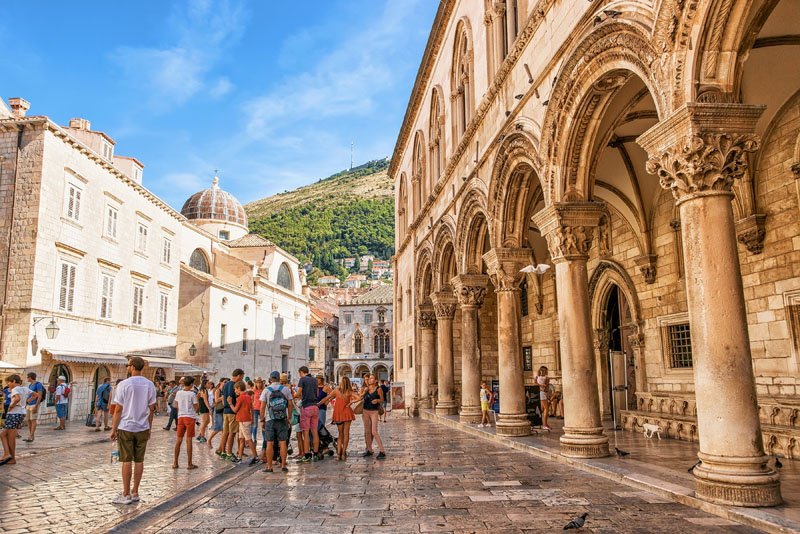
Things to do in Dubrovnik
Dubrovnik beaches.
Dubrovnik beckons visitors from around the globe for its history, the beauty of the landscape, the enchantment of the Old Town, the perfect Mediterranean climate and atmosphere, but when you visit do not miss a chance to relax beachside!
Many hotels are built straddling the rocky hillside, some feature a private beach for their guests or direct access to the sea, however Dubrovnik offers a view wonderful public beaches, within easy access to the Old town.
Bellevue Beach – nestled at the base of a rocky bluff, this pebble beach is at the back of a cove, with crystal clear water, perfect for swimming as boats and jet skis cannot enter. It is often not as busy as other beaches because the access can be a bit hidden and it requires climbing down many stairs to reach the beach. The cove, with cliffs on both sides, mean the sun with not reach the beach area in later times of the day, so arrive early to take advantage of the sunlight hours. To access, walk down the path to the left of the Rixos Hotel where you will find stairs leading to the beach.
Banje Beach – A trendy Saint Tropez-style beachfront club within easy access of the Old City. Set at the beachfront with a spectacular view of Old City, Lokrum island, and kayakers passing by. Banje Beach invites visitors to relax on a private lounger, order your favorite beverages from the trendy bar, and relax as a DJ serenades you with pop tunes. The restaurant serves meals and snacks. Bottle service available.
Lokrum Island offers a variety of rocky areas suited for sunbathing and swimming. See below for more details on visiting the island.
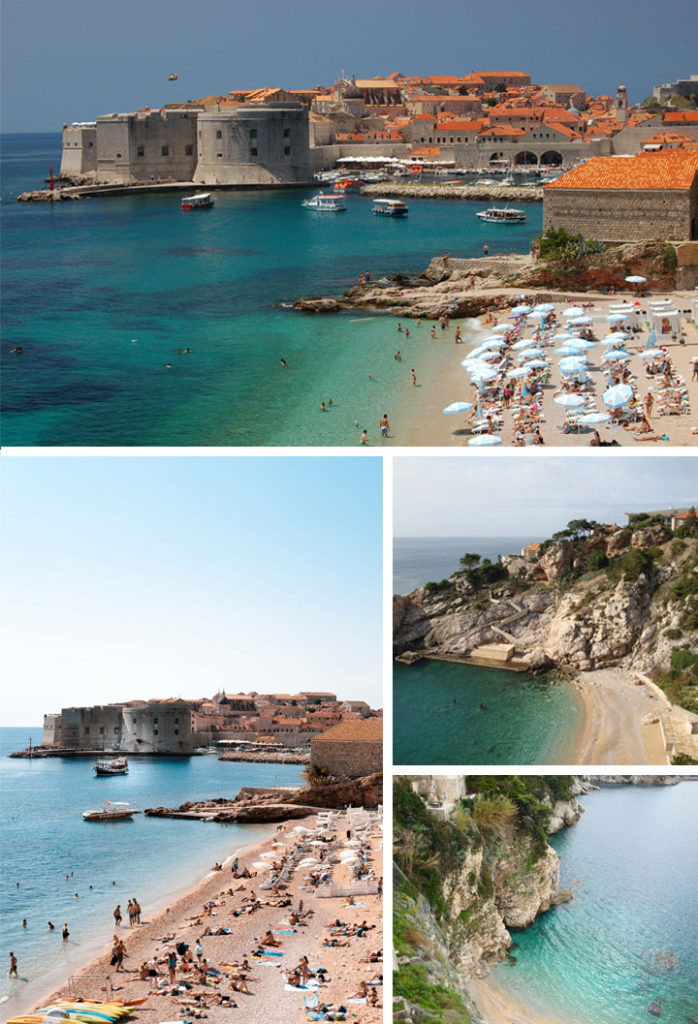
Guided Tour of the Old City
The Old City of Dubrovnik requires more than a superficial visit to fully enjoy this majestic icon of European history and culture. We always recommend visitors to Dubrovnik spend time with an expert guide. Not only will they provide you with a deeper understanding of the cities past, the defensive walls, and life over the many eras past, but as a local, they will share their experience living, working and loving this place that is truly unlike any other in the world!
Take a step back in time and enjoy learning about the culture and glorious past of this ancient walled city. The Church of St Blaise, Cathedral of the Assumption of the Virgin Mary, Franciscan Monastery, Old Pharmacy, the Jewish Synagogue and Rector’s palace are only some of the rich historical monuments you will enjoy while walking through the old town.
We recommend visiting in the morning, when temperatures are cooler.
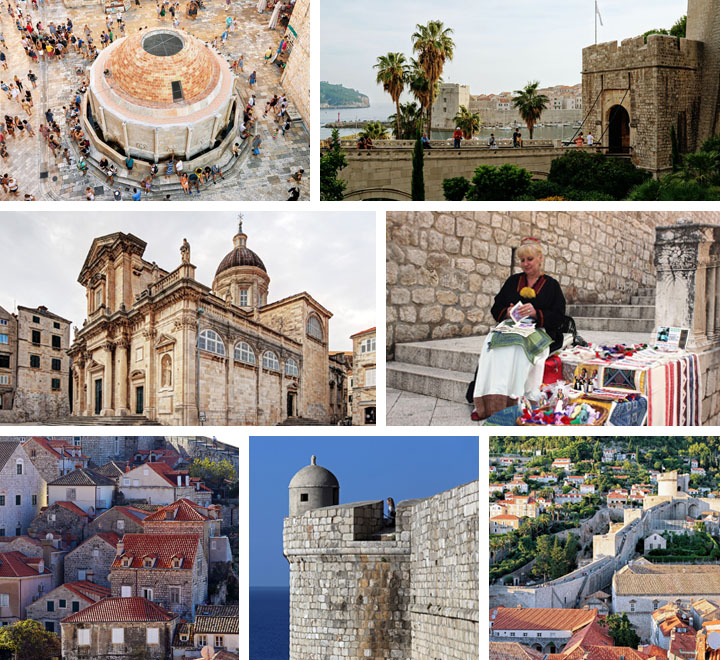
Lokrum Island
As you approach the Old city from the south, or walk the walls surrounding it, your attention will be drawn to the small, forested island just offshore. There are no houses, hotels, stores or souvenir shops on Lokrum, just a small restaurant, and an opportunity to explore.
Lokrum Island is an easy day trip from Dubrovnik, lying only 680 meters offshore. Visitors and locals alike come here to swim in the sun and enjoy the idyllic coves tucked among the rocks. Some of the coves are naturist which you can spot when you see the sign “FKK”.
Getting to Lokrum Island is easy. Water taxis depart roughly every half-hour in summer (less often the rest of the year) from Dubrovnik’s Old Port. Enjoy a magnificent view of the walled Old Town on your way to and from the island.
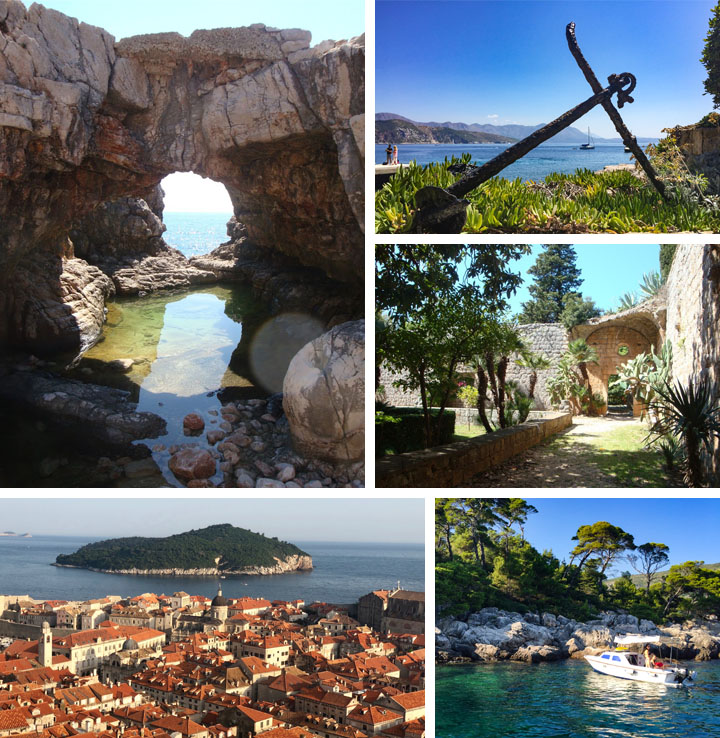
Game of Thrones in Dubrovnik
Author George R.R. Martin’s literary world brought to the screen by HBO, Game of Thrones, created an impressive fantasy world, made up of numerous cities, kingdoms, and palaces across the “Seven Kingdoms of Westeros”. Fans, and casual viewers are often struck by the complex storyline, the costumes, the vast entanglements of the characters, the violence, and the exotic, and breathtaking locations. Of the real-life exotic locals, none has garnered greater attention, and intrigue than Dubrovnik. The fictional “King’s Landing”, which even casual viewers know to be the iconic, Old City of Dubrovnik, is the site of many famous scenes. Fans are intimately familiar with many of the details of the actual Dubrovnik; St. Dominic Street, The Minceta Tower, Ploce Gate, the Ethnographic museum, Fort Lovrijenac, St. Blaise’s Church and Rector’s Palace.
Guided walking tours are available for an overview of locations within the Old City. Nearby Lokrum island, and Trsteno Arboretum were also locations used for filming.
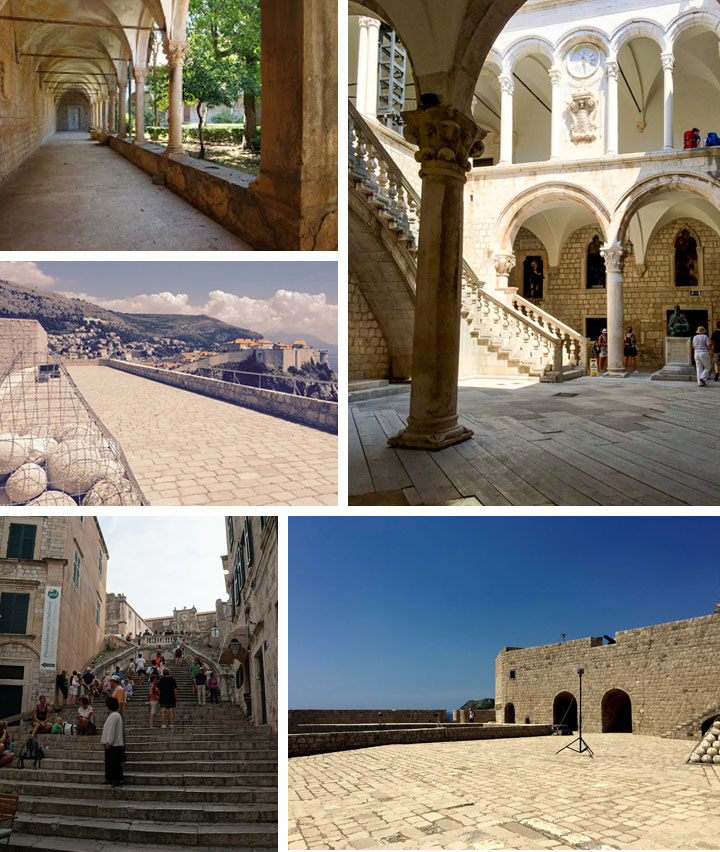
Dubrovnik Cable Car
Take the Dubrovnik Cable Car a short ride up to the top of Mt. Srd for breathtaking views of the Old City, greater Dubrovnik, the expansive blue Adriatic Sea, and nearby islands. This viewpoint provides an incredible photo opportunity. At the top, there is a restaurant where you can have a meal, drink, or snack, along with a souvenir shop. The Dubrovnik Cable Car is located a just a few minutes’ walk from the Old Town and runs frequently between 9:00am and 8:00pm.
The cost per adult roundtrip is 100 kunas (about $18) and you can even buy tickets in advance online .
Address: Petra Kresimira 4, Tel: +385 20 325 393
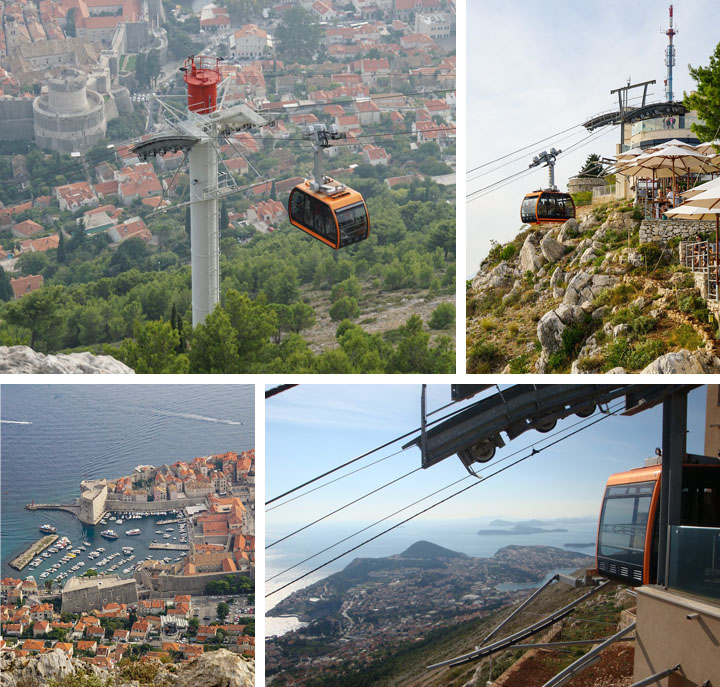
Hotels in Dubrovnik
Accommodations in Dubrovnik range from 5-star luxury seaside hotels, to charming heritage B&B’s, and elegant private villas. Your team at Tasteful Croatian Journeys presents recommendations based on the specific needs of our travelers, the size of the party, the dates of travel, budget, and the desired experience. We have many great options for our travelers staying in Dubrovnik and are sure to have the perfect property for each guest.
Read about the Excelsior Dubrovnik here in our blog.

Restaurants in Dubrovnik
A dynamic city with a vibrant restaurant scene, there are few better places to experience the diversity of Croatian cuisine than Dubrovnik. Here you can explore not only the fresh seafood characteristic of southern Dalmatia, but also national dishes which hail from farther north, and a number of wonderful fusion or international restaurants which draw influence from the city’s many visitors. Many of Dubrovnik’s best restaurants are conveniently located in or nearby the Old Town, however, if staying a bit longer, do not ignore the opportunity to venture further afield. There are delights to be found throughout this fascinating city.
For the ultimate in fine dining, visit Michelin starred Restaurant 360° whose prime location atop the city’s medieval walls offers elegant ambiance and spectacular views. Another fine dining favorite is sophisticated seafood restaurant Nautika , where patrons can dine on the day’s fresh catch while listening to the waves break below.
Sample creative yet unpretentious modern cuisine at Restaurant Pantarul (‘fork’ in English), a fashionable bistro located in Lapad, a short distance away from the bustle of the Old Town.
Your Tasteful Croatian Journeys team provides our curated guide with a complete list of our favorite restaurants, cafes, bars, markets, and bakeries, included with your travel documents.
Your Tasteful Croatian Journeys Concierge is at your service to arrange reservations and ensure the optimal seating and time for the best experience!

Weather in Dubrovnik
Dubrovnik is a city to be enjoyed in all seasons.
Winters are mild, tempered by the Adriatic it will not get too cold, but you will want to bundle up and prepare for some rain. We have seen snow in the in the Old City, a truly beautiful sight. New Year celebrations are magical here – the city is quiet and calm, locals gather and rejoice in celebration together with classical concerts and performances outdoors along the Strudan.
Spring typically arrives in March, expect to see some rain showers, but overall is weather is again mild.
We love to be in Croatia for the Easter Celebrations . Late spring is a wonderful time for those who prefer temperatures that are warm but not hot.
Summers in Dubrovnik are sunny and warm and can be quite hot. Along the coast you will enjoy the cooling Adriatic breezes. Evening temperatures do cool down, you may need to bring a wrap or sweater while out in the evening, especially near the coast. The long, hot days are perfect for playing in the sea, the water temperature stays refreshing all summer.
Fall is an amazing time, still warm and often sunny, but with cooler days. The Autumn brings winds, which at times can be quite strong on the sea. These winds are famous in Croatia, Captains are very familiar with the seasonal winds, and know how to navigate the changing conditions. Fall is also a time of harvest, with may celebrations to enjoy!
Dubrovnik Map
Compare Listings

Search Site

George Bernard Shaw was enchanted by this beautiful city, about which he said “those who seek paradise on Earth should come to Dubrovnik”, as well as, famously, describing it as “the pearl of the Adriatic”. It really is a stunning city with an amazing Old Town, which became a UNESCO World Heritage site in 1979.
But whatever we and others say, our words do not give justice to this dazzling place. So come soon and see it with your own eyes!
As mentioned, the Old Town and its many sights (including the well-preserved city walls along which you can walk) is one of the top attractions here. The Old Town is also famous for Stradun (also known as Placa), the main thoroughfare – one of the greatest pleasures for many visitors is to have a drink in one of the nearby cafes and watch the world go by. In turn, they are being watched by the city patron, St. Blaise – or Sveti Vlaho as the locals call him.
If you are visiting in the summer, do not miss the world-renowned Dubrovnik Summer Festival , with music, theatre, dance performances and much more.
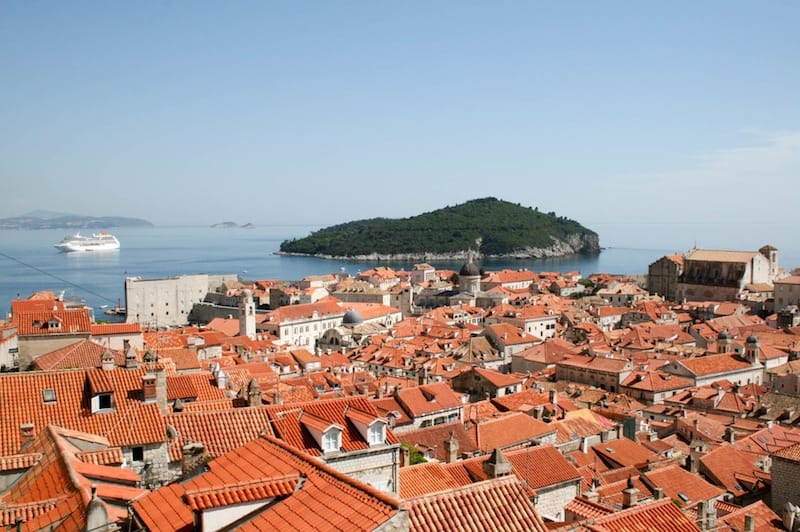
Information on Dubrovnik
Read up on the city on our pages below:
- Map Scrollable, searchable map of the city
- History A truly fascinating history, including its time as the Republic of Ragusa
- Getting to Dubrovnik Flying to the city – and other means of transport!
- To and from Dubrovnik Airport Details on how to travel from and to Rudjer Boskovic Airport and the Old Town and the rest of the city
- Public Transport in Dubrovnik Getting around the city and nearby by bus, taxi, cable car, and boat/ferry
- Dubrovnik Cable Car Location, journey and ticket info on this popular attraction
- Accommodation Where to stay
- Sightseeing Read up on the top sights here, including must-sees!
- Museums in Dubrovnik Some of the best museums to visit, from historic artefacts to far more modern experiences
- Two Days in Dubrovnik A 48-hour itinerary, including what to see and do and where to eat
- Guided Tours Some of the guided tours of the city that you can enjoy
- Restaurants Some of the best restaurants to try when you’re there
- Bars & Clubs Enjoy a tipple or two in the best bars and clubs
- Events Annual festivals and festivities
- Lokrum Visiting this tiny island that’s very close to Dubrovnik – perfect for an afternoon visit!
- Day Trips from Dubrovnik Where to head to on a day trip, including Lokrum , Cavtat , the Elafiti islands and Mljet
- Day Trips to Montenegro Ideas for day trips to Kotor, Herceg Novi and Budva
- Day Trips to Bosnia & Hercegovina Information on day trips to Mostar and Medjugorje
- Take a look at our photos! The Dubrovnik Walls Walk gives an idea of what you can see as you walk on the Old Town Walls, whilst we also have Photos of Dubrovnik and Photos of Dubrovnik 2 .
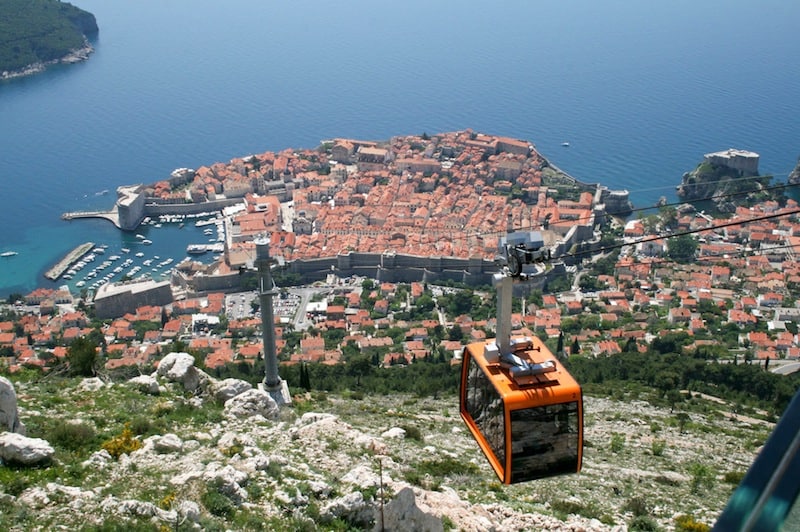
Getting Around Dubrovnik
There is a good bus service in the city (see routes and timetables on the Bus Terminal website) and you can also get around by taxi. Uber also exists in Dubrovnik. Full information is on our Public Transport in Dubrovnik page.
To get between Rudjer Boskovic Airport and the town centre (or vice versa), see our special page on To and From Dubrovnik Airport .
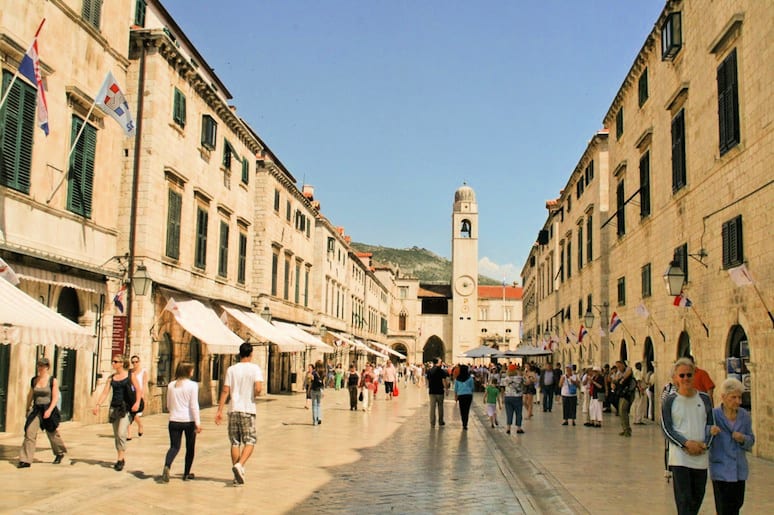
General info
The area code is 020.
The Tourist Office is at Svetog Dominika 7, 20000 Dubrovnik, tel: +385 (0)20 312 011, email: [email protected].
Additional info
- Dubrovnik Tourist Board website
- Dubrovnik-Neretva County Tourist Board website
- Taxi Service Dubrovnik
- Urban storage network Stasher has a number of locations in the city for anyone looking to store luggage. They have low daily rates, 24/7 customer service and full insurance!
- Dubrovnik Visitors is a helpful website that tracks the number of people coming into (and leaving) the Old Town; take a look to see when less busy times may be if you’re planning on doing some sightseeing
- Read about New Year’s celebrations in the city by Graham Amiss
More on Visit Croatia
About Visit Croatia
Contact Visit Croatia
Buy us a coffee!
Cookie Policy
Privacy Policy
Updated daily
New & Updated on Visit Croatia
A Wellness Break in Croatia Stari Grad Obonjan Bol Porec Two Days in Zagreb Slano How to do Croatia on a Budget Two Days in Split Nin Campsites in Croatia Shopping in Zagreb City Break in Croatia Two Days in Pula Family Holidays in Croatia 15 Things You May Not Know About Croatia Two Days in Zadar Koprivnica
Useful information on Croatia
Money in Croatia Visa Requirements for Croatia Buses in Croatia Ferries in Croatia Top Ten Destinations in Croatia Map of Croatia About Croatia

Home » Travel Guides » Croatia » 15 Best Things to Do in Dubrovnik (Croatia)
15 Best Things to Do in Dubrovnik (Croatia)
Anybody visiting Dubrovnik should be sure to explore every nook of the city’s world-famous walls and old town. Since Game of Thrones showcased the city’s fabulous architecture visitors have flocked to Dubrovnik to see “King’s Landing”, “Qarth” and the gardens of the “Red Keep” in real life.
You can walk along the top of the city’s walls and climb the perimeter towers, or duck down the evocative streets of the old town to check out the churches, monasteries and curious monuments of the old town, each with a compelling story to tell.
Let’s explore the best things to do in Dubrovnik :
1. City Walls

Dubrovnik’s imperious walls are one of the things that qualified the city for UNESCO listing and if you watch Game of Thrones you’ll recognise several locations.
These white limestone defences go back to the 600s, but their current form dates to the 15th century when the fall of Constantinople was all the warning Dubrovnik’s officials needed that the Ottomans were on their way!
It will take an hour or so to make the full circuit along the battlements, stopping for supreme panoramas of the city backed by the Adriatic. Guided tours will give you extra snippets of info, but it’s also a good idea to set off early to beat the crowds.
2. Old Town

At times the twisting streets of Dubrovnik’s old town will feel like a movie set, and you’ll find you can work up a big appetite if you let your curiosity guide you down all the little alleyways here.
You can get your bearings on Placa, which is old Dubrovnik’s main street; a straight and broad limestone channel beneath grand old houses.
As you walk you’ll notice that nearly all of these buildings share the same floor plan, and that’s because of a citywide decree on building designs following an earthquake and fire in the 17th century.
On St. Blaise’s Day, the 3rd of February, there’s a procession along Placa in honour of Dubrovnik’s patron saint.
3. Cable car

Undoubtedly the best view of Dubrovnik can be had from the crest of Mount Srd, which looms 412 metres above the city a short way inland.
In 1969 they built a cable car serving the summit, operating until midnight during the peak summer months.
By day you’ll never forget the vistas of Dubrovnik’s towers and walls, the baked clay tiles of the city’s houses and the evergreen offshore island against the cobalt Adriatic. At night you can gaze out to the west to see the sun setting behind the city.
4. Dubrovnik Cathedral

The city’s cathedral is one of Dubrovnik’s large ensemble of baroque architecture. Among the many reasons to pay this seat of the diocese a visit is to see the interior’s artworks.
On the main altar there’s a triptych of the Ascension of Mary by the renaissance painter Titian from 1550. On the church’s side altars are several other impressive works by Croatian and Italian artists from the same era.
In the treasury is a wealth of precious liturgical items dating from the 1000s to the 1700s, including the gold-plated bones of St. Blaise.
5. Lovrijenac Fort

Guarding a tall spur 40 metres above the sea is one of Dubrovnik’s picture-book defensive installations.
Lovrijenac earned its place in the city’s folklore during the long period of tussles with the Venetians. The invaders had attempted to built an outpost here as part of their campaign to take the city, but the locals beat them to it, erecting this fortress in just three months at the start of the 11th century.
If you’re in town for the summertime Festival of Dubrovnik be sure to catch the performance of Hamlet that takes place at this majestic venue.
6. St. John Fortress

Part of the city walls, St John Fortress is on the southeastern side of the defences protecting Dubrovnik’s port.
For hundreds of years Dubrovnik was vulnerable to pirate raids, so they came up with a smart deterrent.
When the warning was sent out they’d lift a heavy metal chain that ran from this fortress to the Kase Jetty in the port to damage ships.
If you pop inside the tower you can visit a small aquarium on the first floor and then head upstairs to the browse the maritime museum.
Tip: There’s a great food & wine tour which you can book here
7. Franciscan Monastery

This complex is from the 1300s,having been moved inside the city walls after an earlier monastery had been constructed and then decomissioned beyond them.
The famous 17th-century earthquake claimed the church, which was rebuilt in the baroque style, while the rest of the monastery is Romanesque and gothic.
One of the must-sees is the monastery’s pharmacy, dating to 1317 making it one of the oldest still-operating pharmacies in the world.
The library is also magnificent, with 20,000 books, among which are some 1200 priceless manuscripts.
8. Sponza Palace

This rectangular palace with a handsome loggia is from the early-1500s and has served as a secular public building since it was built.
The atrium within the building’s gate was a place of business for merchants and traders right up to the 20th century, and there’s even an inscription in the arch warning them not to rip each other off.
Sponza Palace was also one of the few renaissance buildings to survive the catastrophic earthquake in 1667 unscathed.
These days the palace serves as the city archives, holding some 100,000 documents that date from the 10th century.
9. Clock Tower

The most prominent landmark on Luza Square, Dubrovnik’s clock tower is 31 metres in height and was built in 1444.
There are two bronze figures “Baro” and “Maro” either side of the great bell at the top, both holding mallets and forming the mechanism that makes the church chime at noon every day.
After centuries of being exposed to the salty air of the Adriatic Baro and Maro had turned a strange shade of green, which gave the two men their famous nickname of Zelenci or “Green Men”.
10. Church of St. Blaise

An ornate baroque church, St. Blaise’s replaced a Romanesque building on this site that was lost to the earthquake.
The current structure was built by the Venetian architect Marino Gropelli at the start of the 1700s.
What makes the church such a landmark is its affiliation with St. Blaise, famed for helping stave off a surprise attack by Venetian forces in the 900s. St. Blaise had long been dead by then (killed by Diocletian in the 300s), but appeared to Dubrovnik cathedral’s priest in a dream to tell him about the impending invasion.
11. Orlando’s Column

At the eastern end of Placa, right in front of the Church of St. Blaise is this stone column and flagpole that dates to the 1400s, and is a meeting point at the heart of the old town .
The medieval knight depicted on the column is Orlando, who its claimed helped defend the Republic of Ragusa during a 15 month-long Saracen siege in the 800s, allowing Dubovnik to retain its status as a free trade city state.
Naturally, the column is now an emblem for Dubrovnik’s freedom and during the city’s festival the mast will fly the Libertas flag.
12. Lokrum Island

You can catch a ferry from the port to this island opposite Dubrovnik throughout the day. It will take ten minutes to get there and it’s a swift way to escape the crowds and take a breather.
The island is covered almost entirely with deep green pine forest that you can amble through via walking trails.
These walking routes also lead to the coast, where you’ll come across rocky coves with waters ideal for swimming and even families of peacocks brought to the island by Maximilian, the 19th-century Austrian Archduke.
The old monastery on the island is also a restaurant during the summer.
13. Trsteno Arboretum

This lovely park on a hillside next to the sea is from the 1400s, making it one of the region’s oldest arboretums.
Dubrovnik’s role as a centre of trade furnished the arboretum with tree species from around the world.
Take the imperious pair of oriental plane trees here, half a millennium old and unique within Europe.
The arboretum is part of an estate from the same period, and is a memorable place for a walk thanks to its sculptures and fountains, and the aqueduct designed to irrigate the park.
This was also the shooting location for the Red Keep gardens for (you guessed it!) Game of Thrones in the third and fourth seasons.
14. Beaches

Few of the beaches on this sweep of the Adriatic are sandy; their attraction lies in the aquamarine waters that lap the shore and the pine forest or historic architecture that form the backdrop.
Lapad beach is one of more tourist-friendly places to unwind by the Adriatic sea.
There’s a pedestrian zone just behind the beach with bars and restaurants, while this gently arcing bay has a moderately wide beach with white pebbles.
Further around the bay you can also enter the sea for a swim from the rocks.
15. Sailing and Sea Kayaking

Lokrum island is just the tip of the iceberg, as a whole world of islands awaits you off the coast of Dubrovnik, starting with the pristine nature reserves of the Elaphite archipelago.
A bunch of charter agencies are located at the marina should you want to hire a motor boat for the day or weight anchor on a serious sailing trip.
For something closer you could take a sea kayak tour to see Dubrovnik’s walls and towers in a different way.
You don’t need to be an Olympian to take part, as the pace is slow and leisurely, with English speaking guides filling you in on the essentials.
15 Best Things to Do in Dubrovnik (Croatia):
- Dubrovnik Cathedral
- Lovrijenac Fort
- St. John Fortress
- Franciscan Monastery
- Sponza Palace
- Clock Tower
- Church of St. Blaise
- Orlando's Column
- Lokrum Island
- Trsteno Arboretum
- Sailing and Sea Kayaking

22 Best Things to do in Dubrovnik, Croatia
Written By: The Planet D
Updated On: June 11, 2024
Featuring a historic city center and startlingly beautiful nature, Dubrovnik combines everything we love about Croatia into one storied city. The Old Town is a one-way ticket back to the 15th century, with adventures and secrets hovering around each turn. As for the scenery, well, the Dalmatian Coast does not disappoint.
When it comes to the best things to do in Dubrovnik, Croatia travelers will have a full slate of options. Your day can start early enjoying a coffee in a 600-year-old square and end by watching the sun go down from an ultra-modern beachfront bar.
With no shortage of attractions, it can be tricky sifting through the highlights. So keep our Dubrovnik guide handy so you can best explore this magical city.
Table of Contents
The Top Things to Do in Dubrovnik, Croatia
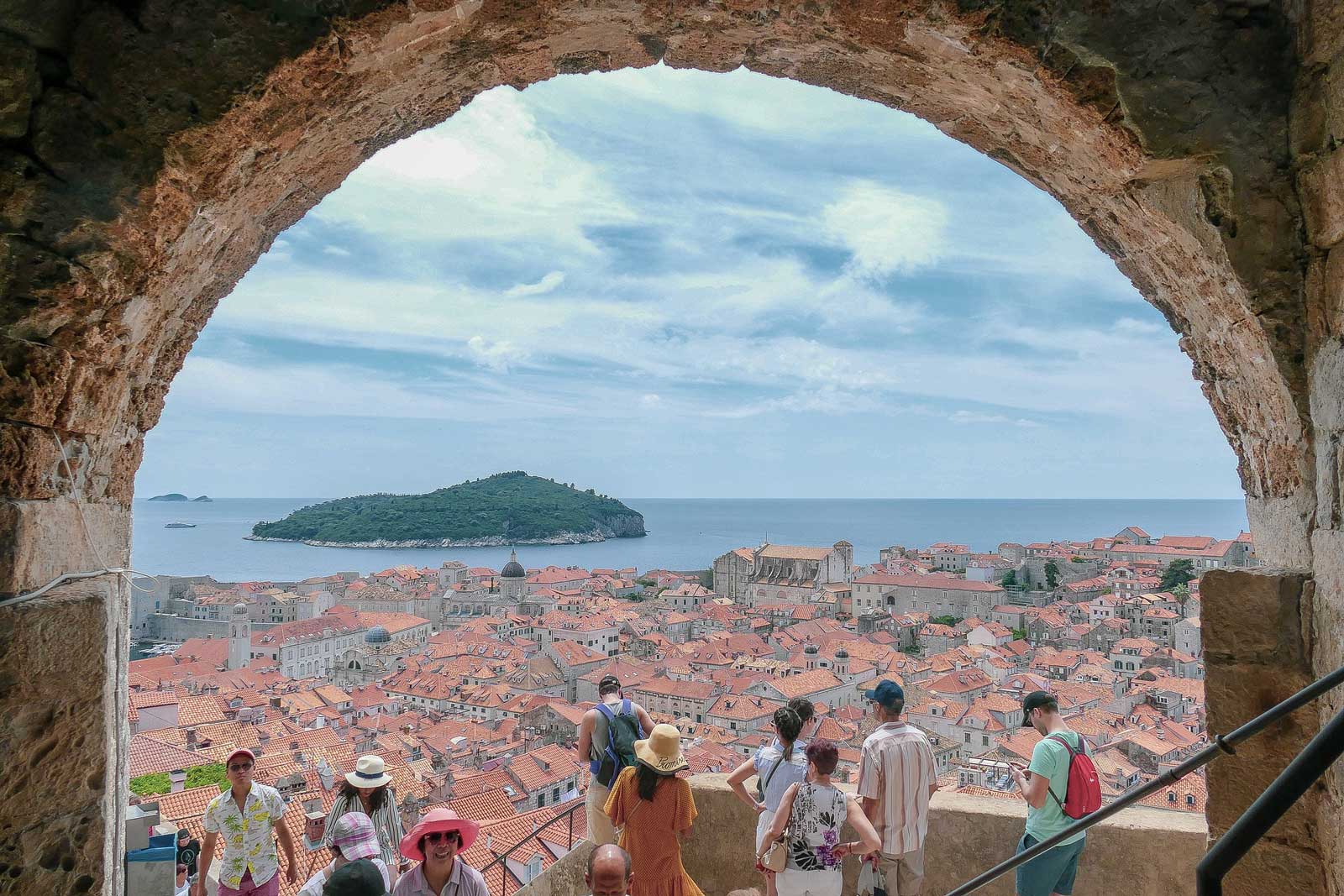
If you are a Game of Thrones fan Dubrovnik will look incredibly familiar as it was the city used for “King’s Landing” in the series. A lot of the places featured in the popular series are here in the Old Town of Dubrovnik and should be visited as part of your time in the city. But, even if you have no idea what Game of Thrones is, you will fall in love with this beautiful seaside city in a heartbeat.
1. The Dubrovnik Cathedral
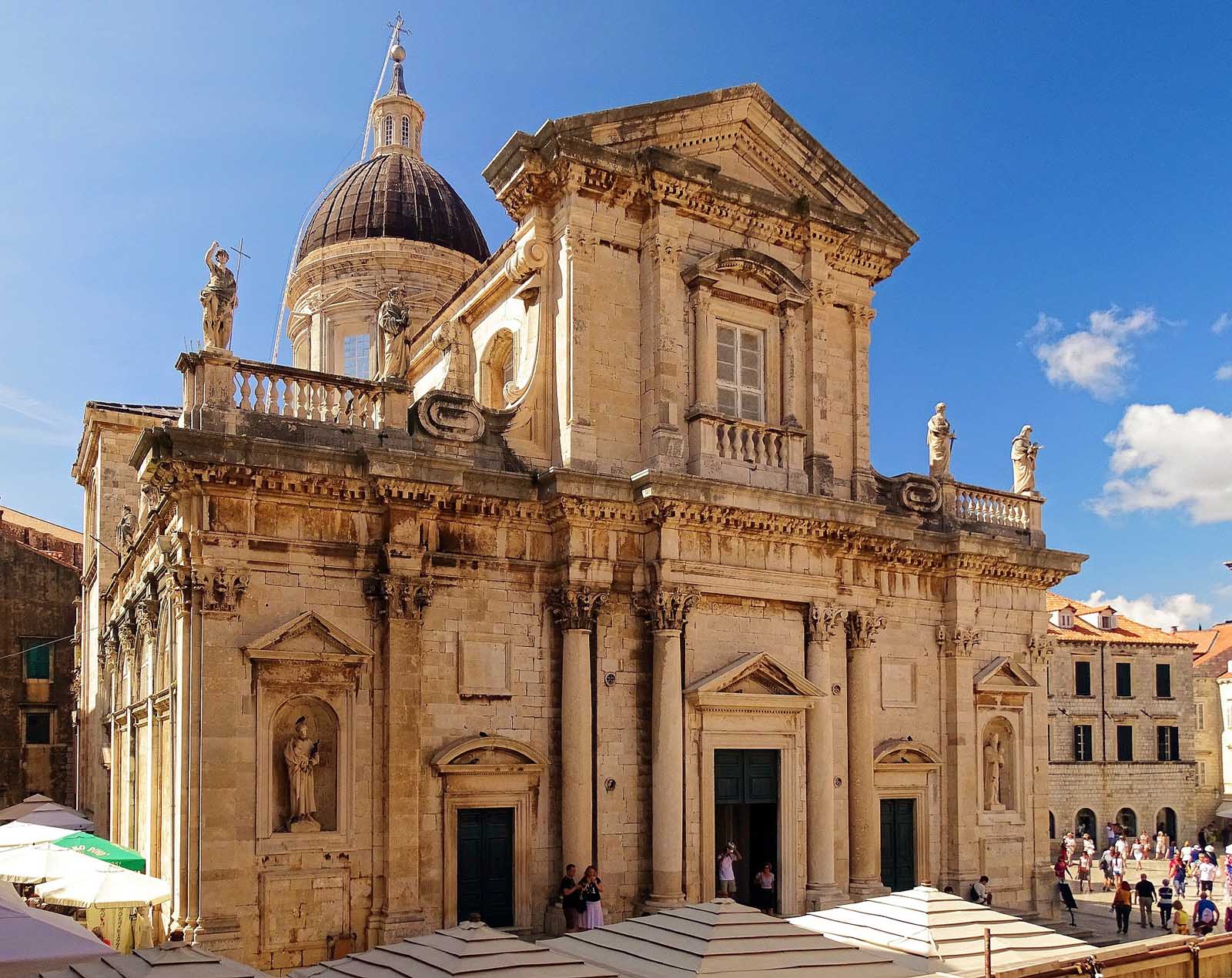
Draped in gorgeous Baroque style architecture, the Dubrovnik Cathedral is a standout in a city laden with ancient buildings. From the outside court area, you could gaze for hours upon the polygonal recess complete with a pristine domed roof. But the show doesn’t end there, with the landmark becoming ever more intriguing as you venture inside.
Otherwise known as the Cathedral of the Assumption of the Virgin Mary, the original building was completed in the 6th century. But an earthquake brought it to the ground (a common theme throughout Dubrovnik, Croatia). Its replacement stands before you today, one whose interior is just as brilliant as the elegant facade.
Harboring three opulent aisles, the cathedral is home to a series of exceptional pieces of art dating as far back as the 1500s. But it’s the Cathedral Treasury that’s perhaps most memorable with over 100 holy relics, gold, silver, a part of the cross that Jesus was crucified upon, and St. Blaise, the city’s patron saint.
2. The Old City Walls in Old Town
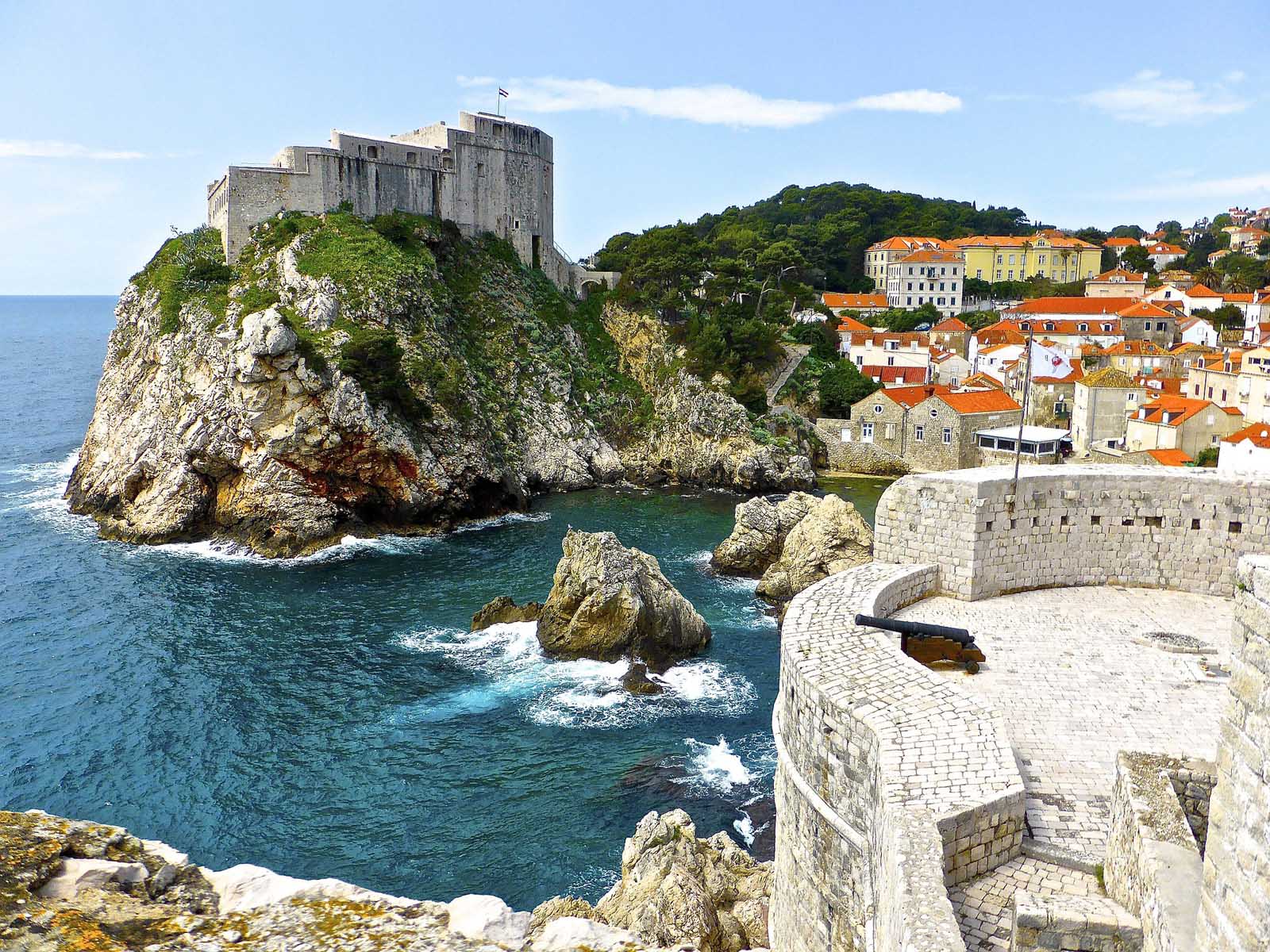
The wonderful part of traveling through Dubrovnik, Croatia is that you don’t have to visit a museum to see its amazing history. It’s written all over the city, in its buildings, cobblestone streets, and most notably along the Old City Walls. Originally developed to protect the Pearl of the Adriatic, the walls were a major part of Dubrovnik’s ascension to a UNESCO World Heritage Site.
The Dubrovnik city walls were first developed in the 7th century but the walls of mortar and limestone that you see today were constructed 800 years later. The redevelopment was spurred on by the fall of Constantinople and helped protect the city, with heights reaching up to 20 feet and the wall often just as thick.
Dubrovnik City Walls envelopes the Old Town for 1.2 miles and will take you around an hour to walk the entire length. A great way to experience the Old Town is to jump on this walking tour .
3. Loggia Square
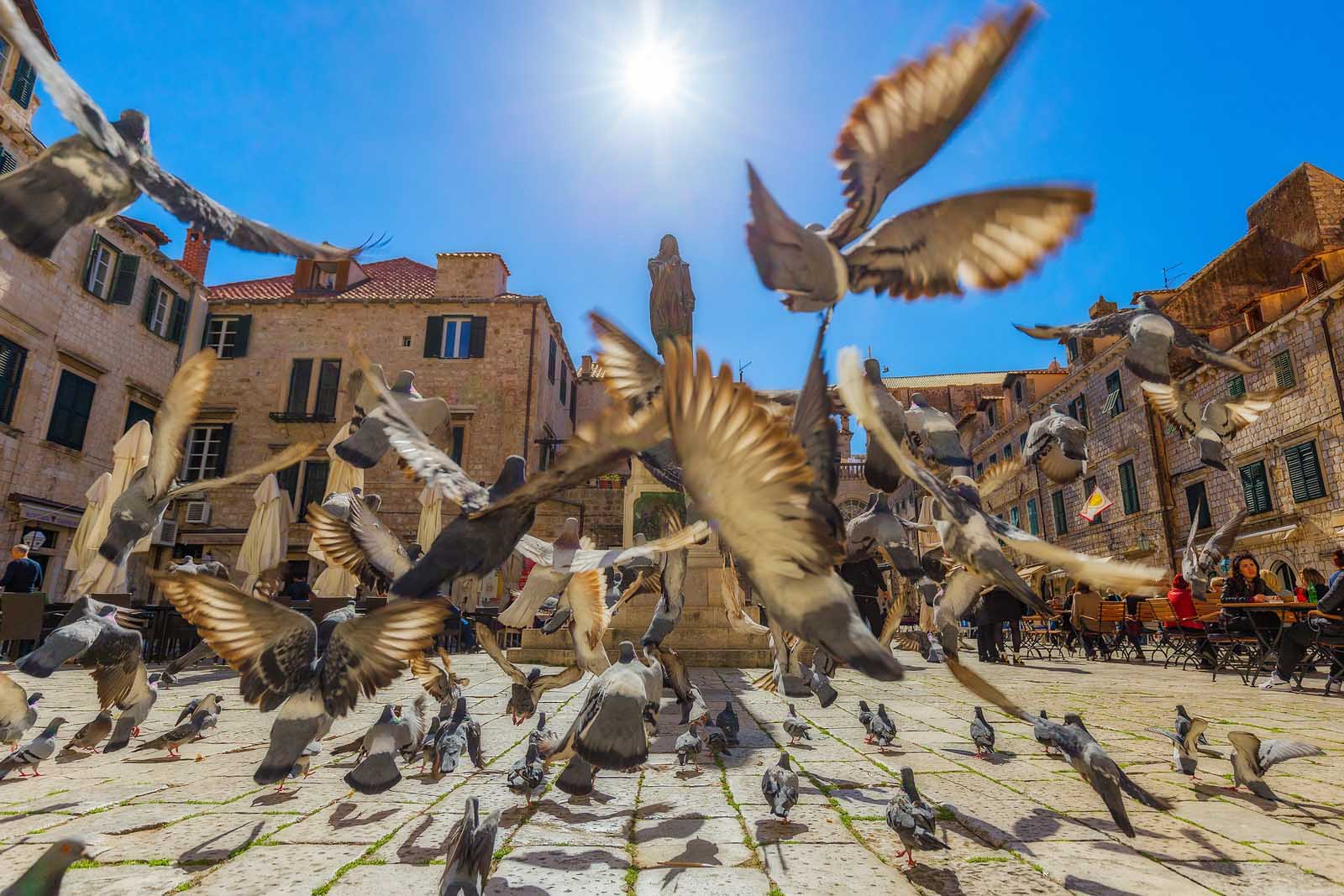
In the heart of the pedestrian-only Old Town of Dubrovnik, Loggia Square is where you’ll find some of the most historic buildings in Dubrovnik. From the square, you’ll be able to see the Church of St. Blaise (Dubrovnik’s patron saint), Orlando’s Column, and the Onofrio Fountain. All have been a fixture in local life for centuries, but none are as renowned as the Loggia of the Bells.
This is the chief attraction in the square and was built in 1480. The bells were used as a warning system during times of unrest. Today it provides a focal point in a plaza that is as happening as ever. When visiting Loggia Square, find a nice spot to enjoy the popular meeting point where life goes on as it always has.
4. Pile Gate
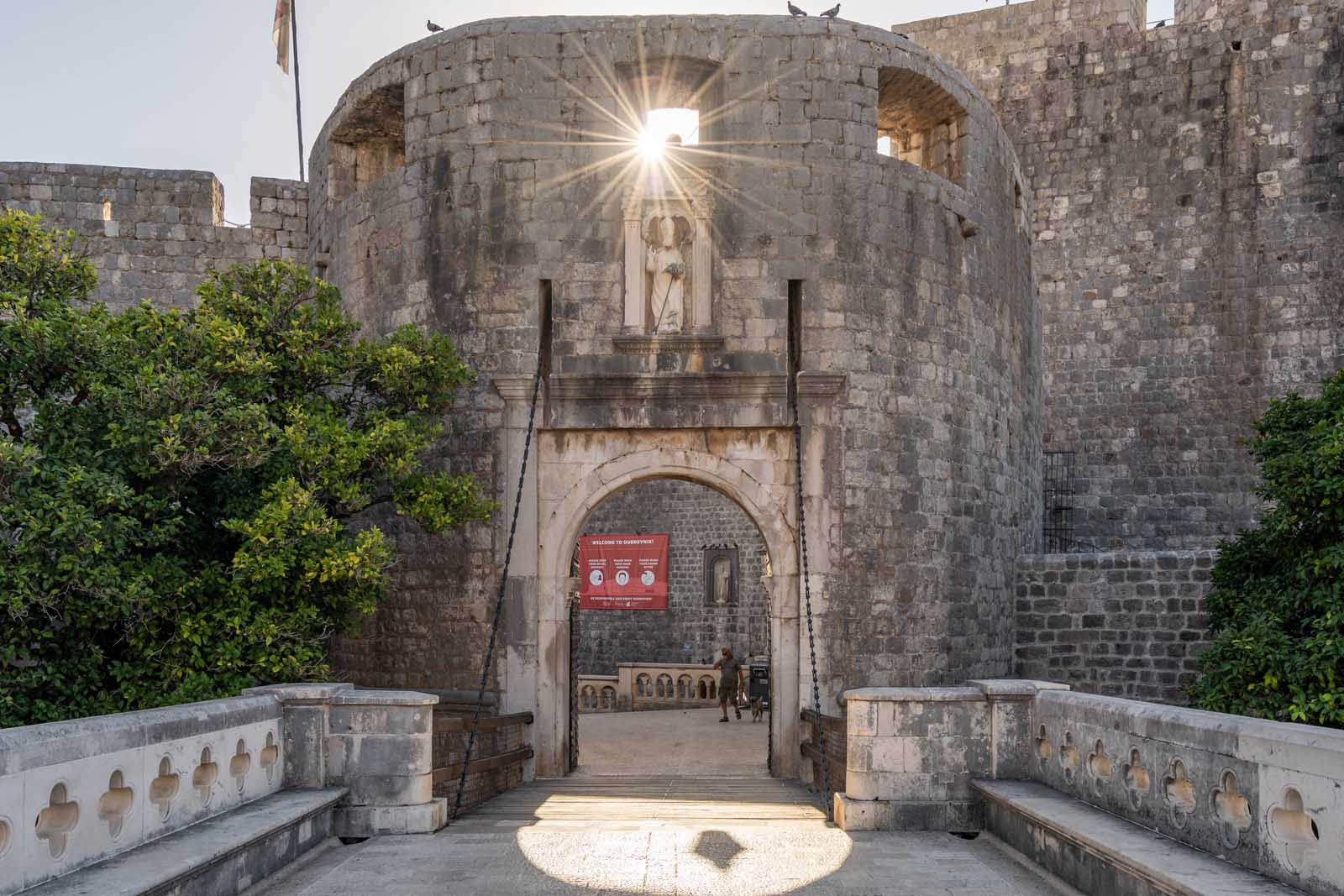
One of the main attractions along Dubrovnik’s City Walls is Pile Gate. For hundreds of years, it was the main entrance into the Old Town of Dubrovnik. In fact, it was once surrounded by a moat with the addition of a drawbridge. The bridge was raised at night, stopping any unwelcomed visitors from entering.
In modern times, the drawbridge at Pile Gate remains down and the moat is now a pleasant garden. The pedestrian-only bridge shows few signs of age with the medieval walls rising imposingly to either side. As you walk through the gate’s tunnel, you’ll be able to envision the many others who have passed through since the 1500s. On the other side, you’ll find the main street of the Old Town of Dubrovnik, along with the Statue of St. Blaise.
5. The Fountain of Onofrio
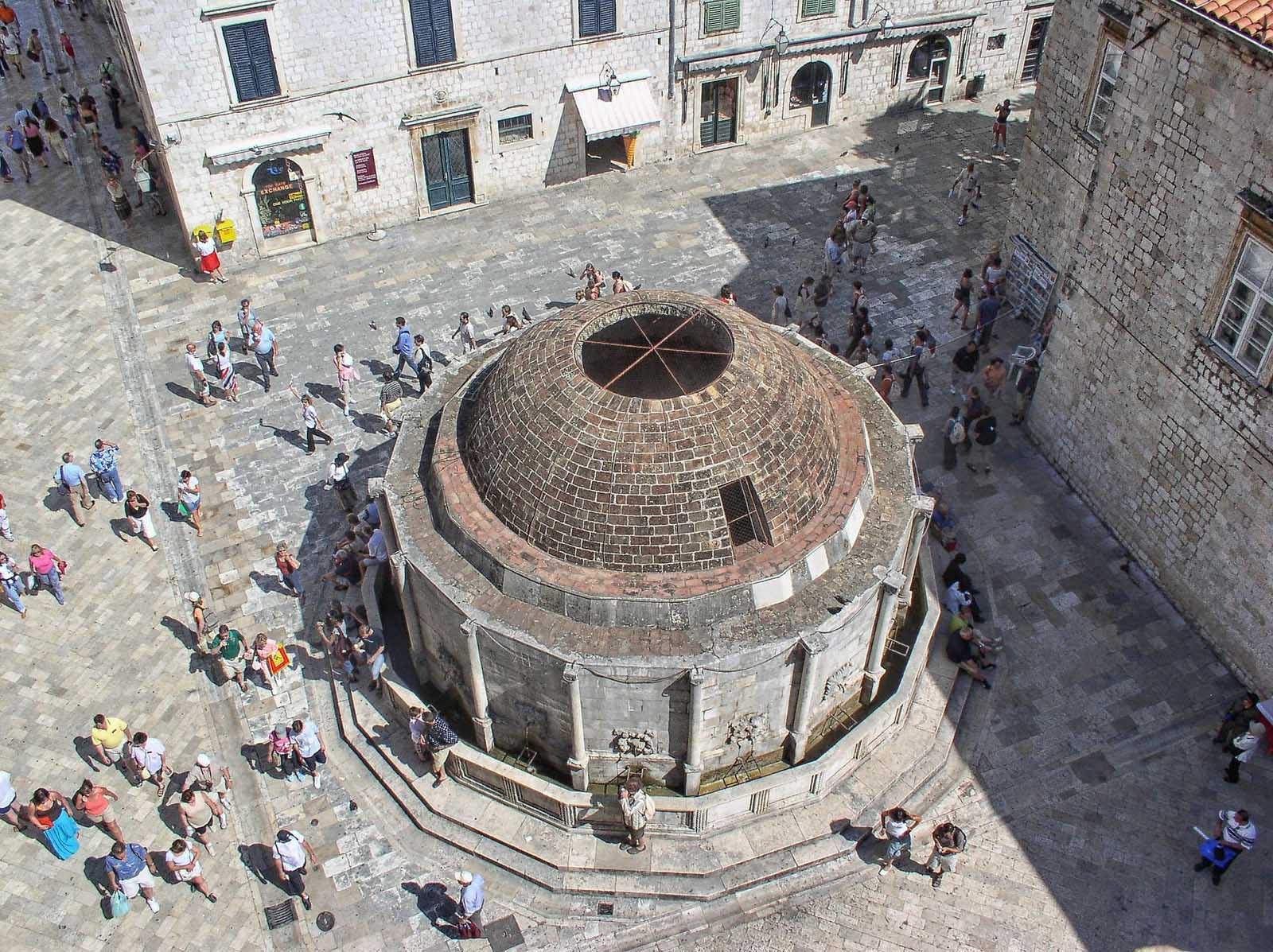
After making your way through Pile Gate, you’ll have but a short walk to the memorable Fountain of Onofrio. Developed in the 1440s, the fountain is now one of the top Dubrovnik sights. But long before this, it was an important source of water to residents as it brought water in from the Dubrovacka River to the Old Town. For over 200 years, the Fountain of Onofrio remained untouched. However, a major earthquake in 1667 diminished its size but thankfully not its aura.
Behind the fountain is St. Saviour Church. This opened in the 16th century after a force of divine intervention prevented an earlier earthquake from harming Dubrovnik. Interestingly, despite its proximity to the fountain, the church escaped any damage in the earthquake of 1667.
6. The Stradun of Dubrovnik
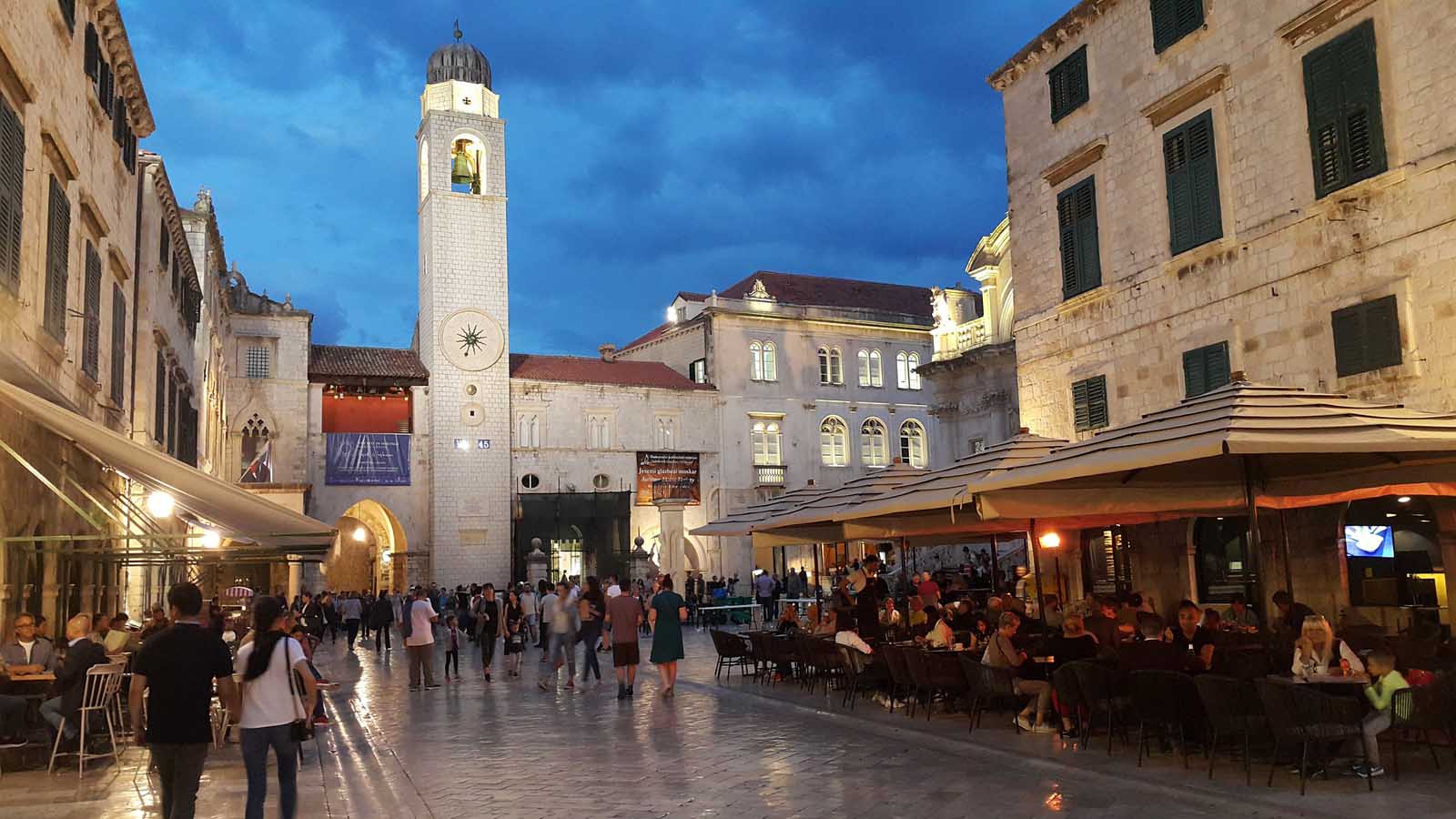
As Dubrovnik’s main street, the Stradun is the centerpiece of the pedestrian-only Dubrovnik Old Town. For those who love to walk and wander, this is the place to start. Walking down the historic street is one of the best things to do in Dubrovnik.
Also known as the Placa, the Stradun is where Dubrovnikans gather before making their way around town. Come here for some delightful people watching from your cozy cafe patio before enjoying a stroll.
The street may be short, but you’ll find a series of happening eateries, boutique shops, and the famous clock tower. Between them are rows of residential homes that stand beside each other in perfect symmetry. The interesting architecture will stop you in your tracks, so make sure to have your camera handy.
7. The Franciscan Monastery
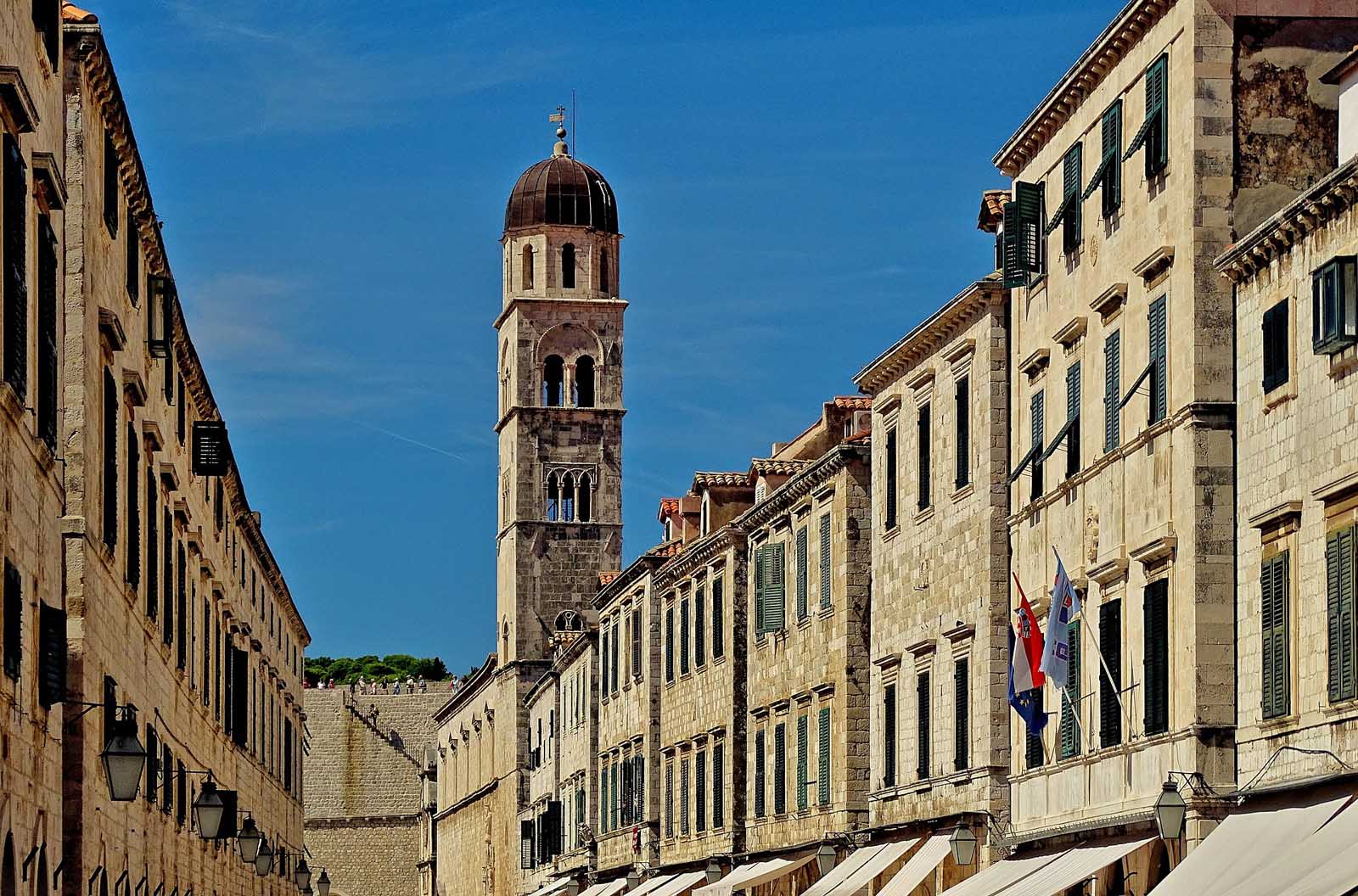
One of the highlights of the Stradun is the Franciscan Monastery. The monastery stands quietly around the corner from Pile Gate, giving you a hint of the relative peace that exists behind its walls. From within, you’ll leave the bustling main street behind.
Built in the 1300s, the monastery features the third oldest pharmacy on earth. Travelers can venture back through the history of local medicine and peruse the jars and measuring devices that helped residents from the day it opened its doors in 1317.
After exploring the pharmacy, make your way through the Franciscan Monastery’s incredible collection of ancient scripts. Here, you’ll find arguably the most valuable library in the country, with over 21,000 rare manuscripts. Alongside the library is an equally fascinating museum home to a fine art collection and artifacts.
8. Fort Lovrijenac
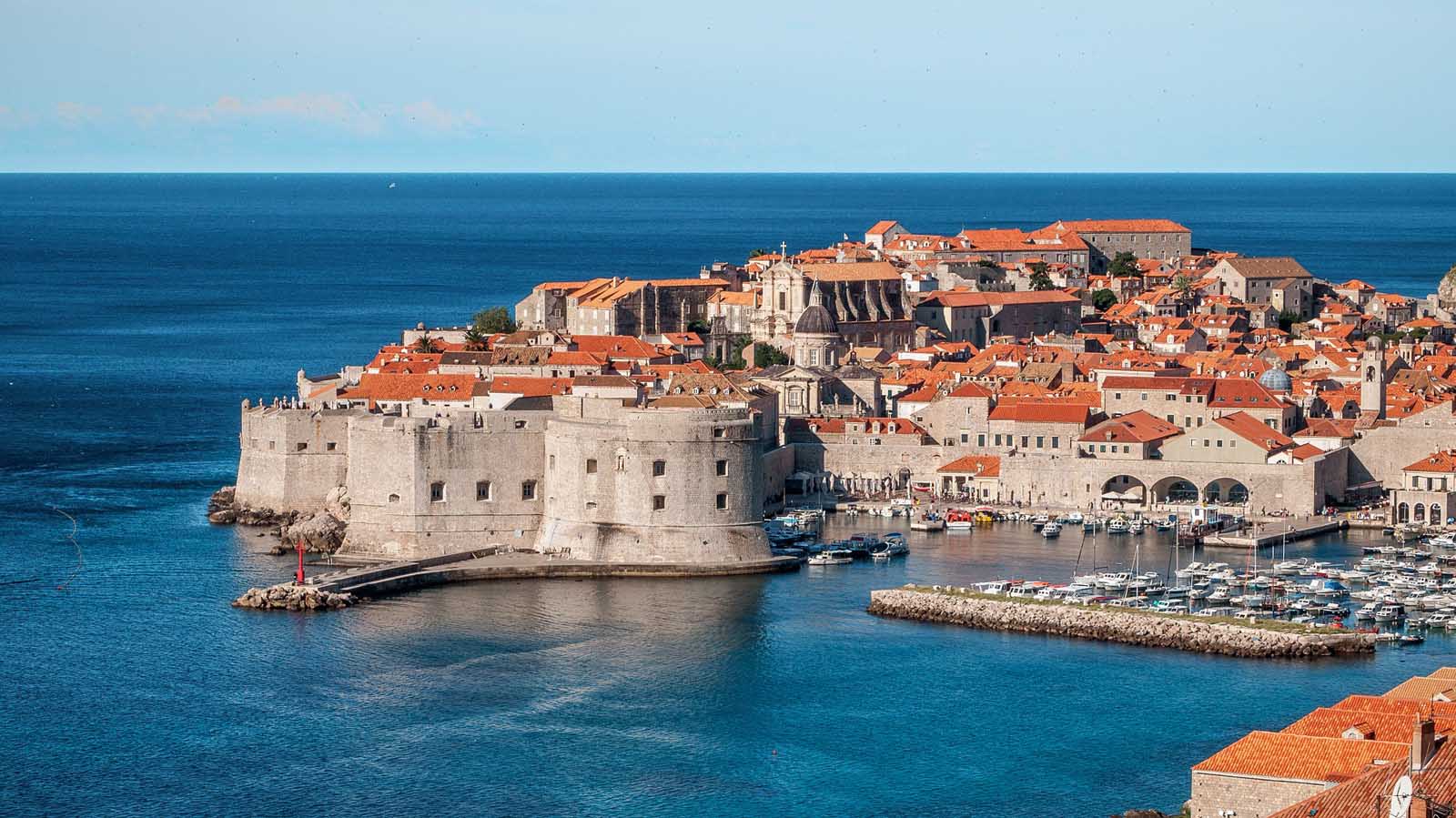
It’s fair to say the rich history of Dubrovnik would be vastly different without its defenses, such as the Old Town Walls. But at the forefront of this was Fort Lovrijenac ( also known as the Red Keep in Game of Thrones), providing a protective eye over the Adriatic Sea and along the Dalmatian Coast.
Lovrijenac stands on the western end of the Old Town of Dubrovnik and is a veritable fortress standing 120 feet above the coast. It harbors a striking presence and proved to be impenetrable throughout its storied history.
Its walls, which are 40 feet thick, were developed in under 3 months by a motivated populace. They had caught wind of Venetian forces hoping to build their own fort here, only to be beaten to the punch.
Visitors will quickly notice the unique layout of the fort with its triangular designs. Rather poignantly, this made it almost impossible for Venetian forces to later make any headway.
St. John Fortress is another one to explore. The 16th-century fort is now home to the city’s aquarium and maritime museum.
9. Ride the Cable Car
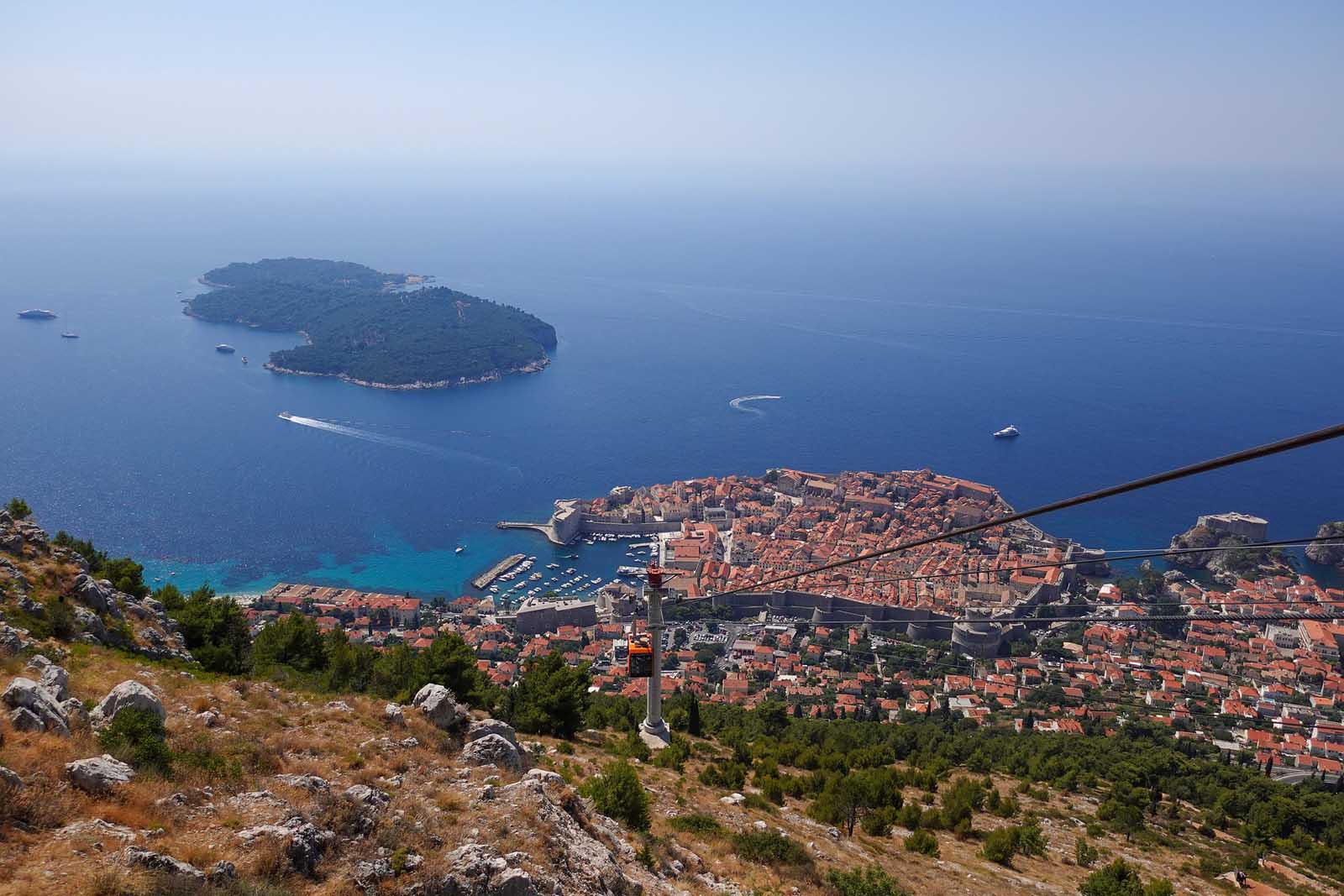
The Dubrovnik cable car will take you high above the beautiful city for some picture-perfect views of the Old Town of Dubrovnik and the surrounding area. The cable car ride lasts for around 10 minutes, quickly sweeping you up the mountainside to the summit of Mount Srd, 1350 feet above Dubrovnik. Beginning in 1969, the cable car remains as popular as ever and even runs until midnight during peak tourist season.
From your spot atop the mountain, you’ll be able to gaze down upon the turquoise Dalmatian Coast and the terracotta rooftops that dot the Old Town. From the summit, there is a path that will take you to the Imperial Fortress, where you’ll find the Homeland War Museum and the romantic Panorama Restaurant.
Wherever you end up, make sure to find a view for golden hour for one of the best sunset experiences in town. If you want some help then this tour takes you to all the high lookouts in Dubrovnik.
10. Banje Beach
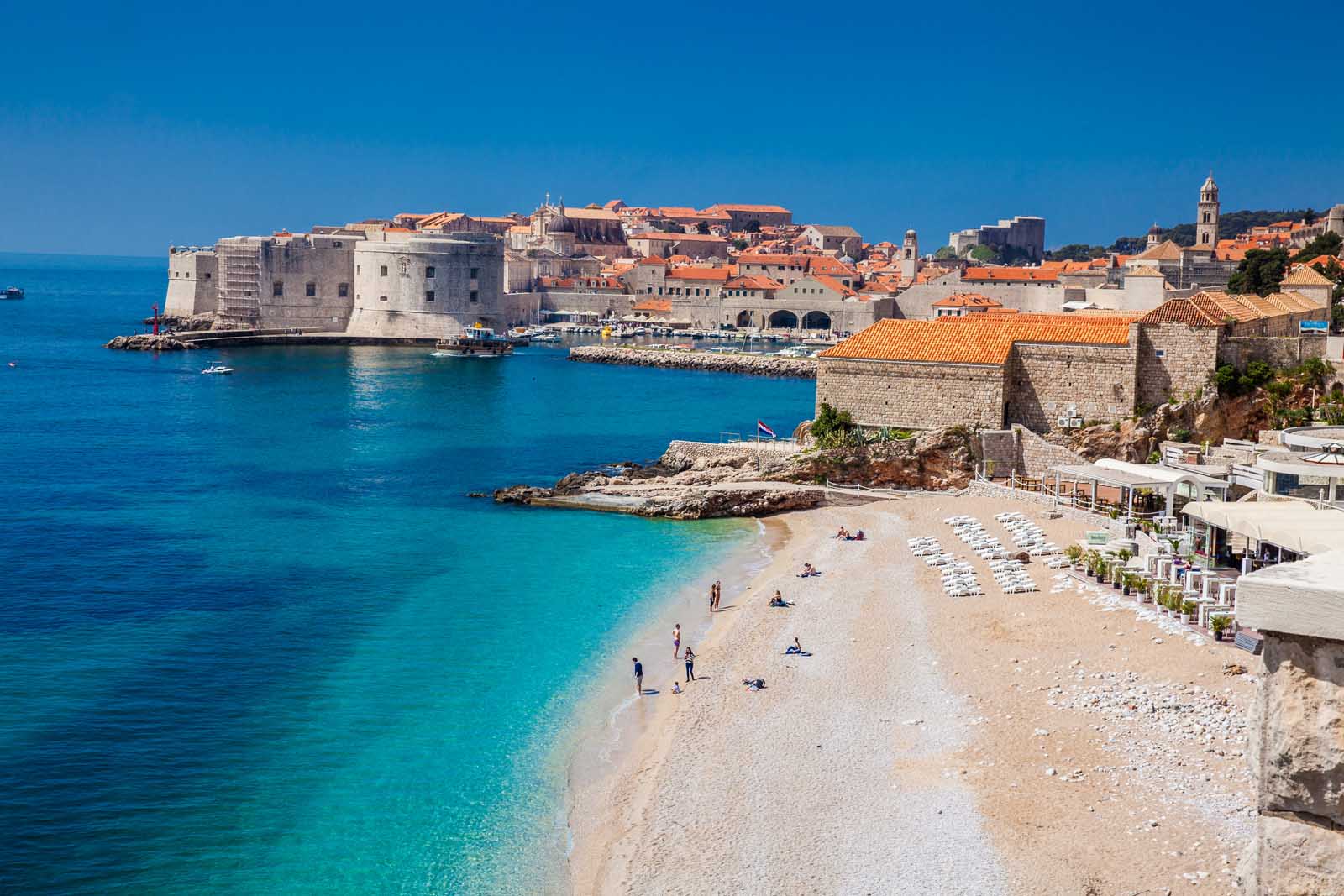
From Mount Srd, keen eyes will be able to look down on Banje Beach, the top spot for a day on the sand. Banje Beach is the perfect alternative to exploring the Old Town. For as beautiful as the historic district is, sometimes you just need some R&R.
Banje Beach has a fun personality. Its bright white sand mixes perfectly with the electric blue water, creating a sight that is effortlessly gorgeous. Pair that with the backdrop of the Old Town and you will never want to leave. After a few days of busy explorations, kick back and watch the world go by.
The refreshing waters of the Adriatic Coast will help you cool off during the warm summer months. Its calm water also makes for great sea kayaking and adventures on a SUP. For food and drink, you won’t have to go far to find the waterfront bars and restaurants that line the Beach.
11. Rector’s Palace
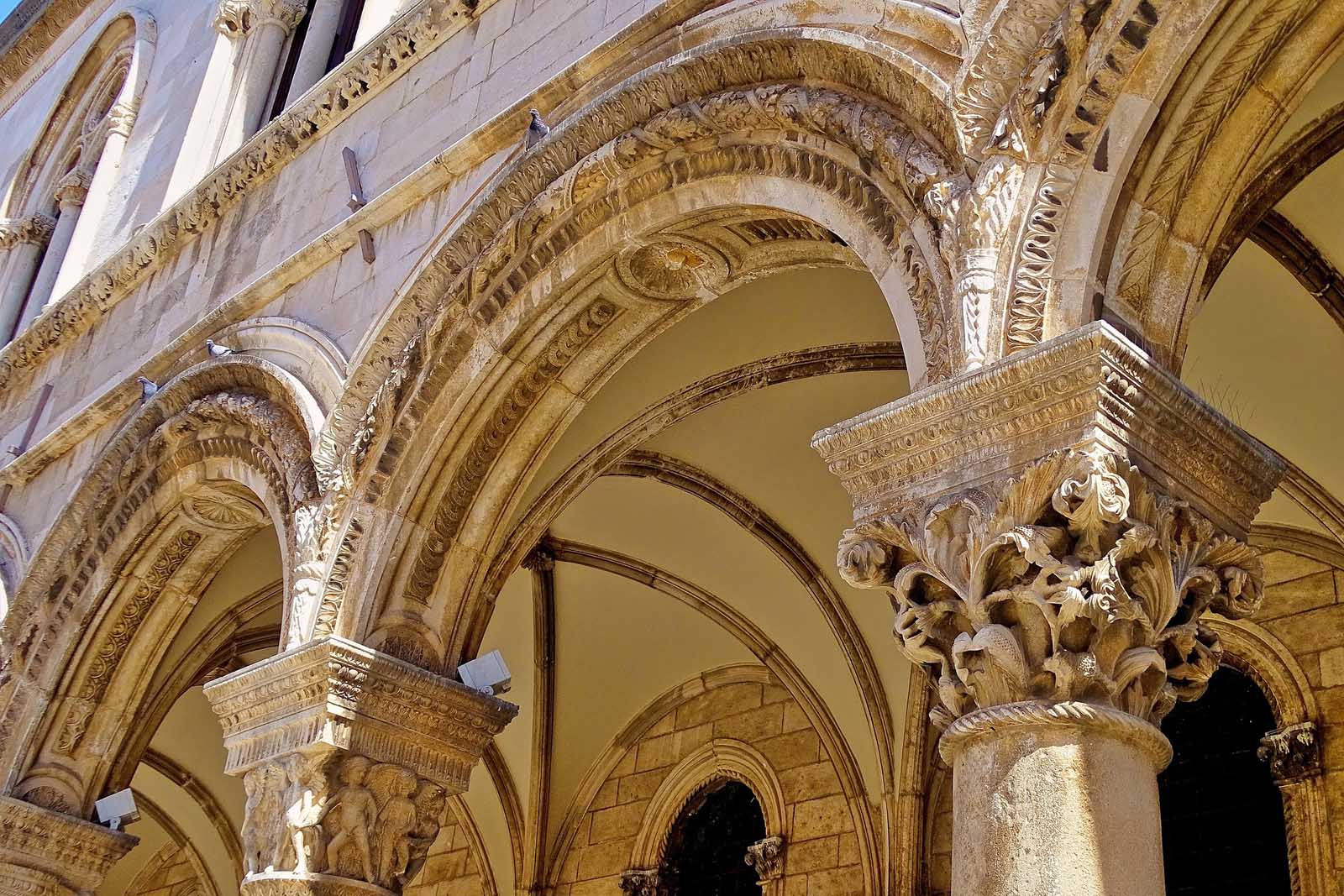
As both an astonishing piece of architecture and home to one of the city’s best museums, visiting Rector’s Palace is one of the best things to do in Dubrovnik, Croatia. The palace was built in 1435 and has lost none of its grandeur, despite many attempts by man and nature.
Featuring a mix of Renaissance and Gothic styles, Rector’s Palace was damaged by explosions, fire, and earthquakes, only to be rebuilt each time. Now, as safe as ever, the palace is home to the Cultural Historical Museum. Here, you’ll discover Dubrovnik’s Medieval era in fantastic detail, along with many prominent works from the Renaissance.
Afterward, venture into the beautiful courtyard that stands in the heart of Rector’s Palace. If you’re lucky, you’ll arrive in time for a live music performance.
12. Go Sea Kayaking
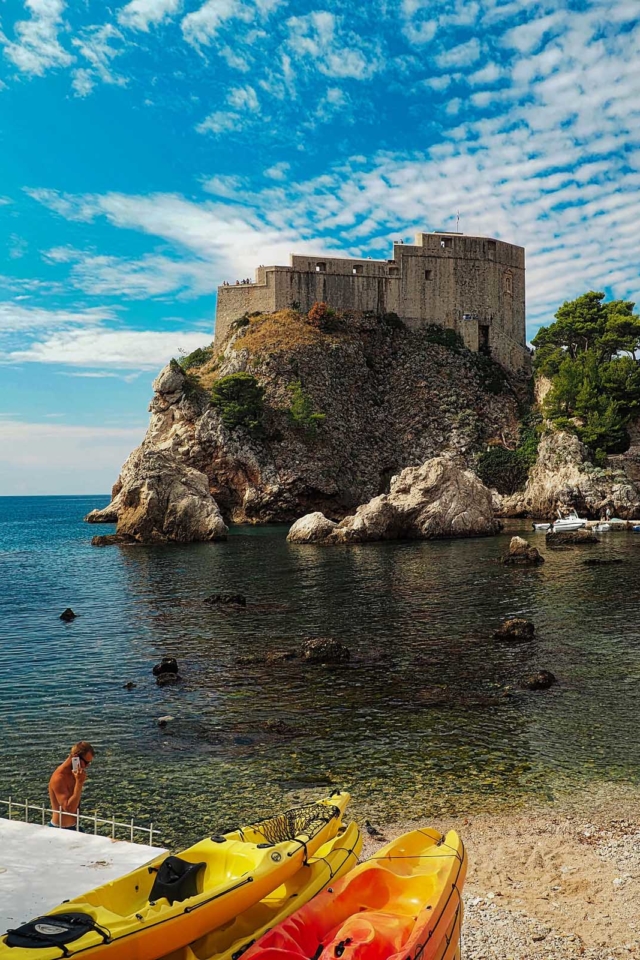
Along the storied Dalmatian Coast are hints of eras past. From the City Walls to ancient forts, so much has happened. Add in the sparkling blue water of the Adriatic Sea and glistening white beaches, and you can see why Dubrovnik, Croatia is a great place to go sea kayaking.
From the water, you’ll have a different perspective of the city, one that is even more pronounced with the help of an expert guide on a kayaking tour. On this guided tour , embark from Banje Beach and learn more about the incredible coastline that has changed local and international history.
As you paddle, you’ll be able to see into the translucent water where fish swim by. Touring its zenith with a paddle over to Lokrum Island, where you’ll swim into Betina Cave.
13. Visit Lokrum Island
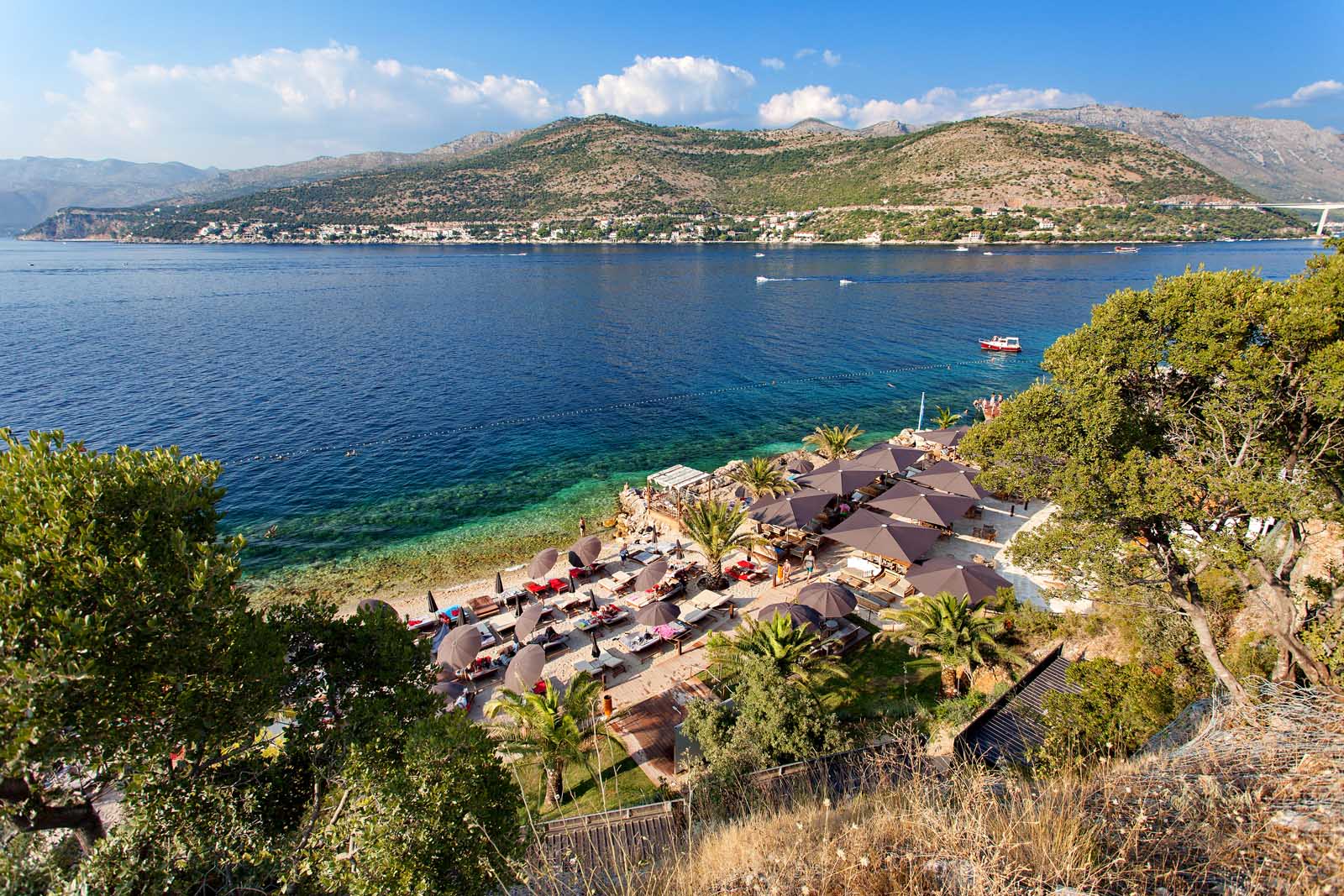
While there are sea kayaking tours that will take you over to the serene Lokrum Island, it’s not the only way to explore the special place. In fact, you won’t even have to raise a sweat. From the Old Port, embark on a short ferry ride to the island.
Having wandered down the Stradun and visited ancient churches and museums, Lokrum Island will be the perfect complement to your travels. The island is devoid of residents if you ignore the colony of peacocks. As you explore the island, you’ll come across inland saltwater lakes enveloped by dense forests, a botanical garden, and even a nudist beach.
But even in paradise, Dubrovnik’s history is still present. Away from the lakes and beaches is an 11th-century Benedictine monastery and Fort Royal Castle. The latter was built by the French under Napoleon.
14. Game of Thrones Tour
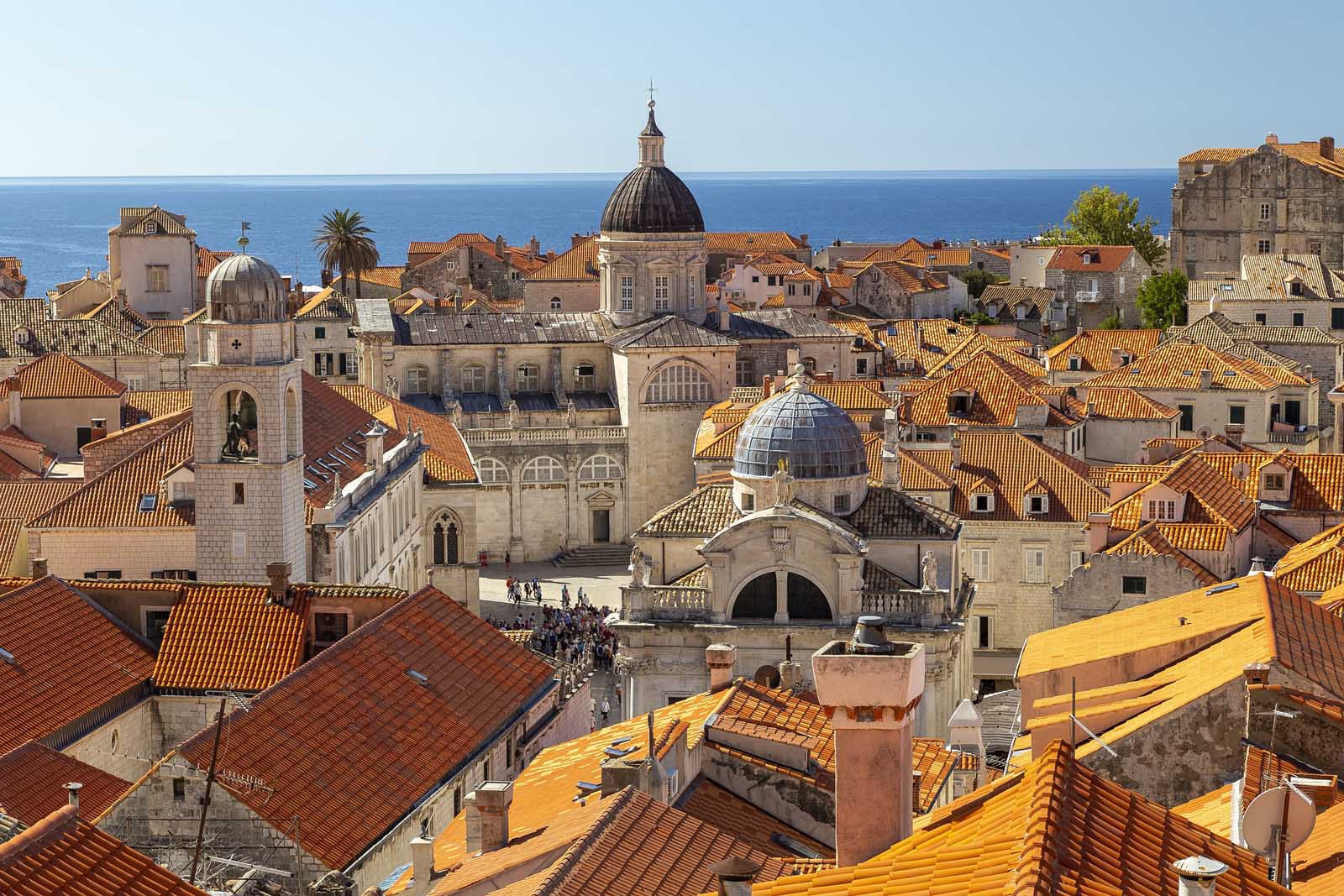
As you visit Dubrovnik and indeed the rest of Croatia, you may find some of the sites eerily familiar. As we mentioned above, the city and country are home to some of the most memorable Game of Thrones filming locations. These helped form the basis of what made the show such a hit as it was able to use real historical landmarks from around the world.
The wonderful news for travelers is how accessible these sites are, with or without a tour. Some of the aforementioned attractions were filming locations, most notably King’s Landing, which was filmed in the Old Town of Dubrovnik. Another highlight is Blackwater Bay, where the infamous battle for the fictional city took place.
Although you can see these on your own, this Game of Thrones tour will further peel back the curtain on the show, including where Cersei did her walk of shame.
15. Museum of Modern Art
The Museum of Modern Art first opened its doors in 1945. Since then, its collection has grown while becoming the foremost gallery in Dubrovnik, Croatia. Those who love their art should add the museum to their itinerary with enough time to peruse their extensive collection of over 3,000 pieces.
The MOMAD showcases some of the best local and national talents. These are shown alongside some renowned international luminaries. The strongest section of the museum is the modern art period that began in the late 19th century and lasted until the Second World War.
For those unaware of great Croatian artists, as you explore the Museum of Modern Art, keep your eyes out for the names Marko Murat, Niko Miljan, and Marko Rasica.
16. The Dominican Monastery
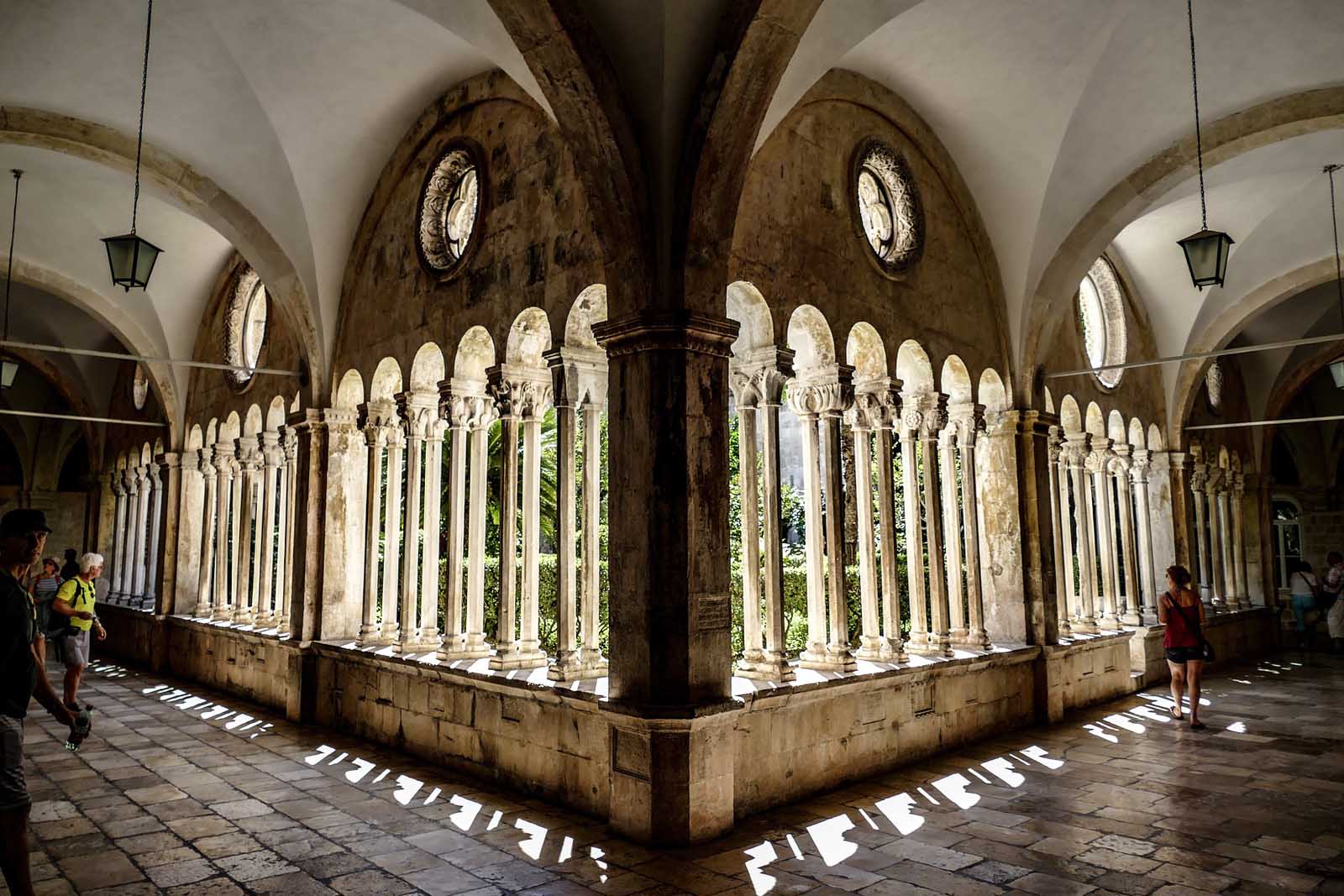
The Dominican Monastery was first dreamed up in the 14th century. Original plans were so grand and extensive that Dubrovnik had to remove and re-establish parts of City Walls. Upon completion, it stood until the tragic earthquake that shocked the city in 1667. From there, it was faithfully rebuilt from the bottom up.
Those visiting Dubrovnik will have the chance to admire the monastery’s famous Gothic cloisters and the extensive art collection with pieces dating back to the 15th century.
Most visitors will make a beeline for the Franciscan Monastery, often leaving this attraction with few crowds. Take your time to indulge in a more peaceful experience as you gaze upon art and golden relics before kicking back in the ornate courtyard as birds flutter above.
17. Montenegro Day Trip
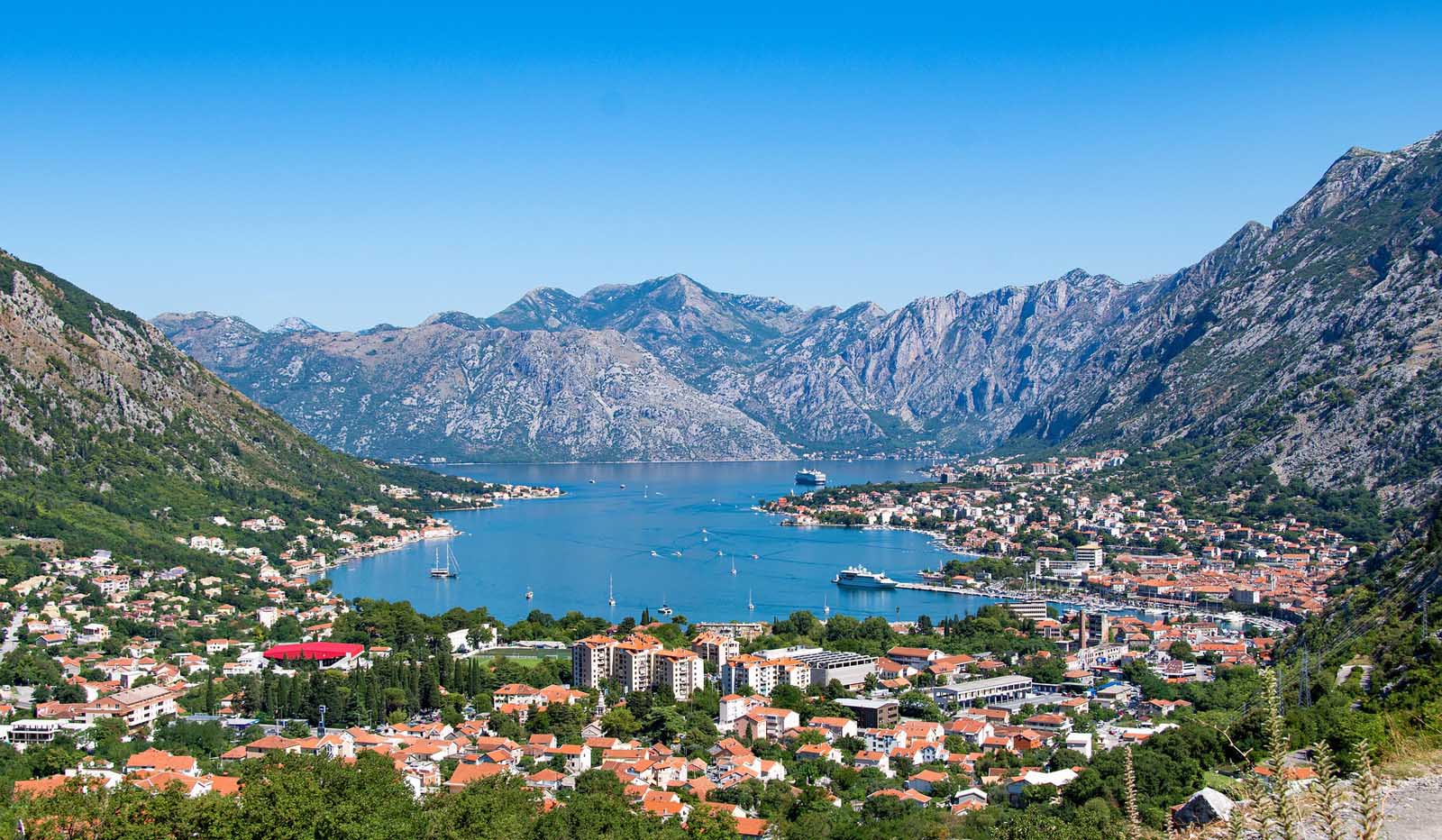
One of the best day trips you can take from Dubrovnik is the one to Montenegro. The small country is a short and scenic two-hour drive away and provides a different yet equally magical experience for travelers.
Montenegro has captivating scenery in spades along with charming old-time villages. Because of its diminutive size, it’s easy to explore it all in a short period. This guided day trip really lets you see it all.
Once you’ve arrived in Montenegro, head to Budva. This coastal town has all the makings of a medieval village, including its own walled city and terracotta rooftops. After embarking on a self-guided walking tour, head to the Bay of Kotor to discover an epic fjord.
On your way back to Dubrovnik, stop by the Dumitor National Park for a hike into the hills.
18. Sponza Palace
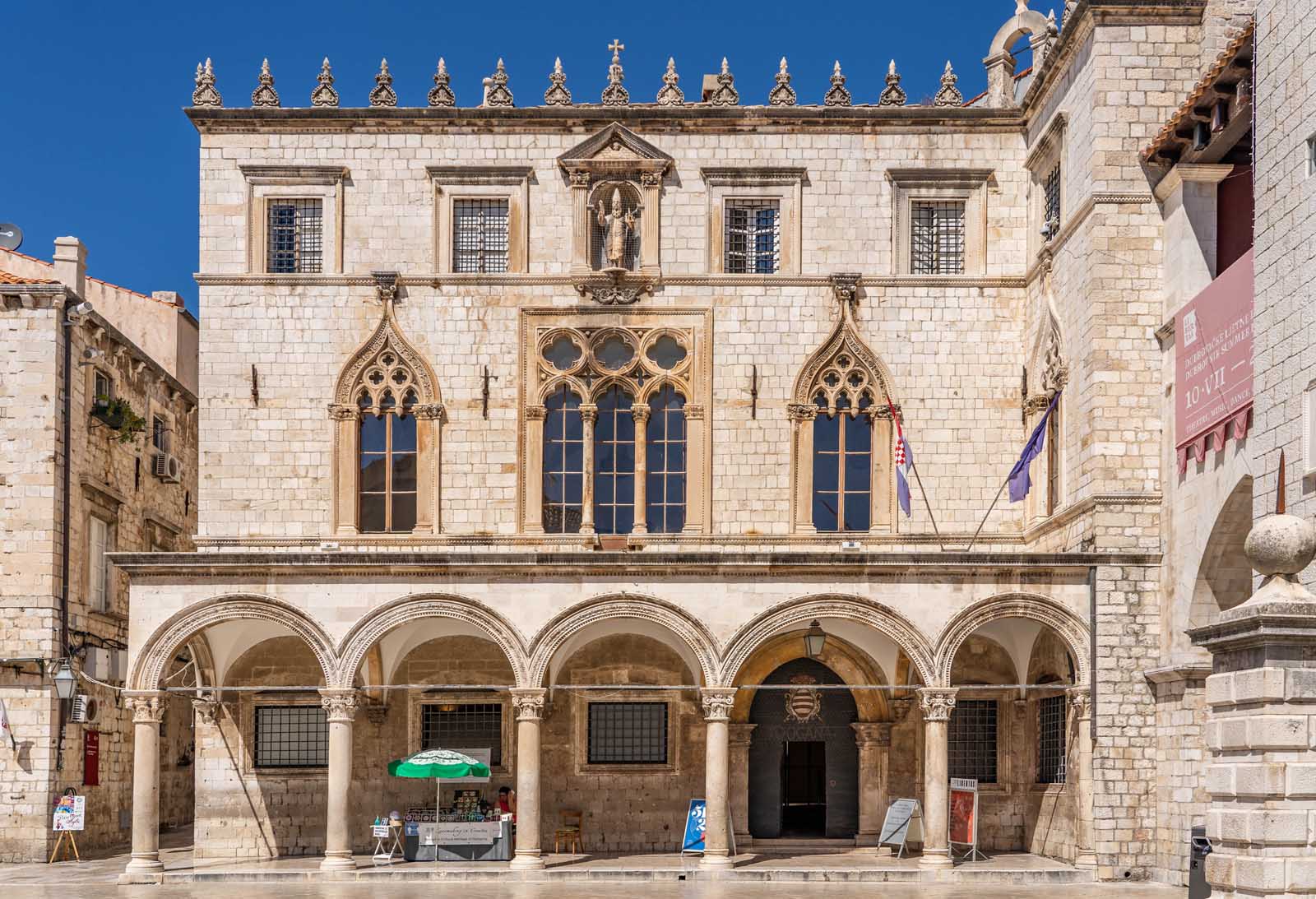
Just like the Church of St. Blaise, Sponza Palace managed to escape the wrath of the 1667 earthquake. This makes the palace, which was developed in the early 16th century, one of the oldest structures in the city.
Since the beginning, the palace has been a prominent secular building with its exterior plaza playing host to merchants and traders for over 400 years. Today, you can even see markings on the palace wall reminding marketgoers not to swindle other members of the community.
Architecture aficionados could admire the facade of Sponza Palace for a long while. But those who venture inside will find a building that is now home to the city’s archives in Old Town. Come discover over 100,000 documents, some of which are from the 10th century.
19. The Red History Museum
Much of your time within Dubrovnik’s Old Town will be spent discovering and admiring an ancient culture. But much has occurred in Croatia since then, especially during the 20th century. For a modern take on local history, be sure to visit the Red History Museum.
The museum explores the communist reign of the Yugoslav Federation from 1945 to 1991. The museum spans from humble beginnings, having been started by a group of friends who wanted to tell this story and that of the Homeland War.
Visitors can get to know life under the regime and the war that ended it while checking out artifacts such as period furniture, old magazines, and comb books.
20. Elafiti Islands
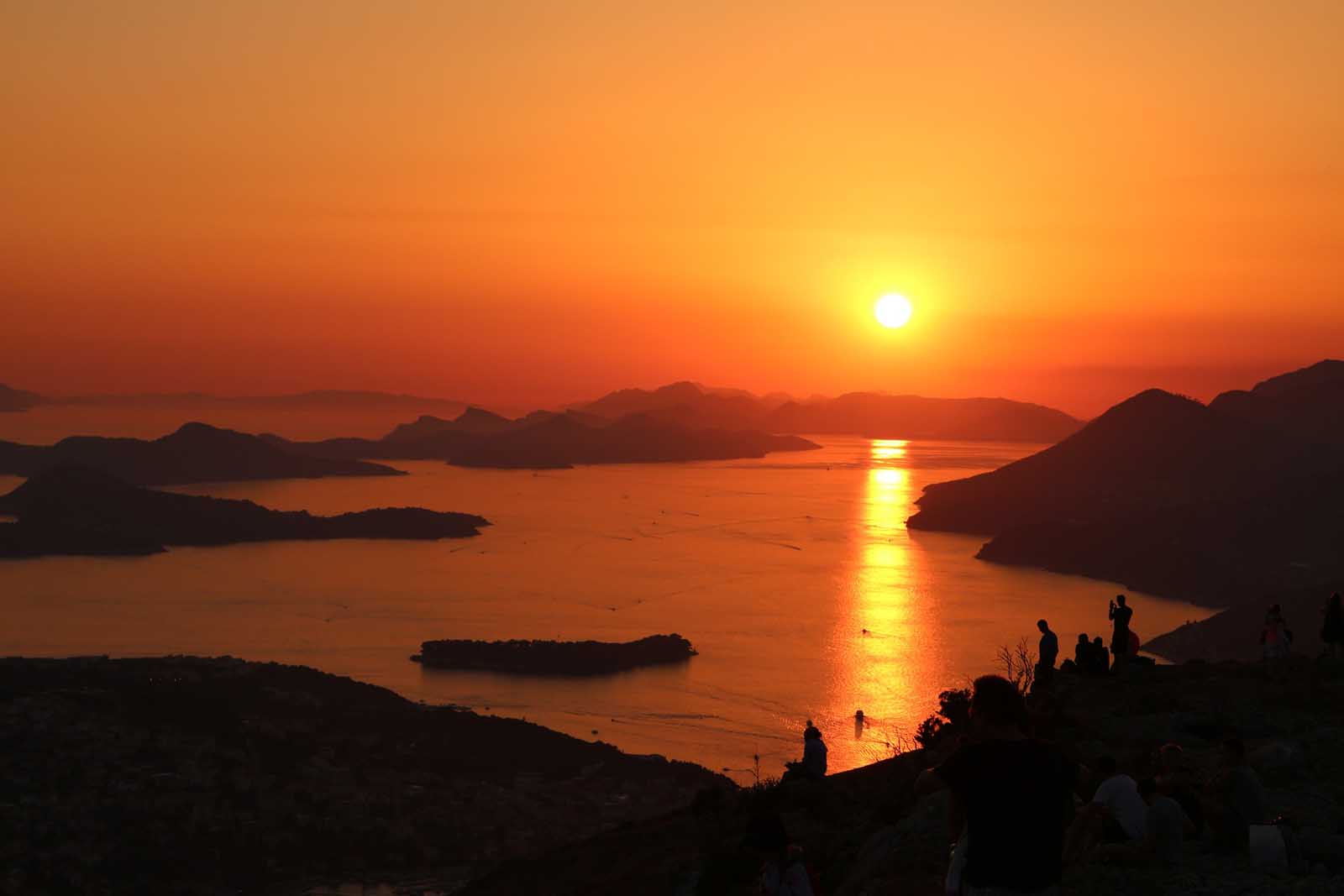
North along the Dalmatian Coast is the Elafiti Islands. This small archipelago will perfectly complement your time at Lokrum Island and increase your love for Croatia’s epic scenery.
The Elafiti Islands are made up of six intriguing specks of land, with two of them being completely devoid of traffic. Having spent time in the boisterous Old Town and seeing the cruise ships hang out in the West Harbour, this will be an appreciable change of pace and a perfect day trip. Read more: Best Islands to Visit in Croatia
High on the agenda should be the beautiful village of Lopud. Here, you’ll spot an ancient fort looking over a town where narrow streets bring together old monasteries, homes, and vibrant gardens. Other places to visit include the fruit groves on Sipan and the forests on Kolocep. This day trip to the Islands is the perfect way to enjoy all they have to offer.
21. Go on a Wine Tour
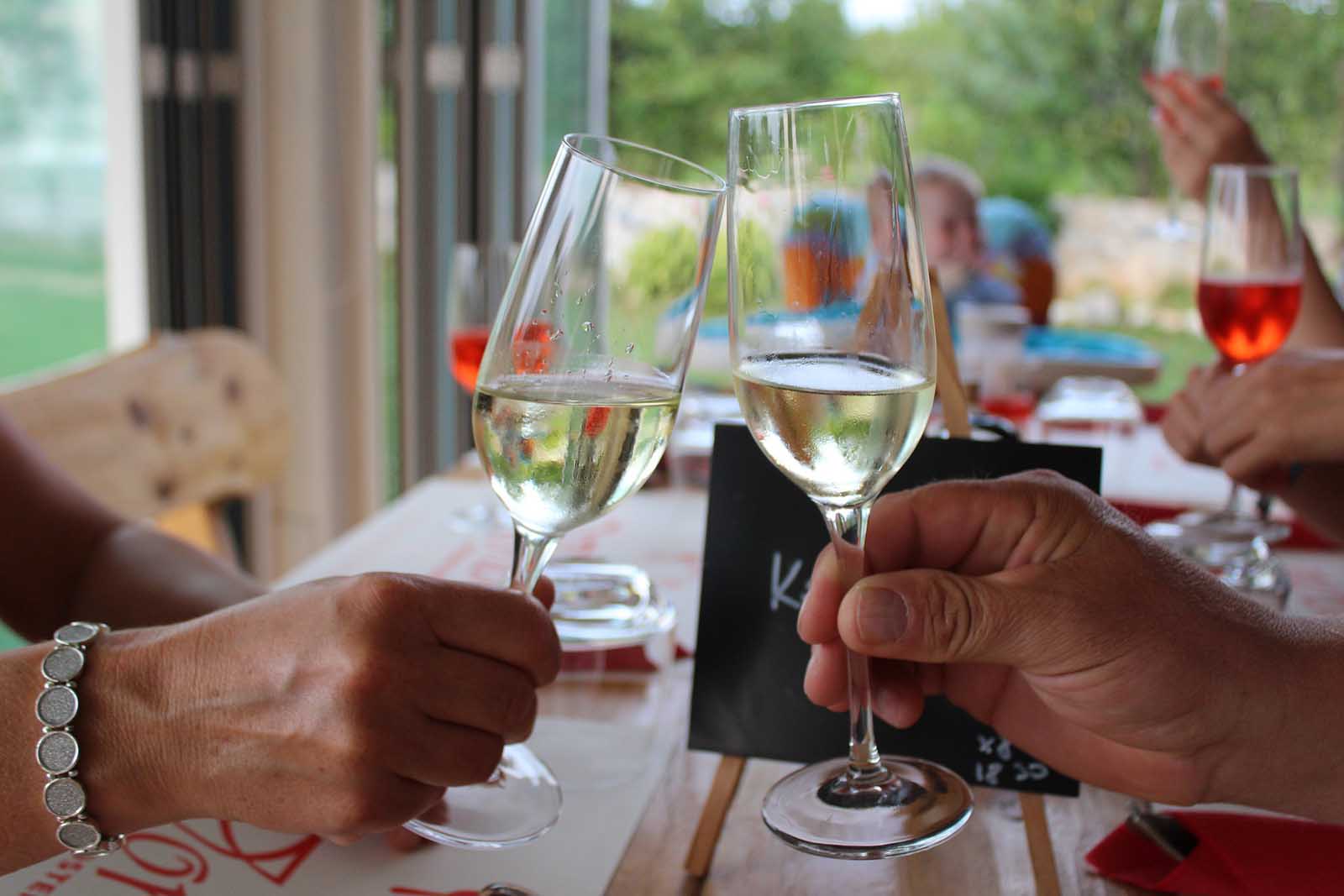
The stunning world that surrounds Dubrovnik isn’t just for looking. The climate has led to Croatia being a renowned wine-growing country. Like the local buildings, wine-growing has long been a part of the nation’s history, with Croatia home to 300 wine districts.
From the Croatian Uplands to Slavonia and Danube, there is no shortage of exceptional wines and distinct grapes. Dubrovnik falls within the Dalmatia region and there are many wineries that are worth visiting.
A car rental may come in handy, but if you just want to enjoy the wine and the scenery, then embark on this tour . Enjoy a variety of wine tastings while also exploring the birthplace of Marco Polo.
22. The Cliff Bars
Speaking of boozy fun, the best way to celebrate your time in Dubrovnik is by visiting one of the city’s famous cliff bars. These bars are set upon outdoor terraces, offering panoramic views as vibrant as the cocktail in your hand.
With the bars facing west, you can sit back and sip as golden hour takes over the horizon, painting the sky in shades of warm colors. Beneath you, the Old City Walls soak up the day’s last light and the waves crash down on the beach.
Travel Tips for Dubrovnik, Croatia
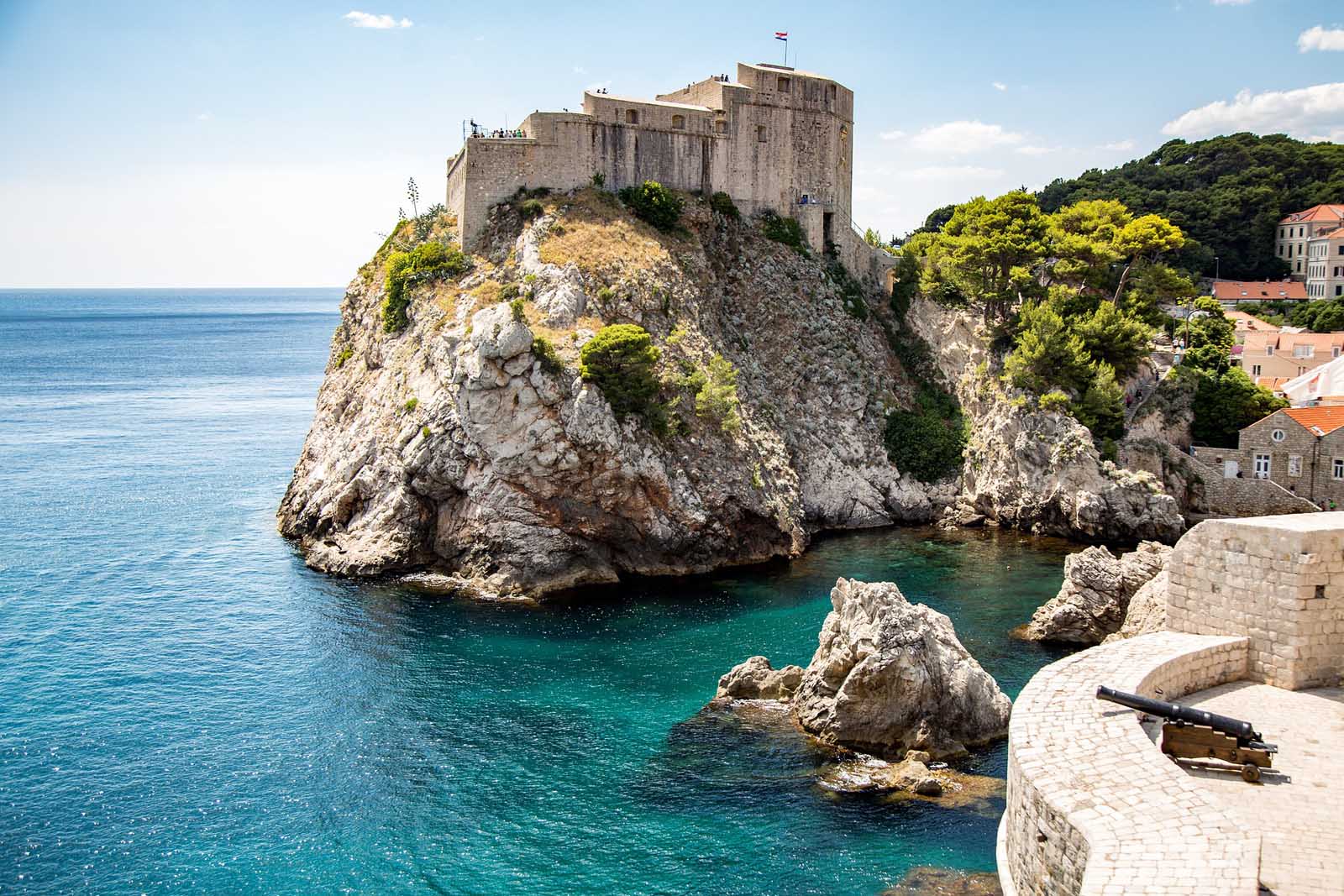
Wake Up Early
Day trippers to Dubrovnik, Croatia will quickly fill the busy Old Town streets come midday. Wake up early to explore before they arrive.
Avoid the Cruise Ships
In a similar vein, if you see a cruise ship in the port, it may be a good time to embark on a day trip to the surrounding islands or into the mountains.
Keep Your Passport Handy
Dubrovnik is essentially surrounded by Montenegro and Bosnia. Even for short day trips, keep your passport handy in case you have to cross a border.
How to Get to Dubrovnik?

The simplest way to get to Dubrovnik, Croatia, is by plane. Dubrovnik Airport has several direct flights from international destinations along with regular flights from Zagreb and Split .
Driving through Croatia is as scenic as it is easy. The country has a great highway system that makes it a breeze to get from A to B. However, if traveling by car, you’ll have to pass through Bosnia and Herzegovina for just a few miles.
Public transport is your third option with busses departing from Zagreb. Boats also depart from Split.
Getting Around Dubrovnik
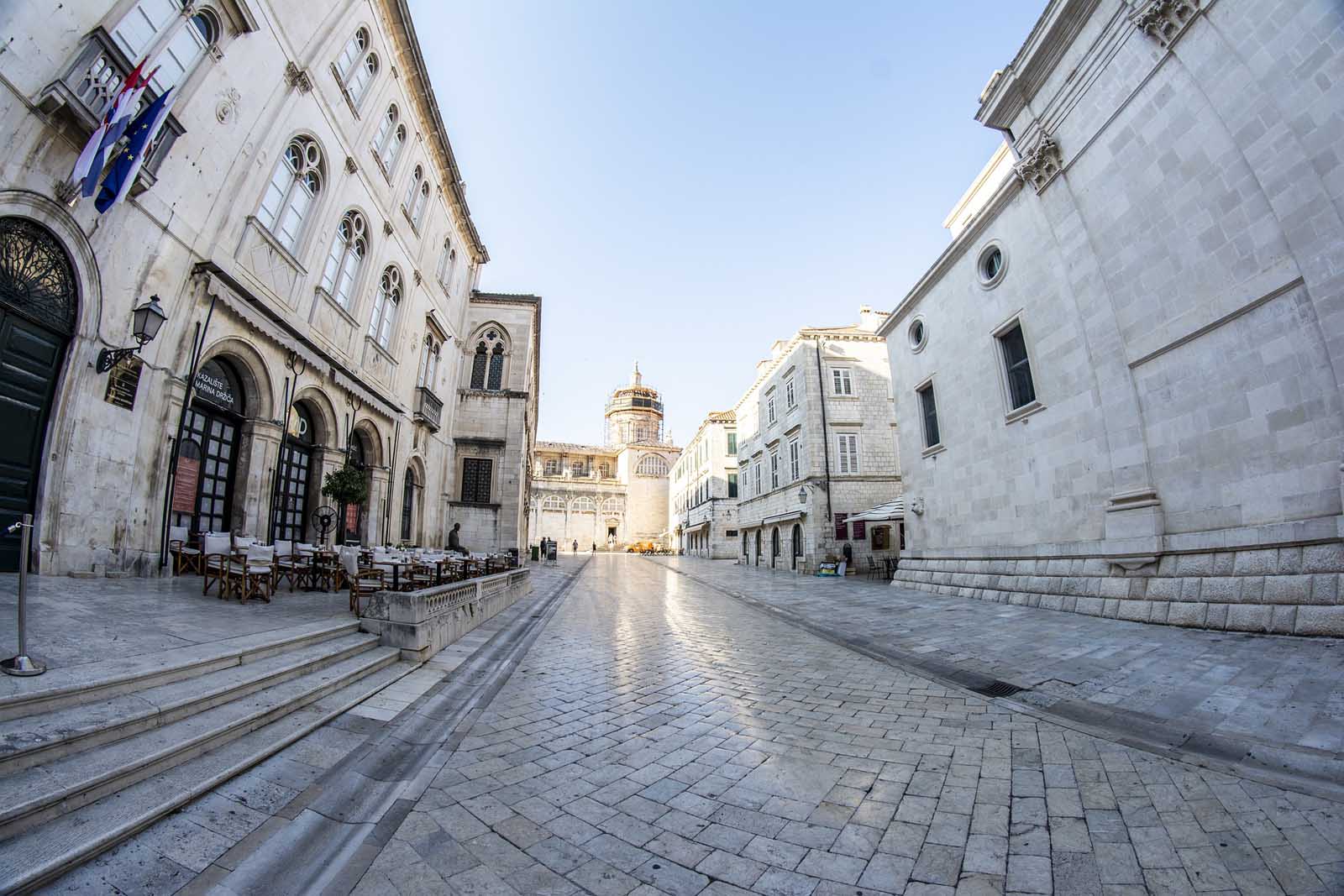
Most of your time in Dubrovnik will revolve around the Old Town. The historic district is very small, only taking around 10 minutes to walk from one end to the other.
This means all attractions are within walking distance, once you have made it through the gates. If you’re staying on the edge or within the Old Town, you won’t have much to worry about.
However, that part of town can be quite expensive, especially during the summer. If you stay further out, the local bus network covers most of the city.
If you’re taking the local bus, consider getting a Dubrovnik Card . This will cover your cost of transport while providing free access to many top attractions.
The Best Time to Visit Dubrovnik
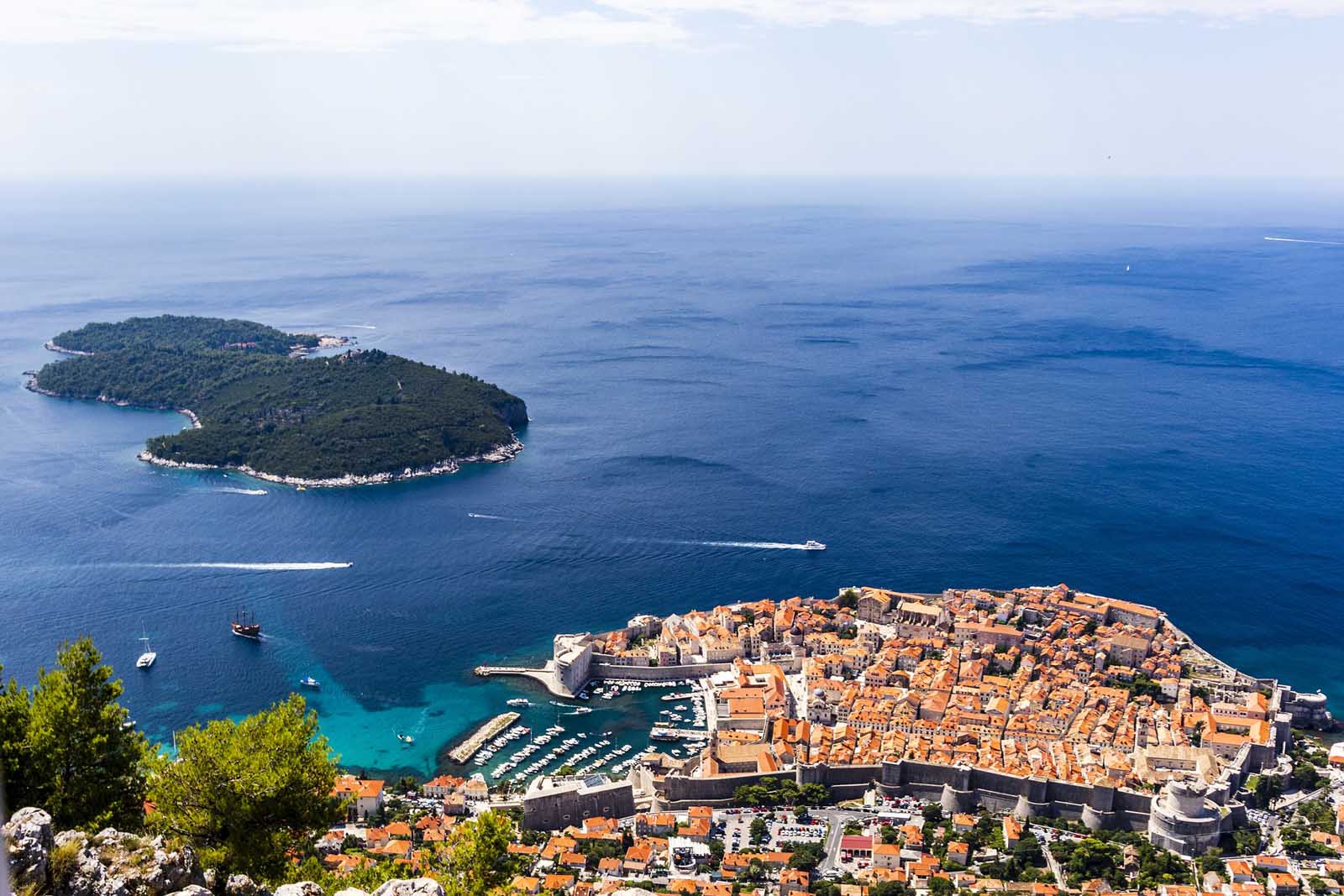
The warm temperatures make visiting Dubrovnik in the summer the most popular. But travelers will have to prepare themselves to brave the crowds, especially in the small and cramped Old Town.
For this reason, you can’t beat traveling here in the shoulder seasons. Late spring and early fall will still have beach-worthy temperatures and hotel room rates will also drop.
Budget travelers should consider April and October. Although it can be a bit colder, attractions and hotels won’t be as expensive and you can experience the historic city with lower crowds.
Where to Stay in Dubrovnik?
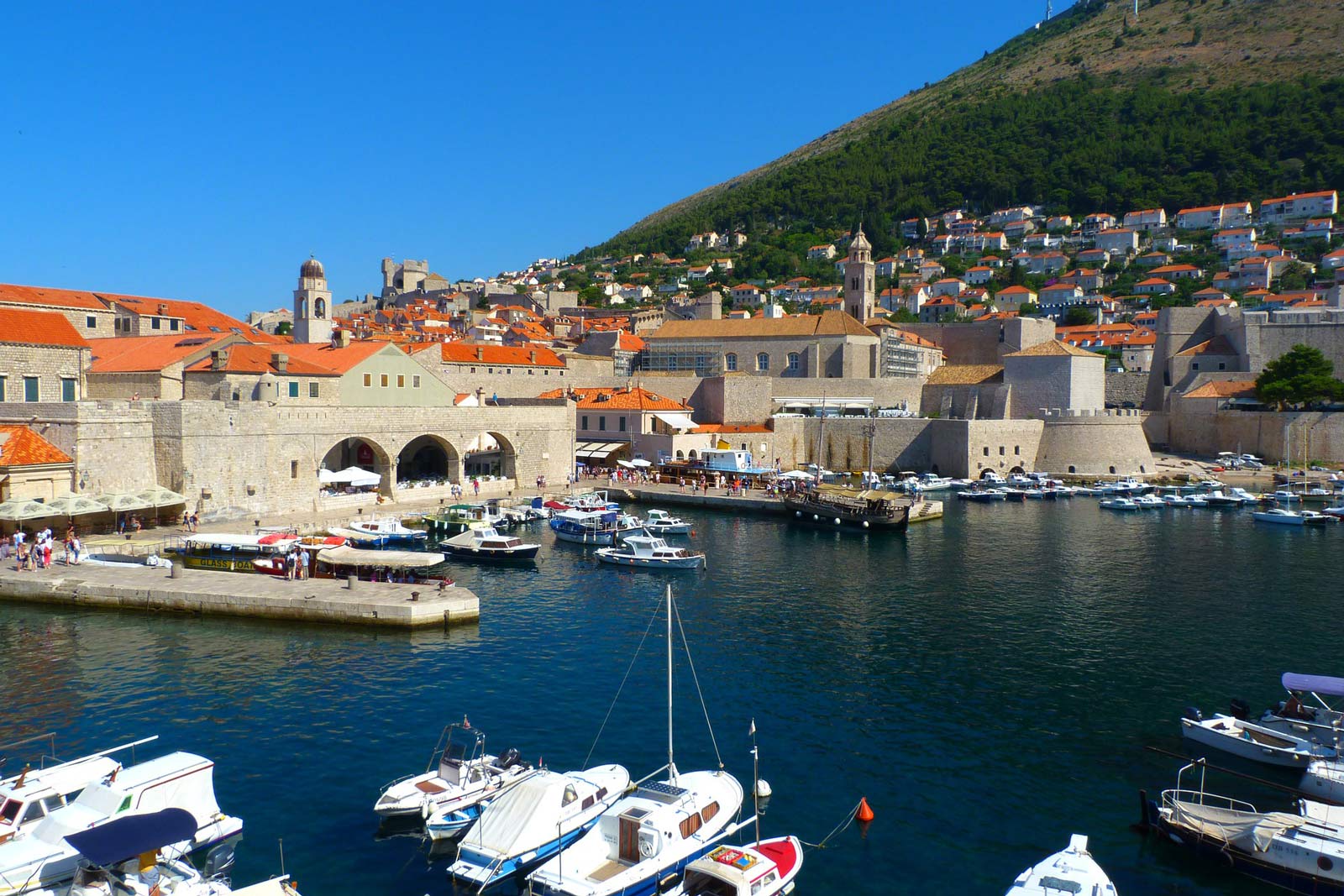
As we mentioned above, accommodation prices fluctuate based on the time of year. This is standard in many tourist cities but is arguably more pronounced in Dubrovnik.
Keep in mind that Dubrovnik is rarely a budget-friendly destination. There are ways around this, but what may be a decently priced hotel in April could be double the price come June. For a more in-depth look, check out our article on where to stay in Dubrovnik .
Apartments Lora provides the comforts of your own living space without the hefty price tag. You’re only a few minutes from the beach and under 2,000 feet from the Old Town and you’ll have access to a private kitchen and communal terrace with sea views.
Stay inside the City Walls at La Vita e Bella . The fully furnished units are steps from the Stradun and the Franciscan Monastery and a few minutes from the beach. Guests will also have access to the airport shuttle.
The Pucic Palace puts you in the heart of the Old Town while staying in your own baroque palace from the 1700s. Enjoy elegant furnishings, an on-site restaurant and wine bar plus easy access to the Stradun and the beach.
Plan Your Trip to Croatia With These Resources
- Beautiful Croatia – The 20 Best Things to See and Do
- Game of Thrones Filming Locations You Can Visit in Real Life
- Where to Stay in Dubrovnik – Guide to the Best Neighborhoods
- Best Places to Visit in Europe
Travel Planning Resources
Looking to book your next trip? Why not use these resources that are tried and tested by yours truly.
Book Your Flights: Start planning your trip by finding the best flight deals on Skyscanner. We have used them for years and have found that they have the best flight deals.
Book your Hotel: Find the best prices on hotels with these two providers. If you are located in Europe use Booking.com and if you are anywhere else use TripAdvisor.
Find Apartment Rentals: You will find the cheapest prices on apartment rentals with VRBO .
Travel Insurance: Don't leave home without it. Here is what we recommend:
- Safety Wing - Occasional Travelers.
- Medjet - Global air medical transport and travel security.
Book Your Activities: Looking for walking tours, skip-the-line tickets, private guides, and more? Then we recommend Get Your Guide.
Need more help planning your trip? Make sure to check out our Resources Page where we highlight all the great companies that we trust when we are traveling.
You May Also Like
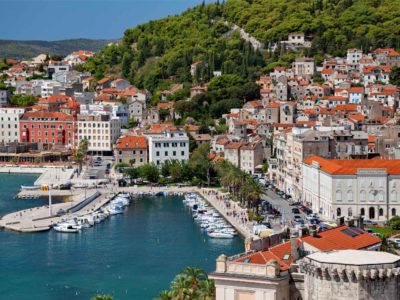
23 Incredible Things to do in Split, Croatia in 2024
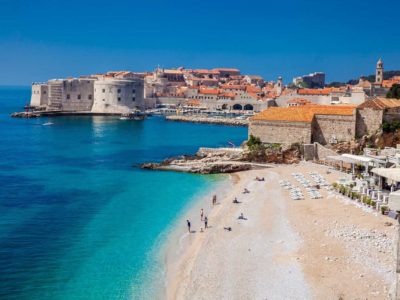
14 Best Luxury Hotels in Dubrovnik, Croatia In 2024
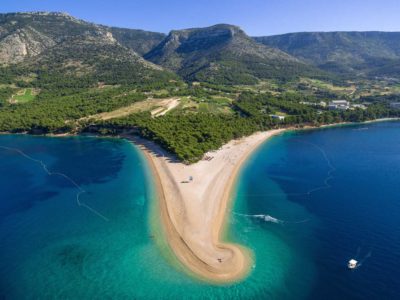
20 Best Islands in Croatia to Visit in 2024
About The Planet D
Dave Bouskill and Debra Corbeil are the owners and founders of The Planet D. After traveling to 115 countries, on all 7 continents over the past 13 years they have become one of the foremost experts in travel. Being recognized as top travel bloggers and influencers by the likes of Forbes Magazine , the Society of American Travel Writers and USA Today has allowed them to become leaders in their field.
Join thousands of others who get our monthly updates!
Leave a comment cancel reply.
Save my name, email, and website in this browser for the next time I comment.

Visit Dubrovnik

Dubrovnik and Surroundings
The whole Dubrovnik region is well-known for its fascinating landscapes, abundant Mediterranean vegetation, mild climate and interesting smaller settlements. In former times, it became part of the Dubrovnik Republic territory, becoming connected with the city via historical, economic and trade route ties.
In tourism, it is now called the Dubrovnik Riviera. Visiting Dubrovnik is not a complete pleasure without seeing at least a part of its surroundings: the good land and sea connections offer the possibility of organizing either shorter or longer excursions.
Information Dubrovnik Tourist Board Brsalje 5 20000 Dubrovnik [email protected] www.tzdubrovnik.hr Tel: +385 (0) 20 312011 Fax: +385 (0) 20 323725
- Lokrum island
- Lopud island
Under the mild Mediterranean climate, Dubrovnik is bathed in a sea of sun, blossoms and ripe orange and lemon tree fruit, even in the winter months. There are more than 250 sunny days per year, the average annual temperature is about 17°C, with the mean winter and summer temperatures being 10°C and 26°C respectively. The average summer sea temperature is about 21°C. The swimming season in the sea begins as early as April, sometimes even earlier, and lasts until late October, while swimming in indoor hotel pools is available year round. Dubrovnik and its surrounding areas cover the southernmost region of the Republic of Croatia and its Dalmatian province, from Neum in the west to Sutorina and Ponte Ostre in the east. The region borders with the Federation of Bosnia and Herzegovina to the north and the Republic of Montenegro to the east. This long, narrow coastal belt under the Dinaric mountains and low mountain peaks spreads to the east in the Konavle Polje (Fields), and includes Sniježnica Mountain and its mountainous region, it being its most inland point. One side borders with Herzegovina, the other with Montenegro, with the border line following the mountain peaks and at certain points coming to within a few hundred metres of the sea (such as at Duboka Ljuta).
The City of Dubrovnik is under UNESCO protection. According to records, the area around Dubrovnik was first inhabited somewhere between 6000 and 2000 BC. The existence of the city was lost in the cloudy course of history, with legend and historical facts being meshed together. The lack of any preserved documents makes the whole pinpointing process harder, and the few historians that are researching this topic are left with the task to distinguish fact from fiction. What is certain is that Dubrovnik is an old city, persevering on its stony cliffs for at least 14 centuries. An even older city, Epidaurum, predates Dubrovnik, being located where the city of Cavtat now lies, about 18 kilometres southeast of Dubrovnik. At the time of its destruction it had endured for at least 10 to 12 centuries. Again, historians cannot be sure. Some believe that the Greeks founded the colony around 600BC. With the city destroyed, a number of its inhabitants fled to neighbouring regions (today’s Župa Dubrovačka), where the fortified cities of Spilan and Gradac (Burnum) were inhabited, as well as the rocky islet of Laus, which became the first city core of old Dubrovnik.
The rapid settlement of Laus resulted in the development of a new city, today’s Dubrovnik (in the 7th century) which would, on that small rocky area, grow deep roots and build a glorious and heroic history in the stormy centuries to follow. During the 7th century, the Slavic tribes, with Croats being one of the superior ones, had already set up permanent residences along the majority of the eastern Adriatic coast, with the exception of a few fortified Roman cities, which were becoming cut off from the rest of the empire in the wake of this rapid Slavic population. In comparison to the development of cities with a Roman population, a settlement was developing near Ragusium, at the foothills of Mount Srđ, which received the Croatian name Dubrovnik. The name came from the oak forests which even today are called “dubrave” today. During the 10th and 11th century, the sea strait between the two settlements became shallower due to alleviation, drying up completely at the end. When the two settlements, already joined together, were fortified and strengthened within the same city walls at the end of 12th century, the result was the Old Town of Dubrovnik, an urban centre preserved to the present day.
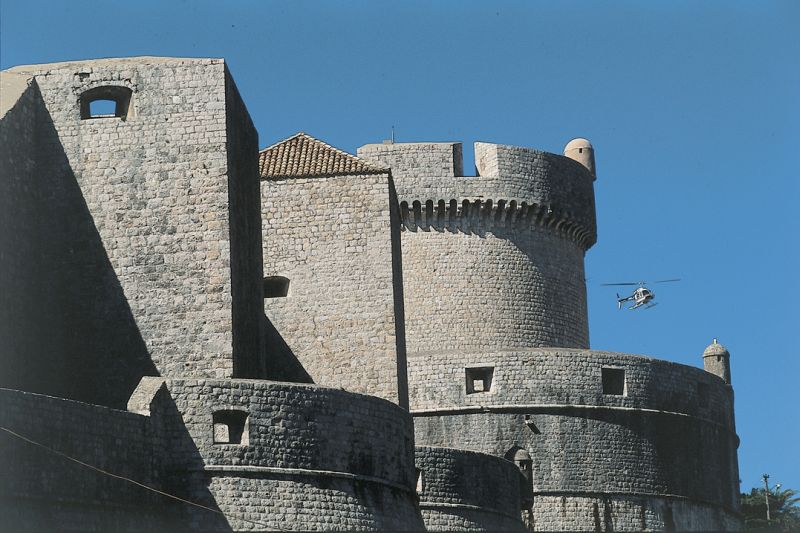
In the bosom of the fragrant park is the former Benedictine monastery (from the 12th century), closed down during Napoleon’s occupation. Later, the monastery and the islet as a whole came into possession of the Habsburg Archduke Maximilian and became his summer residence in 1859. Maximilian renovated the monastery in the neo-Gothic style and built a castle in the shape of a tower. Following Maximilian’s tragic death in Mexico, the islet changed hands several times, and today is a protected nature park.
During the French occupation, the French erected a citadel called “Fort Royal” at the highest point on the island, which is a lookout point today, offering the loveliest view of Lokrum and the whole of Dubrovnik.
A special attraction on Lokrum is its small lake, called the “dead sea”. The castle today is home to the Biological Institute of the Croatian Academy of Arts and Sciences and the Natural Sciences Museum, with its valuable collections and memorial collection of world renowned Dubrovnik mathematician, atomist and astronomer Ruđer Bošković (18th century). Transport to Lokrum is organized via tourist boats from the Dubrovnik old town port.
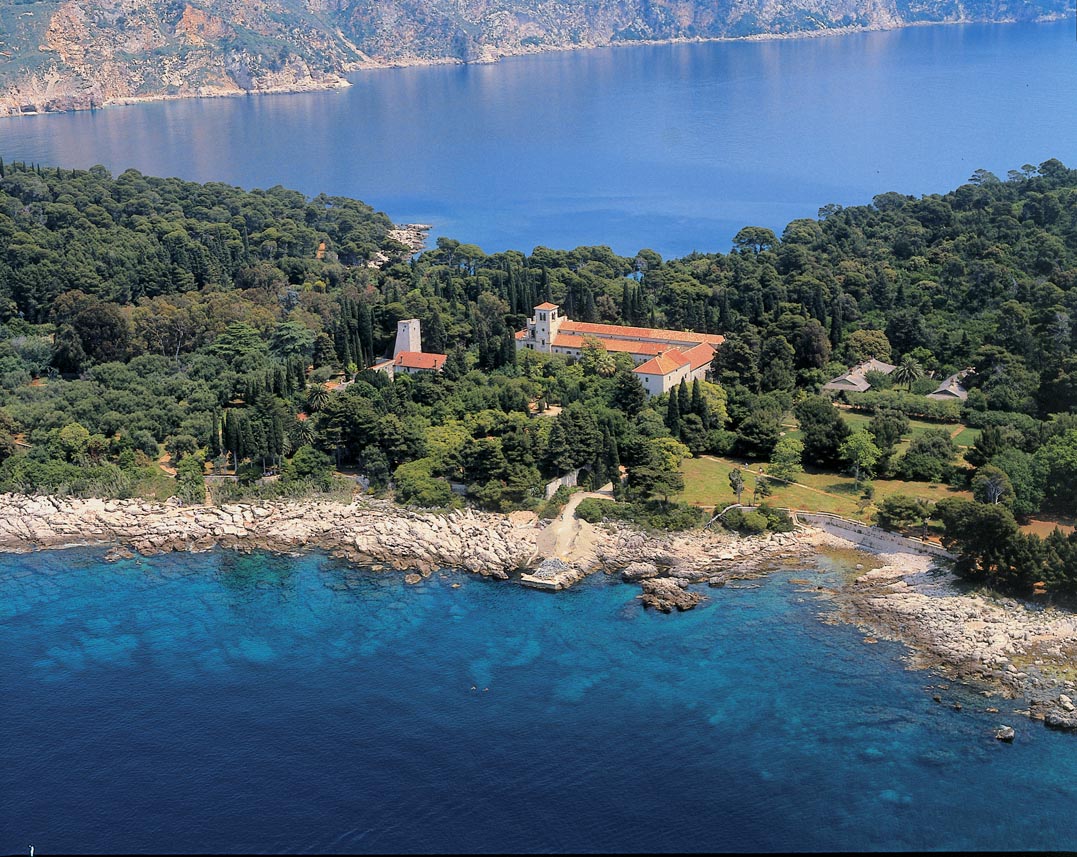
Cavtat is the largest and the only urban centre in Konavle that has been built up deliberately. Located on the Rat peninsula, which, together with the Sustjepan peninsula, surrounds the well protected and accessible bay. In its harmonious architecture, one can observe the centuries-old natural, spiritual and material ties to the Dubrovnik Republic.
Cavtat, known as Epidaurus in antique times, was an important Roman colony in this region. After Slavic and Avarian numbers in the area rose the colony expired, forcing its inhabitants to flee to the nearby settlement Laus-Rave-Ragus, the very settlement that is the foundation of Dubrovnik. Some ancient sources mention Cavtat under the name of Ragusa Vecchia, indicating a strong connection between the two cities. During the Dubrovnik Republic, Cavtat was seen as a very important sea port, trade and administration hub in the Republic, second only to Dubrovnik.
Places that offer so much to visitors are a rare find. Even the most demanding tourist will find something suiting their wishes: the beautiful scenery, rich cultural and historic heritage combined with a wide range of services make this town a very attractive destination on the Adriatic coast. Cavtat itself is located between Dubrovnik and Konavle: one can still feel the spirit of times past and experience the old traditions permeating the area to this day. By all accounts it’s an ideal holiday resort, with something for everyone, be it exploring and enjoying hidden coves in peace, spending the day enjoying long walks along the seaside or even participating in sports and watching one of many entertaining cultural programs.
Cavtat (from the Latin Civitas), while being established by the Illyrians, had a turbulent record of rule and possesion: it was under Greek and Roman rule, it was seized by different powers, ravaged by invading Avars and Slavs. It had part of its population flee to the islet of Laus which later became Dubrovnik. Early on in the 15th century, Cavtat became a part of the Dubrovnik Republic when the western part of Konavle was taken over from Bosnian magnate Radoslav Pavlović.
Many famous Croats were born in Cavtat: the lawyer Baltazar Bogišić, painter Vlaho Bukovac, politician Frano Supilo to name a few . The Rector’s, or rather Captain’s, Palace is a Renaissance structure dating from 1555-1558. This is home to the Bogošić library, archive, museum and stone monument collection (including two inscriptions by the Roman Governor Dolabelle from the 1st century) and a graphical collection with over 10,000 pages compiled by Bogišić. The Baroque Church of St. Nicholas, in its current appearance from 1732, contains eight paintings of the old masters and paintings by Vlaho Bukovac in its vault. The Church of Our Lady of Snow and the Franciscan monastery with its Renaissance cloister date back to 1483. From the church, a trail heads through the pine woods to the peak of a nearby hill where the graveyard is located, and which is dominated by the Račić family mausoleum (architecturally designed and sculptured by Ivan Meštrović in 1920-1922). The Kaboga Palace also dates back to the time of Dubrovnik Republic.
Legend on the origin of the name of Cavtat
There is an interesting legend concerning the town name, as it states that two suitors asking the beautiful Cavtislava’s hand in marriage( the daughter of the Epidaurian ruler). Her father would give his approval to either suitor, depending on which one performed the bigger task. One of the suitors, a commander named Stjepan, was required to bring aquaviva from the Vodovađa source in Konavle, while the other, a knight and seafarer, was required to bring a ship brimming with silk from the far corners of the known world. On the day of the festivities, commemmorating the opening of the Epidaurian viaduct, the beautiful Cavtislava was to first drink water from a golden jar, but before she could do so a big lizard jumped out of the water, landing directly onto the girls lap. Cavtislava’s heart failed her and she died immediately. According to tales in the common tongue, the unfortunate seafarer, whose ship was sunk by a huge storm directly in front of Epidaurus, and who therefore was not able to fulfill his task, put the lizard into the viaduct since he could not bear the loss of the girl. In memory of the beautiful Cavtislava arose Cavtat to replace the ravaged town of Epidaurus, destroyed in an earthquake.
Another legend says that Cavtat derives its name from the Old-Croatian verb ‘captiti’ – ‘to blossom’, refering to the yellow juniper, a widespread sparkling plant with a sunny aura. The legend relates its doom to the catastrpohes after which the indestructible Cavtat would come back to life again and anew. “… down there, there’s something adorned with gold blossoming it the reef…”
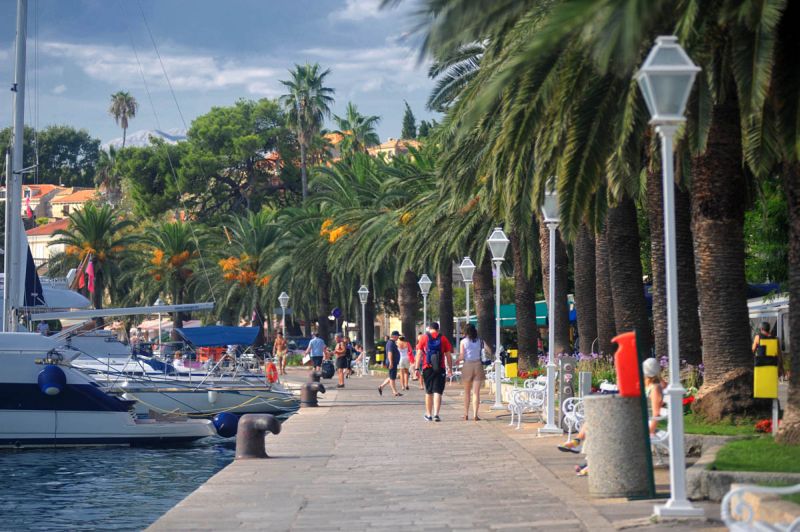
Brsečine is a small town situated on a hillside above the sea. Of historical note are the Bizzaro summer residence in the town and the Zuzorić summer residence on the seaside in a picturesque cove with a lovely beach and dock. Brsečine is only 20 kilometres from the historical Dubrovnik Old Town.
The island of the same name is part of the Dubrovnik island group (the Elaphite archipelago), situated 7 kilometres northwest of Gruž Harbour. The island has an area of 2.35 km2. Due to the limestone composition of its soil, there are no water springs or permanent superficial water sourses. The climate is mild Mediterranean. The majority of the island is covered by forests and subtropical vegetation. The economy is based on agriculture, wine making, olive growing, carob, pomegranate and citrus plantations, vegetable growing, fisheries, shipping and tourism. There are two settlements on the island, Gornje and Donje Čelo, on the northwestern coast of the island. The island is protected from the northerly bura wind by a limestone ridge; there are sandy and pebble beaches, and parks with numerous species of subtropical plants.
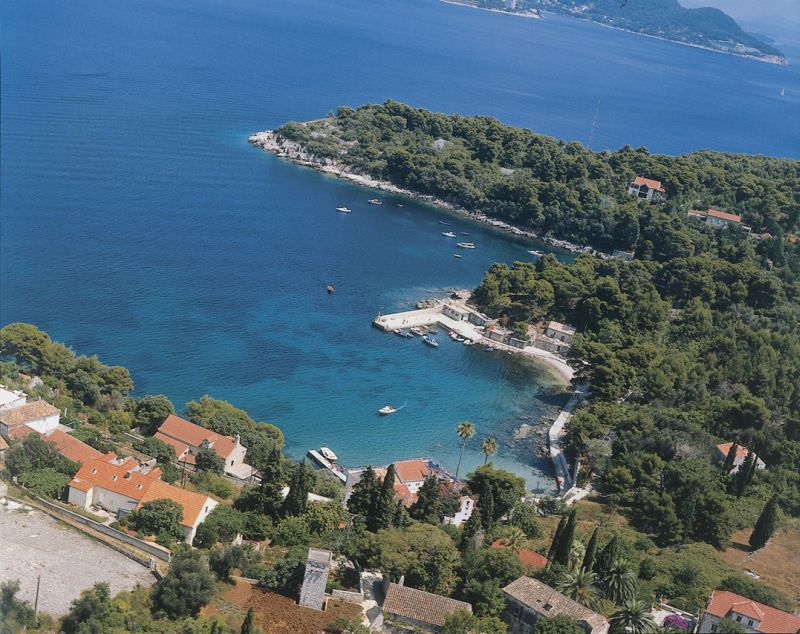
Konavle is a region with particular natural beauties and contrasts: mountain and valley, green hills and naked stone, the blue and the green or, as called by the inhabitants of Konavle, “Gornja” and “Donja Banda”. Fringed by the Konavle mountains in the North, bordered by the Adriatic Sea in the South, it reaches from the entry into the Bay of Kotor to the peninsula of Prevlaka in the East, and in the West, it inclines down to the cosy coves of Obod and Cavtat.
The preserved natural, unique and exceptionally precious rural architecture, numerous monuments of the thousand-year-old history of this area, traditions that are hundreds of years old and have been kept through folklore, the distinctive traditional costumes of Konavle and the Konavle embroidery, the harmony of man’s life and the nature …all of this renders Konavle unique and recognisable.
Geopolitical and Geographic Position
Konavle covers an area of 209 km2, where around 9500 inhabitants live in 33 smaller and larger settlements. Although it is a relatively small area, we can clearly distinguish three completely different parts: the rocky coast, the central part – the field, and the mountain region. The northern mountain part, which borders Bosnia and Herzegovina and Montenegro, is dominated by the mountain massif of Sniježnica /1234 m/ and Bjelotina. The fertile Konavle field represents the central part of Konavle; it stretches over 35 kilometres lengthwise and over 12 kilometres breadthways, and the streams of rivers Ljuta, Konavočica and Kopačica merge in its central part. In the central part of the Konavle continent belt, the vertical steep coast of the Konavle rocks is dominating, whereas in the south the Molunat peninsula is the primary attraction with all its coves, while in the west we have Župa bay with its beautiful coves, peninsulas and small islands of Cavtat.
Almost one third of the Konavle area is covered with forests: in the rocky coastal part, the low forests of macchias, pines and cypresses predominate, whereas in the northern mountain part you can also find oak and hornbeam forests next to cypresses and macchias.
The generally defining climate in Konavle is the Mediterranean one: mild winters, autumns warmer and rainier than the springs, dry and hot summers, and the predominating winds are jugo, bora, and the mistral. With regards to the characteristic climate and the typical soil, the most prevent agricultural cultures are the vine and the olive, but other fruit and garden cultures as well, as the stock farming are absolutely represented.
The generally defining climate in Konavle is the Mediterranean one: mild winters, autumns warmer and rainier than the springs, dry and hot summers, and the predominating winds are jugo, bora, and the mistral. With regards to the characteristic climate and the typical soil, the most prevent agricultural cultures are the wine and olives, but other fruit and garden cultures as well, as the stock farming are also well represented.
History of Konavle
The name Konavle derives from the Latin word “canale”, “canalis”, in the local dialect “konali”, “kanali”, what is connected with a viaduct, which in the Roman times carried water from Vodovađa to Epidaurum, today’s Cavtat.
Available historical traces are telling about the life in this region, ranging back to Palaeolithic and Neolithic times (over four thousand years before the Common Era). We can track the concrete course of the Konavle history from the fourth and fifth century BC onwards, when this area was populated by Illyrian tribes of the Plereians and the Ardians, while the Romans submitted the Illyrians in the second century BC. At the beginning of the 7th century, Avarian and Slavic tribes break into Europe and also into this region, and founded Epidaurum in 614 (today’s Cavtat), as well as the entire region of Konavle, whereby they displaced the inhabitants from former times, the Illyrians and the Romans. Shortly afterwards, the Croats instigated the Slavs and evicted the Avarians to the Pannonian Valley, while a part of the Croatian tribes stayed in Dalmatia, and one part stayed in the Pannonian Valley. In the following years, the rulers and the states in this area are alternating (Doclea, Rascia, Bosnia), and Konavle is, although only for a short period of time, also independent, namely in the 9th century.
In the 14th century, Konavle comes under the governance of the Dubrovnik Republic, when Dubrovnik’s inhabitants bought the following from former owners, Bosnian great land owner: in 1419, the eastern part of Konavle from Sandaljo Hranić, and in the year 1426 the western part from Radoslav Pavlović, whereat they paid the same amount of 36 000 Perpers (currency unit in Montenegro) respectively. Konavle was of specific importance for the Dubrovnik Republic, not only due to agriculture, stock farming and seafaring, but also because of its strategic value. Therefore, Dubrovnik’s inhabitants were keeping the power skilfully and effectively in their hands during their entire ruling, as well as they did on their other estates, which were lead by a sovereign in Konavle, who resided in a castle in Pridvorje.
With the fall of the Dubrovnik Republic in the year 1807, Konavle comes under French administration, and afterwards under the rule of the Austrian-Hungarian Monarchy, under which it will stay until its decay in 1918 and the formation of the Yugoslavian Kingdom. After World War II, Konavle is an integral part of the socialist Yugoslavia within the borders of the SR (Socialist Republic) of Croatia; and today, after the endured aggression in the Homeland War (from 1991 to 1995), it enjoys the fruits of the independency of the Republic of Croatia.
Information Konavle Tourist Board Zidine 6; 20210 Cavtat [email protected] visit.cavtat-konavle.com Tel: +385 (0) 20 478025 Fax: +385 (0) 20 479025
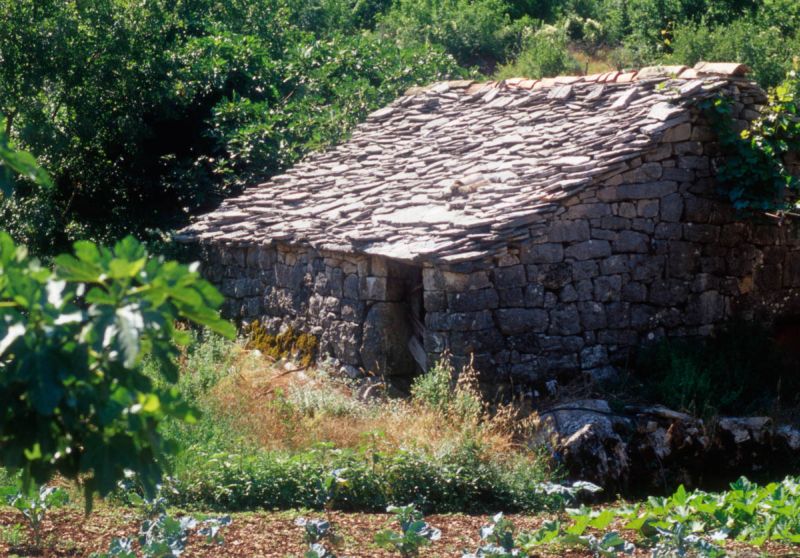
Kupari has a large sandy beach, modern hotels in the shade of palm trees and oleanders, and was once the top tourism destination in the Dubrovnik region. It was once the location where kuparica (roof tiles) was produced, which covered the roofs of old Dubrovnik.
Above Kupari, the forested hills of Pelegrin rise up, with a small chapel standing guard at its peak. Around it are monuments from the earliest of times. Not far from Kupari, at Čibača, there are ruins dating back to Illyrian and Roman times. The entire Župa region hides many unexplored archaeological localities.
Information Župa dubrovačka Tourist Board Šetališe dr.F. Tuđmana 7 Srebreno; 20207 Mlini [email protected] www.dubrovnik-riviera.hr Tel: +385 (0) 20 486254 Fax: +385 (0) 20 487003
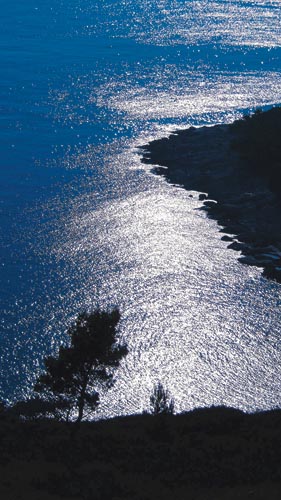
Lopud – an island of lush Mediterranean and subtropical vegetation, beautiful gardens, parks and beaches, Lopud is one of the most developed islands for tourism in the Dubrovnik region. In the past, it was an island of captains, which provided the most sailors for the navy of the Dubrovnik Republic. Also from Lopud was the famed sailor and ship owner Miho Pracat.
According to the Dubrovnik historian Razzi, Lopud had 30 churches in the 16th century, as well as numerous summer residences, several monasteries and many more inhabitants than today. Visible on the island are the ruins of early medieval churches, summer residences and fortresses.
The Franciscan monastery from 1483 with its cloister, defensive towers and walls and its Church of St. Mary of Splica holds much valuable art: the polyptych of Pietro de Giovanni, the triptych from the workshop of Nikola Božidarević, the polyptych of Girolan da Santacroce, paintings by the Flemish master Bassan and more. The Church of Our Lady of Sunjaiz from the 15th century is a valuable cultural monument and contains paintings by Palma the elder, Natalino da Murano, Mateja Junčić and others. The island has good boat connections with Dubrovnik from Gruž Harbour.
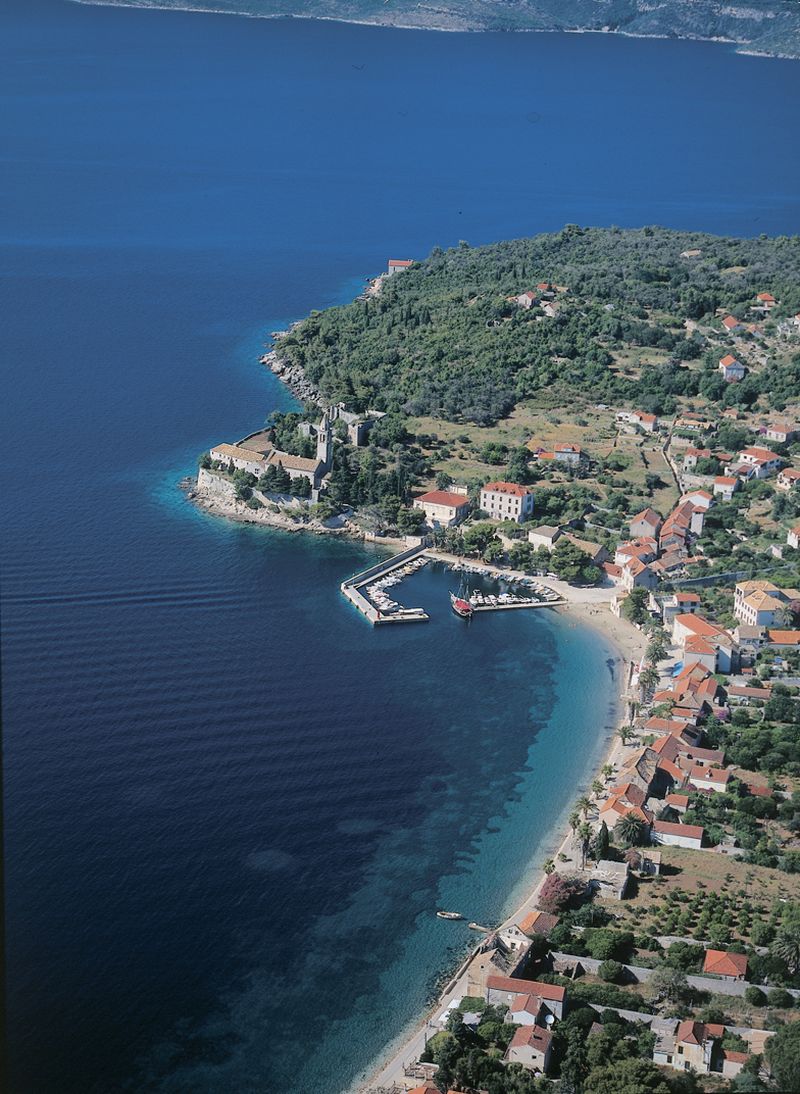
An old historical town, one of the most beautiful places in the Župa Dubrovačka, Mlini is situated along the banks of the steeply falling Zavrelje River, and boasts sandy beaches and inlets with clean shallow water. The ample humidity and warm climate have turned this town into fragrant parks and gardens with all kinds of plants and vegetation.
It received its name from the mlini (mills) that were once turned by the Zavrelje River. The town is filled with historical monuments and legends. According to one such legend, St. Hilarius burnt the Epidaurous dragon on the shores of Mlini in the 4th century, thus saving Epidaurum from earthquake, evil, barbarian attack and ravage. In honour of their saviour, the Church of St. Illar was erected, and he became the patron saint of the area. The Chapel of St. Rok on the coast and the Chapel of the Holy Spirit at Krstac are of historical importance as well.
An ancient graveyard is located on the hills above the seashore. The tombstones tell the tale of the oldest families of Župa Dubrovačka from the Roman period of the old Astarea.
Mlini is one of the most developed tourist places in the Dubrovnik area, with lovely hotels, situated in the brightest ambient, at the foot of the historical Spilan hill, virtually grown into the architecture of the hill and its forested rocks. There is also the possibility of accommodation in a home environment, in the lovely homes and numerous villas.
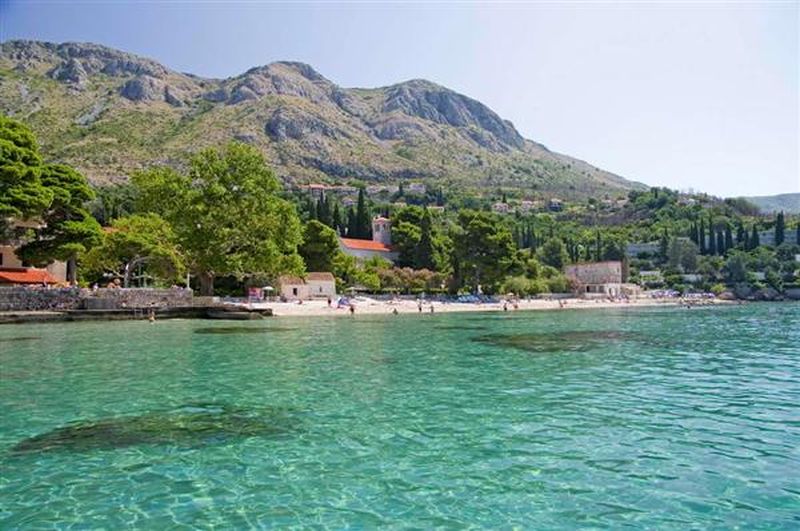
Molunat is a fishing and tourist settlement in the extreme south of the Croatian coastline at the distance of 40 km SE from Dubrovnik and 20 km from the airport and from Cavtat. It is connected by bus lines three times a day. Molunat is located at the distance of 12 nautical miles from Cavtat and 18 nautical miles from Dubrovnik.
Molunat offers private accommodation in family apartment houses, pensions and camping-sites. There is a post office, a slipway with adjacent berths, a shop offering home-grown fruit and vegetables, a restaurant, two coffee shops, the diving club and the fishing cooperative.
The name Molunat has Illyrian and Greek root (molos – the port) referring to ancient ports of Mali and Veliki Molunat protected against bad weather conditions. There are many traces of various archaelogical sites on the sea floor, on the mainland, on its walls and fortifications. The Molunat area has an ecologically preserved nature ecosystem with numerous species of mediterranean medicinal herbs. Its indented coastline is full of coves around the peninsula, the two islets with shallow and clear sea with plenty of fish. Veliki and Mali Škoj and Gora od Molunta are covered by dense macchia, holm-oaks, cypress trees and the umbrella-pines. Due to the favourable land configuration, the climate is mild, mediterranean with hot summers and refreshing mistral blowing in the afternoon hours.
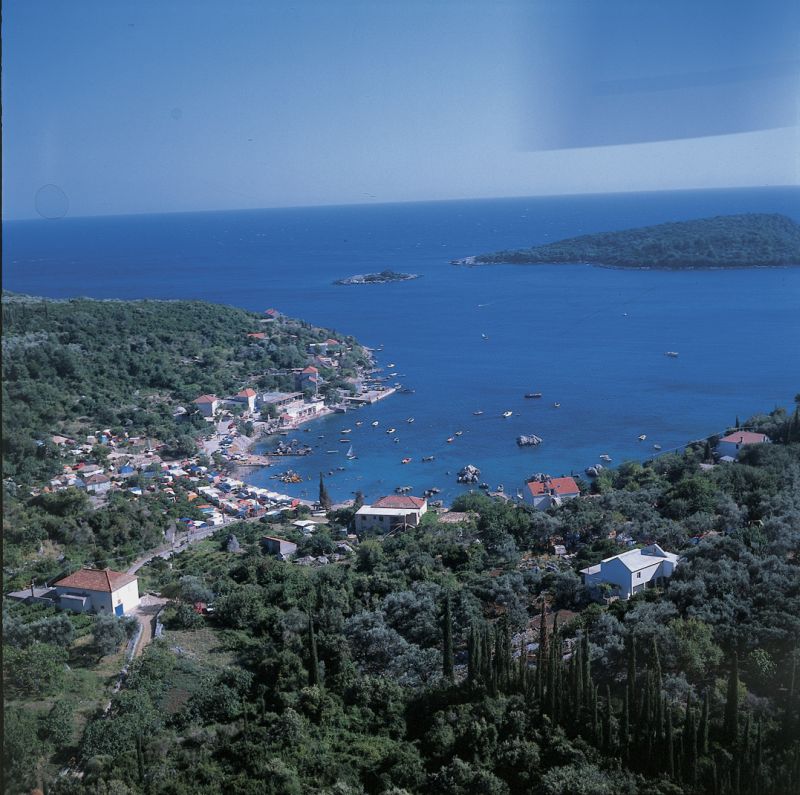
Orašac is a picturesque town with a nice beach, spring water and ancient olive groves. It is well known for its excursion destination restaurants, in particular the ‘Soderini’ castle, once owned by one of the great men of Florence who had to flee his hometown from the Medici family and he found shelter and peace here (16th century).
Today, the castle has been repurposed into a hospitality facility. It has an excellent restaurant and the best equipped auto campground in the Dubrovnik region (running water, post office, health clinic). Accommodation is also available in lovely private homes.
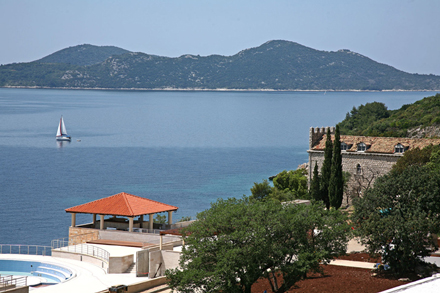
Among the dense cypress and pine woods stretching down to the sandy beaches, this well known summer resort is at the site of the former city of Plateja.
The modern hotel complexes have comfortable hotels, private beaches and the clearest sea you can imagine. Accommodations are also available in private homes and villas.
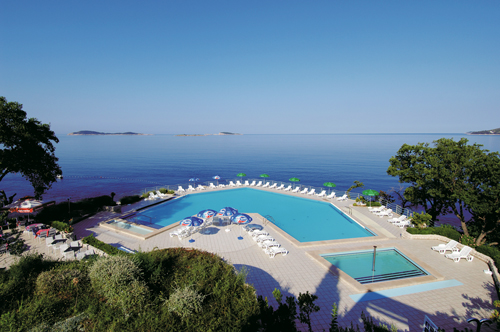
One of the more picturesque towns in the Dubrovnik region and the gentlest bay over 2 kilometres in length, Slano is a must-see on the Adriatic coast with beautiful beaches, dense pine woods and olive groves and a long cultural tradition. There are also many monuments, some dating back to ancient times.
The Franciscan Church of St. Jerome, one of the nicest in the region, is from the 15th century. Also well preserved are the Rector’s Palace from the Dubrovnik Republic era and the summer residence of the well known Ohmučević family, whose members were skilled sailors and writers. The road from Slano leads to Zavala in Herzegovina, the location of the famed ‘Vjetrenica’ karst cave (14 kilometres away).
Slano is the biggest and most important small town and a community centre. Traditionally, the villages in the immediate hinterland are municipally linked to it, forming a constituent part of the Community of the Dubrovnik Coast. Slano is 30 kilometres from the centre of Dubrovnik, situated in a spacious and beautiful bay of the same name, formerly a flooded valley, next to the walled shoreline, opposite the island of Šipan and divided by the Koločep Channel. Slano is attractive due to its numerous pebble beaches, lush vegetation and pleasant climate. It was once on the line-boat route to Dubrovnik and Korčula, and also on local routes to other smaller ports and jetties on the Dubrovnik Coast and on the peninsula of Pelješac (Zaton, Orašac, Trsteno, Doli, Ston, etc.). There are also boat services to the neighbouring islands and ports in the broader area (Šipan, Mljet, etc ).
The bay is protected from the wind, making it an ideal haven and anchorage for ships, boats and yachts. Its economy is based on tourism with accommodation provided by the hotels “Admiral” and “Osmine”, private pensions, apartments, campsites and other venues; also on agriculture (olives, vines, fruit), fishing and other marine activities.
Information Dubrovnik Primorje Tourist Board Trg Ruđera Boškovića 1 20232 Slano [email protected] www.visitslano.com Tel: +385 (0) 20 871236 Fax: +385 (0) 20 871555
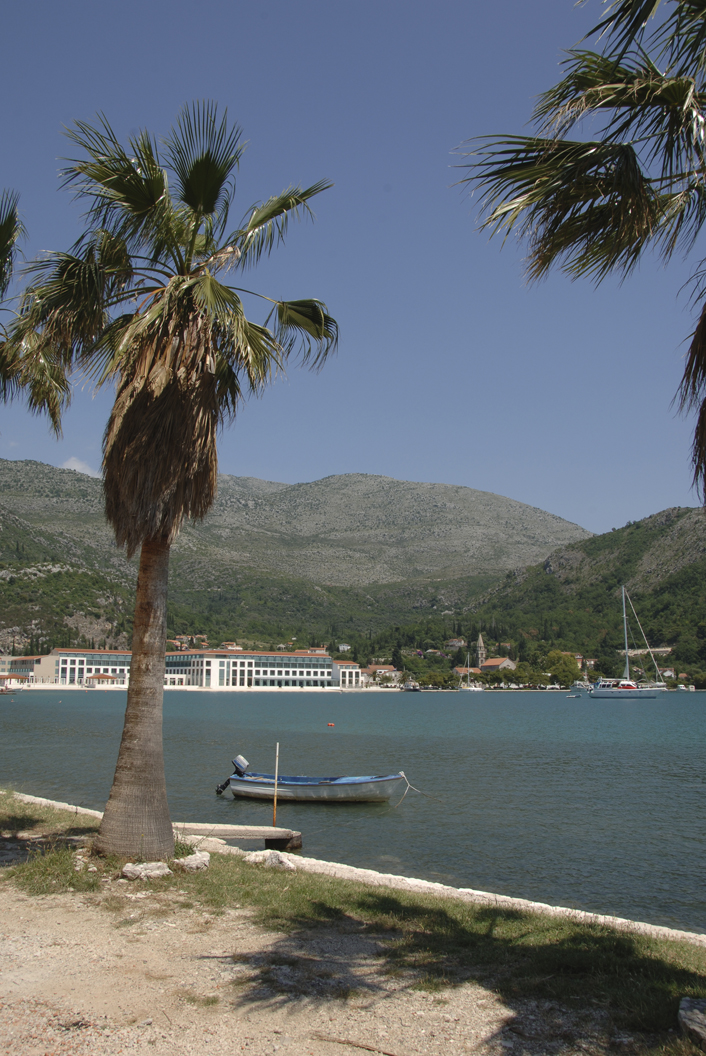
This magical town is situated in the midst of the coastline full of dense Mediterranean vegetation, primarily agave, palms and pines. Its old name was Subbrenum, as long ago, it was situated near the fortress Brenum, where the inhabitants of devastated Epidaurum fled to in the 7th century.
With scores of preserved architecture from olden times and ruins of fortresses, churches and graveyards, Srebreno exudes an atmosphere for explorers and visitors yearning for learning something about local history.
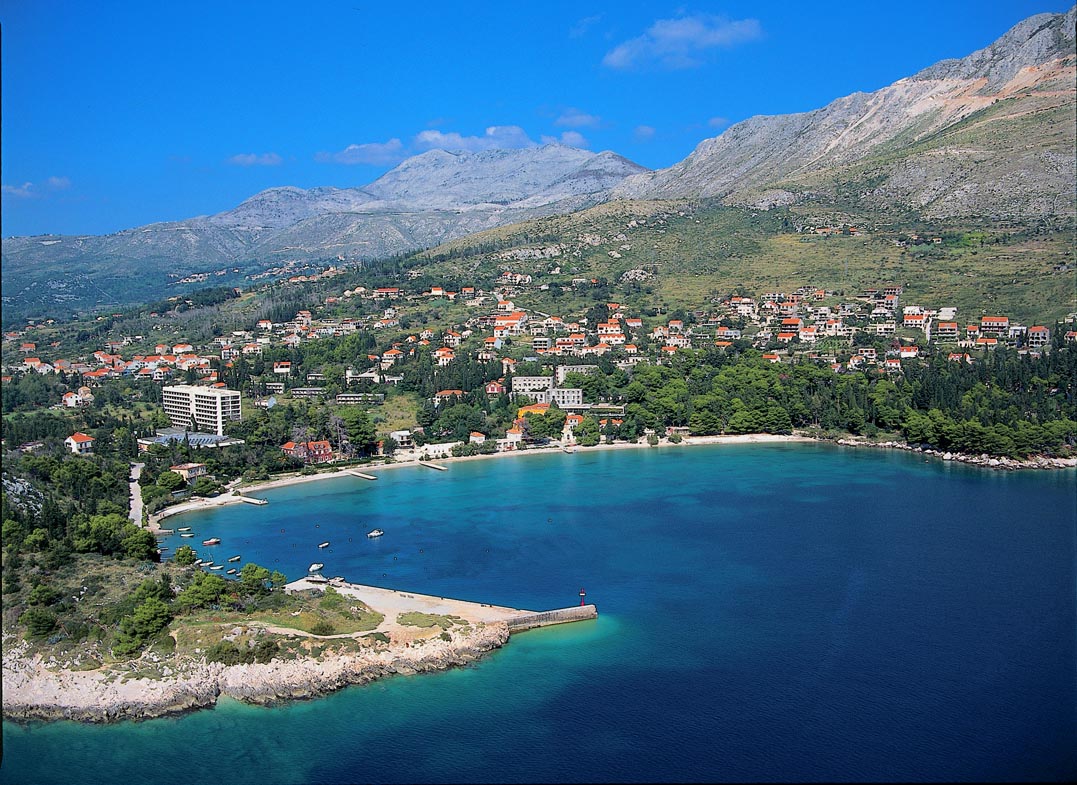
The beauty of nature and the dense vegetation make Trsteno one of the most attractive places to visit in the Dubrovnik region.
Trsteno has a long cultural tradition, and is home to the Gučetić (Gozze) family residence, once one of the most well-known families, who had a castle and estate here. The humble and learned Gučetić family has had a long line of poets and artists; they were also great lovers of nature, and they themselves planned and grew the ‘Arboretum’ of today, one of the oldest Renaissance parks on our coast.
Two gigantic plane-trees, several centuries old, attract the attention of all visitors and passers-by. Accommodation is available in private homes.
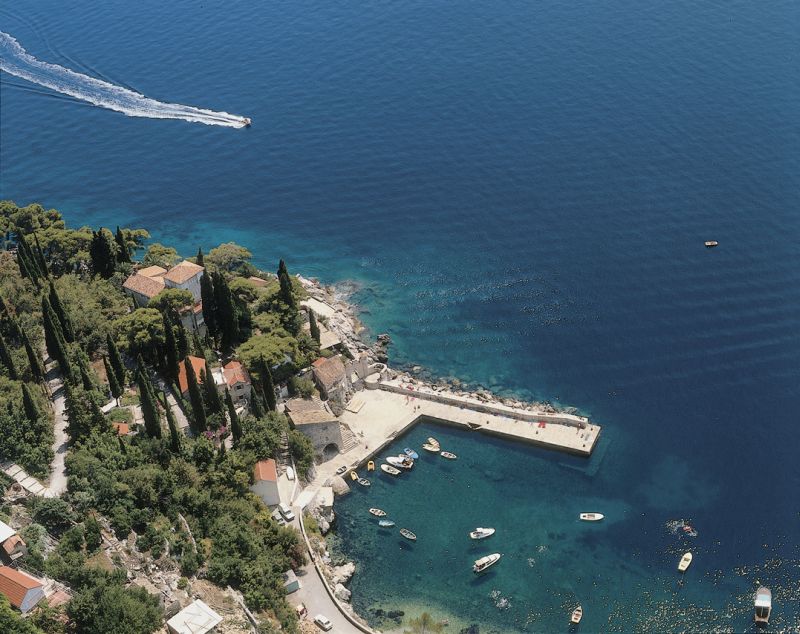
Veliki (Large) and Mali (Small) Zaton are located in a picturesque environment, surrounded by inlets with sandy beaches. Both locations are very pleasant for summer vacations. Accommodations are available both in resorts and private homes. There are several excellent restaurants in the towns.
This lovely Konavle town, with its large hillside stone church, has become an international meeting place for numerous tourists arriving on Sundays to observe traditional folklore performances. Held every Sunday (from March to late October and several times throughout the winter) from under clear blue skies, the musical and dance performances are enjoyed by locals and tourists alike.
Visitors may also visit the “Konavle Homeland Museum”, decorated as a Konavle home, which show beautiful examples of the Konavle folk costume, as well as artefacts and jewellery. Also available are a number of original handmade souvenirs, in particular some Konavle embroidery sold by women wearing traditional folk apparel. The tourist association organizes tourist accommodation in very comfortable homes.
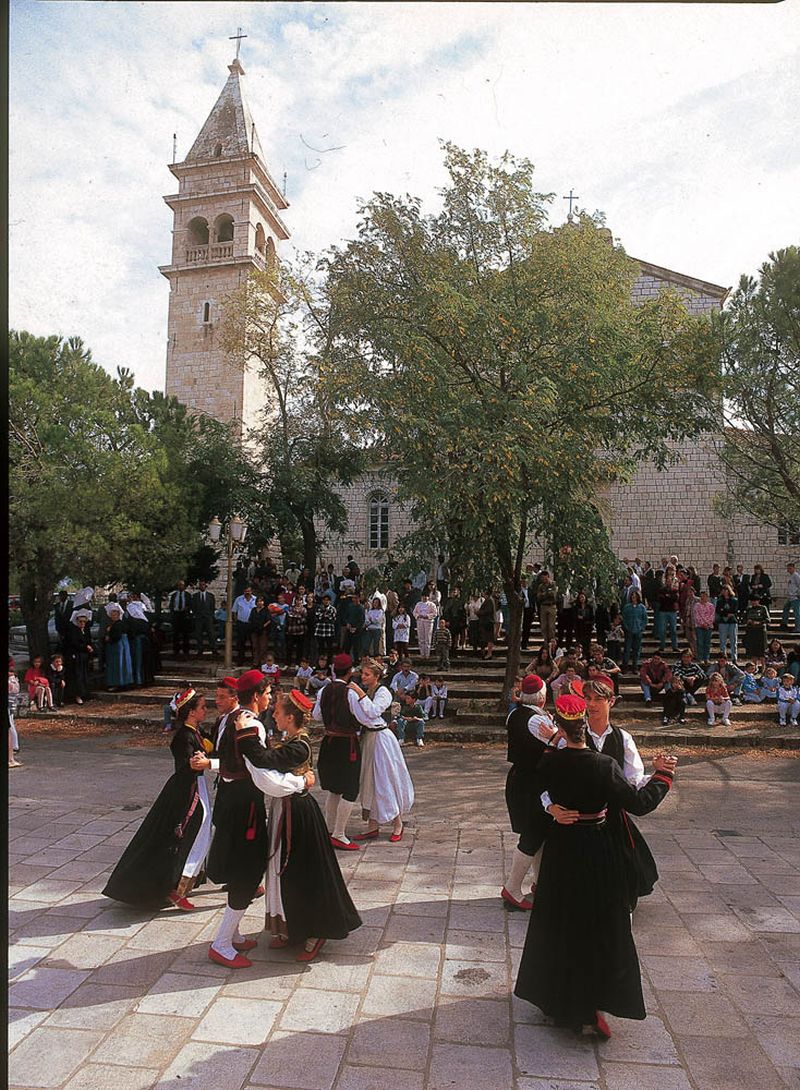
Šipan is the largest island in the Elaphite archipelago, and is situated 17 kilometres from Dubrovnik. It is separated from the mainland by the Koločep Channel; 16.5 km2 (9.1 km long, 2.6 km wide). Between two limestone ridges, the taller (Velji Point, 243 m) on the northeast and the lower on the southwest, there is a valley where olives, prunes, vineyards, carob, almonds, oranges, and citrus fruits are grown. Tourism has a special place on the island. The sunken portions of the valley extend to the northwest to create the Šipanska Luka (Port of Šipan) inlet and to the southeast to create the inlet of Suđurađ. On the southeast extension of the tallest ridges is the small island of Ruda.
The main towns are Šipanska Luka (Luka) and Suđurađ. The island has ferry line connections to Dubrovnik. The island was first mentioned by its current name in 1371. The remains of Roman villas have been discovered in Šipanska Luka. There are numerous architectural monuments from the Middle Ages: the remains of Church of St. Peter on Velji Point (11th century), the Church of St. Ivan with its frescos (11th century, expanded in the 15th century) in Silova Sela, and the pre-Romantic Church of St. Michael (Mihovil) from the 11th century, a Romantic-Gothic house, a Gothic tower, and the Renaissance Church of the Holy Spirit from 1569, all built as part of the Benedictine monastery in Pakljena. During the 15th century on Šipan, summer homes were built by government officials in Dubrovnik.
At Šipanska Luka, there is the late Gothic Church of St. Stephan with a painting of Pantaleone (second half of the 15th century), and the Sorkočević family summer home stands out in particular (15th century). In the 15th century, a Gothic Rector’s Palace was constructed above Šipanska Luka, bearing bifora on its facade (an inscription from 1450 is written above the Gothic courtyard gates).
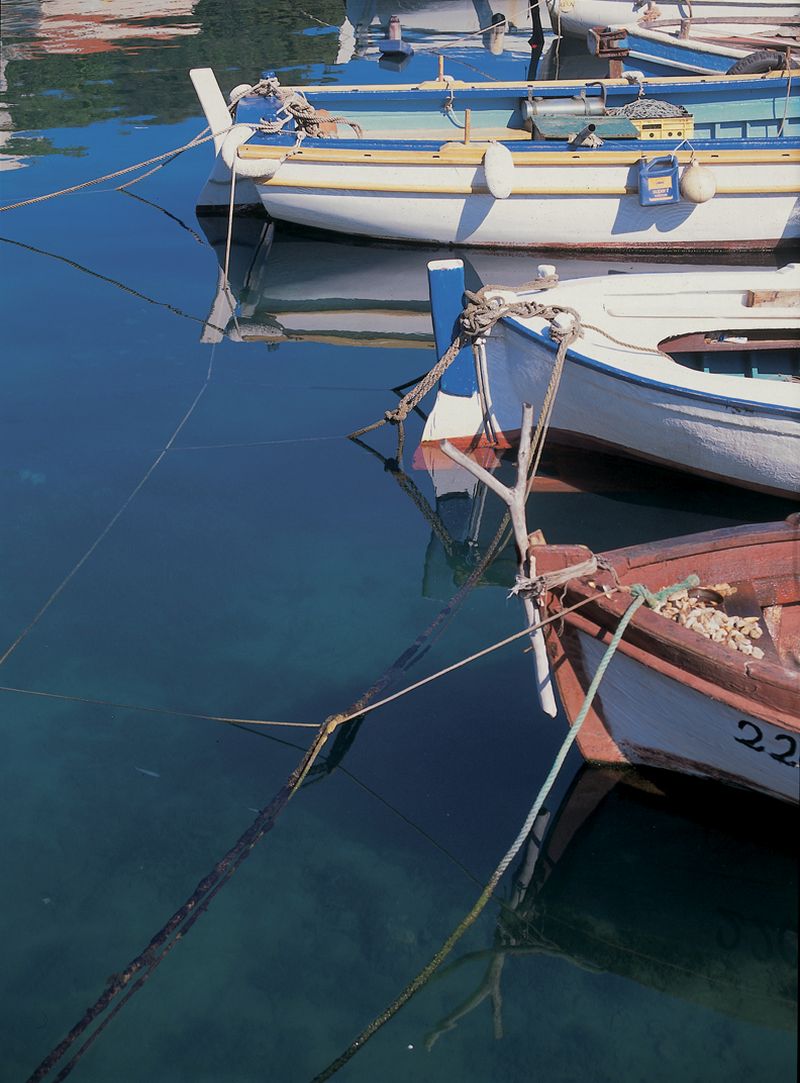
🙌 Awesome, you're subscribed!
Thanks for subscribing! Look out for your first newsletter in your inbox soon!
Get us in your inbox
Sign up to our newsletter for the latest and greatest from your city and beyond
By entering your email address you agree to our Terms of Use and Privacy Policy and consent to receive emails from Time Out about news, events, offers and partner promotions.
- Destinations
- Things to Do
- Restaurants
- Art & Culture
- Music & Nightlife
- Los Angeles

The 51 best things to do in Dubrovnik
Discover the best things to do in Dubrovnik with our insider tips on sights, activities, eating and drinking
Dubrovnik is a one-town tourist industry on its own, with endless things to do all year round. As stunning as the clear blue sea around it, the former centre of the independent Republic of Ragusa invites superlatives and attracts over a million visitors a year. Read on for our insider guide to the best things to do in Dubrovnik .
RECOMMENDED: More great things to do in Dubrovnik RECOMMENDED: T he best Airbnbs in Dubrovnik RECOMMENDED: The best Airbnbs in Croatia
Done something on this list and loved it? Share it with the hashtag #TimeOutDoList and tag @TimeOutEverywhere.
You can also find out more about how Time Out selects the very best things to do all over the world , or take a look at our list of the 50 best things to do in the world right now .
Go on a Game of Thrones tour

What is it? Dubrovnik has served as the location for the fantasy city of King’s Landing ever since the shooting of series two when it replaced Malta as the preferred backdrop for the capital of the Seven Kingdoms.
Why go? It is now difficult to think of ‘Game Of Thrones’ at all without visions of Dubrovnik springing immediately to mind. Find GoT landmarks in our guide . Or, go a walking tour with a savvy local company.
Don't miss: The Inner courtyard of the Rector’s Palace, with its trademark stone staircase, used for the meeting of Daenerys and the Spice King in Qarth in series two, episode five.
Have your own island idyll

What is it? An uninhabited isle on Dubrovnik 's doorstep, Lokrum is an unspoilt isle lush with pines, palms and cypress trees. Its verdant coastline beckons from the hotel windows of Ploče. Dotted with diverse ruins and remnants - medieval, ecclesiastical, Napoleonic, Habsburg - it has long been given over to nature.
Why go? Although taxi boats disgorge tourists from Dubrovnik every half-hour - you can be drinking a beer in Dubrovnik 's main square and be here in 20 minutes - no-one may spend a night here. Ancient superstition links back to the curse placed on Napoleon's troops by the Benedictine monks they removed. Subsequent mishap befell the Habsburgs who turned Lokrum into their own summer pleasure zone - hence the peacocks and botanical gardens.
Don't miss: After a leisurely stroll, you can take a dip in the warm, saltwater lake and drink a beer or cocktail at the Lacroma restaurant, that conveniently overlooks the jetty. The last boats leave around 7 pm , depending on the time of year.
Explore Dubrovnik's old town

What is it? You’ll spend the bulk of your time within Dubrovnik's famed city walls, whose legacy dates back to the 9th century. The walls were built and rebuilt over the centuries as the descructive forces of nature and enemy armies required - today, they surround gleaming stone buildings and the 300-metre-long pedestrian street called Stradun. You'll flit between the city's main gates of Pile and Ploče, cobbled streets dotted with charming boutiques and sea-to-table restaurants.
Why go? To get the essence of Dubrovnik. Cats scatter in from the old harbour as a cacophony of tour guides give their spiels. All is free of traffic until you reach the bus-choked hub outside of the Pile Gate.
Don't miss: The main square and crossing point of Luža, where you’ll find the landmark bell tower (a modern rebuild of the 1444 original); the 1418 Orlando’s Column standing tall in front of the Church of Saint Blaise; the smaller of Onofrio’s fountains, and a statue by Ivan Meštrovi ć of "Dubrovnik's Shakespeare"; playwright Marin Držić.
Dander around Rector's Palace

What is it? The most historic monument in Dubrovnik, the Rector's Palace was rebuilt twice. The first, by Onofrio della Cava of fountain fame, was in Venetian-Gothic style, visible in the window design once you ascend the grand staircase to the Rector's living quarters. Thereafter Florentine Michelozzo Michelozzi was responsible for the loggia façade.
Why go? On the ground floor, either side of a courtyard, are the prison and courtrooms of the Ragusa Republic, and a glittering display of medieval church art. Upstairs, where each Rector resided for his month's stint, is a strange assortment of items: sedan chairs, carriages, magistrates' robes and wigs, portraits of local notables and Ivo Rudenjak's beautifully carved bookcase. One curiosity is the clocks, some set at quarter to six, the time in the evening when Napoleon's troops entered in 1806.
Don't miss: The same ticket is valid for the Archeological Collection, a small but attractive collection of medieval carvings as the Rector's Palace) right by Ploče gate.
Sink a beer at the cliff bars

What is it? Far from the downtown flock, five minutes along a back alley, the bar table of your dreams is set on one of two panoramic terraces atop a rocky sea-view promontory propping up the city walls: Bard Bar and Buža II .
Why go? Find your niche, gawp at the awesome sunset and sip a by the sea beer. Buža, meaning 'hole in the wall', suits boozers, swimmers and sunbathers alike. Of the two, Bard Bar is the most basic but perhaps the most enjoyable - maybe because of easy access to and from the sea, via metal steps fixed to the rocks.
Don't miss: From the cathedral, walk down Ilije Sarake as far as the dining destination of the Azur . Diagonally opposite is a doorway; negotiate the stone staircase and behold! At differing levels according to the rock formation, tables appear - as does a bar counter and, occasionally, films projected onto the cliff face.
Walk the City Walls

What is it? The easiest and most popular itinerary for visitors to Dubrovnik is the stroll around its fortifications. As you arrive in the old town through the Pile Gate, the main entrance and ticket office to the City Walls is right there. You can set your own pace, take an hour or an afternoon. Audio-guides in English are sold at the main entrance but most visitors are perfectly content with random vistas of red-tiled roofs or, better still, the panoramic blue of the Adriatic, interspersed with pristine white stones jutting into it down below from varying angles.
Why go? It allows the newcomer to get their bearings and gain an appreciation of the scale of this intricate jewel, and the skill of those who designed and constructed it. You also get breathing space from the high-season masses below. This is an elevated promenade and history lesson in one.
Don't miss : A couple of cafés provide pit stops at the harbour end, where there's also an open terrace for that eye-popping backdrop, ideal for holiday snaps. Dubrovnik Walks is an agency offering walking tours of the City Walls run by locals.
Uncover communist history

What is it? Croatia was part of the communist-ruled Yugoslav federation from 1945 until 1991. Dubrovnik's The Red History Museum offers a look into that period of Croatian history.
Why go? A private project initiated by a group of local friends, it offers decent-sized dollops of historical chronology alongside an impressive haul of everyday artifacts. Although the display kicks off with a hammer-and-sickle-spattered history of communism as an ideology, the accent is on the more colourful aspects of the communist rule, and its attempts to design a lifestyle that combined equality and order with consumerism and cultural freedom. Elsewhere, the display is rich in revealing detail: a wardrobe full of denim clothes, pop records, racy glamour magazines. Much of the exhibition is interactive in the sense that you can sit on original couches, leaf through books, or activate sound and visuals using your smartphone.
Don't miss: There’s a “darkroom” that covers the regime’s attitude to dissent, including docu-clips of Goli otok, the island where pro-Soviet communists were imprisoned and tortured after President Tito’s break with Stalin in 1948.
Eat a Michelin-starred meal at 360

What is it ? At this top-drawer setting, you get top-drawer cuisine of 360 , perhaps even the best in Croatia.
Why go? Under expert gastronomic stewardship, you can expect meticulously sourced food, painstakingly created and immaculately presented - along with an UNESCO-designated setting, atop the old port, second to none. Ingredients to create dishes of mainly Mediterranean ilk are flown in fresh from around the world or selected from markets in and around town. Desserts provide an honourable finale to one of the finest meals you'll have all year. The wine cellar comprises 6,000 bottles.
Don't miss: Beg for a booth in the gun chambers.
Take the cablecar to Srđ

What is it? The gleaming orange cablecar you see scaling the steep incline high up over the old town is both a tourist attraction and a piece of history. Mount Srđ has figured in key moments in the city's history - as a frontier against the Turks, as a Napoleonic fort and, during the Yugoslav Wars in 1991.
Why go? It's pricy, but this matters little as you rise up in no time, the old town nearly vanishing as a panorama of Adriatic blue dominates the horizon. The cable car is the perfect cherry on top to complete your visit to one of the world's most beautiful cities.
Don't miss: At the cablecar station, the Panorama restaurant offers the same view, along with seafood platters, cocktails and fine local wines.
Visit a medieval pharmacy

What is it? Of all the old town treasures, the Franciscan Monastery and its Old Pharmacy Museum are the real gems. Don't be put off by the crowds - try and go at the end of the day. In a narrow passageway dividing the monastery from the Church of Our Saviour is the entrance to the famous Old Pharmacy, still in operation after 700 years, and beautiful cloisters leading to a peaceful, petite inner garden courtyard dotted with orange trees.
Why go? One of the oldest in Europe, the pharmacy is still active. Locals totter in for their regular prescriptions as tourists peruse the jars and vessels from yesteryear. Most local sources give the date of the pharmacy's foundation as 1317 - all records were burned in the fire of 1667. Many of the knick-knacks you see date from the 15th century.
Don't miss: Also on display through the back are disturbingly large grinders and other implements, giving a perspective to our moaning about modern health systems.
Nab the best table at Nautika

What is it? Calling itself ‘Dubrovnik’s finest restaurant’, Nautika is certainly the most prestigious, the kind of place that is the automatic choice whenever the Pope might be in town.
Why go? It’s not only the setting, overlooking Lovrijenac fortress and the Adriatic (reserve a panoramic table if you can), or the starched white-tablecloth formality – it’s the cuisine of long-term head chef Mario Bunda, who insists on fresh, locally sourced ingredients.
Don't miss: The five-and seven-course menus were made for holiday blow-outs.
Watch a film below the stars

What is it? An outdoor cinema nestled in the city walls, open all summer.
Why go? Owned by the city of Dubrovnik, Jadran cinema screens a pleasantly varied mix of indie films and international blockbusters - always in English, with Croatian subs.
Don't miss : The site is also used as a stage for semi-impromptu performances. The Lindo folklore ensemble put on a show twice a week.
Catch outdoor jazz at the Troubadour

What is it? On any given night for six months of the year, crowds flock to this intimate enclosed square in the heart of the old town to hear live music and soak up the atmosphere. OK, these days the most famous bar in Dubrovnik might look like a billboard for T-Mobile and beer prices are just silly, if you didn't know this was the lovely old Troubadour, you wouldn't touch it with a bargepole. But lovely old Troubador it is, and visit it you must.
Why go? Formerly run by Marko, a member of the renowned 1960s group the Dubrovački Trubadori, this is a touchstone for artists, musicians and entertainers of his beat generation.
Don't miss: On quieter afternoons or in winter, try and get a seat in the tiny interior and see how Dubrovnik looked in the pre-boom days.
Appreciate recent history

What is it? New Zealander Wade Goddard came to the Dubrovnik as a photographer during the Siege in the early 1990s - and stayed. Affected by what he saw and keen to broaden the public's understanding of what happens in wartime, in 2003 he opened War Photo Limited .
Why go? The gallery could have easily limited itself to Goddard's experiences in Croatia, but he quickly expanded its remit to exhibit works by leading exponents of this brave art from flashpoints around the world. The first floor houses these hard-hitting images in regularly changing exhibitions, while above you can see what was happening here in the 1990s. What today seems completely serene was then raging with bombardment and fires. Works are sold as limited-edition prints. Comments in the visitors' book sum up the venue nicely: 'It moved me beyond words,' is one typical entry.
Sample craft beer in a Dubrovnik brewery

What is it? Craft beer may be last week’s news in much of Europe but it’s still pretty revolutionary in Dubrovnik. In three short years, local boutique brewers DBC have transformed the local drinking scene, persuading the best of the old town bars to make more of an effort when it comes to beer, and more recently becoming a destination bar in their own right.
Why go? Revitalizing a forgotten corner of the harbourside suburb of Gruž, DBC occupies a utilitarian industrial space with glistening vats in the background and a makeshift bar out front. The outdoor terrace consists of a few up-ended barrels in a parking lot. One of the best things about this place is the social mix it attracts: it’s in part of the city that’s not swamped by tourists and gets a lot of locals who want an alternative to drinking in the old town.
Don't miss: Four extremely palatable brews are available on tap - Goa IPA, Maestral lager, Fortunal Pale Ale and Grego stout – alongside seasonal specials and guest beers.
Find your ideal beach

What is it? It's what you've come for, so dive in! Dubrovnik offers a handsome array of local beaches.
Why go? Dubrovnik 's city beach, Banje , is just a short walk from the Ploče Gate. It's good for kids, with showers, deckchairs and sun loungers for hire, plus jet skis and inflatables.
Don't miss: Banje is not for locals. They head for Sveti Jakov , down the coast past the Villa Dubrovni k , a 20-minute walk along quiet, tree-lined Vlaha Bukovca. Buses Nos.5 and 8 run most of the way from north of the old town. Although this is everyone's favourite beach, it's rarely crowded. The sun stays warm until late in the evening, bathing the old town in a golden light. It's part shingle, part pebble, with showers, sunshades, and a bar and restaurant at beach level. It is accessed via a long stairway you'll be reluctant to climb back up.
Go sea kayaking

What is it? Dubrovnik 's signature outdoor activity for visitors, sea kayaking is organised for complete beginners as a half-day jaunt with lunch on Lokrum island thrown in.
Why go? You only need to turn up, go through a few paddling techniques in shallow, protected waters, and the Adriatic is yours. Sea kayaks are more comfortable than conventional kayaks. Their length, with extra cargo capacity, allows the kayak to move smoother and easier in a straight line. Experienced kayakers have circumnavigated Ireland and Australia in one. For lesser mortals, the calm waters from the Pile Gate to the verdant, car-free island of Lokrum is, under guidance, a doddle.
Don't miss: Some companies also offer sunset paddles, with wine and cheese thrown in.
Drink like a local

What is it? The only bar in a street filled with restaurants, seconds away from Stradun.
Why go? Buzz has won over a local crowd thanks to its good vibe, pleasant interior of colourful chairs and witty decor, craft beers such as Istria’s San Servolo – and reasonable prices, not an epithet you could grant to its neighbouring restaurants.
Don't miss: There’s organic lemonades, cocktails, whiskies and cognacs – and carefully selected rock, pop and jazz.
Browse the market in the old town

What is it? The oldest market in Dubrovnik is located in the prominent, baroque square of Gundulićeva poljana . Centrepiecing it is a statue of 17th-century poet Ivan Gundulić, who surveys the piles of fruit, vegetables and dried delights. A short stroll away by the old harbour, a modest fish market also does good trade. Saturday is everyone's weekly shop, so get here early.
Why go? To soak up the buzz of the marketplace. Every day at noon , as stallholders approach the last working hour, and watched by equally punctual, attentive cats, an official brings a bucket of corn to feed the pigeons sat patiently on the nearby roofs. Suddenly, scores of birds fill the sky. This is the signal for locals to slope off slowly and congregate over coffee at one of the many terrace cafés.
Don't miss: Some traders offer seasonal cheese, olives, honey and Mediterranean spices. Others sell home-made loza and travarica , strong, flavoured brandy, the type you can't buy elsewhere. In one corner, by the Rector's Palace , stalls sell lavender and cantarion oils, ideal for aromatherapy, and sachets of dried flowers.
Experience Dubrovnik Summer Festival

What is it? Croatia's biggest cultural bash is the Dubrovnik Summer Festival , 47 days and nights of classical music, theatre, opera and dance performances (mainly) around the old town. Something akin to Edinburgh without the fringe, it has been staging high-brow culture in Dubrovnik for more than 60 years.
Why go? Shows bring Dubrovnik 's historic jewels to life. Shakespeare is performed open-air at the Lovrijenac fortress, orchestras play at the Sponza Palace , piano soloists at the Cathedral , ballet takes place after dark outside St Blaise's Church and all kinds of events have the moonlit City Walls as a backdrop. In all, some 70 venues are used - even Lokrum island. Book ahead for the biggest events - for others you can pay on the door. For the most prestigious events, smart dress, although not obligatory, is expected.
Don't miss: Also remember that there will be a number of free performances around the streets of the old town throughout festival time - you needn't have to pay through the nose or pay at all, to get swept up in the whole event.
Discover your own cave beach

What is it? Close to the centre of Dubrovnik yet only known to locals, even closer to the grandiose Grand Villa Argentina above it yet never visited by hotel guests, the hidden cave of Betina špilja is only accessible from the sea. A perfect shelter and picnic spot in one, Betina špilja comprises a large cave entrance and a carpet of fine white pebbles. This spacious empty beach washed by a crystal-clear Adriatic a few steps away.
Why go? There are no sun loungers, no showers, no amenities whatsoever, just you, the beach and the sea. To reach it, head down to Dubrovnik’s old port, ask a local to boat you over, agree on a fee, and pick-up time. Don’t forget about the pick-up time – if he doesn’t come, you may be here for a while.
Gawp at sacred human remnants

What is it? The original church, allegedly funded by Richard the Lionheart in recognition of the local hospitality when shipwrecked on Lokrum in the 1190s, was lost to the 1667 earthquake. In its place was built a somewhat bland, baroque affair, free but unenticing to walk around.
Why go? The main draw is the treasury at one end, a somewhat grotesque collection of holy relics. The arm, skull and lower leg of patron St Blaise are kept in jewel-encrusted casings, another box contains one of Christ's nappies, and wood from the Holy Cross is incorporated into a finely crafted crucifix from the 16th century.
Don't miss: Perhaps the most bizarre artefact is the creepy dish and jug designed as a gift for the Hungarian King Mátyás Corvinus, who died before he could receive it.
Tuck into Asian fusion at Azur

What is it? This superbly located eatery sits by the entrance of Buža II, in the heart of Dubrovnik’s historic centre but within easy reach of the sea.
Why go? In Azur , you can tuck into a reasonably priced, Med- or Asian-influenced cuisine before an afternoon’s sunbathing, or enjoy a nightcap overlooking the waves.
Don't miss: Starters include local mussels in beer butter and chilli and Dalmatian tom yum soup.
Catch a top DJ at Club Culture Revelin

What is it? This 16th-century fortress at the eastern end of Dubrovnik 's old town has become the place to go after drinking-up time has been called in the town centre's other bars. Luckily, Dubrovnik 's military architects had the foresight to construct what is an ideal venue for a club: the stark interior of bare stone blocks, complete with arched aisle spaces and lofty barreled roofs, provide the perfect backdrop for the state-of-the-art light-show. What Renaissance Ragusans might have made of the lithe females dancing in cages is another question entirely.
Why go? With an elongated bar, large dancefloor and plenty of surrounding nooks and crannies, Revelin is the kind of place that can cater for large numbers of people without making them feel pushed around.
Don't miss: A lot of leading Croatian pop and rock acts perform here throughout the year.
Explore Konavle

What is it? South of Dubrovnik, fringing Croatia’s border with Montenegro, the steep hills and deep valleys of Konavle offers the perfect first step in discovering Dubrovnik-Neretva County.
Why go? Perfect and panoramic – at various intervals, sweeping vistas of Dubrovnik come into view, giving you an idea of just how precious the historic city is, squeezed in between the sea and this relatively barren landscape.
Don't miss: Occasional traditional stone houses dot the terrain, some, such as Konavoski Dvori in Velji Do, surrounded by uninterrupted nature. Veal is the speciality, slow-cooked under a bell-shaped cover heated by hot-coals, the so-called peka method. In spring, a newly opened cycle and hiking path comes into its own, lined with signposts and information boards, part of an area-wide project to promote sustainable tourism.
Dine classically at Proto

What is it? The Michelin-recommended Proto claims a tradition dating back to 1886, and it was here that Edward VIII entertained Wallis Simpson in the 1930s.
Why go? Executive Chef Boško Lonac oversees squid and lobster in simple, traditional but superbly balanced sauces as well as fresh shellfish from Ston up the coast and popular local meat dishes. Choose between restrained elegance in the 1930s-influenced dining room or the recommended first-floor terrace with great old town views.
Don't miss: You can spend an enjoyable hour over the fish platter for two, and the extensive wine list covers just about every quality wine that Croatia has to offer.
Sip Croatia's finest wines

What is it? Dubrovnik's first wine bar is presided over by Australian-Croatian Sasha and his friendly and informative team. D'Vino manages to stock more than 100 varieties, 76 available by the glass.
Why go? Every decent Istrian, Slavonian and Dalmatian label is here, including Grgić Plavac Mali and Zlatan Plavac. The house wine begins at 25kn and the venue lays on wine tours.
Don't miss: Savoury meat-and-cheese platters are tailor-made to complement the wine.
Drink like a VIP

What is it? For those seeking a spot of luxury, Dubrovnik has a wealth of chic beachside bars with VIP sections and the facilities to go with them. Copacabana Beach is a lavish hangout with kingsize loungers and swanky enough to have fashionistas sipping cocktails on its terrace.
Why go? Studded with luxury white loungers and deckchairs, there are heaps going on to keep you amused. Hedonists can even enjoy table service of cocktails to your sunlounger.
Don't miss: The sunset boat trip comes recommended, where you paddle out to see while Dubrovnik is basked in the golden light of sundown.
Explore an abandoned luxury hotel

What is it? At a prime spot on a headland overlooking the Adriatic and Dubrovnik’s iconic old town in the distance, the Hotel Belvedere is an easy bus ride or 25-minute walk from the centre.
Why go? Here in 1985, a luxury hotel was built, on the same side of the city as the airport, where guests could relax around the pool, dine and drink at several bars and restaurants, and party afterwards in the nightclub. It only lasted six years, before war broke out, everyone was evacuated and the hotel was bombed. Unlike the old town, it was never repaired and remodelled. In the early 2000s, it was used for DJ parties. A decade later, it served as one of the many sets around town for hit TV series ‘Game Of Thrones’. Recently, a Russian entrepreneur bought it, but its renovation will take years. In the meantime, though fenced off, the hotel is worth exploration.
Throw some shapes at Lazareti

What is it? An arts complex in a former quarantine barracks in Napoleon’s time, Lazareti is the city’s best place to party.
Why go? While the programme is hit and miss, when it hits – top-notch Croatian DJs or live act – it hits hard. And the location cannot be gainsaid, a rambling complex facing the Adriatic, a five-minute walk from the Ploče Gate in the old town. DJs spin in the main building at sunken level, while revellers are free to roam around the courtyards where Napoleon’s soldiers would have been recovering from war wounds.
Don't miss: Take your drinks out and imbibe under starry skies.
Appreciate modern art

What is it? If you’re an art lover, you might have heard about the impoverished little galleries around the rue Laffitte in Paris a century ago, where Cezannes and Renoirs could be had for a pittance. Today, the world is different: galleries like that are scattered around Europe. One of the most imaginative and exciting in this region is the Dubrovnik Contemporary Gallery. It’s a pleasant 15-minute stroll overlooking the beach from just about anywhere in Dubrovnik.
Why go? It's owners warn that visitors may be awestruck, morally offended, or (most likely) enchanted, but certainly, you won’t be bored.
Don't miss: This is an artist-centred spot, so don’t be surprised if you’re invited to sit down and chat over coffee with gallery proprietor Selma Hafizović, a Croatian-American whose paintings have won acclaim in London and New York, or an avant-garde artist from Tallinn or Berlin who exhibits at the gallery and is passing through town.
Hit the waves on a boat trip

What is it? Dubrovnik may be one of the hottest destinations in Europe at the moment, but there’s no getting around the fact that, in peak season, the city really suffers from its popularity as a cruise port. The solution? Explore the city's landmarks and surrounding coastline by boat.
Why go? You can hire a speedboat and escape to the Bowa Restaurant on Šipan Island , hop along the Elaphati islands and explore the Koločep's Blue Caves, illuminated inside with an electric, slightly eerie aqua light.

Swim while dinner is cooking

What is it? In the fishing village of Zaton Mali 7km north-west of town, this old boathouse was converted into a restaurant by Niko Gverović in 1966.
Why go? Beautifully located and family-run - Niko Jr runs it with his mother, Mira, producing the speciality black risotto Orsan, four kinds of shells and shrimps sautéed in wine and lemon and mixed with rice soaked in black squid ink.
Don't miss: It has its own beach (and shower), so you can swim while dinner is cooking.
Sip cocktails at Azur Bar

What is it? Bar by Azur is a promising addition to Dubrovnik’s rather staid cocktail scene – here, concoctions are made with real skill using homemade syrups.
Why go? The slick bar area is comfortably chic, and the buzz extends to the capacious sun-drenched terraces. The drinks menu features a wealth of premium liquors and domestic craft beers.
Don't miss: Nibbles of fresh mozzarella with spicy gremolata and bacon with grana padano quesadillas provide excellent replenishment.
Get messy at Ludwig

What is it? The haunt of the pierced and the tattoed far from the plethora of mainstream venues around the old town, Ludwig is a grunge bar in a Stradun side street is a rare venue that's appealing to the under-30s.
Why go? You won't see any sandal-wearing, middle-aged tourists lingering over a pint at Ludwig - some might look in, then immediately head elsewhere. Its soundtrack hardly wavers from guitar-based rock, Ludwig has decorated its walls with a seemingly random mosaic of posters, book covers and pictures torn from magazines (Gogol, Mogwai, Kill Bill and Hendrix all get a decorative look-in). For all this, it's the hard-living black-clad drinkers hunched around the counter that make the place.
Explore Dubrovnik's bistro culture

What is it? Otto represents a new breed of bistro in Dubrovnik. Set just outside the old town, overlooking the yachts on Gruz Bay, this is Dubrovnik at its most contemporary.
Why go? Classic fish and seafood dishes are given the gastro-treatment, beautifully garnished with fancy purees and sides. Prices are beyond reasonable and even less than what you’d pay for a standard fish dinner in one of the central tourist traps.
Don't miss: The desserts are layered, complex works of art.
Head to a haunted (and abandoned) island

What is it? Nobody goes to Daksa. There’s no boat schedule, no water taxis, no nothing. In fact, locals would rather not go there. And there’s a reason for that. Those lucky enough to be staying at the high-end Dubrovnik President Hotel may look out its panoramic windows and see a verdant idyll of surrounding Adriatic azure – but Daksa has long been left to decay.
Why go? Once occupied by monks, Daksa was where Tito’s war-time Partisans, who swept through Dubrovnik in 1944, took the Fascist sympathisers they had rounded up. After their mass execution, no graves were found. For decades, this chilling site was off-limits to the general public. A discovery of remains in 2009 led to a reburial and memorial ceremony. Today, you can pay a local to take you over in his boat from Dubrovnik and have the whole island to yourselves. Arrange a time for him to pick you up – you wouldn’t want to overnight here.
Take in the scents at Trsteno Arboteretum

What is it? One of the many locations used in and around the city for the hit TV series ‘Game of Thrones’ – the Arboretum doubling up as the palace gardens of the Red Keep – this historic and natural attraction dates back to 1492 at least.
Why go? Set around the villa that once belonged to the Gozze family, the graceful arboretum is the product of the Renaissance era, when sea captains would bring back rare and exotic seeds and plants from their travels during the Age of Discoveries.
Don't miss: The grounds run down to the sea, encompassing a grotto and a Baroque fountain.
Snag a sassy souvenir

What is it? Stride down the main street of Stradun and all you see are tacky souvenir shops selling overpriced, Asian-made toot. Turn a corner from the old port to steeply rising Sv Dominika, towards the Ploce Gate, and you come across this modest doorway. Dubrovačka kuća proffers high-quality gifts at affordable prices.
Why go? The tasteful ceramics and glassware you see are the result of a link-up with the Museum of Arts & Crafts in Zagreb, while local products include wines, olive oils, bath salts, sweets, and flavoured spirits. The English-speaking lady behind the counter offers useful advice without being pushy, and you come away pleased to have done your duty as a tourist without the feeling that you've been fleeced.
Explore the Dominican Monastery

What is it? Between the Sponza Palace and the Ploče Gate, this monastery is best known for its late Gothic cloisters and late 15th-century paintings of the Dubrovnik School in the museum – in particular, masterpieces by Nikola Božidarević, including his Our Lady with the Saints.
Why go? On the walls of the monastery church are a beautiful wooden crucifix by Paolo Veneziano from 1358 and a painting by renowned fin-de-siècle artist Vlaho Bukovac from Cavtat, The Miracle of St Dominic.
Sip artisan coffee at Cogito

What is it? Reinventing the idea of the terrace café as a medieval-alleyway bar, the main Dubrovnik outlet of the Zagreb-based boutique coffee roasters peeps out invitingly from beneath one of the broad archways that span the cobbles in this quarter of the town.
Why go? With a counter inside and a couple of wooden benches outside, Cogito is the ideal place for informal mingling or picking up a takeaway. As you might expect from a coffee specialist they spread their net rather wider than the average Croatian kafić, with trained baristas serving up smooth espressos as well as grappling with the demands of filter, Chemex and cold-brew coffees.
Don't miss: Delectable tubs of artisan ice cream from Samobor’s Medenko fill the counter-side freezer cabinet. Another branch of Cogito is located just outside the Ploče Gate at Hvarska 2.
Shop for luxury fashion at Maria Store

What is it? Strategically located at the Ploče Gate, the Maria Store is one of the few places in Croatia where you can find a battery of major international names such as Givenchy, Lanvin, Valentino, Saint Lauren and Stella McCartney, all laid out in a light, relaxing space designed by Italian architect Marco Bonelli.
Why go? For the sake of fashion, darling. Prices to match the quality and atmosphere on offer. Staff are approachable, though, whatever you're looking for.
Take the cake

What is it? The latest talk of the town when it comes to cakes, Mala Truba (“Blow Your Little Trumpet” might be a creative translation) is located up an alley behind Mercante, a shopping mall much used by locals but in which tourists rarely tread.
Why go? Imaginative, own-recipe cheesecakes, tortes and biscuits fill a small glass counter; there’s a tiny ledge outside where you can stand and scoff them. Signature treats include Fjorin (20kn), a soft succulent almond cake; and Orlandina (24kn), a delectable finger of raspberry mousse atop a crunchy chocolatey base. Sweets apart, Mala
Don't miss: Truba also does a superb sour-dough loaf (though beware it sells out by lunchtime) and occasional savoury specials such as soparnik (the delicious garlic-and-swiss chard pie indigenous to Dalmatia).
Browse the archives

What is it? The attractive, 16th-century former customs house and Ragusa mint are used to house the extensive state archives.
Why go? Several rooms of the arcaded ground floor courtyard are used to display photocopies of the archives' most treasured historical documents.
Don't miss: A small room opposite the ticket office holds the Memorial Room of the Dubrovnik Defenders. Covering the 12 months from October 1991 (although keen to point out that isolated attacks continued until the summer of 1995), the exhibition contains portraits of the 300 defenders and civilians who died during the siege and the tattered remnant of the Croatian flag that flew atop strategic Mount Srđ.
Eat fish straight off the boat

What is it? Porat makes the most of locally sourced flavours. Located on the busy Gruž Harbour, fishing boats dock up to the restaurant each night with a fresh bounty of seafood grilled and prepared on your table within the hour.
Why go? Local produce from the fisherman or the farmer’s market forms the central theme at Porat. Majoring in fish and seafood, there are few cracking meat dishes and a vegetarian set menu - the humble Brodet (fish stew) is mouth-wateringly good. Dishes are delivered quickly and served creatively by friendly staff. The neutral interior is modern but not pretentiously so - making it a cosy and welcoming setting for a casual lunch or late-night fish supper.
Don't miss: This is casual Adriatic dining at its best. Set menus are fantastic value for money and go from as little as €20 per person.
Sample Adriatic sushi

What is it? Freshly farmed shellfish from the famed oyster beds of Mali Ston are the star attraction at Bota , an open-air bar with high stools and high tables, beautifully situated on a raised terrace behind the cathedral.
Why go? The oysters are served fresh, fried in tempura, or as a key ingredient in a sushi roll. There is also a full menu of all other forms of sushi, with fishy Adriatic ingredients well to the fore and some creative Adriatic-Japanese combinations.
Don't miss: Fish carpaccios, tuna tartar and tempura-fried shrimps round out the kind of genuinely fascinating menu that demands repeated sampling.
Ogle fish on a glass-bottomed boat

Okay, so you won’t beat the crowds by getting on one of these. The Old City's port has endless identikit stalls offering glass-bottom boat trips and the ethos seems to be a simple one: stack the punters high. In their favour, they're quick, at just 45 minutes to an hour, and therefore worth it if you want to squeeze a boat trip into your holiday but don't want to make a day of it. The water is remarkably clear around Dubrovnik and there's plenty of marine life to be seen – that said, you’ll see much more if you spend the time snorkelling instead.
Take in a century of art

What is it? Just a short walk away from the old town, the wonderful former Banac Mansion is now a gallery that contains four floors and nine rooms of exhibition space, with a permanent collection that includes many works by Cavtat-born Vlaho Bukovac, alongside challenging contemporary shows.
Why go? There is usually at least one major summer exhibition featuring a leading Croatian or international artist, and frequent contemporary-art happenings.
Eat breakfast on the terrace of a palace

What is it? At the waterfront of Gruz Bay and an easy stroll to the fine-shingle beaches of Lapad, this five-star boutique hotel is set in the converted Zamanje family villa (1573). The terracotta-roofed mansion features an attractive outdoor pool with a bar beside it.
Why go? Breakfast is made to order, prepared freshly and served to guests on the hotel patio, an enclosed stone courtyard studded with Mediterranean potted plants.
Don't miss: The Kazbek restaurant offers genuinely gourmet food with caught-that-day fish and seafood alongside Adriatic specialities served beneath a shaded canopy. Breakfast reservations are also possible for visitors - check with the hotel for availability.
Shop for Croatian design classics

What is it? A showroom-sized shop devoted to Croatian-made artisan and designer products, Life According to Kawa is just what you need after being bored to desperation by the mugs, fridge magnets and plastic dragons of the regular gift shops.
Why go? It covers the whole gamut of local fashion accessories, domestic design and deli food; a broad slew of price ranges ensuring that there’s something to suit all aspirations. To give you some idea of the range: there are Sapunoteka soaps and cosmetics made from local plants and herbs; gourmet salt from the Pag salt pans; coffee beans from Croatian roasters Cogito; teas by Rijeka-based blenders Samovar; sunglasses by Sherrif & Cherry; earrings and necklaces by Iva Stojković; Levin-Coco’s shirts and bags; and Pepiere’s slim backpacks made from woven cornstalks and leather flaps.
Don't miss: Kawa’s own-design T-shirts run the gamut from the witty and ironic to the playfully grotesque – whatever it says on the chest, it will be different from the usual souvenir-fodder available elsewhere.
More great things to do in Dubrovnik
Powered by GetYourGuide
[image] [title]
Discover Time Out original video
- Work for Time Out
- Privacy policy
- Website terms of use
- Modern slavery statement
- Manage cookies
Time Out Croatia
- Advertising
- Editorial enquiries
Time Out products
- Mobile applications
- Time Out Global
Complete Travel Guide To Dubrovnik Croatia
If you are visiting Dubrovnik, Croatia, then this Dubrovnik travel guide will help you discover things to do, the best places to stay, eat and drink as well as provide all necessary travel information about Dubrovnik.
Dubrovnik, the southernmost town in Croatia , is probably more popular than Croatia itself. Vera grew up in this region and we’ll share here everything we know about Dubrovnik to help you plan your visit.

Dubrovnik is really beautiful, although at times it can feel too touristy (crowded, and expensive). However, Dubrovnik is one of its kind, and certainly a must-visit destination in Croatia .
Dubrovnik has been UNESCO listed World Heritage Site since 1979. The most popular attraction in Dubrovnik is a pedestrian-only old town and surrounding city walls.
Table of Contents
Dubrovnik: FAQ
Below we answer some of the most common questions regarding traveling to Dubrovnik, Croatia.
Where is Dubrovnik, Croatia?
Dubrovnik is the southernmost town in Croatia, located only 50 km north of Montenegro. Below you’ll find a map of Dubrovnik. You can click on the icon and read our posts about Dubrovnik landmarks, things to do, restaurants, etc.
What is the best time of year to visit Dubrovnik?
The best time to visit Dubrovnik is from April to mid-June, and mid-September to mid-October, even though there might be fewer activities and events available in Dubrovnik at that time of the year.
Dubrovnik. Is.Crazy. In.Summer. Remember that. Dubrovnik’s old town is small and compact, and it can get crowded pretty soon. There can be as many as 5 cruise ships stopping in Dubrovnik on any given day in high season. This means over 10.000 visitors daily from the cruise ships alone.
There could be days when the traffic marshals stand at the town gates to direct people not cars. Anyways, if you have no choice but to visit Dubrovnik in the summer, don’t worry. The town is still beautiful regardless of crowds. On a positive note, you will be able to swim in the beautiful Adriatic Sea.
HEAD HERE FOR THE FULL POST ON THE BEST TIME TO VISIT DUBROVNIK!
Is Dubrovnik safe?
Dubrovnik is a small town with just over 40.000 inhabitants where almost everybody knows everybody. The crime rate is very low.
Dubrovnik is a very safe place to visit. You don’t need to worry about being robbed, or walking alone at night, as you might worry in big European cities.
But this doesn’t mean you need to be careless. You should take all safety measures in order to avoid problems. Lock the door and close the windows of the accommodation in Dubrovnik where you stay. Lock the car, and keep your belongings out of sight. Get yourself a travel money belt and keep your money, cards, and documents safely stored.
Also, don’t forget to keep yourself safe from unintentional self-injuries. In Dubrovnik old town, cobblestone streets can be pretty slippery. Many neighborhoods, including the part of the old town, are set on the hill. The stairs leading up to those places are sometimes very steep. And so are the steps leading up to the Walls of Dubrovnik. And finally, Dubrovnik in summer gets lots of sun and heat. Make sure you wear sunscreen, and a hat, and drink enough water throughout the day.
If you plan to go swimming in Dubrovnik, make sure you swim safely. We don’t have sharks or any dangerous fish species in the Adriatic Sea, but you can encounter sea urchins or sea anemones.
Is Dubrovnik expensive?
Dubrovnik is the most expensive town in Croatia. And yes, it is generally an expensive place to stay and visit.
Dubrovnik’s old town is the most expensive neighborhood in Dubrovnik.
For example, expect to pay 12 € for cheaper meals like pizza, burger, or pasta. Steak or fish will easily set you back 40 € per person. Soft drinks, like Coke or Fanta, cost around 4 €. A 0,33l beer is around 6 €, and a glass of wine goes anywhere between 4 € and 8 €. One scoop of ice cream is around 2.5 €, and a dessert in the restaurants usually costs around 7 €.
As for accommodation, expect to pay at least 180 € a night for a double room with breakfast in July or August in a 3-star hotel, 240 € in a 4-star hotel, and 380 € in a 5-star hotel. Daily rental for a studio apartment in the old town will set you back 180 €, but in the outer suburbs the same style apartment you will pay 120 € a day. Accommodation rates in June and September are at least 20% cheaper than in July and August.
Is Dubrovnik worth visiting?
Dubrovnik is a must-see destination in Croatia. You don’t necessarily need to stay overnight in Dubrovnik, but if you are visiting Croatia, you have to visit Dubrovnik.
It is a wonderfully preserved medieval town with beautiful architecture, rich history, 2 km long city walls encompassing the old town, lovely beaches, good restaurants, and buzzing bars.
Reasons to visit Dubrovnik
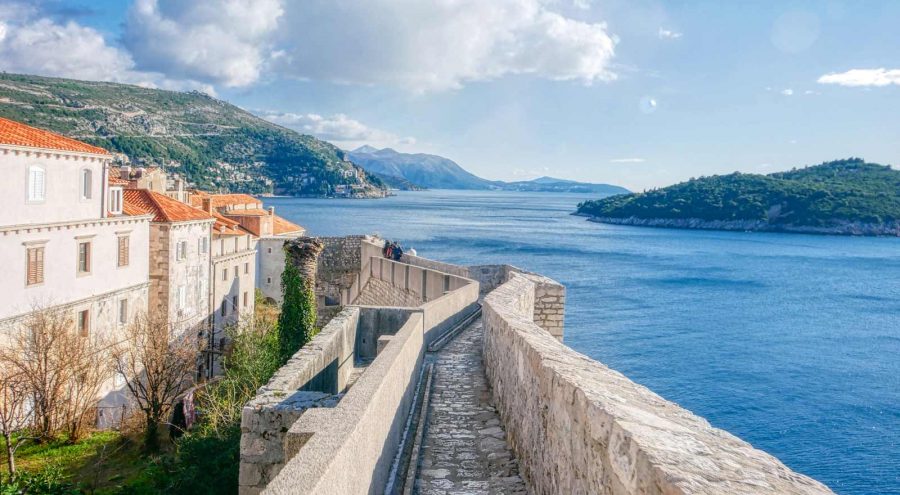
One of its kind
Dubrovnik often makes it to all kinds of lists of places you have to visit in your lifetime. The town is simply beautiful and worth visiting. Enough said. Go, check it yourself!
Dubrovnik is full of history. A UNESCO World Heritage Site, the old town is perfectly preserved, and full of wonderful Renaissance, Gothic, and Baroque palaces, churches, and monasteries.
Dubrovnik is often described as a museum town, but it’s also a town full of museums. In Dubrovnik, you can enjoy culture and art in all its forms: from music festivals, theater plays, and art exhibitions to its architectural wonders.
Yes, Dubrovnik gets crowded in July and August, and it can get overwhelming. However, Dubrovnik is one of those places with a great vibe, one of those places where you feel good and where you can stay all by yourself and never feel lonely.
If you like to take on a road in pursuit of wonderful views, Dubrovnik Croatia is the place to go. You’ll enjoy winding roads, endless vistas, small villages, hidden beaches, idyllic olive groves, and vineyards.
Things to do in Dubrovnik

Whether you visit Dubrovnik for a couple of days or for an extended period of time, you’ll have lots of things to do and see. We’ve written two posts on things to do in and around Dubrovnik: Dubrovnik beyond the city walls , and Things to do in Dubrovnik , where we give you an in-depth insight into activities and experiences in Dubrovnik. Here we list just a couple of them.
A less than four-minute cable ride takes you up to Srd Hill where you can enjoy wonderful views over Dubrovnik. There is a panoramic bar at the top and a small museum.
The cable car operates from April and you will pay the round ticket of 26.54 € for the adult and 6.64 € for kids 4 -12 years old. All details you can find on its official website .
Explore the old town
A charming walled city, Dubrovnik is a wonderful place to stroll and enjoy the sights.
Visit museums
Often considered a museum town, Dubrovnik is also a town full of museums. Many museums are small, and dedicated to the history of Dubrovnik, and the region. We particularly like the small ethnographic museum Rupe and Gornji Ugao Tower.
Wine tasting
Wine is an integral part of life here in Dubrovnik. You can taste some of the best Croatian wines in many wine bars in Dubrovnik old town (we like D’Vino), but you can also take a half-day trip and explore vineyards in the Konavle region . We also recommend visiting the Karaman Vinery .
Sea kayaking
One of the most popular outdoor activities in Dubrovnik, sea kayaking is a half-day tour that takes you along the city walls south to the small cave beach, and off to the island of Lokrum. A fellow blogger Ashley shared her experience of sea kayaking in Dubrovnik here on our blog . You can also book a sea kayaking tour here .
What to see in Dubrovnik
The majority of the sights in Dubrovnik are within the old town. This makes sightseeing in Dubrovnik quite easy. You can explore Dubrovnik landmarks on your own, or join one of the guided city tours .

Franciscan Monastery
Constructed in 1317, the Franciscan Monastery is located right at the entrance of the city, near the Pile Gate. The monastery has two cloisters: upper and lower.
The lower cloister is built in the Romanesque-Gothic style, and it consists of 120 columns, 12 pillars, frescoes, reliefs, a statue of St. Francis, and a fountain.
The monastery also houses the old pharmacy from the 14th century.
Walls of Dubrovnik
Dubrovnik’s main attraction, city walls are almost 2.000 m long, and consist of four fortresses: Minceta, Revelin, St. John, and the Bokar Fortress; two additional round towers, 12 square towers, 5 bastions, and 2 cornerstone forts. A must-see if you are in Dubrovnik.
To walk on the city walls you need to buy a ticket and the price is 35 € for the adult and 15 € for kids up to 18 years from March to October (15 € for adults and 5 € for kids from November to February). Besides the walk through the city walls, sightseeing of the fortress Lovrjenac is included in the price. You can buy tickets up in the city or on their website .
Lovrijenac Fortress
This 14-century fortress, built on a 37 m high sea rock, is often used as a stage for various theatrical plays. It was also a set of the “King’s Landing” in the popular mini-series “Games of Thrones”.
Admission to the fort is included in the admission fee for the city walls. Or you can buy the ticket only for the fortress and, in this case, you pay 15 € from March to October (5 € from November to February). Yet, it remains less visited and thus less crowded.
Old town port
A lovely old port is located at the southern end of the city walls. Today it harbors small, leisure boats, and it’s a great place to relax and watch the world go by.
Island of Lokrum
A green oasis just a short boat hop from Dubrovnik’s old town, the island of Lokrum is a nature park and a popular swimming spot among locals and tourists alike.
Boats to the island depart from the old port.
Food and restaurants in Dubrovnik
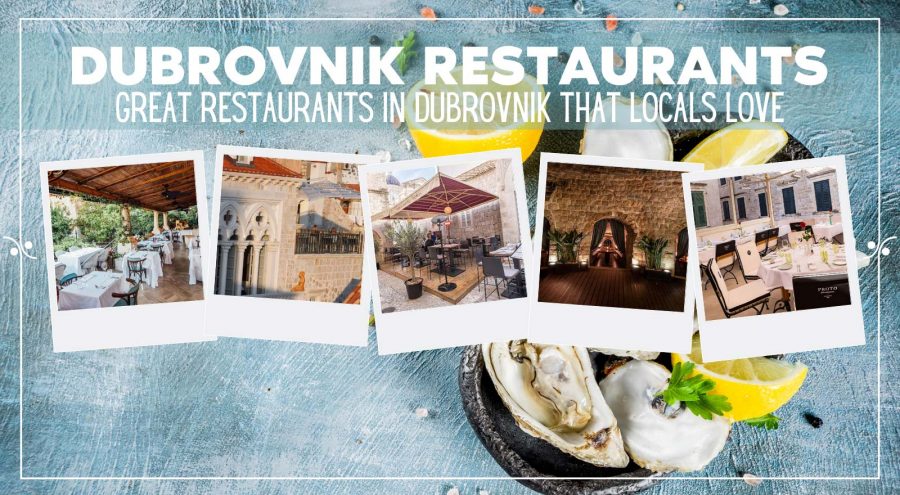
One thing you’ll notice in Croatia is that the restaurant offer is very homogeneous, the menu of many restaurants resemble one another, and it can get a little bit boring after a while. Luckily, this is not the case in Dubrovnik.
While you’ll still find a fair share of restaurants with grilled meat and fish plates, risottos, and pasta, you’ll also have a variety of national cuisines to choose from: Japanese, Bosnian, Fusion, French, Mexican, Spanish, …
We’ve written a full post on the best restaurants in Dubrovnik , and here we list just a few of them.
Bota Oyster & Sushi bar
Not your standard sushi bar, but rather a modern fusion take on sushi, sashimi, and other seafood delicacies. The ingredients are as fresh as it gets, the location is central yet quiet, and the service is friendly. Read our review here.
Glorijet, located next to the fish and farmer’s market, in the Gruz area, is well-worth seeking out for its lively atmosphere, simple but tasty traditional food, and attentive service.
A price of a fish meal starts at 15 € and meat at 12 €. The price for dessert is around 6 €. The bistro Glorijet is open from Monday through Saturday, from 10 am to 11 pm.
An upscale fish restaurant located in the heart of the old town, Proto serves classical Croatian seafood dishes. The restaurant is pricey but offers good quality and top-notch service. If you are planning to visit Dubrovnik in winter, note that the restaurant is closed from November and reopens in Spring.
A tiny restaurant, hidden in a small alley of the old town, Azur serves yummy dishes of non-traditional, and distinct Asian flavors. Their seared tuna is to die for. The price of the main course is around 20 €, and you will pay 4 € for dessert. The same as Proto, Azur is closed until Spring.
Cafes and bars in Dubrovnik
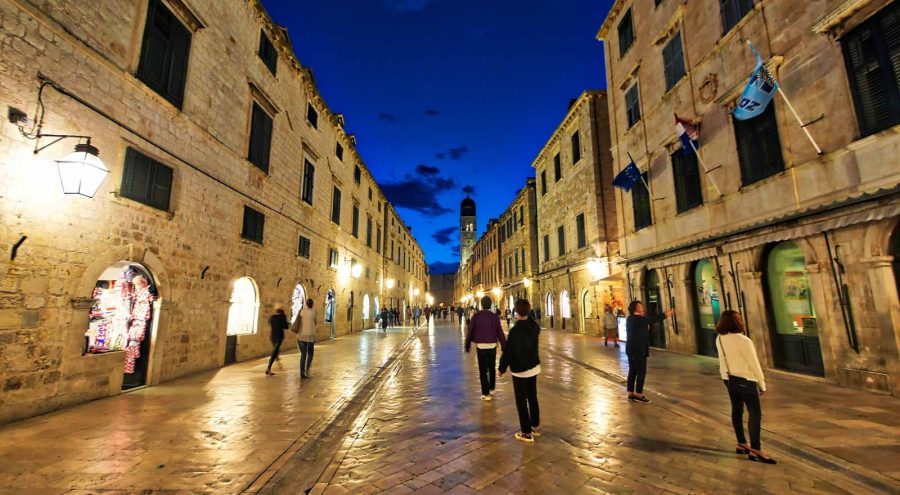
Croatians love their cafes and bars! One of the first things you’ll notice when traveling through Croatia – bars are always full of locals lounging and sipping coffee for hours.
Dubrovnik is no different! Cafes and bars are everywhere. Tourists mostly hang out within the old town, while locals equally frequent bars in the old town, and in other neighborhoods, like Lapad.
Located on the cliff above the sea, and accessible only through a passage in the city walls, Buza I and Buza II (also called Bard Mala Buza) are the most popular bars among tourists. People love them for their great views and cool vibe. If you want a unique experience, go there for the sunset. Come earlier to ensure you have a good spot. Drinks are pricey.
We love D’Vino Wine Bar for its friendly staff, an extensive list of Croatian wines served by the glass, and a really cozy interior. Here you can enjoy wine tasting starting at 7.5 €. They have different options and combinations for wine tasting so check out their website’s full offer.
Locals favorite bar in the old town, Galerie is located off Stradun, in one of the side streets, and it’s famed for fun buckets-served drinks. It is open every day from 9 am to 1 am.
A low-key bar located just off the Stradun, Fontana serves the cheapest drinks in the old town. One of the few bars in the old town where locals still go. Very good choice of drinks!
Other popular bars and clubs include Capitano, Casablanca, Buzz Bar, and Revelin.
Read more: Bars, clubs, and nightlife in Dubrovnik.
Beaches in Dubrovnik
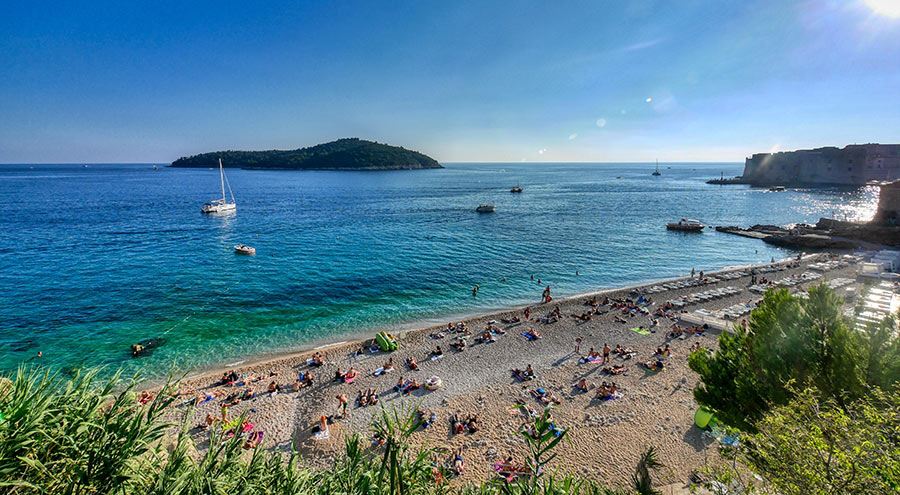
We always think of Dubrovnik in the sense of architecture, history, art, culture, and food. But Dubrovnik is also a beach town where swimming, suntanning, and just lazing in the sun is a l’ordre du jour .
Locals head to the islands of Lokrum or Lopud , but also to the Lapad peninsula for a day at the beach.
A rocky Dance beach is also popular among locals, although the sea is a bit cooler here, it is still clean and has that wonderful blue color.
Tourists mostly hang out on Banje beach for its proximity to the old town, and at Buza beach (popular for the cliff bars of the same name).
HERE IS A GUIDE TO DUBROVNIK BEACHES!
Where to stay in Dubrovnik
Dubrovnik offers a good choice of accommodation: from 5-star hotels, and vacation rentals, to hostels, and even a campsite. Generally, the closest you stay to the old town, the more expensive your accommodation will be.
If you travel by car, try to find accommodation that offers free parking. Should you pay to park separately, it will significantly increase the cost of your stay.
Hotels are more expensive than other types of accommodation but have breakfast included in the room price.
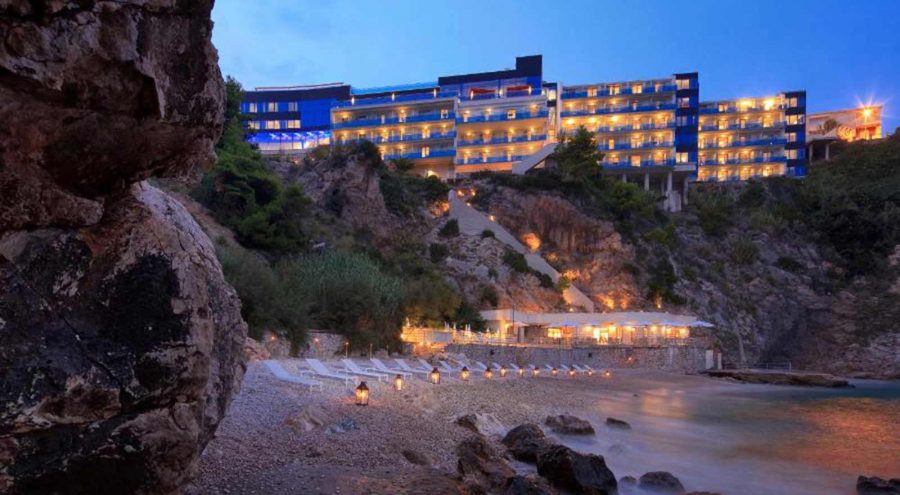
All apartment rentals come with a fully-equipped kitchen or kitchenette. This can help you to lower your cost as you’ll be able to shop for groceries and cook your own meals. They are also a cheaper option if you travel with a bigger party, as the price is often set per apartment, for full occupancy.
Solitudo is the only campsite in the town, located in the Babin Kuk neighborhood.
Below you’ll find a couple of recommended accommodations in Dubrovnik . Or head here to read our full post on the best places to stay in Dubrovnik .
Villa Dubrovnik
Built on a cliff, overlooking the sea, the island of Lokrum, and the old town, this boutique hotel features 56 contemporary rooms with large balconies. a spa center, a restaurant, and a private rocky beach.
The villa is located a 15-minute walk from the old town and offers a free bus or boat shuttle to the town.
Prices start from 360€ per double room with breakfast.
Hilton Dubrovnik
Located just outside the old town, a few steps from the Pile Gate, the Grand Hotel Imperial Hilton is set in a historic palace constructed in 1895.
The hotel features 147 rooms and suites, a gym, spa, indoor pool, bar, and restaurant. Views from upper floor rooms are great.
Prices start at 140 € per night for a double room with breakfast.
Argosy Hotel
A low-key 4-star property, hotel Argosy is located in the Babin Kuk neighborhood, a 10-minute drive from the old town.
The hotel is part of a popular Croatian hotel chain – Valamar Hotels & Resorts. It features 308 rooms, an indoor and outdoor pool, and a couple of pebbly and rocky beaches below the hotel. A pebbly beach Copacabana, where you can enjoy swimming and sipping cocktails, is not far from the hotel.
Prices start at 160 € for a double room with breakfast.
Festa Apartments
Comfortable, clean, and functional, with exposed stone walls, an amazing location in the heart of the old town, and lovely owners, Festa is a great choice if you are looking for a self-catering apartment for your stay in Dubrovnik.
Each apartment is air-conditioned and comes with a kitchenette, bathroom with shower, free WiFi, and a flat-screen TV. Unfortunately, apartments don’t provide parking.
Prices start at 120 € for a studio for two people.
Located in the heart of the old town, The Byron offers three spacious rooms each equipped with a kitchenette. All rooms are tastefully decorated, air-conditioned, and offer free WiFi.
Staff is super-friendly, and always eager to help with suggestions, and money-saving tips (important!) .
Prices start at 280 € for a double room with breakfast.
Shopping in Dubrovnik
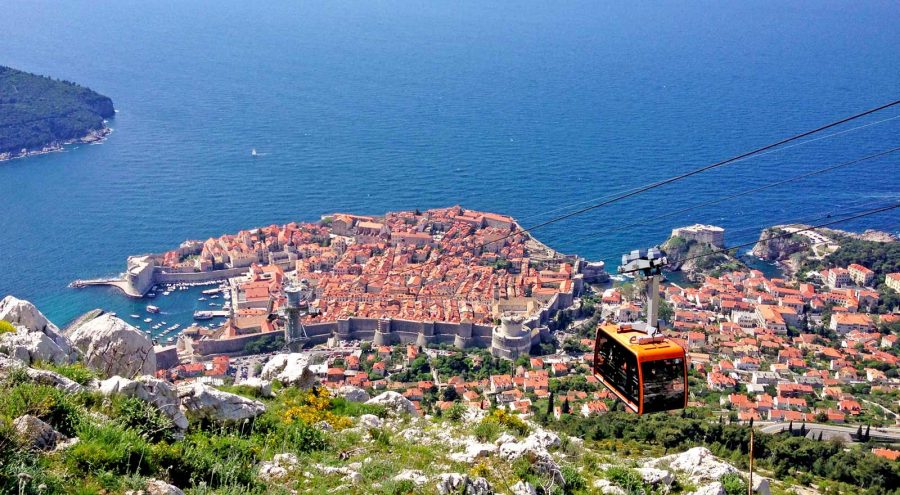
Among tacky souvenir shops in Dubrovnik lining the main street Stradun, the cool and authentic stores aren’t so easy to spot.
However, there are few shops offering authentic and original locally made items.
Dubrovacka kuca is a place where you will find Croatian spirits, wines, cosmetics, sweets, postcards, ceramics, and other artworks. All products are made in Croatia by local craftsmen. It is located in the middle-aged tower of St. Dominic within the Old town and it is open every day from 9 am to 8 pm.
Atelier Peridot offers locally made and affordable accessories including necklaces made of red Adriatic corals. Although you can check their offer on the official website , this shop is definitely worth visiting. It is located in the city center, very close to the main street Stradun and is open every day from 10 am to 7 pm.
Life according to Kawa is a concept store that showcases the best of Croatian designers and artists. Here you can buy specialty beers and local delicacies, hand-roasted coffee, bags, hand-made souvenirs, jewelry, and even furniture. Just be careful – once you visit this store, it is most likely you will want to go back. Our personal record is going there three times in one day.
The House of nature offers organic and locally-made skincare products. The owner will happily help you with choosing the best product based on your preferences for herbs.
Parking in Dubrovnik
Parking around the car-free old town is a nightmare and very expensive. In this area, parking places are scarce, and expensive (expect 10 € per hour in high season).
If you plan to stay in Dubrovnik and you travel by car, make sure to book accommodation that provides free parking . The majority of hotels in Dubrovnik, located out of the old town, provide free parking, as well as many private apartments. You can also park your car on designated streets. The daily ticket costs between 30 € and 60 €.
On- and off-street parking in Dubrovnik can be paid with your cell phone, street payment machines, or at any Tisak kiosk. In Zone 1, the maximum parking time is 2 hours.
Dubrovnik’s public garage is just a 5-minute walk from the old town. However, you will need to walk uphill to reach the garage from the old town. Parking in the garage costs 2.6 € per hour. A daily ticket costs 29 €, and a weekly ticket will set you back 145 €.
Parking lots and street parking are organized into five zones.
Map of parking in Dubrovnik
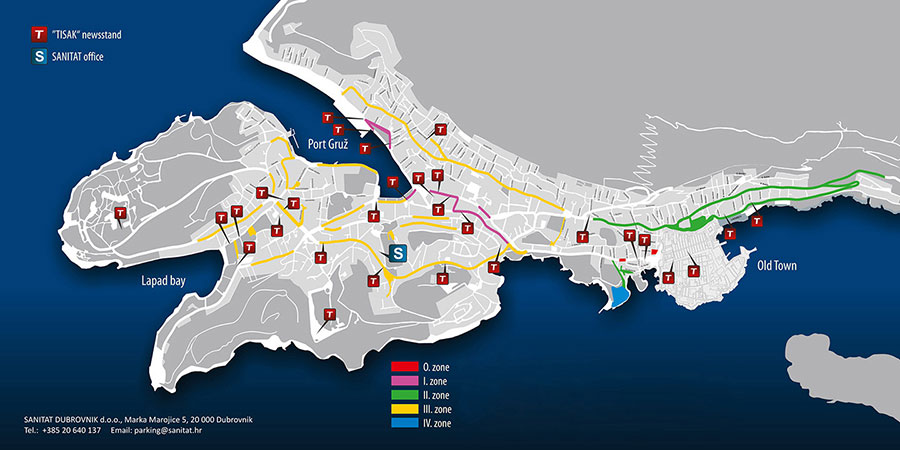
Parking prices
Zone 0 | Daily, 0-24 h | May-Sept: 10 €/h | April, Oct: 6.6 €/h | Nov-March: 2.7 €/h
Zone 1 | Daily, 6 am-10 pm | May-Oct: 1.3 €/h | Nov.-Apr: 0.7 €/h
Zone 2| Permit holders only
Zone 3 | Daily, 6 am-10 pm | May-Oct: 1.3 €/h | Nov-Apr: 0.7 €/h
Zone 4| Permit holders only
Traveling to Dubrovnik
Dubrovnik is the southernmost town in Croatia, and as such it’s somewhat difficult to reach . Maybe not difficult, but it takes a long time to get there regardless of your mode of transport.
Traveling to Dubrovnik by plane is by far the best way to reach the town, at least from April to October when lots of low-cost carriers have direct flights to Dubrovnik from all major European destinations.
Dubrovnik Airport is located near the village of Cilipi, 20 km south of Dubrovnik. It’s a small but modern regional airport.
An airport shuttle bus departs frequently, after every scheduled flight. From Dubrovnik’s main bus station Gruz to the airport, a shuttle bus departs 2 hours prior to any international flight, and 90 minutes prior to any domestic flight. It takes 30 minutes each way, and a one-way ticket costs 9 € while the price of a return ticket is 12 €. The official website for the Dubrovnik airport shuttle provides details about bus stops and where to buy the ticket. You can also reach the town by public bus (the bus station is on the main road, just outside of the airport parking). One way ticket costs 3.7 €.
From April to October, lots of airlines fly into Dubrovnik from various European destinations, like London, Manchester, East Midlands, Leeds, Dublin, Vienna, Rome, Stockholm, Dublin, Amsterdam, Frankfurt, Warsaw, Barcelona, Madrid, Berlin, Edinburgh, Paris, and many more.
Skyscanner is our favorite website to check flights to and from Dubrovnik.
You can easily reach Dubrovnik by bus from many places in Croatia. The bus network is extensive, and the buses are very reliable in Croatia. Many different bus operators have a yearly connection to Dubrovnik.
The largest bus operators are Croatia Bus, Aviva, and Cazmatrans. The best way to plan your bus trip online is through the Getbybus website.
It takes about 9 hours by bus to reach Dubrovnik from Zagreb, and around 4 hours to reach Dubrovnik from Split. Expect to pay around 30€ for a one-way ticket from Zagreb to Dubrovnik, and 18€ for a one-way ticket from Split to Dubrovnik.

If you travel by car to Dubrovnik, you have a few options to reach the town.
Taking highway A1 until Ploce, and a coastal road D8 (former E65) from Ploce to Dubrovnik. You can also travel all the way from Rijeka in the north to Dubrovnik in the south using the coastal road E65. Using the highway is a faster way to reach Dubrovnik. Using the coastal road is a scenic, and exciting albeit slow way to travel to Dubrovnik. The coastal road passes through many villages where you need to keep low-speed limits. It is winding, and scary at times but it sure offers breathtaking views and wonderful scenery.
Once you reach Ploce, you can only travel along the coast on a national road, comprising mainly of a single carriageway. This road, at certain places, has a double lane on one side (usually the ascending side of the road), and a single lane in the other direction.
Once you pass the village of Raba, you will need to make a choice whether you want to continue driving along the coastal road D8, and go through border controls in Neum in Bosnia and Herzegovina, or you will take a Peljesac bridge and avoid passing through Bosnia on your way to Dubrovnik.
We recommend taking the bridge.
The coastal road takes you through Neum, the only coastal town in Bosnia & Herzegovina, that divides Croatia into two parts. You’ll have a border crossing to and out of Bosnia, and you’ll need to drive through Bosnia for about 10 km. Don’t worry, if it wasn’t for the border crossing, you wouldn’t even notice it. You don’t need any extra insurance to drive this part of the road. The area is considered a transit zone, and car insurance for Croatia should be sufficient. But, you can have a significant waiting time at the border, especially in high season. However, if you are a holder of a Croatian visa, make sure you have a multiple-entry visa to re-enter back into Croatia.
In the summer of 2022, the Peljesac Bridge officially opened and for the first time in history connected southern and northern Croatia. The bridge is 2.5km long and you do not need to pay any fees. We definitely recommend taking this route and enjoying the unspoiled beauties of the Peljesac peninsula.
Read more: Driving in Croatia
Dubrovnik is the main ferry port for the nearby islands of Elafiti , Mljet, and Korcula. You can also reach Dubrovnik from Split by catamaran from May through October. The one-way ticket costs 45 € per person. More info here.
Dubrovnik can also be reached by ferry from Bari in Italy. The service runs from April through October. In high season, a one-way ticket costs 50 € per person. A car costs an additional 65 € per car. You can buy tickets online through the Bookaway website .
Dubrovnik Public Transport
Driving in Dubrovnik can be a mess; especially when it comes to finding (and paying for) parking.
However, the town is relatively small, and it has very good public transport. Buses run from 6 am to midnight, every 30 min or 1 hour depending on the line. The old town is car-free.
One-ride ticket costs 2 € if bought on a bus, or 1.73 € if bought on a newsstand. Daily ticket (valid for 24 hours, and for an unlimited number of rides) is 5.31 Kn.
You can also save money with a Dubrovnik Card that gives you an entrance to 6 museums, 2 galleries, an entrance to the city walls, and a number of bus rides. Dubrovnik Card is sold as a 1-day card (35 €), a 3-day card (45 €), and a week card (55 €). These prices include a 10% discount for online purchases.
Car rental in Dubrovnik
Since Dubrovnik has lots of direct flights from all over Europe, the UK, and Ireland , many visitors to Croatia fly into Dubrovnik airport. Many of them don’t plan on actually spending their entire holiday in Dubrovnik, but instead, use it as their entry point for Croatia. They rent a car and travel further north. Many also stay in Dubrovnik but often rent a car for day trips to the surrounding area and nearby landmarks.
This means that Dubrovnik has a good choice of car rental companies , but it also means cars rent quickly in the high season .
We highly recommend that you rent your car well in advance if you plan to visit Dubrovnik in July and August. You can check the Rentalcars.com website for the best deals, and price comparison. The earlier you book, the better price you’ll get.
Prices of car rentals vary according to car model, additional equipment, booking lead time, time of the year you’re booking your car for, etc. You can expect to pay 60€ a day for a mini-size car in the high season. The same car costs as low as 25€ in the low season.
Our friends Robert & Mary, a Scottish couple who stay with my in-laws in Komarna every year, have a habit of renting the car for a consecutive year as soon as they come back home from this year’s vacation. And they pay as little as 10€ a day. Just to make you realize how important is to book early .
Read more: Car rental in Croatia
Recommended travel guides
- Fodor’s Croatia Travel Guide (we are co-authors!)
- Lonely Planet Croatia Travel Guide
- Rick Steves Croatia & Slovenia
Further reading
- Where To Stay In Dubrovnik: Dubrovnik Accommodation
- Things To Do In Dubrovnik Croatia
- 14 Day Trips From Dubrovnik Croatia
- Things To Do In Dubrovnik Beyond The City Walls
- Our Favorite Beaches In Dubrovnik Croatia
- Restaurants In Dubrovnik Croatia
- Best Bars, Clubs, and Nightlife In Dubrovnik Croatia
- 24 h in Dubrovnik
- Wine Tasting at the Karaman Winery
- Discover Dubrovnik Beyond The City Walls: Sokol Tower
- A Visit To The Elafiti Islands
- Sea Kayaking In Dubrovnik Croatia
- Dubrovnik Croatia From The Sea: Photo Journey
Save it for later

Frankaboutcroatia.com is a participant in the Amazon Services LLC Associates Program, an affiliate advertising program designed to provide a means for sites to earn advertising fees by advertising and linking to Amazon.com and affiliated sites. This post might also contain affiliate links to other sites, like accommodation or activities. And if you purchase anything using these links, we earn a little commission with no extra costs for you. Thank you for supporting our blog! Read full disclaimer here.
Home / Destinations In Croatia / Dubrovnik, Croatia / Complete Travel Guide To Dubrovnik Croatia
8 thoughts on “Complete Travel Guide To Dubrovnik Croatia”
Just check on Get Your Guide or Viator. They have a great choice!
Thank you for providing such great and detailed resources, this has been my guide to planning my trip to Croatia.
I am looking for a wine tour in Konavle on July 9th, can you suggest a few guides.
I love your site and have found it quite helpful. I’ve planned a great deal of my trip to Croatia and Italy but am having trouble in Dubrovnik. Can you help me? I will be traveling with my sister this summer from USA and we are in our 60’s. I would like us to stay in Old Town but we are a bit worried about too many stairs and distance from a gate. The more we look at Airbnb places the more stairs and distance it looks like we’d have to deal with. We’re both in fairly decent shape but we do have our limits. Do you have any suggestions as to how to find an appropriate place to stay within the walls or should we just stay in a hotel just outside the walls and simply walk into Old Town?
Hi, we are planning to visit Croatia in June first week from India for about 10 days. We are traveling with two kids (4,10 years) ,So want to know about the city and sightseeing which we can plan .after going through your blog I am sure I want to visit national park ,beach and one traditional village .but not sure what kind of accommodation? Hotel or apartment or mix of both.and please suggest wether we should book entry tickets of sightseeing months before to get good deals?
Hello Frank, We are traveling this May (2018). I have only seen it posted once when researching, no sure how valid the info is, but do you have to pay to get into the walls of Dubrovnik? Do the walls close at a certain time? I would hope not, for photography purposes, but I would think information like that would be quite beneficial to know before going. If so, is there a good resource on buying tickets?
Hi, Frank: Really useful tips for us when we visited Zagreb (this past Sept/Oct). Now we’re looking at 5 days in Dubrovnik in mid-June. I’m confused between selecting a hotel closer to the Old Town, or one closer to the Old Port (Gruz?). From what I’ve read here, it seems like the Old Town is a much larger one-stop-attraction than is the Old Port. Is that correct? Any suggestions for hotels convenient to either? We don’t mind short walks (to either) or a city bus to either . . . and even walking to and busing back, or vice versa. Just can’t get a clear idea of which place is gonna be the more interesting “draw.” So whatever light you can shed here will be illuminating (he said). Thanks in advance! And Happy 2018 to you and Vera.
The last days of our holiday we stayed in Dubrovnik. This old city is just beautiful; it is listed on UNESCO list of World Heritage Sites. Old town is flocked by tourists though as it is one of the most prominent tourist destinations in the Mediterranean Sea. Despite the fact that is was crowded (and boiling hot) we did enjoy our two days here before flying back home. In Dubrovnik we stayed at Alberto Apartments which is beautifully located in the old town. The friendly owner is very helpful and the apartment is good value for money.
Hi Frank, Love your blog. Thanks for providing such great resources. Could you let me know if I could do this itinerary (plan to add a couple of extra days) entirely by using the daily catamaran cruise from Split to Dubrovik? We plan to fly into Split and out of Dubrovik or vice versa. Thank you so much.
Leave a Comment
Dubrovnik Travel Guide

Courtesy of ccr_358 | Getty Images

Why Go To Dubrovnik
Ever wanted a gorgeous seaside fortress of your own? Picture it: Huge stone walls keeping the lapping sea at bay, while you dine in the safety of your Baroque palace. You can come close to this fantasy with a visit to Dubrovnik, which is straight out of a dream, or if you are a "Game of Thrones" fan, right out of the wildly popular TV series. A UNESCO World Heritage Site since 1979, Dubrovnik is surrounded by gorgeous medieval ramparts that have been preserved in their original form and are one of the city's main attractions.
Often called the Pearl of the Adriatic, this small city on the Dalmatian coast has it all. Travelers from all over the world flock here to experience the rich history preserved in the monuments and buildings, to taste the fantastic local cuisine, to take a few fun daytrips and to bask in the warm waters spilling onto pebble beaches. Snapshots won't do: You have to be here yourself to see what all the fuss is about.
Find Flight and Hotel Deals
Navigate forward to interact with the calendar and select a date. Press the question mark key to get the keyboard shortcuts for changing dates.
Navigate backward to interact with the calendar and select a date. Press the question mark key to get the keyboard shortcuts for changing dates.
- # 2 in Best Family Vacations in Europe
- # 4 in Best Beaches in Croatia
- # 5 in Best Eastern Europe Travel Spots
See All 7 Rankings
Best of Dubrovnik
Best hotels in dubrovnik.
- # 1 in Hilton Imperial Dubrovnik
- # 2 in Hotel Bellevue Dubrovnik
- # 3 in Hotel Excelsior

Best Things to Do in Dubrovnik
- # 1 in Walls of Dubrovnik
- # 2 in Dubrovnik Old Town
- # 3 in Lokrum Island

Popular Tours

Blue Cave Small-Group Boat Tour from Dubrovnik
(4842 reviews)
from $ 92.79

Full-Day Dubrovnik Elaphite Islands Cruise with Lunch and drinks
(5013 reviews)
from $ 77.33

Private Tour: Montenegro Day Trip from Dubrovnik
(336 reviews)
from $ 254.08
Dubrovnik Travel Tips
Best months to visit.
The best time to visit Dubrovnik is September and October, when temperatures aren't stifling hot yet most of the cruise ships have abandoned the port. The water remains warm for these two months, so it's a great time to dip into the sea rather than your savings. The peak season, summer, has arguably the nicest weather with average high temperatures fluttering around 80 degrees Fahrenheit. But the small city struggles to meet the demand of the large visitor influx. Correspondently, prices soar. Prices go down from October through April, but so will the temperatures and the beach appeal.
Weather in Dubrovnik
Data sourced from the National Climatic Data Center
What You Need to Know
- What does "Dubrovnik" mean? The founders named this city after " dubrava ," meaning "grove," for the thick cluster of trees that used to sprout from the town. Centuries of logging for ship-building has created a semi-desert environment. However, you can still find a dense forest on nearby Lokrum Island .
- Who built this lovely city? That's a tough one. There were multiple forces at work as different international bodies (like the Byzantine Empire, Venice and France) ruled the city. Let's give credit to the Croatians who have had to endure centuries of foreign rulers.
- How do I communicate here? Despite its long history of international rule, you'll now find that nearly everyone speaks Croatian and English in Old Town .
How to Save Money in Dubrovnik
- Pack your lunch Although the picturesque cafes will beckon to you, you can save a bit of cash by packing your lunch and taking a picnic to the beach. You can purchase goodies from the local bakeries and open-air markets.
- Consider a Dubrovnik Card By purchasing this card , you'll enjoy free admission to several of the city's top sights , including the city walls , the Rector's Palace and the Franciscan Monastery . Passes can be purchased in one-, three- and seven-day increments.
- Stay outside of town We know that you've come here to enjoy Dubrovnik's delights, but taking a couple of daytrips into town might be all you need. Then, you can stay along the Dalmatian shores and enjoy fewer visitors and lower prices. The suburb of Lapad Bay is a great nearby option, but the farther away, the more you save.
Culture & Customs
The official language in Croatia is Croatian, but many people in Dubrovnik, especially those in the tourist industry and younger Croatians, speak English. To be polite and friendly, it's a good idea to learn a few basics, such as the common greeting: "good day," dobar dan . Other key phrases include "please," molim and "thank you," hvala . Because of the complex relationship between Croatia and Serbia, it's wise to avoid speaking about Croatia and Serbia relations when chatting with locals.
The currency in Dubrovnik is the Croatian kuna (HRK). One U.S. dollar is equal to about 6.75 kuna. Since the exchange rate fluctuates, you'll want to check it before you travel . You can exchange currency at the airport, but you might find a better exchange rate in town. Usually, your best bet is to use your ATM card to withdraw money and it's even better if you have one that doesn't charge fees for withdrawing money overseas.
When it comes to tipping, there's no standard amount and it isn't required, but generally, most service staff – from restaurant servers to taxi drivers – will appreciate at least a symbolic amount, especially as wages aren't too high in Croatia. Rounding up your bill or leaving a 10% tip on a restaurant bill is considered generous.
On the whole, Dubrovnik is considered a very safe vacation destination. But, as in any busy city, be wary of potential pickpockets that might target tourists.
What to Eat
Naturally, a city on the sea is going to serve a lot of seafood and the region's chefs love to showcase the fresh catches of the day. Mussels, tuna, squid ink risotto and more are staples at many restaurants. Other local specialties include oysters from Mali Ston (a village on Croatia's coast), smoked ham, cheese soaked in oil, octopus salad, zelena menestra (smoked salted pork and cabbage stew), sporchi macaroni (stewed veal chunks and spices), fried sprats and grilled sardines. The best-known wines of the Dubrovnik region include reds from the Pelješac Peninsula and for whites, Pošip from Korcula. Try them all in a flight at D'vino , a popular wine bar in the Old City.
For Mediterranean dishes with a side of unforgettable views, consider making a reservation at the Above 5 Rooftop Restaurant at the Hotel Stari Grad. You'll pay a pretty penny for a table, but according to recent visitors, the views and the food are worth it. For an equally atmospheric meal that's heavy on seafood, head to Proto , which sits in the heart of old town. If you're on a tight budget but still itching to try some local seafood, Barba earns rave reviews for its "gourmet fast food" (think: octopus burgers). And when you need a break from the Dalmatian diet, consider Azur , which describes its "CroAsian" menu as Mediterranean with an Asian twist.
Getting Around Dubrovnik
The best way to get around Dubrovnik is on foot. In fact, the entire historic center is only open to pedestrians. To reach the city, many travelers fly into Dubrovnik Airport (DBV), located less than 15 miles southeast of the city. To get to Dubrovnik from the airport, travelers can rent a car, take a taxi or hop on a shuttle bus, which costs 55 kuna (about $8).
If you're arriving to Dubrovnik via cruise ship, you can take a taxi from the port to the Old City for about 70 kuna (around $10.50) or reach the area by bus. The main bus station is located at the port. Bus tickets cost between 12 and 15 kuna (about $1.50 to $2.25), depending on if you purchase tickets on the bus or at a kiosk.
Entry & Exit Requirements
For U.S. citizens entering Croatia, a passport that is valid for at least three months beyond the travel departure date is required. U.S. citizens do not need a visa unless they plan on staying longer than 90 days. Visit the U.S. State Department's website for more information on entry and exit requirements.
Gaining popularity in recent years, Dubrovnik is considered one of the Best Places to Visit in Eastern Europe .
Explore More of Dubrovnik

Things To Do
Best hotels.

You might also like

# 4 in Best Cheap Caribbean Vacations

# 1 in Best Cheap European Honeymoon Destinations

# 1 in Best Christmas Vacations
If you make a purchase from our site, we may earn a commission. This does not affect the quality or independence of our editorial content.
Recommended
The 28 Best Water Parks in the U.S. for 2024
Holly Johnson|Timothy J. Forster May 8, 2024

The 18 Best Napa Valley Wineries to Visit in 2024
Lyn Mettler|Sharael Kolberg April 23, 2024

The 25 Best Beaches on the East Coast for 2024
Timothy J. Forster|Sharael Kolberg April 19, 2024

The 50 Best Hotels in the USA 2024
Christina Maggitas February 6, 2024

The 32 Most Famous Landmarks in the World
Gwen Pratesi|Timothy J. Forster February 1, 2024

9 Top All-Inclusive Resorts in Florida for 2024
Gwen Pratesi|Amanda Norcross January 5, 2024

24 Top All-Inclusive Resorts in the U.S. for 2024
Erin Evans January 4, 2024

26 Top Adults-Only All-Inclusive Resorts for 2024
Zach Watson December 28, 2023

Solo Vacations: The 36 Best Places to Travel Alone in 2024
Lyn Mettler|Erin Vasta December 22, 2023

26 Cheap Beach Vacations for Travelers on a Budget
Kyle McCarthy|Sharael Kolberg December 4, 2023


Dubrovnik Travel Guide: 17 Things to do in Dubrovnik, Museums & History
December 7, 2023 | Posted in: Croatia
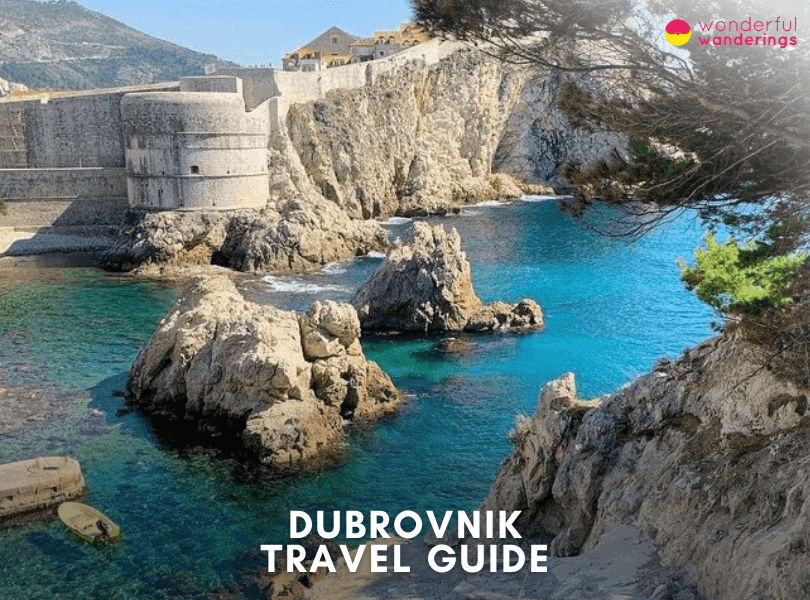
Dubrovnik is a medieval walled city located on Croatia's Dalmatian Coast overlooking the Adriatic Sea. Dubrovnik serves as an important coastal city and seaport. Its old town is a UNESCO site with well preserved Gothic, Renaissance and Baroque architecture. It is one of Croatia's most popular tourist destinations, known for its well-preserved Gothic, Renaissance and Baroque architecture. The city has a total population of 28,434 as of 2023.
Dubrovnik's nearby coastal escapes include swimming and sea kayaking tours to secluded beaches, exploring the verdant nature reserve of Lokrum Island right offshore and ferry trips to the picturesque Elaphiti Islands for village wandering, botanical gardens and sandy beaches. Inland day trips reach Karlovac’s star-shaped old town or tour regional wineries along the Pelješac Peninsula.
Visitors can taste black cuttlefish risotto, seafood buzara stew or slow-cooked meat specialties paired with local wines. Staying for 2 to 5 days allows time to uncover history while relaxing in Dubrovnik’s coastal views. Dubrovnik rewards travelers with timeless architecture and time-honored culture. Dubrovnik is located in the Central European Time (CET) zone. The standard time is defined as UTC+1. This means Dubrovnik is 1 hour ahead of Coordinated Universal Time.
Listed below are the best things to do in Dubrovnik.
- The City Walls. The City Walls are a series of stone walls surrounding Dubrovnik's old town in Croatia. Built mainly from the 13th to 17th centuries, the walls are 1940 meters long, up to 25 meters high and have never been breached. They are one of Croatia's top attractions. Visitors can walk along the top of the walls for 1.5-2 hours to enjoy views of the old town, the Adriatic Sea and landmarks like Fort Lovrijenac. There are cafes to stop at and guided tours available. The main entrance is at Pile Gate. The walls and old town together are a UNESCO World Heritage Site.
- Old Town. Old Town is a well-preserved medieval walled city on Croatia's Dalmatian Coast. It is known for its red-tiled roofs, cobblestone lanes and imposing 11th-century defensive walls. The pedestrian-only zone provides many history and culture-oriented activities. Visitors can walk the 2 kilometers (1.2 miles) long city walls, visit the alleys and squares like in the main street Stradun, visit cultural sites like the Rector's Palace museum and relax at cliffside cafes overlooking the sea.
- Visit Lokrum Island. Visit Lokrum Island, which is a protected nature reserve located 0.6 kilometers (0.3 miles) off the coast of Dubrovnik, Croatia. Key things to do include visiting the 11th century Benedictine monastery ruins, exploring the lush botanical gardens, hiking up to Fort Royal for panoramic views, swimming at the main Lokrum beach, floating in the “Dead Sea” saltwater lake, seeing Game of Thrones filming locations and spotting wild peacocks. Ferries to Lokrum run regularly from Dubrovnik's Old Port from April to November and cost €18 ($20, £15) roundtrip, which includes entrance to the nature reserve. Lokrum makes for a scenic day trip away from the bustle of Dubrovnik's Old Town.
- Kayaking Tour (both regular and sea kayaking). Kayaking tours (both regular and sea kayaking) in Dubrovnik offer a unique way to explore the city's coastline, surrounding islands and hard-to-reach beaches and caves that are only accessible from the water. Guides lead small groups on 2.5+ hour paddling excursions departing from Pile Bay near Dubrovnik's walled Old Town. Tours take kayakers around Lokrum Island to see scenic cliffs, caves and beaches while stopping to swim, snorkel and relax. Some tours focus just on Dubrovnik's Old Town walls area, while others venture out to the nearby Elaphiti Islands for longer full-day trips. Kayaking allows visitors to experience Dubrovnik's natural beauty up close from an exciting new vantage point.
- The Cable Car Ride. The cable car runs from the city up Mount Srd, providing visitors easy access to panoramic views from the mountain peak. The riders can view the old town of Dubrovnik, the Adriatic Sea and surrounding islands once the car ascends. Visitors can dine at the restaurant, visit the museum in the old fort, go on buggy safari rides or hike trails. The cable car is good for all visitors and offers a unique way to gain breathtaking perspectives on this beautiful walled city. Taking the Dubrovnik cable car up Mount Srd is an experience not to be missed.
- Game of Thrones Tour. Game of Thrones Tour in Dubrovnik takes visitors to key filming locations from the hit HBO series, including Lovrijenac Fortress (the Red Keep), Pile Gate and the Jesuit Staircase (used in Cersei's Walk of Shame scene). An expert local guide provides the tour about the filming and history of Dubrovnik, drawing connections between the real city and the world of Game of Thrones. There are opportunities to take photos with show props. The 2-3 hour tours involve a moderate amount of walking as the old town is on a steep hill. They are best for older kids and adults who are fans of the show.
- Proporela. Porporela is a pier and breakwater in Dubrovnik's old harbor, originally built to reduce wave intensity and protect anchored boats. Visitors can stroll and swim during summer when locals gather, watch water polo matches, relax on benches listening to waves or experience dramatic winter storms. Porporela does not have an admission fee and is suitable for all ages wanting a refreshing swim or views. It is located on the east side of the old town, past the Peskarija fish market and Sveti Ivan Tower.
- Fort Lovrijenac. Fort Lovrijenac, known as St. Lawrence Fortress, is located outside the western wall of Dubrovnik's old town in Croatia. This triangular fortress offers visitors scenic views over Dubrovnik and the Adriatic Sea from its three terraces. Highlights include exploring the well-preserved fort interior with ancient canons and remnants of various eras, taking photos of panoramas and watching cliff diving competitions. Reaching the fortress involves climbing 200 steps, but the views from the top make it worthwhile for most visitors.
- Try local cuisine. Try the local cuisine of Dubrovnik that features fresh Adriatic seafood like the black risotto made with cuttlefish ink, buzara seafood stew with mussels or shrimp and slow-cooked meat dishes like peka. Fruits, vegetables and olive oils from nearby farms pair beautifully. Sweet local specialties include arancini candied citrus peel, rozata custard with rose liqueur and stonska torta cake made with pasta and chocolate. There are options from cheap casual spots to Michelin-starred fine dining. Visitors can sample dishes throughout pedestrian-only Old Town Dubrovnik, located on Croatia's southern coast. Cooking classes and tours can teach how to make traditional dishes.
1. City Walls
The City Walls refer to the fortified stone walls surrounding the old town of Dubrovnik, Croatia . The walls stretch for 1,940 meters, stand up to 25 meters high and have never been breached by an invading enemy. The wall remains one of Croatia's top attractions. Visitors can walk along the top of the walls for 1.5-2 hours to take in views of the old town, the Adriatic Sea and landmarks like Fort Lovrijenac. There are cafes dotted along the route to stop for refreshments. Guests can enter Fort Lovrijenac, explore the old town or join a guided tour.
The City Walls are located in central Dubrovnik, with the main entrance at Pile Gate. There are two other entrances at Ploče Gate and by the Maritime Museum. Known by several names, including Dubrovnik Ring and Dubrovačke gradske zidine, the walls have special status as one of Europe's largest and best-preserved medieval fortified systems. They are recognized as a UNESCO World Heritage Site. The walk involves climbing many steps, so a moderate fitness level is recommended. Entry tickets to the City Walls start at €14 ($15, £12) per person.
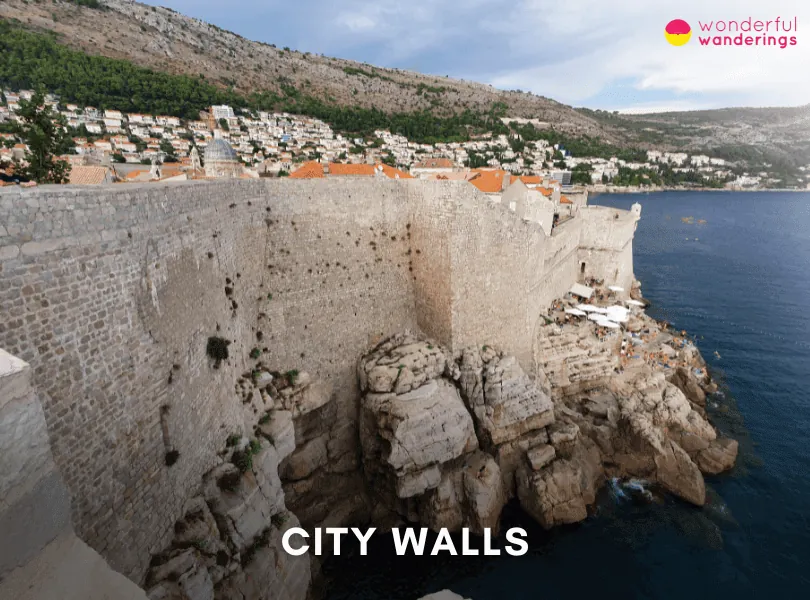
2. Old Town
Old Town is a well-preserved medieval walled city located on the Adriatic coast in southern Croatia. It's known for its terracotta-tiled rooftops, narrow cobblestone streets, historic churches and imposing defensive walls dating back to the 11th century. The top things for visitors to do include walking along the nearly two-kilometer-long (1.2 miles) city walls to admire views of the sea and red-roofed buildings below, wandering through atmospheric alleys and squares like the main promenade of Stradun, visiting cultural attractions like the Rector's Palace museum and Dominican Monastery museum, relaxing at a cliffside café like Buža Bar with scenic vistas, trying traditional Dalmatian cuisine at one of the many restaurants and cafés, shopping for souvenirs from local artisans and more.
Visitors to Dubrovnik's Old Town can walk along the historic defensive walls overlooking the sea, wander through atmospheric narrow lanes and squares, visit cultural sites like museums and historic buildings, relax at cliffside cafes and restaurants with scenic views, shop for local souvenirs and products and more. There are many history and culture-oriented activities to embrace. The Old Town of Dubrovnik is enjoyable for all visitors, including families and kids interested in history and culture. However, the amount of walking involved should be considered. There is an admission fee to walk along the Old Town walls. Other attractions, like museums, have separate admission fees.
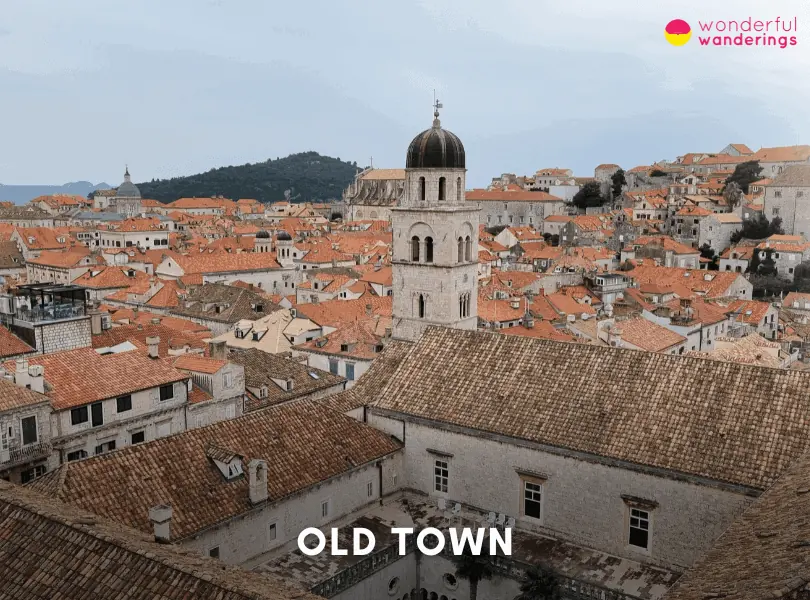
3. Visit Lokrum Island
Lokrum Island is a small, uninhabited island located just 600 meters off the coast of Dubrovnik, Croatia. It is a protected nature reserve known for its lush forests, exotic botanical gardens, rocky beaches and crystalline waters. Key things to do on Lokrum Island include visiting the 11th-century Benedictine monastery ruins, exploring the lush botanical gardens, hiking up to Fort Royal for panoramic views, swimming and sunbathing at the main Lokrum beach, floating in the “Dead Sea” saltwater lake, seeing where Game of Thrones was filmed and spotting the wild peacocks that roam freely around the island. Ferries to Lokrum run regularly from Dubrovnik's Old Port from April to November. The roundtrip fare costs €18 ($20, £15) and includes entrance to the nature reserve. Lokrum makes for a relaxing and scenic day trip away from the bustle of Dubrovnik's Old Town.
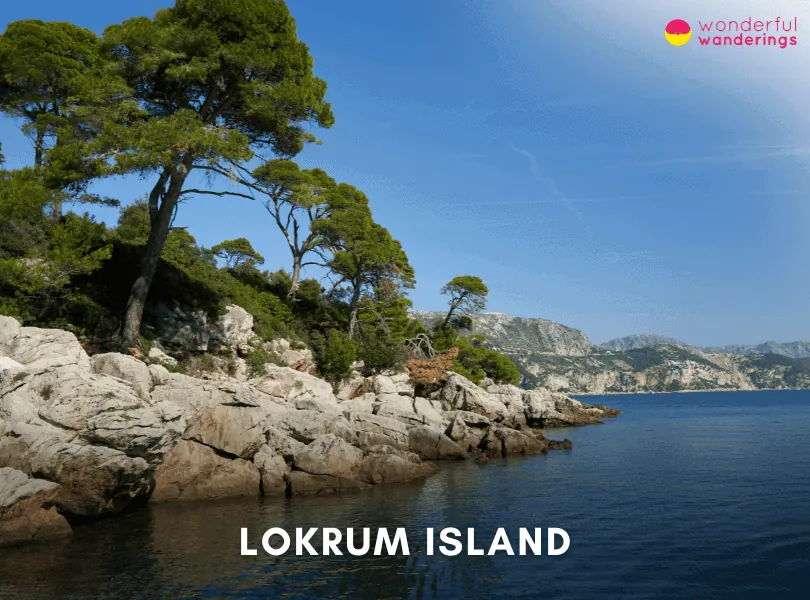
4. Kayaking Tour (both regular and sea kayaking)
Kayaking is one of the most popular activities for visitors to Dubrovnik, thanks to the strikingly beautiful Dalmatian coastline surrounding the city. Numerous companies offer guided kayaking tours ranging from 2-3 hours up to full-day trips. Tours typically depart from Pile Bay near the Pile Gate entrance to Dubrovnik's historic walled Old Town. Guides provide basic kayaking instruction, then lead groups around Lokrum Island and along the city walls, stopping to explore scenic caves, secluded beaches and coastal cliffs only accessible from the water.
Tours provide all necessary gear, including waterproof storage bags. Most trips are suitable for ages four and above as long as participants are reasonably fit. Tours make stops halfway through at places like Betina Cave Beach for swimming, snorkeling, cliff jumping or just relaxing in the sun. Some tours end by watching the sunset over the Adriatic Sea while sipping local wine. Solo travelers can join group tours and will be paired with other single participants. Kayaking allows visitors of all experience levels to take in Dubrovnik's beauty up close from a fun and adventurous perspective out on the water. Tours provide all necessary gear, accommodate ages four and up, require reasonable fitness and have specific prices per person.
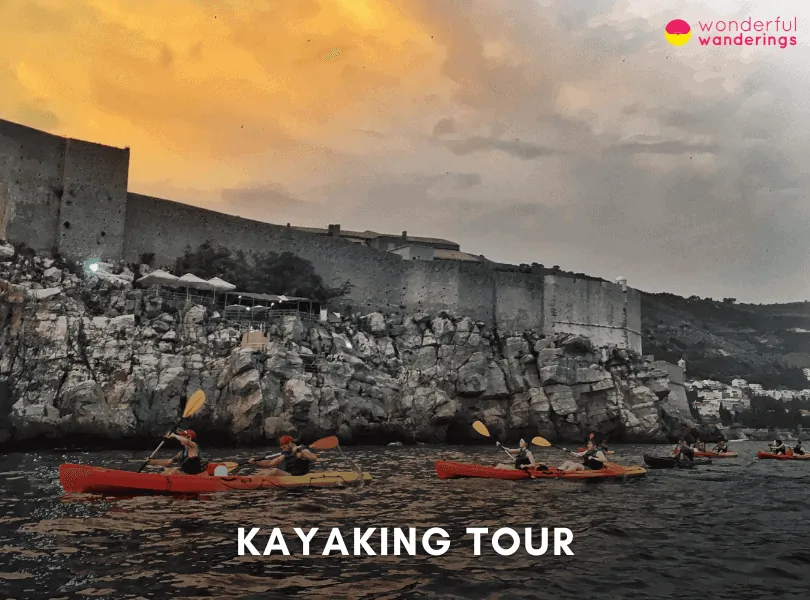
5. The Cable Car Ride
The cable car ride offers visitors a unique way to take in views of a city or natural landscape. Cable cars are suspended cabins that move along cables between stations, allowing riders to float high above the ground. As the cabin ascends, passengers get an ever-expanding vista of the surroundings below. Cable cars provide easy access to high vantage points that would otherwise require lengthy hikes or dangerous driving up steep roads. Riding in a cable car evokes a sense of adventure yet requires little physical exertion on the part of riders. Popular cable car routes showcase famous landmarks and panoramic scenery. The enclosed space of the cabin protects passengers from wind and inclement weather. Cable car stations often have restaurants, shops and other amenities. Taking a cable car ride is an efficient, relaxing and memorable way to gain new perspectives on a destination.
The cable car is located in Dubrovnik, Croatia. It goes from the city up to the top of Mount Srd. The cable car provides panoramic views over Dubrovnik and the surrounding islands and sea. It is an easy way to access the top of Mount Srd without having to hike. Visitors can take in the views, have a meal or drink at the restaurant, visit the museum in the old fort, go on a buggy safari tour or hike on the trails. The cable car is good for all visitors, including families and children.
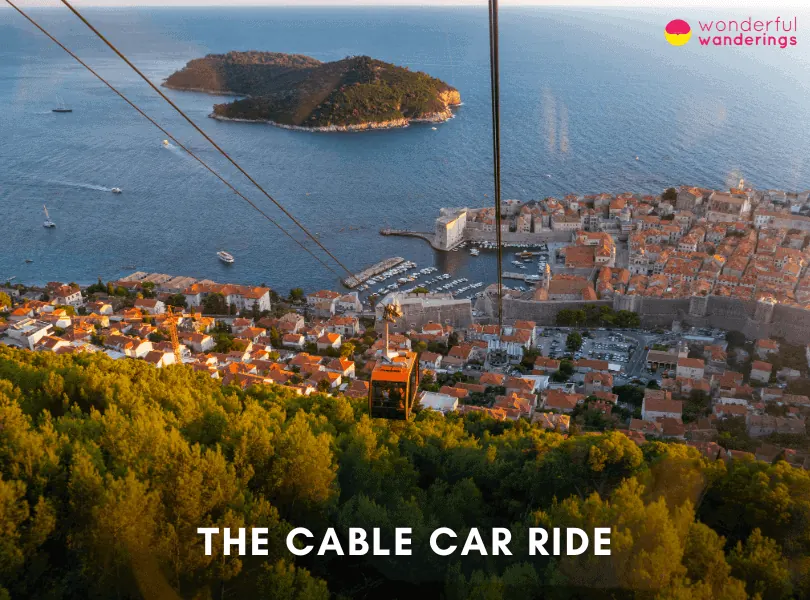
6. Game of Thrones Tour
Game of Thrones Tour in Dubrovnik takes visitors to the key filming locations used in the hit HBO TV series. You can get the chance to see sites like Lovrijenac Fortress (the Red Keep), Pile Gate (where the riot in King's Landing took place), the Jesuit Staircase (used in Cersei's Walk of Shame scene) and other spots around Dubrovnik's old town that served as the backdrop for the capital of the Seven Kingdoms, King's Landing. An expert local guide will provide commentary about the filming and the history of Dubrovnik itself, making connections between the real city and the world of Game of Thrones. There are opportunities to take photos with props from the show at sites like a replica of the Iron Throne. Most tours run 2-3 hours as the old town is located on a steep hill. The tours are best for older kids and adults who are fans of the show.
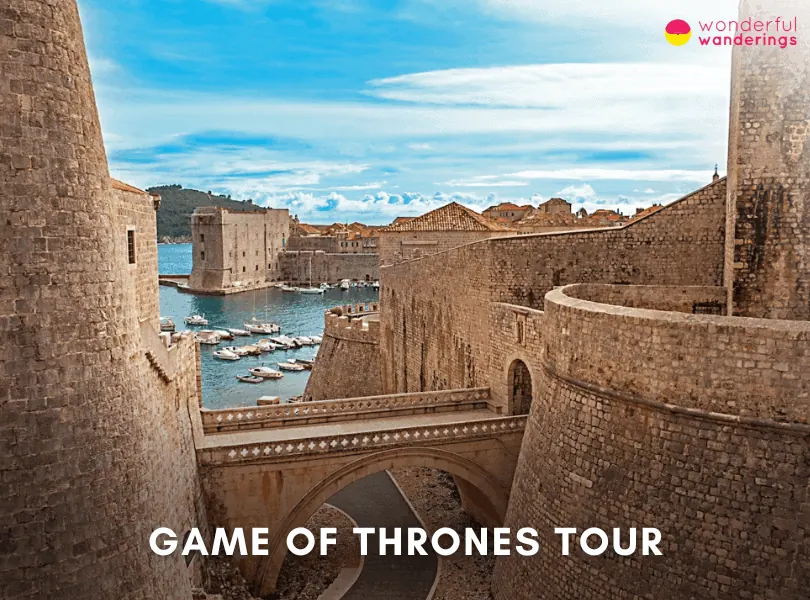
7. Porporela
Porporela is a pier and breakwater in Dubrovnik's old harbor. It was originally constructed in the 19th century to protect harbor boats from crashing waves and erosion. Porporela serves as a popular spot for both locals and tourists alike to enjoy refreshing swims, sunbathing and views of the sea and the iconic old city walls. Visitors can stroll along the pier and enjoy views of Lokrum Island, the old town walls and passing ships. Go for a swim during the summer months when locals gather to swim, sunbathe and jump from the rocks and walls. Watch water polo matches, which are often held here, relax on the benches and listen to the sound of waves against the walls. Porporela does not have an admission fee. It is perfect for people of all ages who want a refreshing swim and good views. The pier is located on the eastern side of Dubrovnik's old town, past the Peskarija fish market and Sveti Ivan Tower. It is easily accessible on foot while exploring the historic sights of the old city.
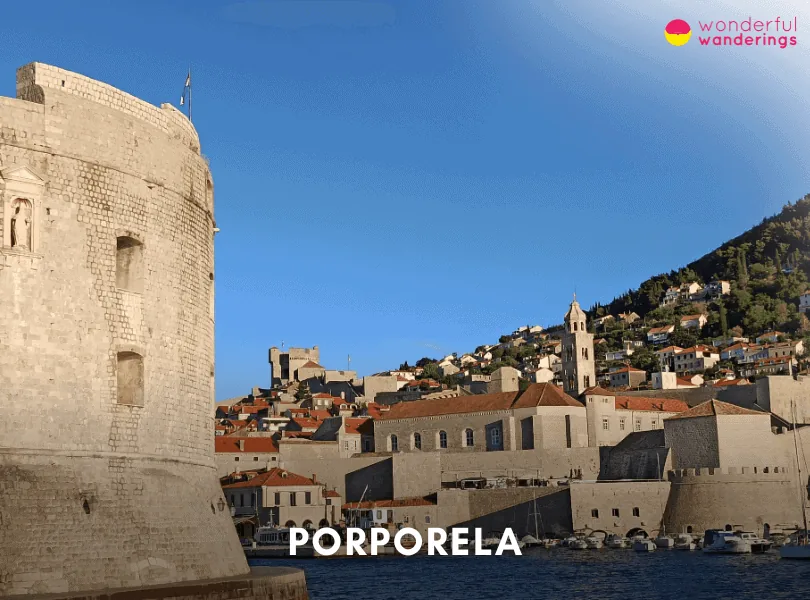
8. Fort Lovrijenac
Fort Lovrijenac, known as St. Lawrence Fortress, is located outside the western wall of Dubrovnik's old town in Croatia, perched 37 meters above sea level on a rocky cliff. This imposing triangular fortress offers visitors an incredibly scenic view over Dubrovnik and the Adriatic Sea from its three terraces. A top highlight is exploring the well-preserved fort interior, including seeing ancient canons, an inner courtyard and remnants of various eras such as Romanesque, Gothic and Renaissance architecture. The fort frequently hosts theatrical plays and performances, most notably Shakespeare's “Hamlet” during Dubrovnik's annual Summer Festival. Game of Thrones fans may recognize it as the Red Keep in King's Landing. Other activities include learning about the history of the fort through informational panels, taking plenty of photos of unobstructed panoramas and watching daring cliff divers plunge into the sea below during summertime competitions. Reaching the fortress involves climbing 200 steps, but the rewarding scenery at the top makes it worthwhile for most visitors.
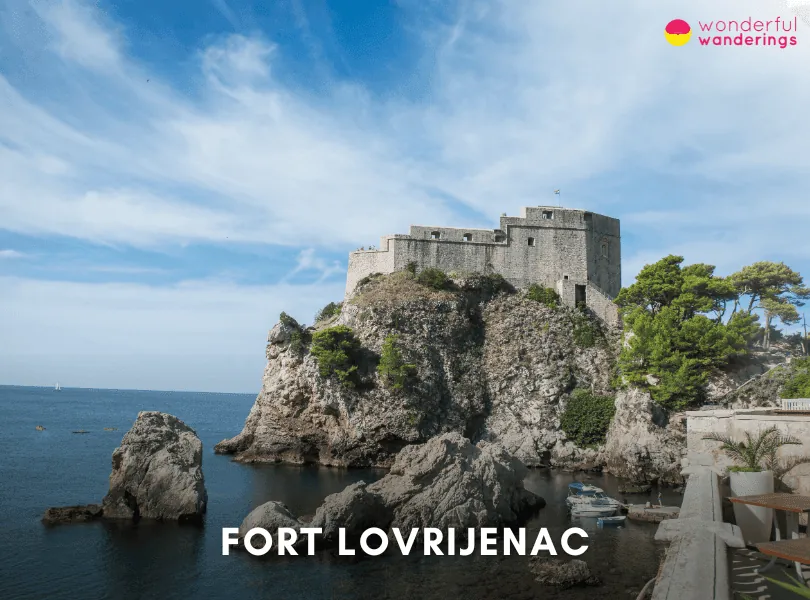
9. Try Local Cuisine
Try the local cuisine of Dubrovnik, which includes the black risotto, made with cuttlefish ink and often accompanied by mussels, clams and other shellfish. Another popular dish is buzara, a seafood stew typically made with mussels or shrimp, along with garlic, parsley, white wine and breadcrumbs. Meat dishes like peka, slow-cooked meats and vegetables baked under a bell-like lid and pasticada, a sweet and sour beef stew, have a long history here. Vegetables like Swiss chard and fruits like oranges, figs and pomegranates are abundant. Olive oil and local wines like Malvazija pair beautifully with dishes. Those with a sweet tooth can try favorites like arancini (candied orange or lemon peel), rozata (a custard with rose liqueur) and stonska torta (an unusual cake made with pasta and chocolate). Dubrovnik's restaurants range from cheap casual spots to Michelin-starred fine dining, but the focus is usually on fresh, high-quality local ingredients.
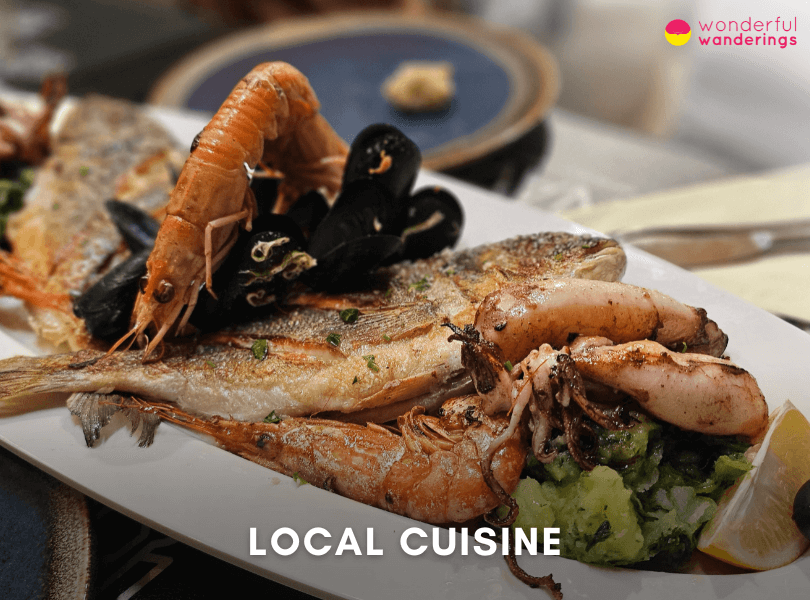
The main area to experience Dubrovnik's cuisine is in Old Town Dubrovnik, located in the city of Dubrovnik on the southern Adriatic coast of Croatia. Markets provide seasonal fruits, vegetables, olive oils and wines that chefs incorporate. Dishes reflect various cultural influences from Mediterranean, Italian and Balkan cuisines. Visitors can sample dishes at many restaurants, cafes and wine bars throughout Old Town. They can browse markets selling local produce and buy ingredients to cook themselves. There are cooking classes to learn how to make traditional dishes.
10. Wine Tasting Tour
A wine-tasting tour is an activity where visitors go to local wineries or wine bars to sample and learn about different types of wine. This typically involves visiting multiple wineries in a region known for wine production, such as Napa Valley, Tuscany or the wine regions near Dubrovnik, Croatia. At each winery, guests will taste a flight of wines, usually 5-6 different wines, while learning about the winemaking process and characteristics of each varietal from knowledgeable staff. The experience allows wine lovers to discover new wines they enjoy while seeing beautiful vineyards and cellars.
Tours in the Dubrovnik area often visit wineries on the nearby Pelješac Peninsula, known for full-bodied reds or small producers located on islands like Korčula. Guests may taste indigenous Croatian grape varietals they won't find anywhere else. Tours stop at multiple wineries for tastings and vineyard visits and some incorporate walking tours, visits to historic towns or even adventures like kayaking. They run from half-day to full-day trips and provide transportation to the wineries. The tours provide a fun way to combine wine tasting with sightseeing in the beautiful Dalmatian Coast region.

11. Museum Hopping
Museum hopping is a popular activity for visitors to Dubrovnik, Croatia. The city has several fascinating museums and galleries that provide insight into Dubrovnik's rich history, culture and art. Top museums include the Cultural History Museum housed in the 15th century Rector's Palace, showcasing the lavish lifestyle of past rulers; the Maritime Museum in St. John's Fortress, tracing Dubrovnik's naval history; the Museum of Modern Art featuring Croatian artists; and the moving War Photo Limited gallery displaying images from conflict zones worldwide. Many museums are concentrated in the Old Town area within the famous city walls. Visitors can purchase a Dubrovnik Card, allowing entry to 6 museums at a discounted rate, making museum hopping easy and affordable. Exploring 2 to 3 museums in a day is ideal for most visitors. Key exhibits range from Renaissance paintings and nautical artifacts to contemporary installations and thought-provoking war reportage. Museum hopping lets visitors discover different facets of Dubrovnik while escaping the summer heat indoors.
Visitors get an insightful overview of Dubrovnik's culture and history by visiting several museums. Visitors can view exhibits at the museums, often with audio guides available. Some museums, like War Photo Limited, have special temporary exhibits. The Rector's Palace hosts classical music events in summer. Museum hopping appeals to adults interested in culture, history and art. Some museums, like the Natural History Museum, have interactive exhibits suitable for families.
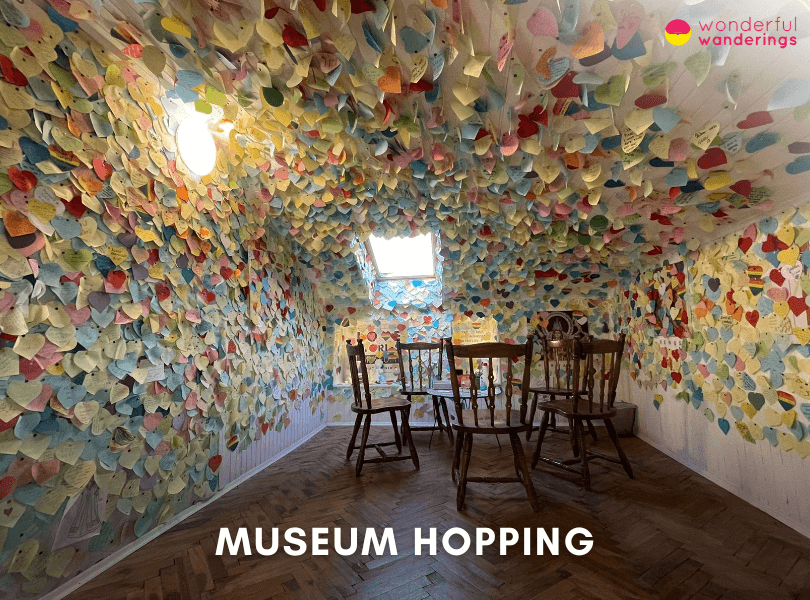
12. Beach hopping
Beach hopping is a popular activity in Dubrovnik with its location on Croatia's Dalmatian Coast overlooking the dazzling Adriatic Sea. Famous beaches in Dubrovnik include Banje Beach, located right by the old city walls with lounge chairs, water sports rentals and the popular East West Beach Club restaurant and nightclub. Sveti Jakov Beach is a more local spot surrounded by pine trees and fine pebbles, while Copacabana Beach, farther down the coast, has good facilities like showers and rows of umbrellas, along with a lively beach bar. Secluded Betina Beach can only be accessed from the sea, leading to its pristine, shallow waters surrounded by caves perfect for swimming. Travelers can take a short ferry to beach hop around Lokrum Island's main rocky beach, small pebble coves and unique nudist beach. Beach hopping allows exploring Dubrovnik's mix of pebble beaches tucked below cliffs to resort-style sandy beaches with beach clubs, all showcasing gorgeous turquoise waters and the city's medieval walls looming in the distance.
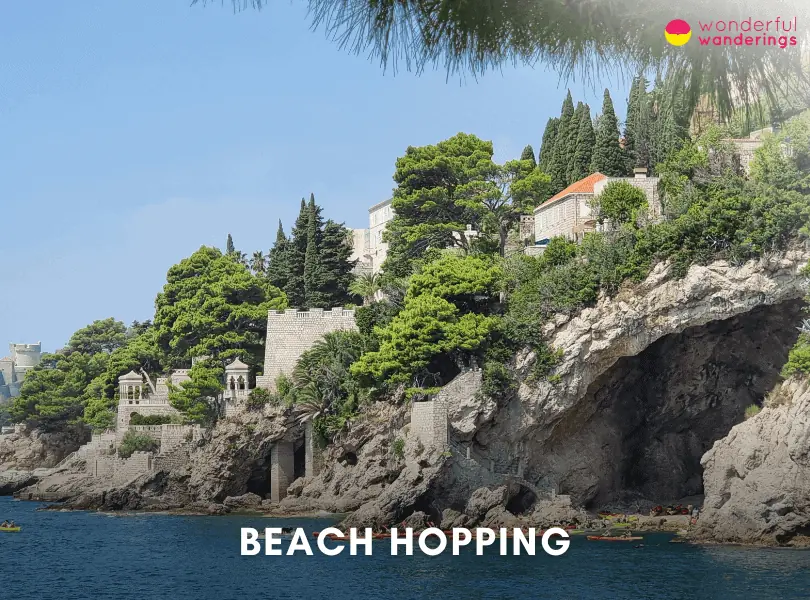
Visitors can swim, sunbathe, rent water sports equipment like jet skis and kayaks, relax at beachfront cafés and bars, enjoy seafood lunches and go on short boat trips to small coves and islands with hidden beaches. There are lively party beaches as well as more serene getaways.
Beach hopping appeals to all types of travelers, including families, couples, friend groups and solo travelers. The beaches offer options for those seeking relaxation, water sports, nightlife atmospheres, sightseeing and more. There are no admission costs for beaches, but there may be rental fees for equipment, chairs, etc., at some resort or club-style beaches.
13. Franciscan Church and Monastery
Franciscan Church and Monastery is a large complex in Old Town Dubrovnik consisting of a church, monastery, museum, library and pharmacy. Visitors can explore the beautiful mid-14th century Romanesque cloister with its lush courtyard garden and unique sculpted columns. Each capital topping the slim paired columns features a different figure like an animal, human head or floral design. Guests can tour the monastery's museum to see its collection of liturgical artifacts like 15th-century silver crosses, 18th-century paintings and gold jewelry. Another highlight is visiting the ancient pharmacy that has been operating since 1317, making it one of the oldest in the world. You can still have prescriptions filled using traditional herbs and recipes. The library contains over 20,000 books, 1200 manuscripts and has exhibits on display.
Visitors can tour the monastery and museum, explore the cloister and garden, have prescriptions filled at the historic pharmacy and view rare texts in the library. It attracts history and architecture enthusiasts. The monastery is located right off Placa Street near Pile Gate in central Old Town. It is easily accessible on foot once in the pedestrian zone.
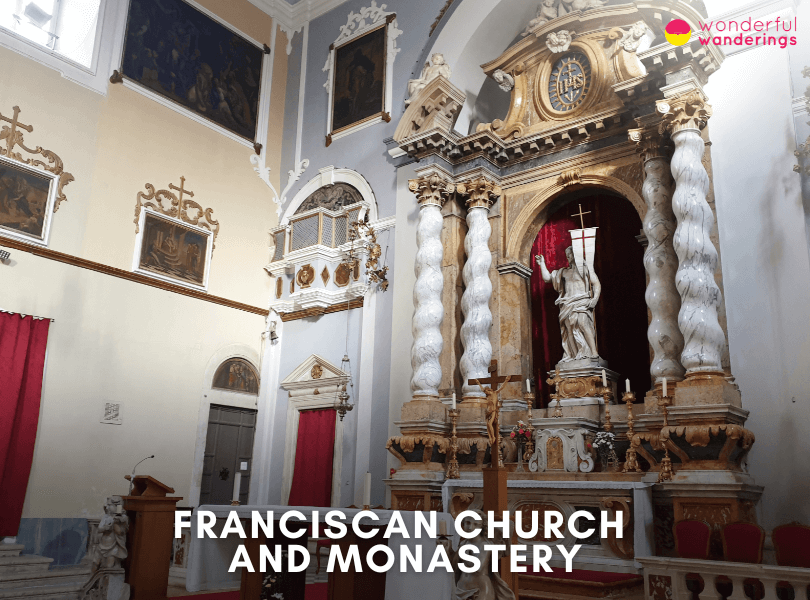
14. Stradun
The Stradun is the main street that runs through the old town of Dubrovnik, Croatia. It is located in the walled city and is often called Dubrovnik's “main street”. The Stradun is significant because it is the historic focal point of the city. It was built in the 14th century and served as the main street through the city center. It was paved with limestone in 1468. It is a popular pedestrian zone lined with shops, restaurants, churches and palaces.
Visitors to the Stradun can go shopping, dine at restaurants and cafes, visit historic landmarks like the 15th-century Onofrio's Fountain, see the Clock Tower and walk the length of the street to take in the architecture and activity. It's also a common gathering place for events and entertainment. The Stradun appeals to all visitors to Dubrovnik, including families, couples, tourists and locals. Walking the historic street and taking in the sights of the old town is an ideal activity for all. Walking the Stradun itself is free. There are no admission tickets required. Visitors only need to pay for any shopping, dining or entrance fees to landmarks along the way.
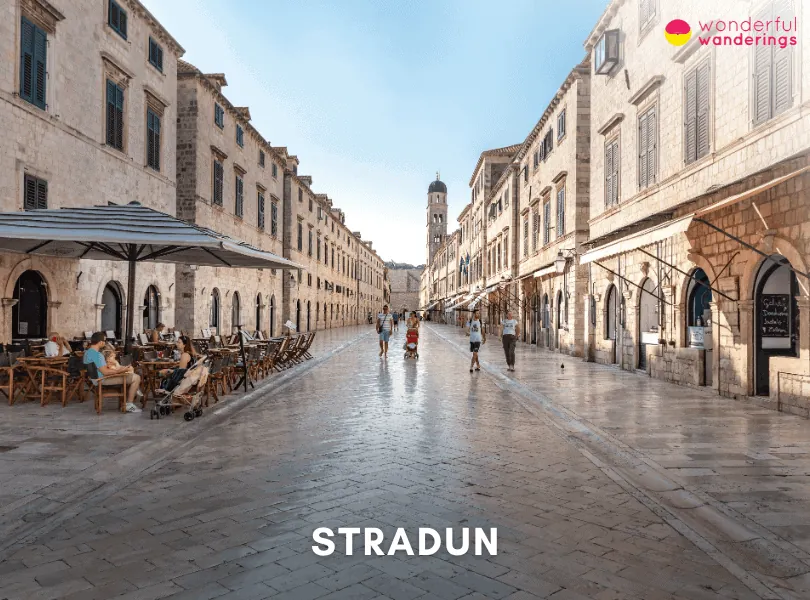
15. Day Trip to Elaphiti Islands
Day Trip Elaphiti Islands on the coast of Dubrovnik in southern Croatia. The islands sit in the beautiful blue Adriatic Sea with views back towards the old medieval city of Dubrovnik. A popular day trip from Dubrovnik is to take a boat ride out to explore these picturesque islands. There are 13 islands in the Elaphiti archipelago, but tours typically visit the three most popular inhabited ones, namely Koločep, Lopud and Šipan.
The journey starts by boarding a traditional wooden boat, either from Dubrovnik's Old Town harbor or the main port at Gruž. It is a relaxing 45-minute cruise along the coastline to reach the first island stop. Highlights include swimming and snorkeling through caves like the “Blue Cave”, wandering around the quiet village and hiking along scenic trails between the two settlements. The second stop is famous for having sandy Šunj Beach, special for this typically rocky coastline. Visitors can explore Lopud's botanical gardens, churches and medieval architecture. The last stop is Šipan, the largest island covered in lush pine forests. Visitors can check out Šipan's various churches and 15th-16th century aristocratic architecture or simply relax at the harbor.
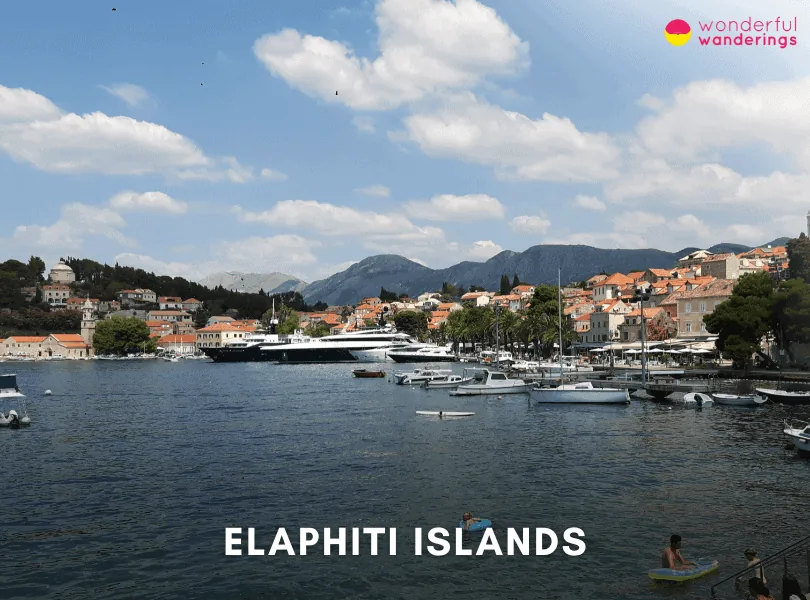
16. Minčeta Tower
Minčeta Tower is located in the city of Dubrovnik, Croatia, along the Northwestern wall of Dubrovnik's famous medieval city walls. The tower is sometimes referred to by its alternative Croatian name, “Tvrđava Minčeta”. The round fortress tower was originally built in 1319 as a quadrilateral fort but was later expanded to its current circular design in 1464. Today, the Minčeta Tower is one of the iconic symbols of the city of Dubrovnik.
The main attraction of the tower is climbing to the very top terrace for stunning panoramic views overlooking the orange rooftops of Old Town Dubrovnik, the sparkling blue Adriatic sea and the surrounding landscapes. There is no admission fee to enter the tower specifically, but you need to buy a ticket to walk along the City Walls, which grants you access. The tower is perfect for visitors of all ages to climb up steep ancient staircases safely.
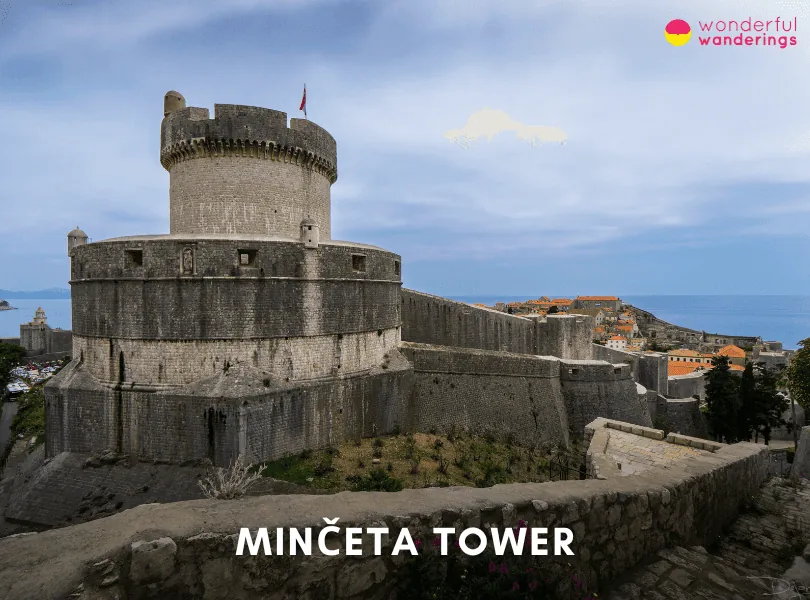
17. War Photo Limited in Dubrovnik
War Photo Limited is a compelling exhibition space in Dubrovnik, Croatia dedicated to showcasing impactful war photojournalism. Founded by acclaimed New Zealand photojournalist Wade Goddard, the museum is spread over two floors and 350 square meters inside Dubrovnik's historic old city.
The museum features temporary exhibitions and a permanent exhibition focused on the wars in former Yugoslavia. Striking works by renowned war photographers from around the world are displayed in a raw, unfiltered way. The exhibitions juxtapose the violent and absurd realities of modern warfare across various global conflicts. The museum offers an unflinching look at the human suffering and devastation of war. Reviews describe the experience as uniquely emotional and powerful for understanding war's harsh realities. War Photo Limited has received outstanding reviews and awards, including designation as an Experts' Choice attraction by Concierge. It is open daily from 10 am to 5 pm during spring and fall, with extended hours in summer. Entrance fees are 10€ for adults, with discounts for students and groups. War Photo Limited gives visitors a compelling opportunity to reflect on war's impacts through impactful photojournalism. The museum's exhibitions provide an unvarnished portrayal of the effects of armed conflict on humanity.
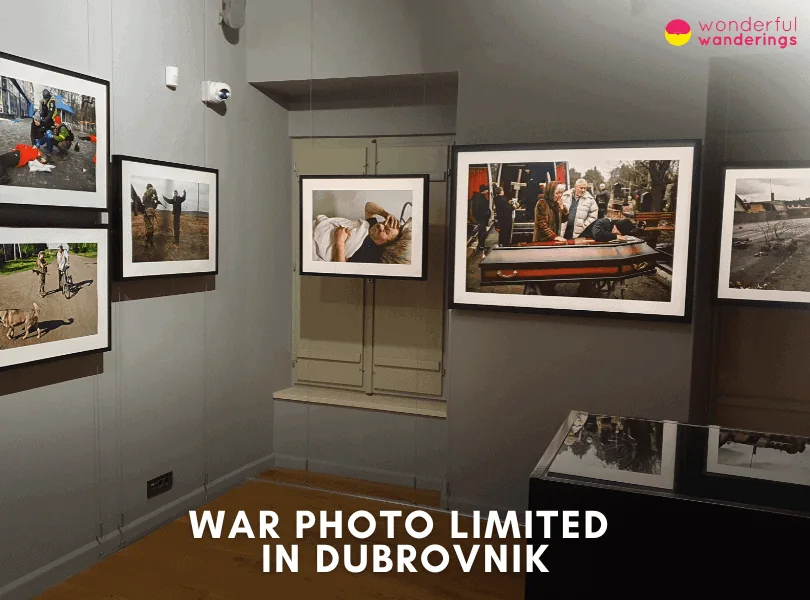
What are the best museums to visit in Dubrovnik?
Listed below are the best museums to visit in Dubrovnik.
- The City Walls. The City Walls of Dubrovnik encompass the entire old town and run uninterrupted for nearly 2 kilometers. The walls date back to the 8th century, but most of the existing ones were constructed between the 12th and 17th centuries. The City Walls are not a traditional museum but rather an outdoor living museum that allows visitors to immerse themselves in history and architecture while taking in views of Dubrovnik. The City Walls are well-preserved medieval walls that have never been conquered. Visitors can walk along the entirety of the walls, with five fortresses, stopping to take photos of views, inspect historical features like cannons and visit small museums or cafes along the route. The full walk takes 1.5-2 hours. Entry tickets to the City Walls start at €14 ($15, £12) per person.
- War Photo Limited. War Photo Limited showcases stirring images from worldwide conflicts, using renowned photojournalists' works to underscore war’s injustice to innocents and combatants. Its core permanent exhibition features the 1990s Yugoslav Wars surrounding Yugoslavia’s breakup but ranges to contemporary hotspots like Afghanistan, Syria and Myanmar. Occurring poignantly in still-recovering Dubrovnik, the museum ultimately aims to increase global understanding of war’s demoralization and senselessness through empathy-evoking photographs.
- Rector’s Palace. Rector’s Palace's Cultural History Museum provides local insights spanning over 500 years. Construction began when Dubrovnik gained independence in the 13th century, with the current lavish building integrating Gothic, Baroque and Renaissance finishes. Walking through ornately appointed diplomatic quarters and council rooms hints at the Rector’s intricate regional trade and seafaring roles. The palace’s size and fortification hint at instability during the city-state’s complex governing era.
- Museum of Modern Art. Museum of Modern Art Dubrovnik predominately on pivotal local artists’ late 19th century onward paintings and sculptures. The striking Renaissance-inspired building itself garners acclaim. Visitors can wander the sunlit floors, revealing interesting artistic movements like the Croatian “Colorists.”
What are the best things to do in Dubrovnik with kids?
Listed below are the best things to do in Dubrovnik with kids.
- Walk the Dubrovnik City Walls. Walk the Dubrovnik City Walls, which date back to the 13th century and take 1.5 hours to walk. Kids will enjoy exploring the old fortifications that encircle the city. The views of the red rooftops and coastline are stunning. The entrance fee is included with the Dubrovnik Pass.
- Visit Lokrum Island. Visit Lokrum Island, which is filled with nature trails, beaches and exotic plants and wildlife. Kids can see peacocks roaming freely and swim at the “Dead Sea” saltwater lake. There is an old monastery and the ruins of Fort Royal to explore. Lokrum makes for a perfect day trip escape from the summer city heat. There is a small entrance fee to enter the nature reserve area.
- Ride the Cable Car to Mount Srd. Ride the cable car to Mount Srd, which offers beautiful panoramic views over Dubrovnik on the 4-minute ride up Mount Srd. For older kids and teens, these rides allow further exploration of the terrain and fortresses.
- Play at Pile Park Playground. Play at Pile Park Playground, The Old Town's only playground that has swings, slides and play structures for younger kids to enjoy. It is located right by Pile Gate and there is no admission fee. It is best for morning and evening visits during Dubrovnik's hot summer days.
What are the best activities for a business traveler in Dubrovnik?
Listed below are the best activities for a business traveler in Dubrovnik.
- Walking the old city walls. Walking the old city walls and taking a break from business meetings to explore the scenic old town walls and fortresses is a relaxing way to take in the incredible views of the sea and get some exercise. The towering ramparts encircle the whole of the old town and offer stunning vistas over terracotta rooftops, the sparkling Adriatic and distant islands. A walk here makes an enjoyable diversion from a busy work schedule.
- Attend a cooking class. Attending a cooking class is a fun team bonding activity during downtime from business meetings, where you can get a taste of Croatian culture by learning to make traditional dishes like black risotto, fish stew or even wine. It's a hands-on way to gain insight into local food, customs and hospitality.
- Go sea kayaking. Go sea kayaking along the rugged coastline offers a different perspective on Dubrovnik's old town between business meetings and serves as an adventurous yet accessible activity for all abilities. Glide right up to the medieval ramparts and soak in views of fortresses and stone towers from the water for a uniquely memorable experience.
- Visit a museum. Visit a museum and business travelers can take advantage of the opportunity for an educational activity to enjoy during free time outside of meetings, perhaps learning more about Dubrovnik's rich seafaring past or seeing works by great Croatian artists. An injection of arts and culture makes for an edifying break from commerce.
Where is Dubrovnik?
Dubrovnik is located in southern Croatia along the stunning Dalmatian Coast overlooking the waters of the Adriatic Sea, with coordinates at 42°38′N 18°06′E. This medieval walled city is located 218 kilometers (135 miles) South of Zagreb, Croatia's inland capital. Dubrovnik sits at Croatia's most southern point, right on the border with Montenegro to its southeast. Dubrovnik's closest major city neighbor is Split, the second largest city in Croatia, located 242 kilometers (150 miles) Northwest. The drive between Split and Dubrovnik takes 4 hours. Dubrovnik's location along Croatia's southern Adriatic Sea coastline allows it to have a mild Mediterranean climate, making it an appealing seaside resort city. Its location establishes Dubrovnik in close proximity to other destinations in the region.
What is the history of Dubrovnik?
Dubrovnik was founded in the 7th century by refugees fleeing the destruction of the nearby town of Epidaurum. The initial settlement was on a small island called Laus and was protected by defensive walls. Dubrovnik, then known as Ragusa, grew into an important trading center and seaport and became a powerful merchant republic rivaling Venice. Ragus or Dubrovnik operated as a prosperous and independent city-state. It was a shipping, commerce and culture center on the Adriatic coast. A massive earthquake destroyed much of the city in 1667, including its Renaissance-era palaces and architecture. It was rebuilt in the Baroque style.
Ragusa's independence was ended by Napoleon in 1808 after his troops entered and occupied the city. It was then ruled by the Austrian Empire from 1815-1918. Dubrovnik became part of the Kingdom of Serbs, Croats and Slovenes, which later became Yugoslavia. It remained part of Yugoslavia until Croatia declared independence in 1991. Dubrovnik was besieged by Yugoslav forces for seven months and suffered extensive damage from artillery attacks. The city was rebuilt after the war.
What language is spoken in Dubrovnik?
Croatian is the official language of Croatia and the main language spoken in Dubrovnik (referred to locally as “naški” or the Dubrovnik dialect). English is widely spoken in Dubrovnik due to its popularity as a tourist destination. It is estimated that around 60% of residents speak English.
There are other languages like Italian, German and French, which are spoken by some portion of the population in Dubrovnik but not as widely as Croatian and English. The local Dubrovnik dialect contains influences from Italian and other languages due to the city's history of interactions with various cultures and empires. But it remains mutually intelligible with standard Croatian. Most young people and those working in the tourism industry in Dubrovnik can speak English well, allowing English-speaking tourists to get around and communicate easily.
What time zone is Dubrovnik in?
Dubrovnik is located in the Central European Time (CET) zone, with a standard time defined as UTC+1. This means it is 1 hour ahead of Coordinated Universal Time. The Internet Assigned Numbers Authority identifier for Dubrovnik's time zone is “Europe/Zagreb”. Dubrovnik observes Daylight Saving Time (DST) during the summer months. On the last Sunday of March, clocks are moved forward by 1 hour to UTC+2, switching the time zone to Central European Summer Time (CEST).
How many people live in Dubrovnik?
Dubrovnik, located in southern Croatia, has a total population of 28,434 as of 2023. There are 13,499 men, comprising 48% of the population and 14,435 women, comprising the remaining 52%. Dubrovnik has 1,190 babies under four years old, including 577 girls and 611 boys. There are 1,303 young children between 5 and 9 years old, with 671 boys and 632 girls. The city has 1,414 pre-teens aged 10-14, made up of 729 boys and 684 girls. Dubrovnik has 1,440 teenagers between 14 and 19 years old, including 739 male and 701 female teens. Dubrovnik only has one resident who is over 100 years old, a centenarian woman.
What are the most interesting facts about Dubrovnik?
Listed below are the most interesting facts about Dubrovnik, Croatia .
- Currency. The currency adopted in Croatia has been in Euro since January 01, 2023, replacing the Croatian kuna (HRK) as its official currency. 1 Euro is equivalent to about 7.5 kuna. Many shops, hotels and restaurants in tourist areas accept euros and you can get a better exchange rate by paying in kuna.
- Time Zone. The time zone of Dubrovnik is in the Central European Time Zone, which is UTC+1. It is 6 hours ahead of Eastern Standard Time (EST) in the US.
- Language. The official language is Croatian. English is widely spoken in tourist areas. German and Italian are also relatively common. Learning a few basic phrases in Croatian is appreciated by locals.
- Power Plugs. The power plugs of Dubrovnik use a standard electrical voltage of 220-240V. Power outlets accept types C and F plugs with two round prongs. Travelers from North America will need an adapter and potentially a voltage converter.
How many days are needed to see Dubrovnik?
It is recommended to stay for 2 to 5 days, which is enough time to see the highlights of Dubrovnik. This number of days allows immersion into Dubrovnik and surrounding areas, including multiple day trips and time to sample local cuisine and culture. It enables an in-depth experience without a rush and gives maximum flexibility to experience sites in and around Dubrovnik fully.
Is Dubrovnik worth visiting?
Yes, Dubrovnik is worth visiting, offering visitors an authentic and affordable European city break. The historic old town has a well-preserved Gothic, Renaissance and Baroque architecture. You can see the city's medieval walls offer breathtaking views of red-tiled rooftops, the sparkling Adriatic Sea and nearby islands. There is interesting history to uncover and delicious local cuisine to sample. Dubrovnik should be on your itinerary when visiting Croatia.
Is Dubrovnik expensive to visit?
Yes, Dubrovnik is considered to be a fairly expensive travel destination, especially compared to other cities in Croatia or the Balkan region. Prices for accommodation, food, transportation and activities tend to be higher than in many other cities. Accommodation prices are high, especially in the old town and during peak tourism season. Hotel prices start at €91 ($100, £79) per night. Private apartments and hostels are cheaper options. Food prices in restaurants are quite high, with a typical meal costing €32 ($35, £27) per person. More budget-friendly options exist for eating local street food, picnics or cooking your own meals. The Dubrovnik Card can help save on costs for top sights. Transportation like buses and taxis tend to cost more than in other Croatian destinations . Rental cars are moderately priced. Several sources noted that Dubrovnik's popularity from Game of Thrones tourism, cruise ships and rising tourism in general have driven prices up very high in recent years. Visiting Dubrovnik needs proper planning on accommodation and food. Budget-conscious travelers can still enjoy the city without breaking the bank. The expenses seem worth it to many visitors who want to see Dubrovnik's beautiful sites.
Is Dubrovnik safe to visit?
Yes, Dubrovnik is very safe to visit. It is one of Croatia's most popular tourist destinations. The city has low crime rates and is considered safe for travelers. Violent crime is rare and petty crime aimed at tourists, like pickpocketing, does occur but is relatively uncommon. Dubrovnik's city center and attractions are well-lit and have a visible police presence. Basic precautions like being aware of your surroundings, not leaving belongings unattended and avoiding poorly lit areas at night will ensure your visit to picturesque Dubrovnik is trouble-free. The welcoming locals add to this beautiful coastal city's pleasant, safe atmosphere.
Is Dubrovnik easy to visit with kids?
Yes, Dubrovnik is easy to visit with kids. Dubrovnik can be a great destination for families, though it may require some advanced planning. The town offers lots for kids to explore, like climbing the historic city walls, wandering the narrow alleys and spotting the sea from overlook points along the way. There is a cable car up to a mountaintop overlooking the area that kids tend to enjoy. Nearby Lokrum Island makes an easy, kid-friendly day trip, with wildlife spotting opportunities, a sea cave to find and a “Dead Sea” saltwater lake for swimming. Some travel with older kids use Dubrovnik as a base for day trips to destinations like Mostar or Kotor for added family adventure.
What is Dubrovnik famous for?
Firstly, Dubrovnik is famous for its medieval old town, which is a UNESCO World Heritage Site. Secondly, Dubrovnik became very well-known recently for serving as a filming location for the popular TV show Game of Thrones, where parts of the old town stood in for the fantasy city of King's Landing. Thirdly, Dubrovnik has been called the “Pearl of the Adriatic” and is renowned for its beautiful location on the sparkling blue Adriatic Sea, with scenic coastal views, beaches and nearby islands. It has long been a major tourist destination. Fourthly, Dubrovnik has a rich cultural and architectural heritage seen in Gothic, Renaissance and Baroque buildings and monuments like churches, palaces, monasteries and fountains. Lastly, Dubrovnik has a vibrant culinary scene featuring Mediterranean cuisine with fresh seafood, local wines and traditional dishes.
Who are the most important people born in Dubrovnik?
Listed below are the most important people born in Dubrovnik.
- Marin Držić (1508-1567). Marin Držić was a Croatian writer and playwright who lived in the 16th century. He was born in Dubrovnik in 1508 and died there in 1567. Držić is considered one of the fathers of Croatian literature and a key figure in the European Renaissance comedy. He wrote acclaimed comedies and pastorals that celebrate themes like love, liberty and sincerity while mocking greed and tyranny. His plays are still performed in Dubrovnik and throughout Croatia today.
- Ruđer Bošković (1711-1787). Ruđer Bošković was a scientist and polymath born in Dubrovnik in 1711 and died in Milan in 1787. He made important contributions in fields like physics, astronomy, mathematics, philosophy and more. Bošković developed groundbreaking theories on the structure of matter and the fundamental forces of nature. He designed scientific instruments and participated in landmark surveys to measure the shape of the earth. Bošković was a member of scientific institutions across Europe and carried out diplomatic work on behalf of the Dubrovnik Republic.
- Ivan Gundulić (1589-1638). Ivan Gundulić was a Baroque poet and playwright born to a noble family in Dubrovnik in 1589. He died in his home city in 1638. Gundulić is renowned for lyrical poetry and plays fusing themes from Balkan folk epics and Western literary influences. His acclaimed epic poem “Osman” celebrated the Polish-Ottoman wars, while the pastoral play “Dubravka” examined the borders between reality and poetic vision. Gundulić's innovative works made him a towering figure in Croatian literature.
- Miho Pracat (1522-1588). Miho Pracat was a wealthy shipowner born in the village of Lopud near Dubrovnik in 1522 and died in Dubrovnik in 1588. He donated his fortune to Dubrovnik to fund defenses, infrastructure projects and arts/culture. Projects he financed include harbor fortifications, an aqueduct that brought fresh water from a spring 12km away and Dubrovnik's first orphanage. The sculpture of Pracat near Orlando's Column on Dubrovnik's main street honors him as the only commoner given a statue in the medieval Dubrovnik Republic.
- Vlaho Bukovac (1855–1922). Vlaho Bukovac was a prominent Croatian painter born in the town of Cavtat near Dubrovnik in 1855. He died in Zagreb in 1922. Bukovac was one of the leading Croatian artists of his era, renowned for his vivid use of color and masterful portraits. He studied in Vienna, Prague and Paris, bringing new painting styles and techniques to Croatian art. Bukovac created religious paintings for churches across Croatia and portraits of numerous well-known figures.
What to eat in Dubrovnik?
Listed below are what you can eat in Dubrovnik.
- Oysters from Ston. Oysters from Ston is popular in the country and is farmed in the waters of Mali. Ston Bay is famous for its unique, briny flavor and meaty texture. These succulent oysters are best sampled raw on the half shell, with just a squeeze of lemon.
- Black Cuttlefish Risotto. Black Cuttlefish Risotto is tinted by the ink of cuttlefish and flavored by its tender meat and seafood stock. It is a specialty food in the city of Dubrovnik and the coastal region, made even more delicious by the incredible local white wine paired with it and one of the best local food to eat in Croatia .
- Peka. Peka refers to a traditional Dubrovnik cooking technique where meats and vegetables are slow-cooked under a baking bell with hot coals. Tender, succulent meats like veal or octopus baked peka style are considered a specialty food in the city.
- Rožata. Rožata is a rich, custard-like dessert that has roots dating back to medieval Dubrovnik and is one of the most popular foods in the country due to its floral perfume smell.
- Kumquat Liqueur. Kumquat Liqueur is made from an abundance of sweet local kumquats, this after-dinner drink features the tiny orange citrus fruits soaked in brandy. It is a specialty in the city of Dubrovnik that serves as a tart, refreshing digestif.
What are the best places to eat in Dubrovnik?
Listed below are the best places to eat in Dubrovnik.
- Nautika. Nautika is renowned for its sophisticated seafood dishes and extensive wine list, served with white tablecloth service on a romantic terrace overlooking the city walls and Old Port. Head chef Mario Bunda puts a creative twist on local ingredients with standout dishes like Adriatic tuna tartare, lobster medallions and black cuttlefish risotto. Nautika enjoys a long-held reputation as the finest dining experience in Dubrovnik and one of the restaurants to eat in Dubrovnik.
- Proto. Proto is the oldest and one of the most respected restaurants in the city of Dubrovnik, focusing on time-honored regional recipes. It occupies a vaulted stone space on an Old Town side street serving dishes like salt-baked whole fish, lobster “Proto” style with bisque sauce and shrimp and octopus black risotto. 360°. 360° is a sleek fine dining restaurant located at the Old Town's main promenade. It is one of the top restaurants to eat in the city of Dubrovnik. The restaurant's contemporary menu from chef Marijo Curić focuses on seasonal local ingredients, beautifully presented in dishes like just-seared tuna and squid ink black risotto. Romantic outdoor tables placed along the historic city walls make 360° one of Dubrovnik's most striking settings for culinary indulgence.
What are the best areas to stay in Dubrovnik?
Listed below are the best places to stay in Dubrovnik.
- Dubrovnik Old Town. Dubrovnik Old Town is located in the center of the city, enclosed by ancient walls and filled with narrow streets, historic buildings, restaurants and shops. Staying here gives you easy access to major attractions like the city walls, Stradun (main street) and cultural sites. The town is generally safe for solo travelers and is a peaceful neighborhood.
- Lapad. Lapad is known for its beautiful beaches and promenade. Lapad is a quieter area compared to the Old Town. It offers a range of accommodations, restaurants and parks, making it ideal for a more relaxed stay while still being close to the city center. Lapad is generally safe with a more relaxed atmosphere, suitable for solo travelers looking for a peaceful stay.
- Pile. Pile is located at the western entrance to the Old Town, Pile is a convenient location with easy access to landmarks like Lovrijenac Fortress and the starting point for walking the city walls. It is close to restaurants and has a bus stop for exploring further. It is relatively safe for solo travelers and those with families due to its proximity to the Old Town and well-traveled routes.
- Ploče. Ploče offers views of the Old Town and Lokrum Island. It's a bit quieter than the Old Town but still within walking distance. Ploče is known for luxury accommodations and beautiful vistas. It is a safe neighborhood to stay in for solo travelers and families.
- Gruž. Gruž is a residential area and the city's main port and transportation hub. It is where ferry docks are and offers a local market, making it a practical choice for those preferring a quieter stay away from the tourist crowds. It is a safe neighborhood due to its residential nature, suitable for those seeking a quieter environment and willing to explore the city through its transportation hub.
What are the best accommodations to stay in Dubrovnik?
Listed below are the best accommodations to stay in Dubrovnik.
- Club Dubrovnik Sunny Hotel by Valamar. Club Dubrovnik Sunny Hotel by Valamar is a family-friendly hotel close to Dubrovnik designed for a fun-filled holiday. It features exciting amenities such as pools and recreational activities suitable for families. It is located close to beaches and offers a relaxed atmosphere where families can unwind while being conveniently near the city. The peaceful seaside location makes it perfect for relaxation and is one of the best hotels in Dubrovnik.
- MirÓ Studio Apartments. MirÓ Studio Apartments, located near the Old Town, provide a homely vibe. It is ideal for self-sufficient travelers, as it offers the convenience of cooking facilities for those who prefer to prepare their meals. They afford guests the feeling of being residents while being close to Dubrovnik's main attractions. Its central location is ideal for sightseeing and belongs to the list of hotels in Dubrovnik that offer good accommodation.
- Hotel Stari Grad. Hotel Stari Grad is located in the center of the Old Town. Its intimate setting appeals to guests who desire to immerse themselves in the city's rich history. It is an ideal choice for those wanting an authentic experience while having easy access to attractions. It is one of the recommended hotels to stay in Dubrovnik.
How to get to Dubrovnik (DBV) Airport?
There are a few ways to get to Dubrovnik (DBV) Airport. These are by airport shuttle services, taxi or rideshare, bus and private transfers. Firstly, by airport shuttle services, some hotels in Dubrovnik offer shuttle services to the airport for their guests. You can check with your accommodation provider to see if they provide this service and if it needs to be booked in advance. Secondly, these services are readily available throughout Dubrovnik by taxi or rideshare. You can easily flag one down or find them at taxi stands in the city. They provide a direct and convenient way to reach the airport. Thirdly, a bus service operated by Libertas connects the city center to Dubrovnik Airport. Bus routes 11 and 27 run between the airport and the main bus station in Gruž. You can catch these buses at various stops along the route. Timetables are usually available at bus stops or can be checked online. Lastly, by private transfers, these services, including shuttle vans and cars, can be booked in advance to take you directly from your location in Dubrovnik to the airport. Several companies offer this service, allowing you to schedule a convenient pick-up time and location.
How to get from Dubrovnik to Zagreb?
Dubrovnik to Zagreb is 606 kilometers (373 miles) via E65 and E71. Getting to Zagreb from Dubrovnik is possible in a few ways. These are by plane, train and bus. Firstly, Croatia Airlines operates daily by plane, with direct flights taking 1 hour. Plane tickets are more expensive but can be found discounted. Secondly, by train, the closest train station to Dubrovnik is Ploče, which is 2 hours away. To travel by train requires first taking a bus from Dubrovnik to Split and then boarding a train from Split to Zagreb, which takes an additional 6-7 hours. Lastly, by bus, buses depart from Dubrovnik bus station and arrive at Zagreb bus station. The bus journey takes 10-12 hours.
Where to go shopping in Dubrovnik?
There are several great places to go shopping in Dubrovnik. These are Stradun Street, Gundulićeva Poljana Market, specialty stores and boutiques and local arts and craft stores. Firstly, Stradun Street is the main pedestrian street in the Old Town that has shops, cafes and souvenir stores. This is where you can find many high-end and touristy-worthy places for shopping. Secondly, Gundulićeva Poljana Market in the center of the Old Town sells fresh produce, local foods like olive oil and wine, souvenirs and crafts. Thirdly, specialty stores and boutiques like Dubrovačka Kuća for handicrafts, Uje for olive oil products, Clara Stones for jewelry and Croatia for high-end ties and scarves. Lastly, local arts and crafts stores are smaller stores selling things like paintings, ceramics and embroidered goods made locally in Dubrovnik.
What festivals or events are taking place in Dubrovnik?
Listed below are the festivals or events that are taking place in Dubrovnik.
- Dubrovnik Summer Festival. Dubrovnik Summer Festival is an annual cultural event held since 1950, from July 10th to August 25th. Over 70 theatres, music, dance, folklore and other performances and events are held at over 20 open-air and indoor venues in the Old Town. It attracts some of Croatia's top artists as well as renowned international performers. This festival in Dubrovnik showcases the best of music, drama and arts, aiming to promote Dubrovnik's cultural heritage and artistic traditions.
- Good Food Festival. Good Food Festival is a culinary festival organized by the Dubrovnik Tourist Board since 2014. It spans two weeks and offers food and wine tastings, workshops, special festival menus at restaurants, dinner events and more. Highlights include the “Dubrovnik Table” spanning the length of main street Stradun, with local chefs and restaurants presenting dishes and producing special menus. Visitors can taste regional wine and food specialties, learn about traditional cuisine in workshops and dine at discounted prices from the best restaurants located in Dubrovnik.
- Dubrovnik FestiWine. Dubrovnik FestiWine is a festival that happens only in this city, gathering over 100 regional vintners to showcase and promote local Dalmatian wines. Winemakers offer tastings of wines like Žlahtina and Vrbnička Žlahtina to visitors at organized events. Some restaurants create custom food and wine pairings, while the festival has cultural performances like traditional music and dance.
PIN FOR LATER
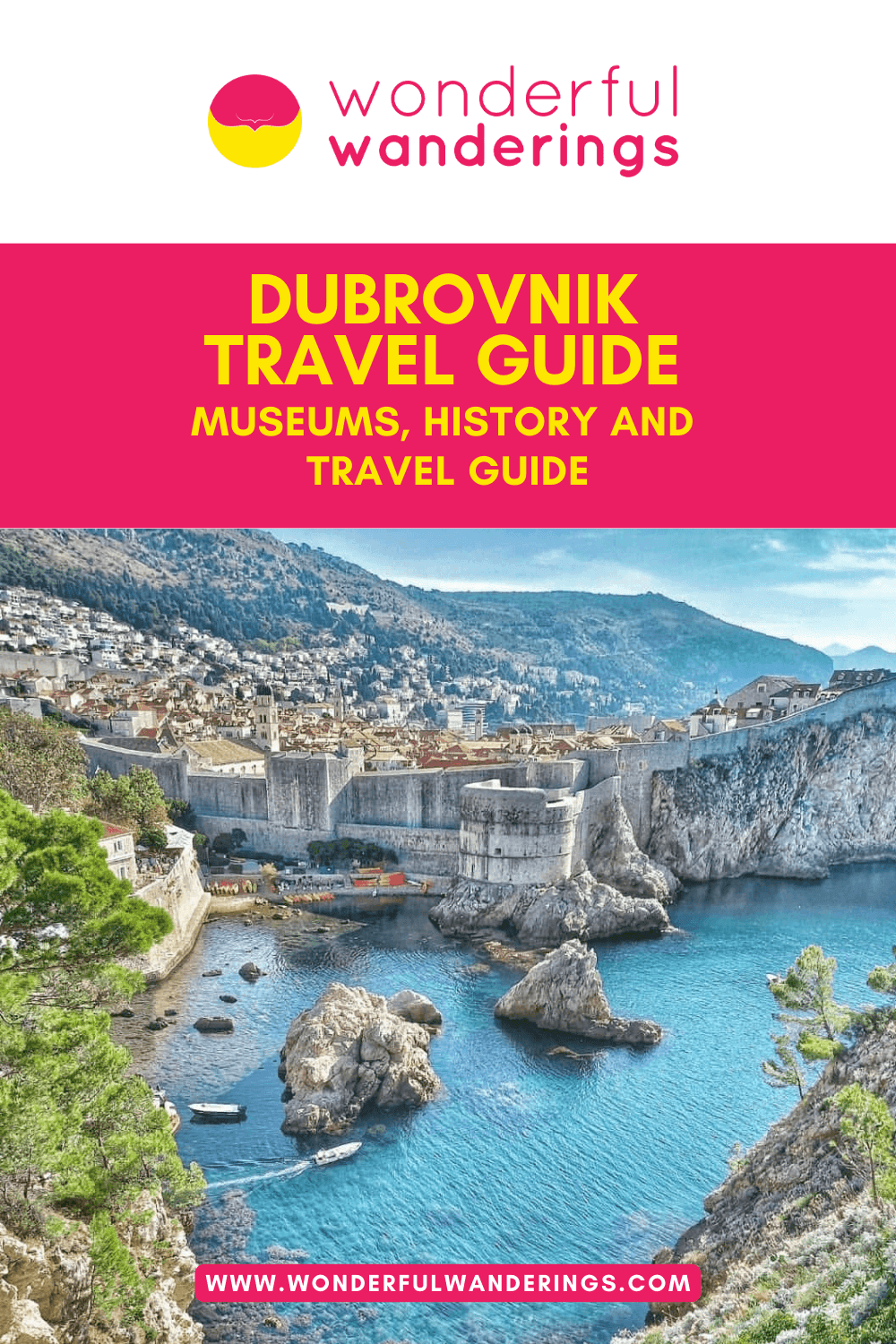
Find below our top guides about Croatia.

24 Traditional Croatian Food and Where to Eat Them in Zagreb

16 Best Castles to Visit in Croatia

18 Best Beaches to Visit in Croatia

Croatia Transportation Guide: Which Transportation Option Is Best for You?

18 Top Festivals to Attend in Croatia for 2024

Prices in Croatia: Is Croatia Expensive?

Driving in Croatia: Road Safety, Driving Etiquette and How to Rent a Car

Renting a Car in Croatia: 34 Important Tips (2024)

20 Interesting Facts About Croatia

32 Most Famous Croatians: Artists, Chefs and Scientists!

Dates of Holidays in Croatia 2024 [Annually updated]

18 Amazing Destinations to visit in Croatia all year round!

Rovinj Travel Guide: 20 Things to do in Rovinj, Museums and History

Zagreb Travel Guide: 20 Things to do in Zagreb, Museums & History

Split Travel Guide: 28 Top Things to do in Split, Museums & History

5 books about Croatia you have to read before your trip

How to go on a fun Blue Cave tour from Split, Croatia

The editorial team at Wonderful Wanderings brings together travel experts with backgrounds in travel writing, web development and digital marketing. The team, through their collaborative effort, provides readers with relevant travel experiences and up-to-date digital content. The vast expertise within the team ensures an informative blend of travel stories and useful online travel guides and trip experiences, built on a foundation of both industry recognition and hands-on global adventures. Learn more about Wonderful Wanderings
Your email address will not be published. Required fields are marked *
Join 58,000+ other Wonderful Wanderers!
As an Amazon Associate I earn from qualifying purchases.
Welcome to Dubrovnik Travel Guide!

Jutting out into the Adriatic Sea with a backdrop of rugged limestone mountains, Dubrovnik Old Town is known as one of the world's finest and most perfectly preserved medieval cities in the world. For centuries, Dubrovnik rivalled Venice as a trading port, with its huge sturdy stone walls , built between the 11th and 17th centuries, affording protection to this former city-state . Today, these walls still enclose Dubrovnik's historic centre and it is possible to walk along them to enjoy the best views of the 'Pearl of the Adriatic' and the surrounding lush green islands. Welcome!
Visiting Dubrovnik - Things to Do
- Dubrovnik Sights
Visiting local sights, important buildings, squares and monuments in medieval Old town is one of the most interesting things to do in Dubrovnik. Here is a map of Dubrovnik sights with locations of churches, monuments, palaces, promenades and other historical heritage sites - read more » Dubrovnik Sights
- Beaches in Dubrovnik
Beside for its historical heritage, Dubrovnik is also a good place for summer holidays in aspect of sea, sun and beach .There are several nice beaches around the town one can enjoy - here is a list and map with reviews of all beaches in Dubrovnik - read more » Beaches in Dubrovnik
Traveller Information
- Getting to Dubrovnik
Regardless of Dubrovnik‘s geographic location and somehow isolation at the very south of Croatia near the border with Montenegro, getting to Dubrovnik is not complicated as there are various ways to get here – flights , buses , ferries ; you will find here all info about transport links to Dubrovnik - read more » Getting to Dubrovnik
Getting around Dubrovnik
The easiest way to get around Dubrovnik is to use public transport. Here is your comprehensive guide to public transport in Dubrovnik, including taxis , local bus routes , airport shuttle and local ferry boat services as well as map of all ferries ,ports, taxi stations and bus stops - read more » Getting around Dubrovnik
Pre-Trip Planning for Visiting Dubrovnik

To ensure that your visit to Dubrovnik is as enjoyable and memorable as possible a little pre-planning can really help to get the most out of your trip. This section includes FAQ such as when to go, how long to visit and other info - read more » Pre-Trip Planning for Visiting Dubrovnik
Latest articles:

Dubrovnik to Split

Getting from Zagreb to Dubrovnik
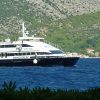
Getting from Split to Dubrovnik
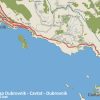
Cavtat to Dubrovnik Bus (Bus Route no10)
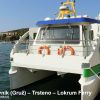
Dubrovnik (Gruž) – Trsteno (Arboretum) – Lokrum Ferry
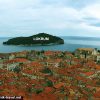
Visiting Lokrum Island
Latest forum conversation.
- Buying ticket for bus from Dubrovnik airport to Old Town
- Luggage / Storage lockers in Dubrovnik Old Town
- Start with Dubrovnik and finish our trip in Zagreb
- From Dubrovnik to Zagreb – Any ideas please
- Travel from Mostar via Durmitor to Dubrovnik
- Hotels in Dubrovnik
- Dubrovnik Travel Forum
- Visiting Dubrovnik
- Pre-Trip Planning
- Getting Around
- Map of Dubrovnik Old Town
- Day Trips from Dubrovnik
- Life and Culture
- Art in Dubrovnik
- Restaurants and Cafes in Dubrovnik
- Photos of Dubrovnik
- News and Blog
- Accommodations
- Privacy Policy

Must-see attractions in Dubrovnik

City Walls & Forts
No visit to Dubrovnik is complete without a walk around the spectacular city walls that encircle its historic core. They're among the finest in the world…
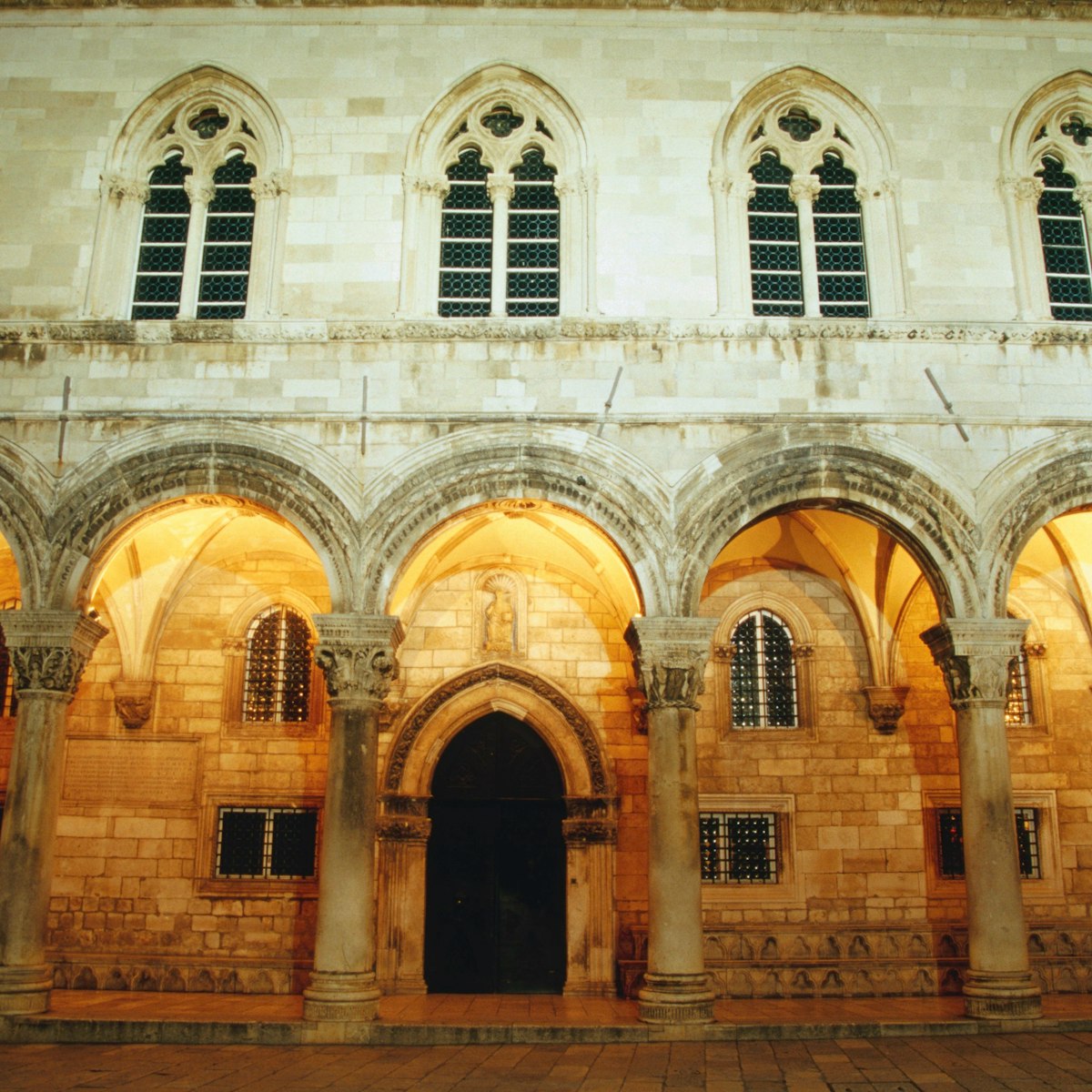
Rector’s Palace
Built in the late 15th century for the elected rector who governed Dubrovnik, this Gothic-Renaissance palace contains the rector’s office and private…

War Photo Limited
An immensely powerful experience, this gallery features compelling exhibitions curated by New Zealand photojournalist Wade Goddard, who worked in the…

From the top of this 412m-high hill, Dubrovnik's old town looks even more surreal than usual – like a scale model of itself or an illustration on a page…

Lush Lokrum is a beautiful, forested island full of holm oaks, black ash, pines and olive trees, only a 10-minute ferry ride from Dubrovnik's Old Harbour…
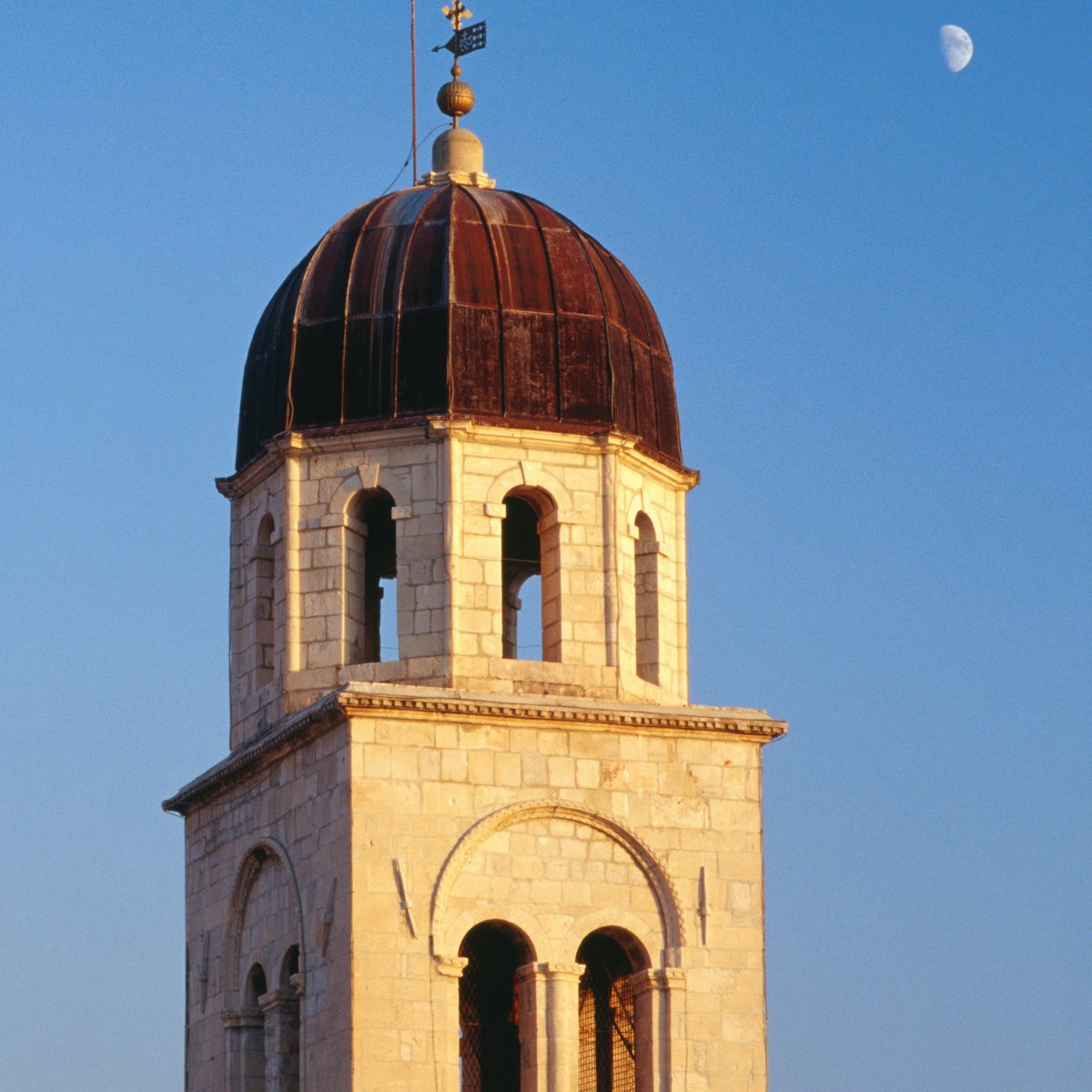
Franciscan Monastery & Museum
Within this monastery's solid stone walls are a gorgeous mid-14th-century cloister, a historic pharmacy and a small museum with a collection of relics and…
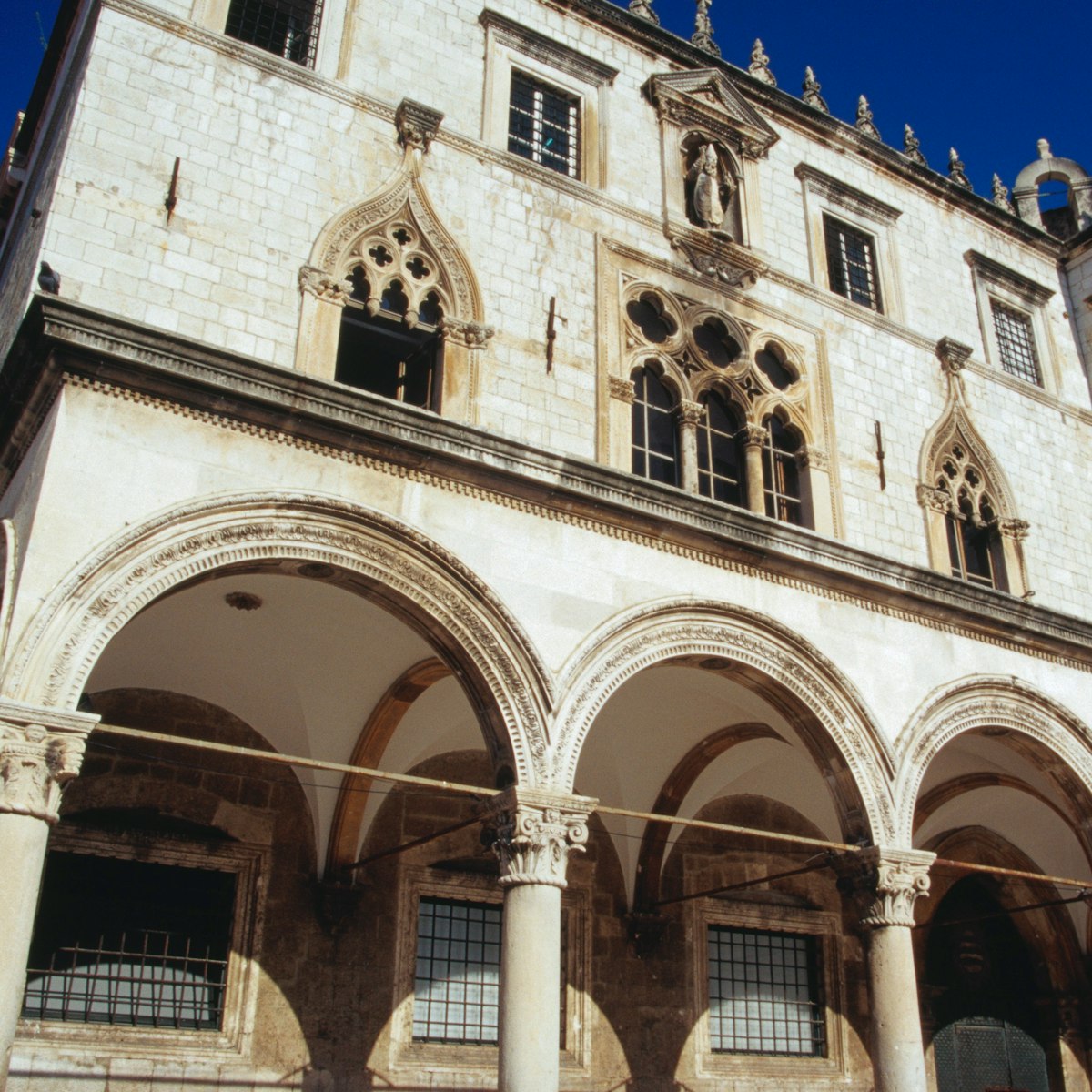
Sponza Palace
One of the few buildings in the old town to survive the 1667 earthquake, the Sponza Palace was built from 1516 to 1522 as a customs house, and it has…

Cathedral of the Assumption
Built on the site of a 7th-century basilica, Dubrovnik's original cathedral was enlarged in the 12th century, supposedly funded by a gift from England’s…

Dominican Monastery & Museum
This imposing structure is an architectural highlight, built in a transitional Gothic-Renaissance style and containing an impressive art collection…

The natural starting point to any visit to Dubrovnik is this imposing city gate, built in 1537. While crossing the drawbridge, imagine that this was once…

Fort Lawrence
St Blaise gazes down from the walls of this large free-standing fortress, constructed atop a 37m-high promontory adjacent to the old town. Built to guard…

Large Onofrio Fountain
One of Dubrovnik’s most famous landmarks, this circular fountain was built in 1438 as part of a water-supply system that involved bringing water from a…

Dubrovnik During the Homeland War
Set inside the crumbling Napoleonic Fort Imperial (completed in 1812) near the cable-car terminus, this permanent exhibition is dedicated to the siege of…
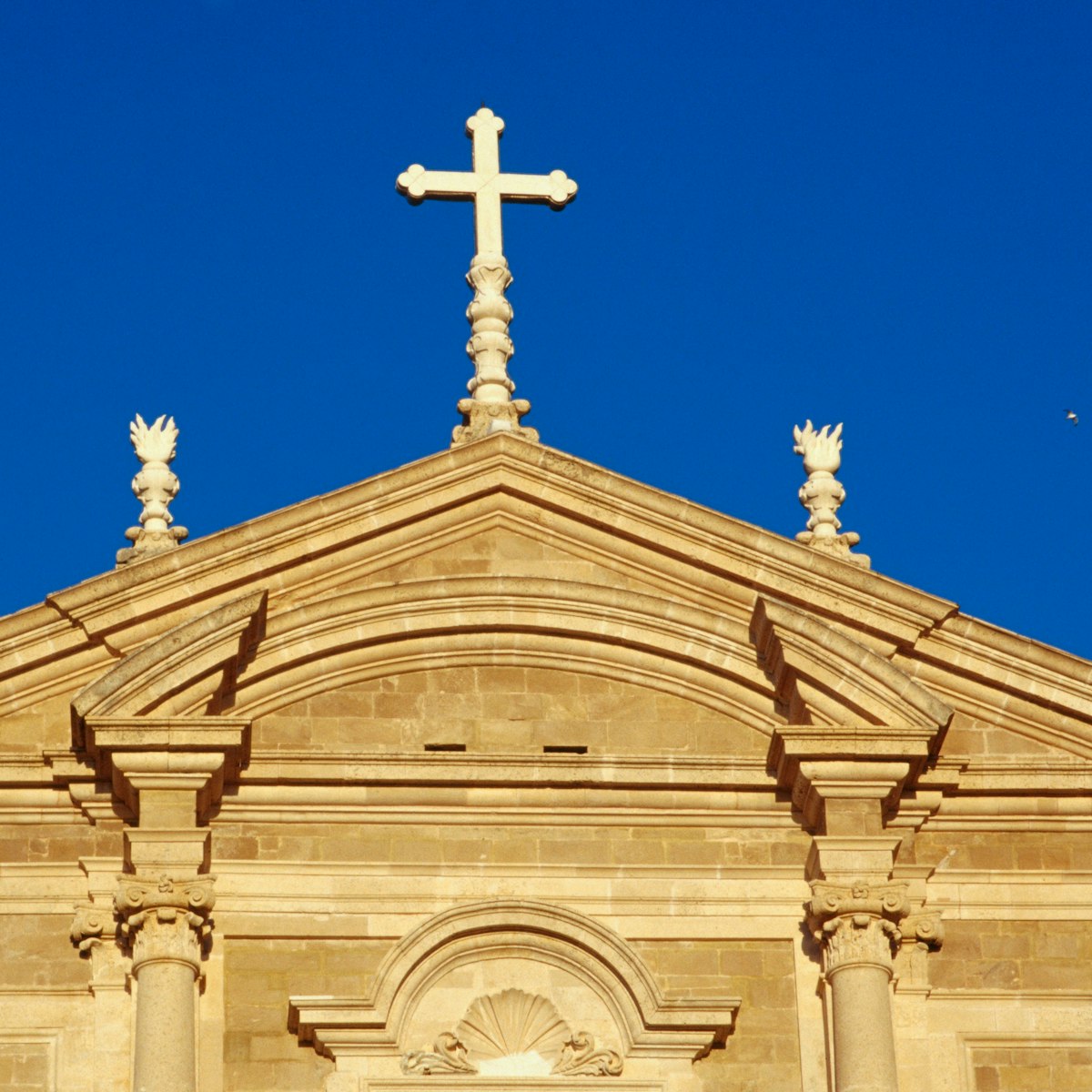
St Ignatius of Loyola Church
Dramatically poised at the top of a broad flight of stairs, this Jesuit church was built in the baroque style between 1699 and 1725. Inside, magnificent…

Synagogue & Jewish Museum
With a religious practice that can be traced back to the 14th century, this is said to be the second-oldest still-functioning synagogue in Europe and the…

St Blaise’s Church
Dedicated to the city's patron saint, this exceptionally beautiful church was built in 1715 in the ornate baroque style. The interior is notable for its…
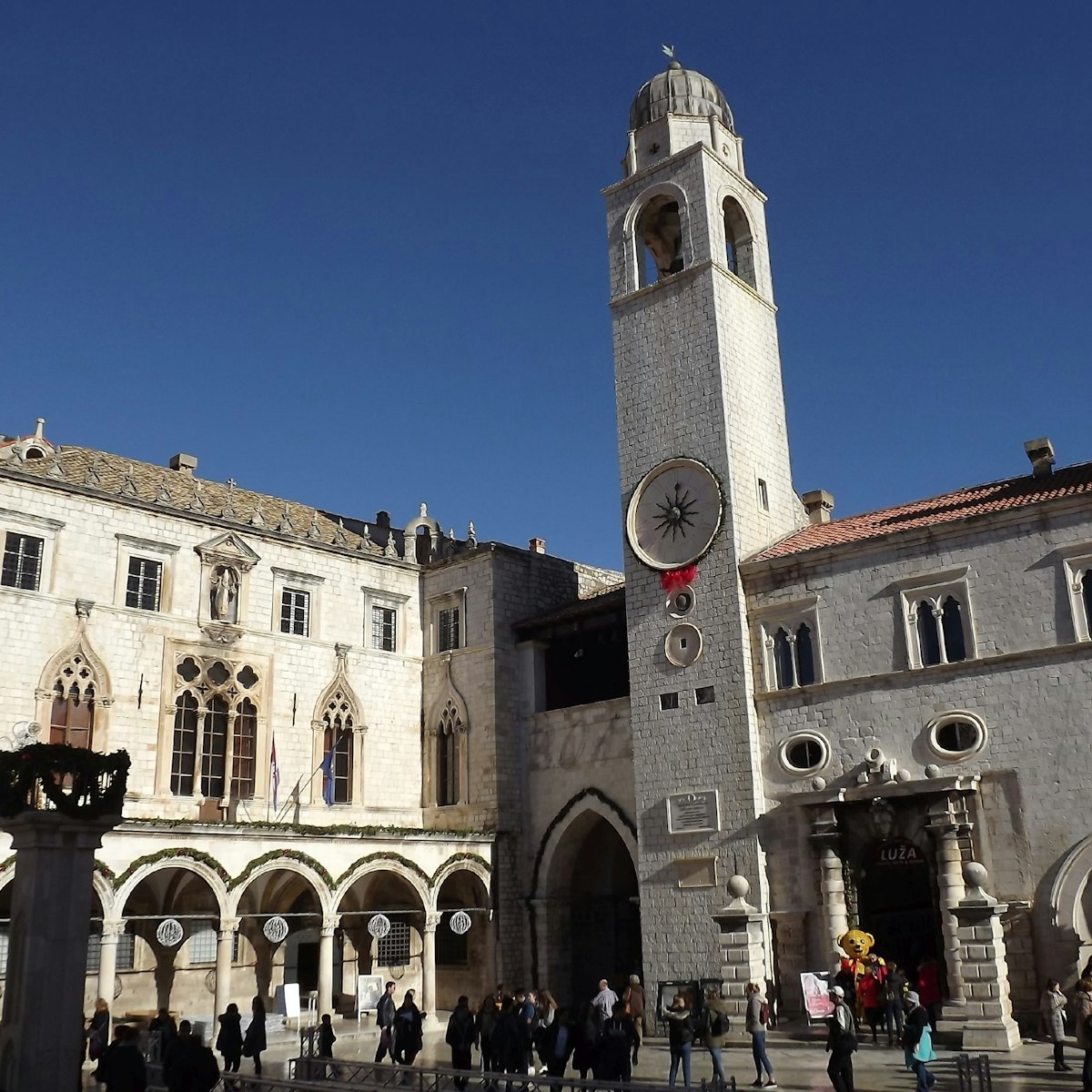
City Bell Tower
Marking the eastern end of the old town’s main drag, this slender dome-capped tower has a large curvy clock face known as ‘the octopus’ and a two-tonne…

Orlando Column
Luža Sq once served as a marketplace, and this stone column – carved in 1417 and featuring the image of a medieval knight – used to be the spot where…

Museum of Modern Art
Spread over three floors of a significant modernist building east of the old town, this excellent gallery showcases Croatian artists, particularly painter…
Love Stories Museum
Providing a sunny Dalmatian counterpoint to Zagreb's popular Museum of Broken Relationships, this unusual museum aims to tug at the heart strings…

Upper Corner Tower
Dubrovnik's newest museum showcases the remains of a medieval foundry unearthed from 2005 to 2008 in the space between this 1346 tower and Fort Minčeta…

Dulčić Masle Pulitika Gallery
This small offshoot of the city's main gallery unites three friends beyond the grave: local artists Ivo Dulčić, Antun Masle and Ɖuro Pulitika, who all…

Pulitika Studio
In a small, cavelike room in the Fort St John, the former studio of the painter Đuro Pulitika (1922–2006) looks like a moment paused in time, with his…

Less ornamented than the Pile Gate at the other side of town, Dubrovnik's eastern entrance is approached by a stone bridge followed by a wooden drawbridge…

Archaeological Museum
The museum presents two exhibitions, one on the archaeological research of Fort Revelin and its foundry, and the other on early medieval sculpture. Among…

Gradac Park
If the old town gets too busy or too hot, this little hidden park provides shady seclusion. There's rarely more than a handful of locals here, along with…

Gundulićeva poljana
The narrow street opposite the Rector’s Palace opens onto this square, where a bustling morning produce and craft market is held. The monument at its…

Holy Saviour Church
Built between 1520 and 1528, this church was one of the few buildings to survive the earthquake of 1667. It’s open for occasional exhibitions and regular…

Church of the Annunciation
The old town's sole Serbian Orthodox church provides an interesting contrast to the numerous Catholic churches scattered about. Dating from 1877, it…

Maritime Museum
Inside the vaulted chambers of Fort St John, this well-presented museum traces the history of navigation in Dubrovnik with ship models, maritime objects…
Memorial Room of the Dubrovnik Defenders
Just inside the entrance of the Sponza Palace, this room displays a heartbreaking collection of portraits of young people who perished between 1991 and…

Fort Minčeta
This round tower at the highest point of the city walls was originally built in 1319 as a square tower to protect the landward edge of the city from…

Marin Držić statue
Walking from Stradun to the Cathedral, you’re bound to pass by the bronze statue of the writer Marin Držić. Lovingly called Dubrovnik's Shakespeare, he is…

St Joseph's Church
Interrupting the continuum of souvenir shops on Od Puča, this small church is most easily spotted by the cypress tree growing out of the façade, sharing…
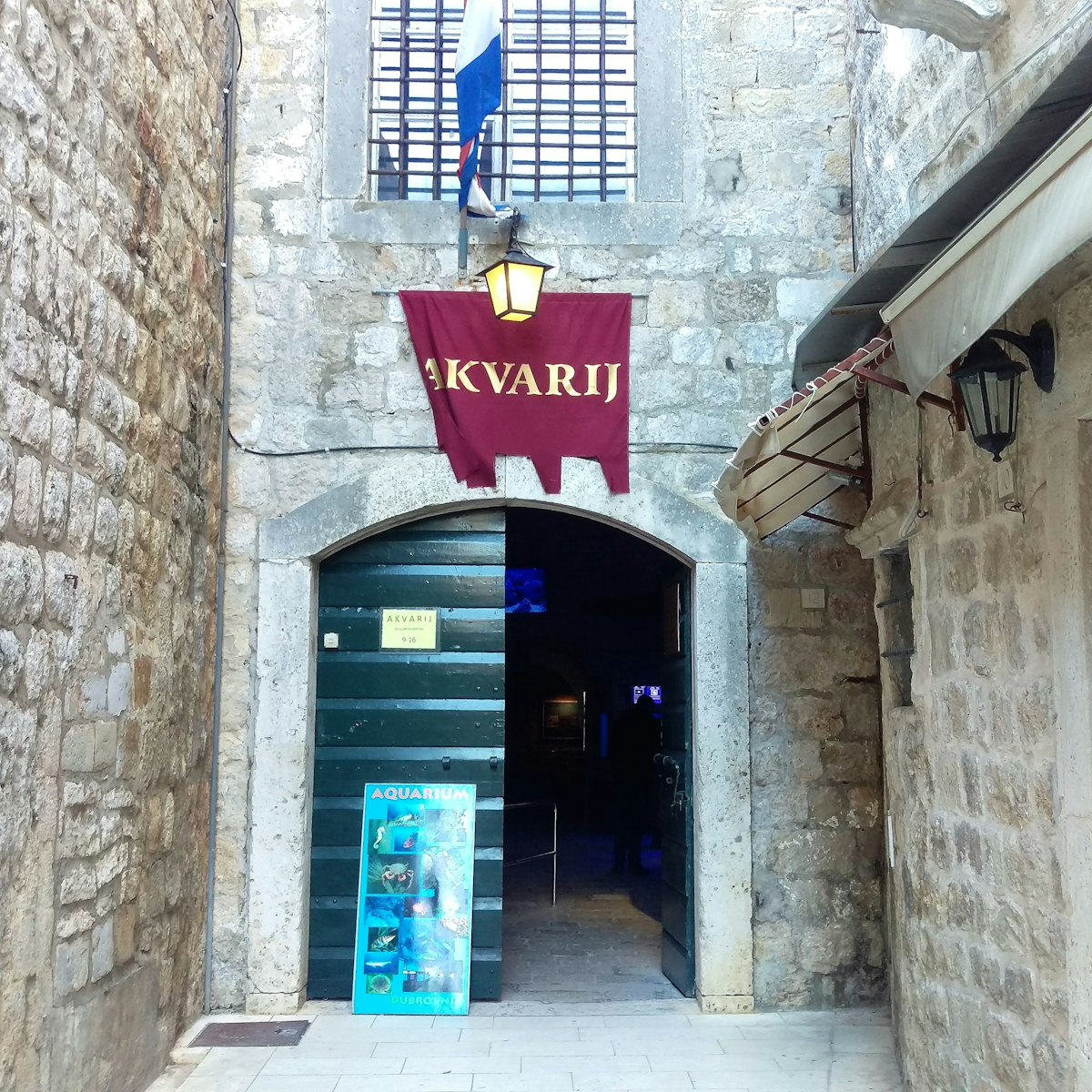
Showcasing flora and fauna of the Adriatic Sea, Dubrovnik's aquarium might be modest in content and overpriced, but set in the cool stone vaults of Fort…

Fort St John
This massive battlement guards the entrance to Dubrovnik's Old Harbour. You can pose on cannons along its upper terrace during a city walls walk, but you…

Fort Revelin
The largest of the old-town forts sits separately from the city walls, overlooking the Old Harbour and the eastern entrance to the old town. Housed inside…

Dr Franjo Tuđman Bridge
When it opened in 2002 this 518m-long lopsided cable-stayed bridge cut the drive west from Dubrovnik by 20 minutes. Park at the lot on the far side of the…
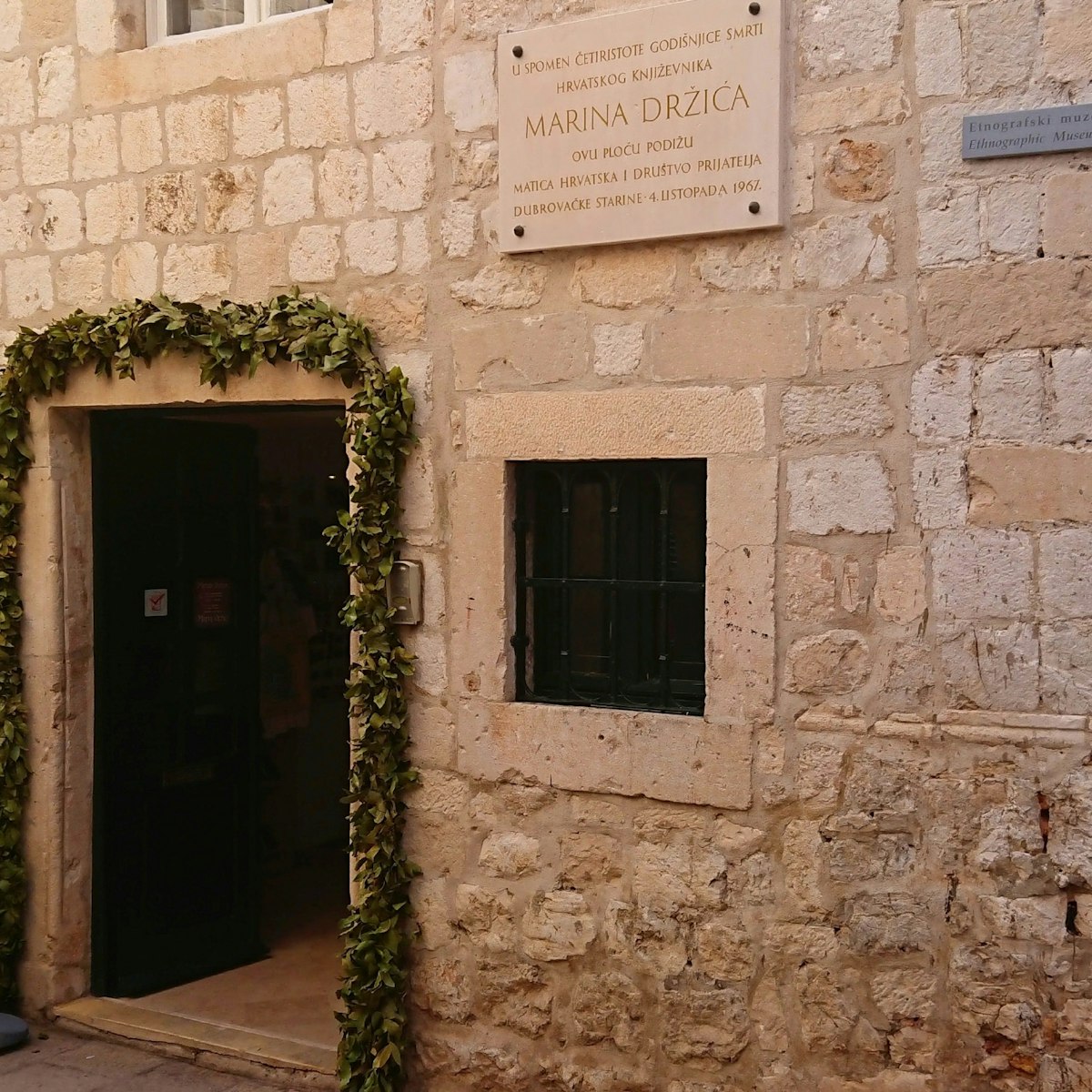
Marin Držić House
Educational but not terribly interesting (unless you're a fan of 16th-century Croatian theatre), this small museum is devoted to Marin Držić (c 1508–67),…

Natural History Museum
Spread over four sparsely populated floors, this low-key museum has displays on invasive fish species, a very cool arrangement of seashells suspended in…
More destinations you need to see


Is the Dubrovnik Pass Worth It in 2024? An Honest Review
I f you are planning a trip to Dubrovnik, you may have heard about the Dubrovnik Pass. The Dubrovnik Pass is absolutely worth it , especially if you plan to walk the Dubrovnik Walls as the entry fee is the same price as getting the pass.
The Dubrovnik Pass also includes entrance to several museums, free public transport, and other local discounts.
I recently visited Dubrovnik and bought the 3-day Dubrovnik Pass to use during my trip. In this post, I’ve reviewed what the Dubrovnik Pass includes and why it is worth getting.
Get Lost in Wanderlust contains affiliate links. If you make a purchase using one of the links below, we may receive a very small compensation at no extra cost to you. We only recommend products and services we use and trust. Read our disclaimer for more information.
Planning a Trip to Dubrovnik?
Hotels: I recommend Hotel Stari Grad . Other hotels can be found on Booking.com .
Dubrovnik Airport Transfer
Tours: Several options like Game of Thrones tours , trips to the Elaphite Islands , or even day trips to Montenegro or Bosnia .
Don’t have time to read this whole post? Here’s why the Dubrovnik Pass is worth it :
Entry to Dubrovnik City Walls and Lovrjenac Fortress
Entry to several museums in Dubrovnik (including Rector’s Palace)
Free use of public transport in Dubrovnik
If you plan to walk on the Dubrovnik Walls you should definitely purchase a Dubrovnik Pass as the entry for the walls alone is the same price as getting the pass
The Dubrovnik Pass – An Easy Way to Explore Dubrovnik and Save Money
The Dubrovnik Pass is a city card that gives you entry to a number of attractions and museums in Dubrovnik, including entry to the famous Dubrovnik City Walls .
Plus, the pass also gives you discounts at several local restaurants which is an added bonus.
Not only does using the Dubrovnik Card help you save money, but it also makes it super easy to visit a number of attractions in the city.
Cost of the Dubrovnik Pass
The Dubrovnik Pass has a 1-day, 3-day, or 7-day option.
1-day: €35 per person
3-day: €45 per person
7-day: €55 per person
Personally, we chose the 3-day because it allowed us more flexibility in visiting a few different attractions, plus we utilized some of the discounts at local restaurants.
I think you could easily do the 1-day option if you were on a budget. I would only choose the 7-day option if you planned to use the included public transportation and planned to visit multiple attractions.
Where to Buy the Dubrovnik Pass
You can buy the Dubrovnik Pass on the official website or at several places throughout the city.
We bought our pass online and it gave us a QR code to use for the pass. It was straightforward and easy to do it this way.
However, if you prefer to buy the pass in person you can visit one of the Dubrovnik Tourist Board Offices or at one of the hotels or museums listed here .
How to Use the Dubrovnik Pass
Using the Dubrovnik Pass is super easy – simply show your pass or QR code on your phone to gain entry to the attraction.
Keep in mind, you are only allowed 1 visit per attraction. This includes the Dubrovnik Walls, so once you enter you cannot enter at a later time without paying again.
The Dubrovnik Card also provides a discount at some local restaurants and attractions. To get the discount you simply show the pass (must be used on one of the days the pass is valid for). Here is a list of discounted attractions and restaurants.
What the Dubrovnik Pass Includes
The Dubrovnik Pass includes admission to several city attractions (including the Dubrovnik City Walls), public transportation, and discounts to other attractions and specific restaurants.
Attractions Included with the Dubrovnik Pass
Dubrovnik City Walls
Lovrjenac Fortress
Rector’s Palace & Cultural History Museum
Dubrovnik Natural History Museum
Franciscan Monastery Museum
Maritime Museum
Ethnographic Museum
House of Marin Držić
The Pulitika Studio
Archeological Exhibitions
Museum of Modern Art Dubrovnik
Bukovac House
Public Transportation
The Dubrovnik Pass also provides free public transportation (on days when the pass is active) through the public bus system. For more information and bus schedules, visit the Dubrovnik bus website .
Other Discounts
The Dubrovnik Pass also provides discounts to other local attractions and to some of the local restaurants. To see the list of current discounts, visit the Dubrovnik Pass website .
My Dubrovnik Pass Review: Was it Worth It?
In our experience, the Dubrovnik Pass was absolutely worth the cost. In fact, we saved a good amount of money by using the pass (which I will break down below).
In addition to saving money by using the Dubrovnik Card, we also felt that it was easy to use and convenient. Overall, I highly recommend getting the Dubrovnik Pass for your trip.
Review on How We Saved Money Using the Dubrovnik Pass
We decided to purchase the 3 day pass because we wanted to spread out some of our activities.
However, you could easily purchase the 1 day pass if you planned to only do the Dubrovnik Walls & 1 or 2 of the smaller museums.
Attractions we visited with our Dubrovnik Pass:
Dubrovnik City Walls & Lovrjenac Fortress (€35 value per person)
Rector’s Palace (€20 value per person)
Franciscan Monastery Museum (€6 value per person)
We got the 3 day Dubrovnik Card and paid €90 total. Had we not purchased the card we would have paid €122 total for the above attractions.
So, we saved €32 by purchasing the Dubrovnik Card .
In addition to those savings, we also got a 10% Discount on Dinner at Dubravka 1836 Restaurant & Cafe because we had the Dubrovnik Pass. There are several restaurants that offer a discount for pass holders ( see the full list here ).
When is the Dubrovnik Card Not Worth It?
Even though the Dubrovnik Card is a great deal, there are still scenarios when the Dubrovnik Card would not be worth it.
For example, if you DON’T plan to walk on top of the Dubrovnik City Walls or visit any museums, then it wouldn’t make sense to buy the pass.
FAQ: Is the Dubrovnik Pass Worth It?
Yes, the Dubrovnik Pass includes the city walls. The Dubrovnik City Walls are one of the most popular attractions in Dubrovnik, and one of the reasons why it is worth it to get a Dubrovnik Pass.
The Dubrovnik Pass does not include admission for the cable car. It also doesn’t include admission for the ferry to Lokrum Island, which is another popular thing to do in Dubrovnik.
The Wrap Up: Why the Dubrovnik Card is Worth It
Yes, the Dubrovnik Pass is 100% worth it if you plan to visit the Dubrovnik City Walls or the local museums. Having the Dubrovnik Pass allows you to visit several attractions and use public transport, which really makes exploring Dubrovnik easy.
Planning a trip to Dubrovnik? Check out these related posts:
Romantic Things to do in Dubrovnik
Wine Tours from Dubrovnik
Driving from Dubrovnik to Split
How to get from the Dubrovnik Airport to Old Town
A Guide to Parking in Dubrovnik
Is Split Worth Visiting?
The post Is the Dubrovnik Pass Worth It in 2024? An Honest Review appeared first on Get Lost in Wanderlust .


IMAGES
VIDEO
COMMENTS
Šipčine 2 20000 Dubrovnik, Croatia. Tel: +385 (0) 20 324 999 Fax: +385 (0) 20 324 224 Email: [email protected]
Discover the best attractions and activities in Dubrovnik, Croatia's top destination. Explore the medieval old town, walk the city walls, visit museums, taste oysters, and more.
Learn what to expect and how to plan your trip to Dubrovnik, the UNESCO-listed city with a stunning coastline and a rich history. Find out about borders, beaches, attractions, etiquette and more from local experts.
Dubrovnik. Dubrovnik, a unique medieval city surrounded by iconic walls and with the Adriatic sea. Recognised by UNESCO as a World Heritage Site this is a city that is the jewel in the crown of Croatia. Stepped in history, rich in culture, full of respect for tradition and a magnet for international travellers. Dubrovnik is timeless beauty.
Discover the beauty and history of Dubrovnik, a UNESCO-listed city with ancient walls, baroque buildings and the Adriatic Sea. Find the best time to visit, the top attractions, the free things to do and the travel tips from Lonely Planet experts.
Kyle McCarthy|Sharael Kolberg December 4, 2023. Ranking of the top 16 things to do in Dubrovnik. Travelers favorites include #1 Walls of Dubrovnik, #2 Dubrovnik Old Town and more.
Things to Do in Dubrovnik, Croatia: See Tripadvisor's 506,503 traveler reviews and photos of Dubrovnik tourist attractions. Find what to do today, this weekend, or in July. We have reviews of the best places to see in Dubrovnik. Visit top-rated & must-see attractions.
Exploration Time: Ideal for a 1-2 hour visit. Venture just 25 km west of Dubrovnik to discover the mesmerizing Trsteno Arboretum, sprawling across 28 hectares. This verdant haven houses the 15th-century renaissance summer residence of the esteemed Gučetić-Gozze family. With its roots tracing back to the 15th century, the garden stands as a ...
The old city of Dubrovnik, sits on a peninsula below a steep rocky hillside, jutting out into the translucent blue waters of the Adriatic Sea. Dubrovnik is recognizable, even to first time visitors. Whether in film, or a breathtaking image, or maybe one's own imagination - nothing quite captures the perfection of a walled medieval coastal city like the "Pearl of the Adriatic."
216,475. Dubrovnik, Croatia. Medieval history meets breezy Mediterranean vibes in Dubrovnik, where towering stone fortresses rise from the sparkling Adriatic Sea. Walk along the ancient walls that surround Old Town to get a sweeping view of the city dotted with monasteries, palaces, and terracotta rooftops. Or, hit the beach: Most are pebbly ...
A comprehensive guide to Dubrovnik, the pearl of the Adriatic, with information on its history, attractions, transport, accommodation, restaurants, bars, events and more. Find out how to plan your visit, what to see and do, and where to go on day trips from this stunning city.
4. Dubrovnik Cathedral. Source: LALS STOCK / shutterstock. Dubrovnik Cathedral. The city's cathedral is one of Dubrovnik's large ensemble of baroque architecture. Among the many reasons to pay this seat of the diocese a visit is to see the interior's artworks.
11. Rector's Palace. As both an astonishing piece of architecture and home to one of the city's best museums, visiting Rector's Palace is one of the best things to do in Dubrovnik, Croatia. The palace was built in 1435 and has lost none of its grandeur, despite many attempts by man and nature.
2. Onofrio Fountain. Dubrovnik's most famous landmark is this circular domed fountain built in 1438. This is the perfect place to rest from a day's exploring in Dubrovnik, Croatia! Sit on the low walls of the fountain and cool off from the water that flows over the ornate sculptures.
Visiting Dubrovnik is not a complete pleasure without seeing at least a part of its surroundings: the good land and sea connections offer the possibility of organizing either shorter or longer excursions. Information. Dubrovnik Tourist Board. Brsalje 5. 20000 Dubrovnik. [email protected]. www.tzdubrovnik.hr. Tel: +385 (0) 20 312011.
Discover the best sights, activities, eating and drinking in Dubrovnik, the former centre of the Republic of Ragusa. Explore the old town, the city walls, the cliff bars, the island of Lokrum, the Game of Thrones locations and more.
First, collect your carefully packed picnic lunch from Piknik Dubrovnik (order one day in advance) then head to Dubrovnik's Gruž port. Before catching the ferry, visit the fascinating Red History Museum to learn more about how people lived when Croatia was part of Socialist Yugoslavia (1945-1991). Then jump on a Jadrolinija ferry to car-free ...
Dubrovnik is really beautiful, although at times it can feel too touristy (crowded, and expensive). However, Dubrovnik is one of its kind, and certainly a must-visit destination in Croatia.. Dubrovnik has been UNESCO listed World Heritage Site since 1979. The most popular attraction in Dubrovnik is a pedestrian-only old town and surrounding city walls.
In fact, the entire historic center is only open to pedestrians. To reach the city, many travelers fly into Dubrovnik Airport (DBV), located less than 15 miles southeast of the city. To get to ...
Yes, Dubrovnik is easy to visit with kids. Dubrovnik can be a great destination for families, though it may require some advanced planning. The town offers lots for kids to explore, like climbing the historic city walls, wandering the narrow alleys and spotting the sea from overlook points along the way. There is a cable car up to a mountaintop ...
Getting from Zagreb to Dubrovnik If you decide to visit Zagreb, the Croatian capital, located in the northern part of Croatia as well as Dubrovnik, located on the Croatian coast, there are just three direct travel options you can take - you can either book a flight from Zagreb to Dubrovnik with Croatia Airlines, take a bus
Dubrovnik. Spread over four sparsely populated floors, this low-key museum has displays on invasive fish species, a very cool arrangement of seashells suspended in…. 1. 2. Discover the best attractions in Dubrovnik including City Walls & Forts, Rector's Palace, and War Photo Limited.
The Dubrovnik Pass - An Easy Way to Explore Dubrovnik and Save Money. The Dubrovnik Pass is a city card that gives you entry to a number of attractions and museums in Dubrovnik, including entry ...
The Terrapins will visit Zagreb, Split, Montenegro and Dubrovnik. The Maryland women's basketball team is currently on a 10-day tour of Croatia from June 24-July 4. The ... The Terps and their travel party enjoyed a short walking tour through Old Town Dubrovnik, which ended at the Old Town Basketball Court, one of the most unique and well-known ...